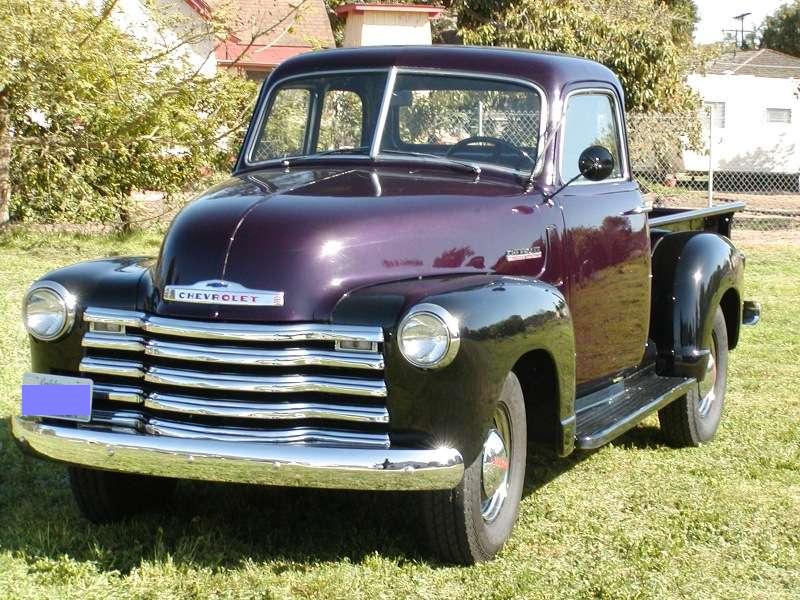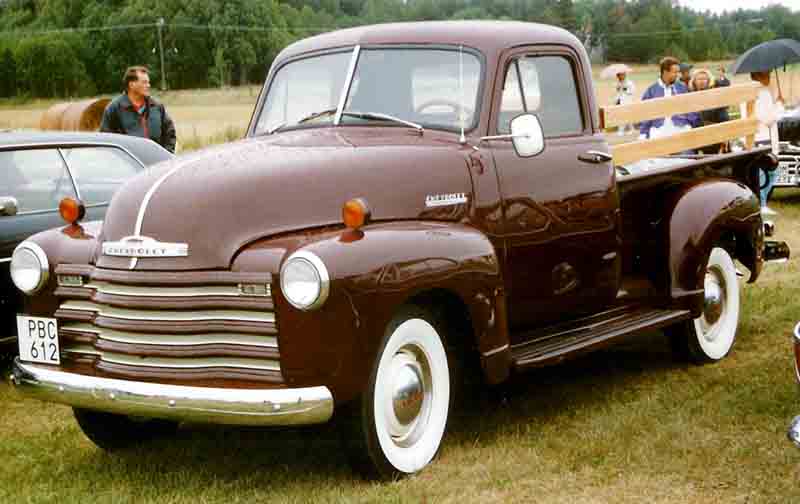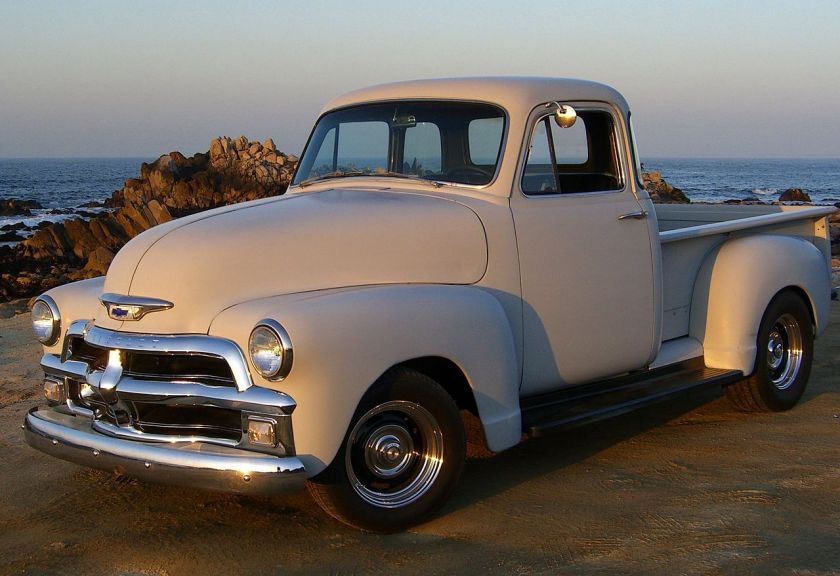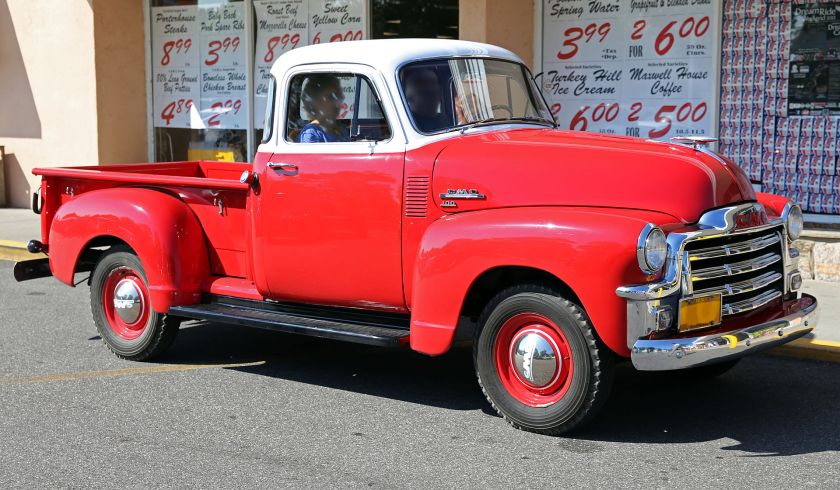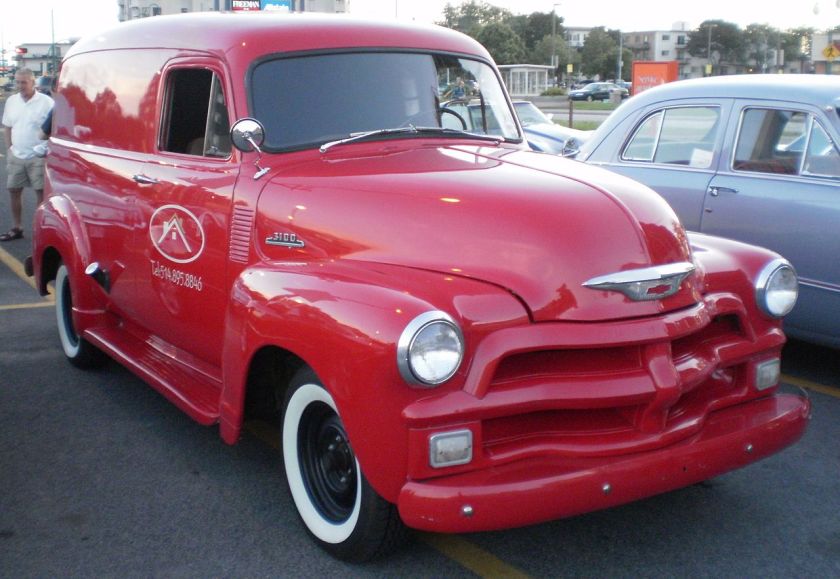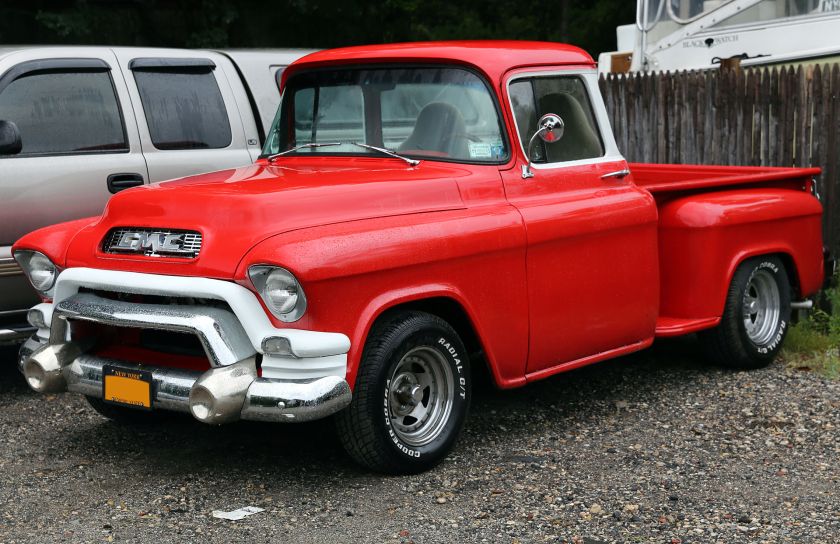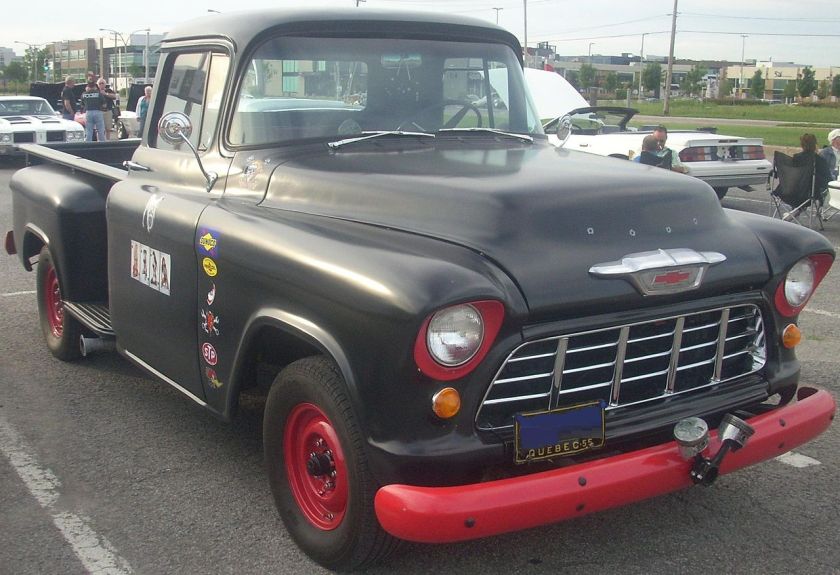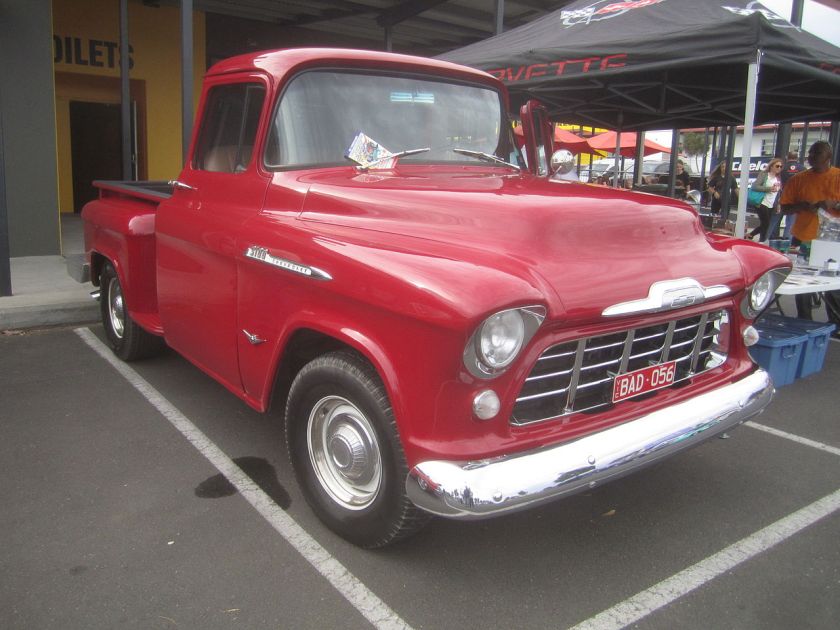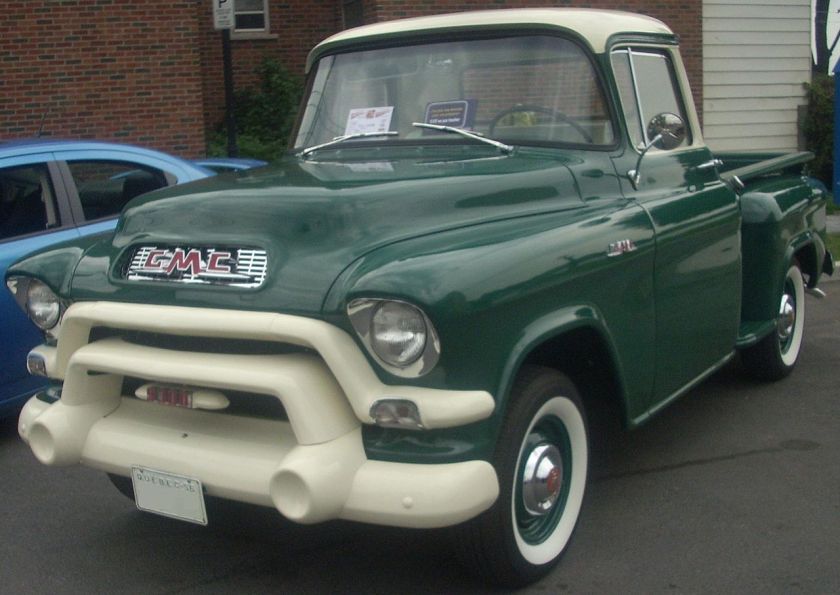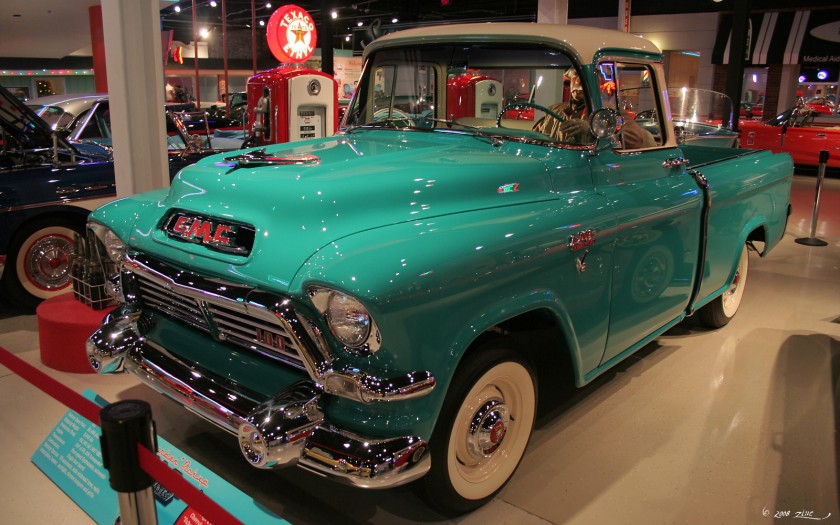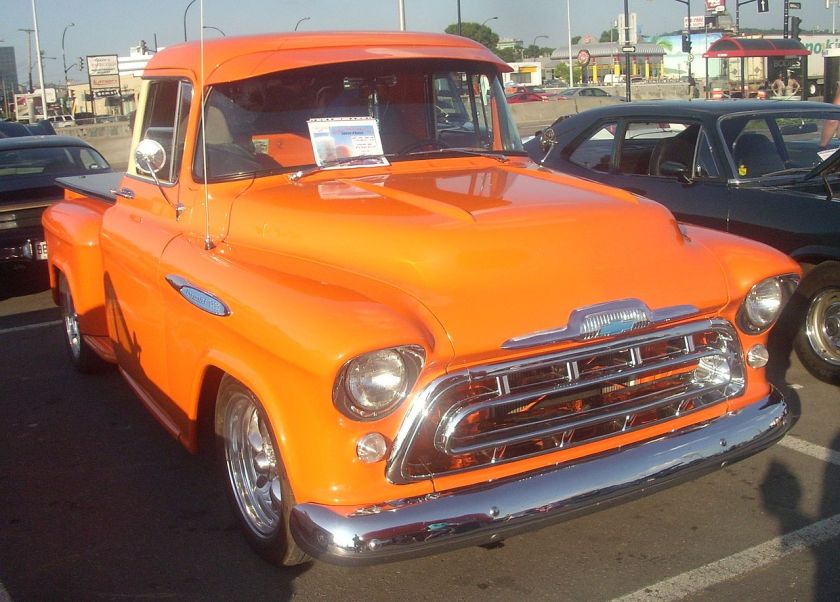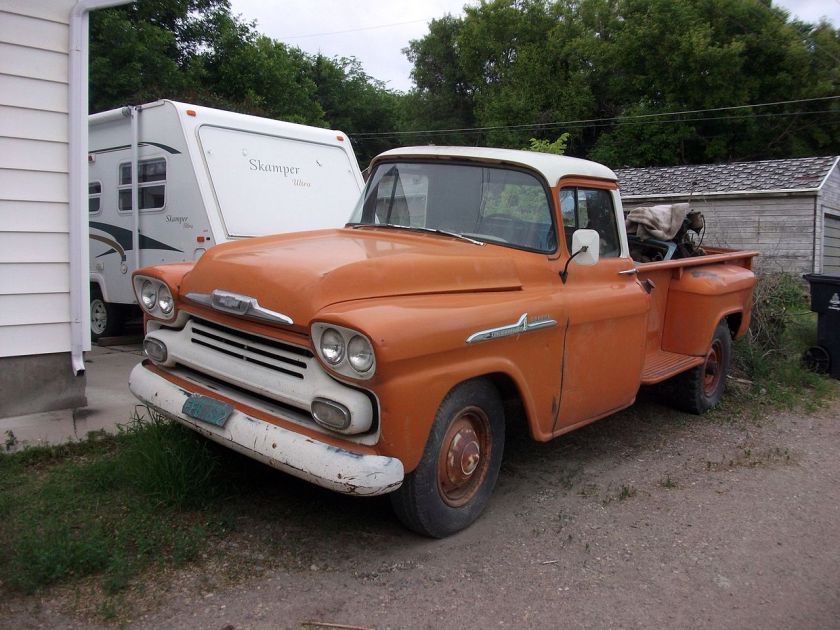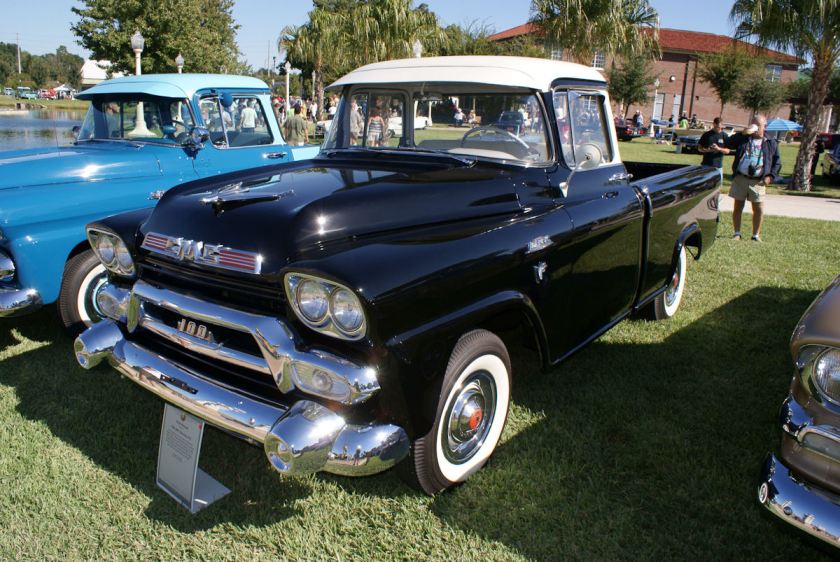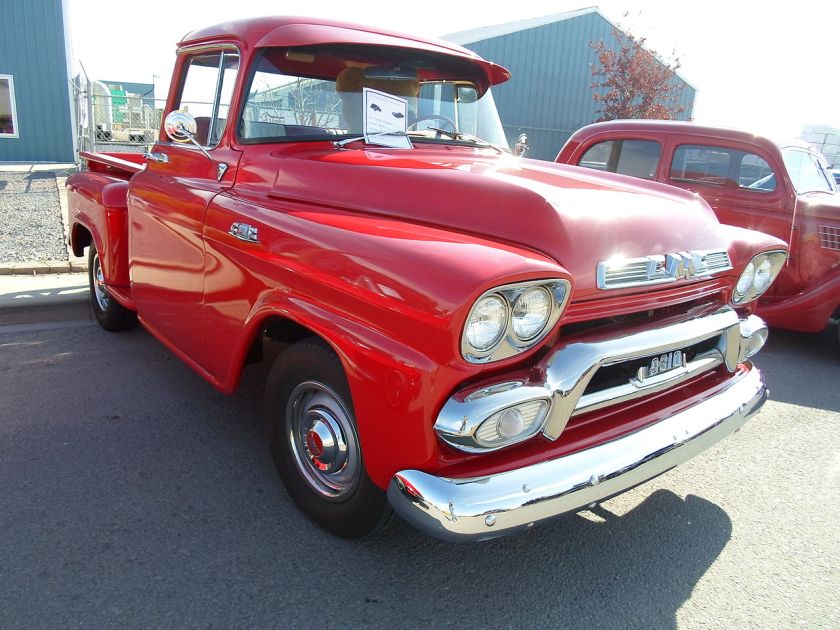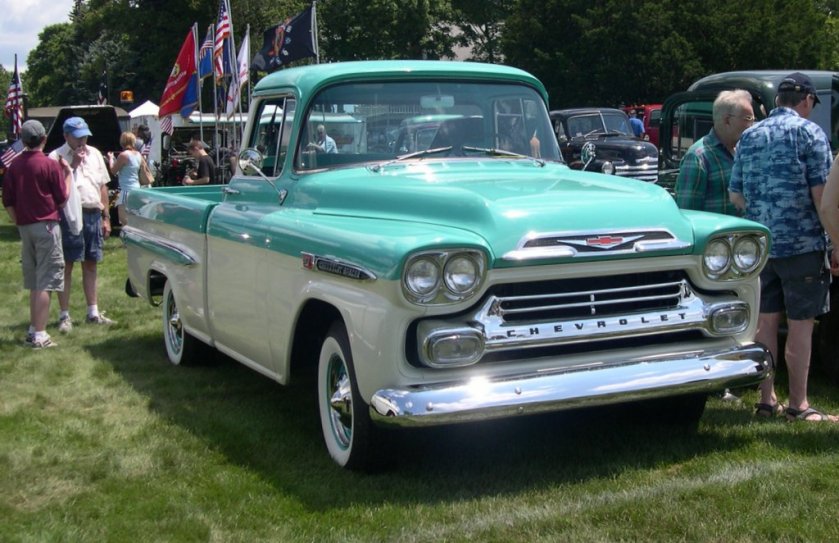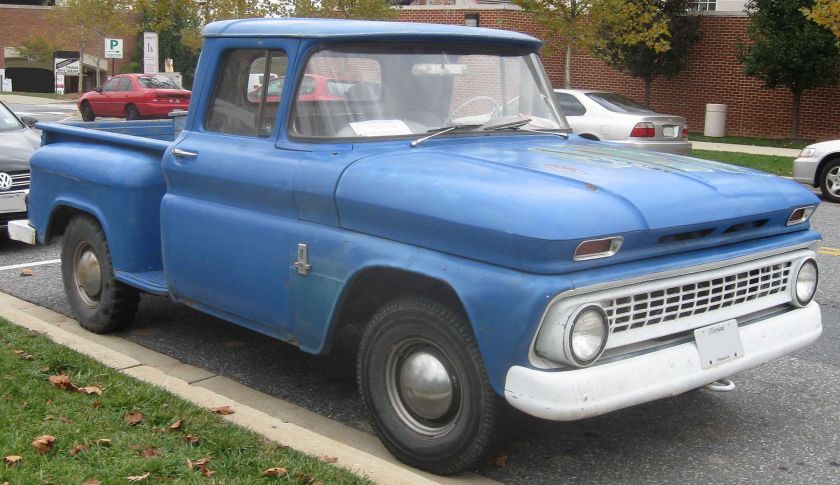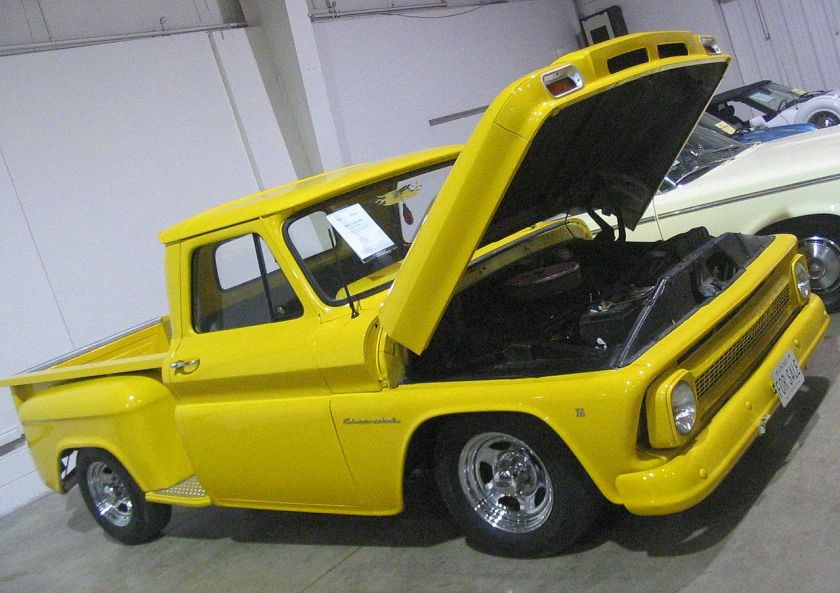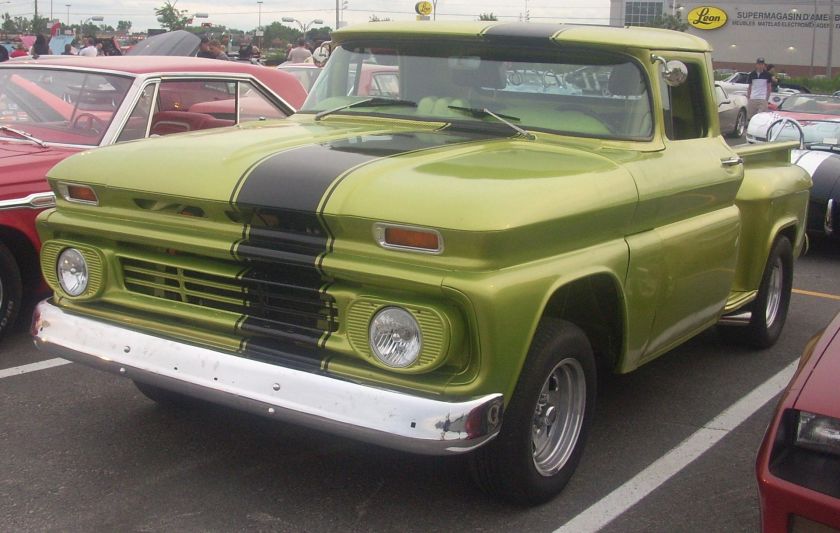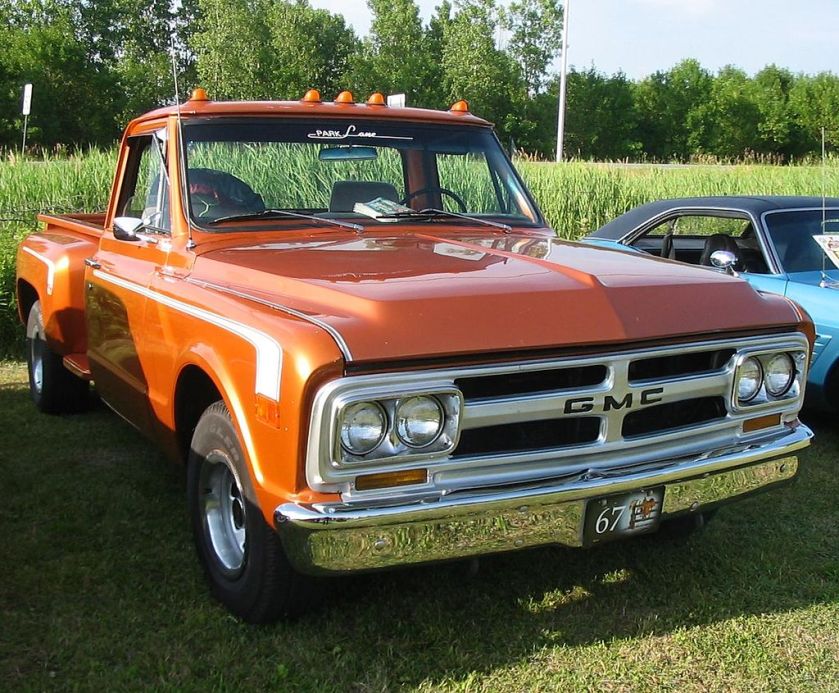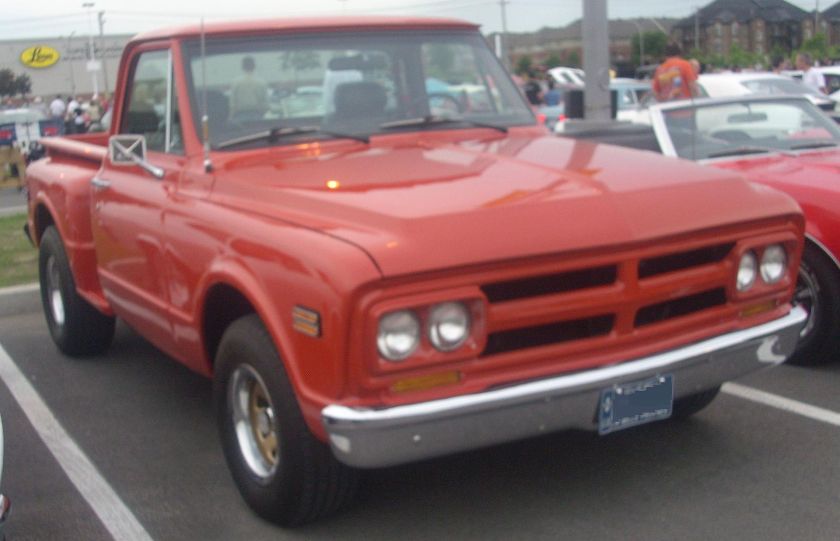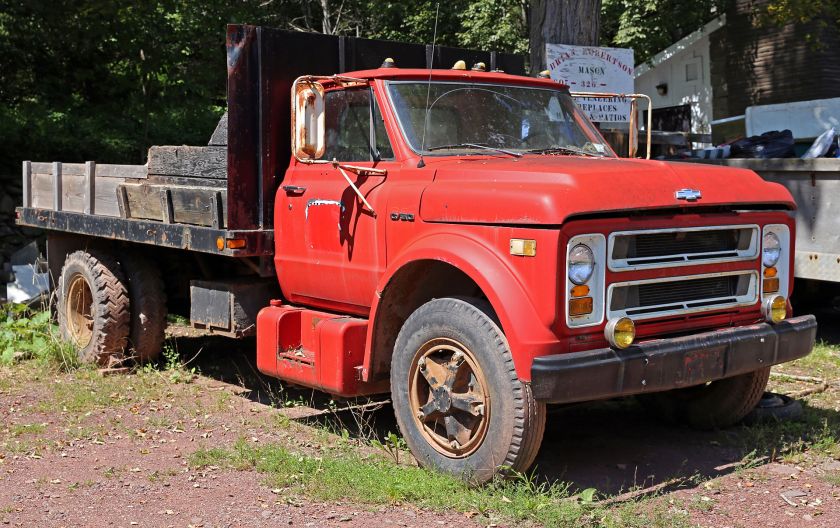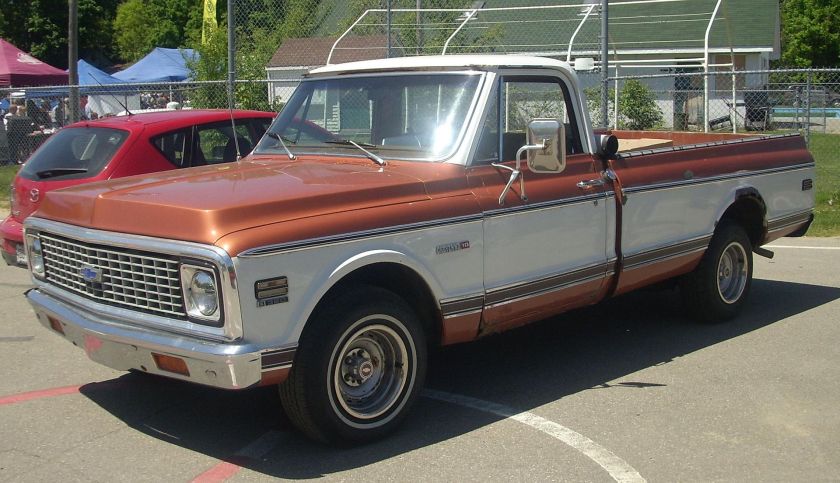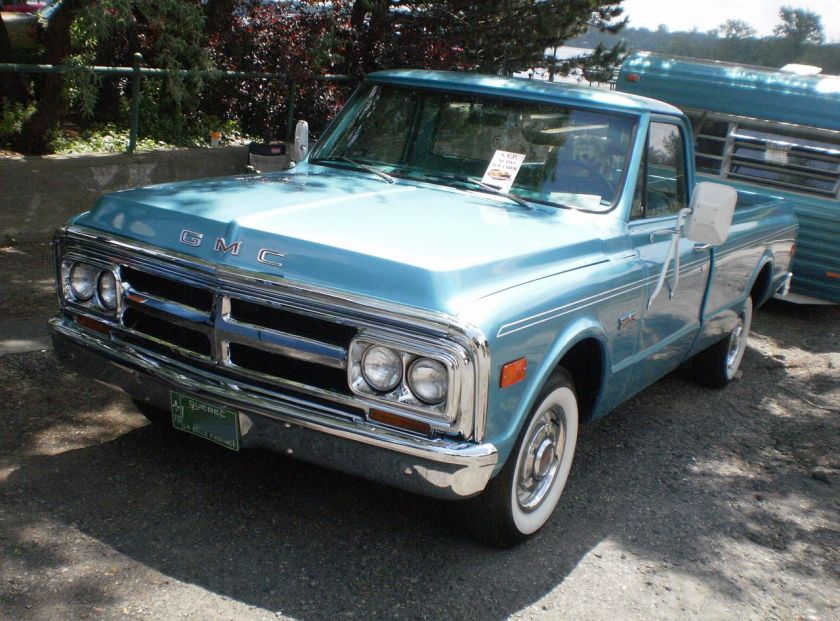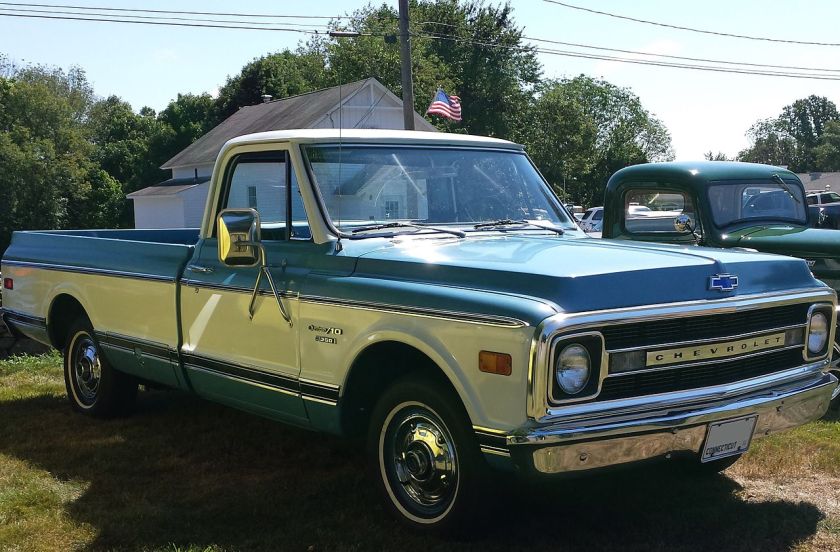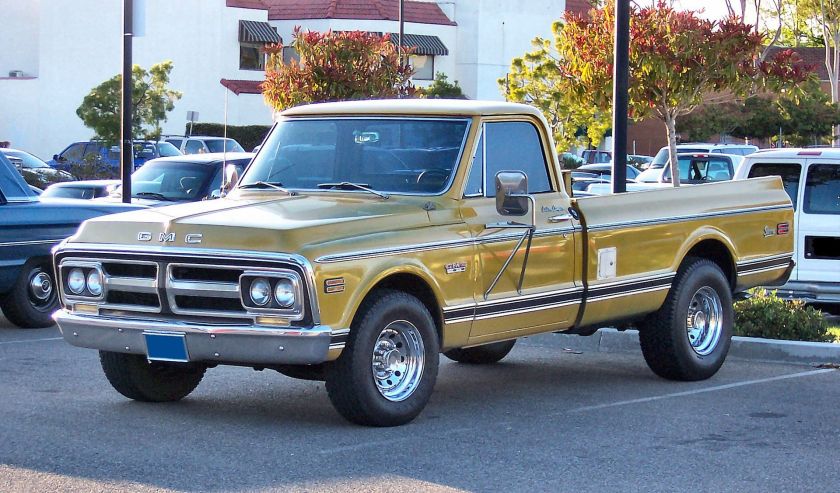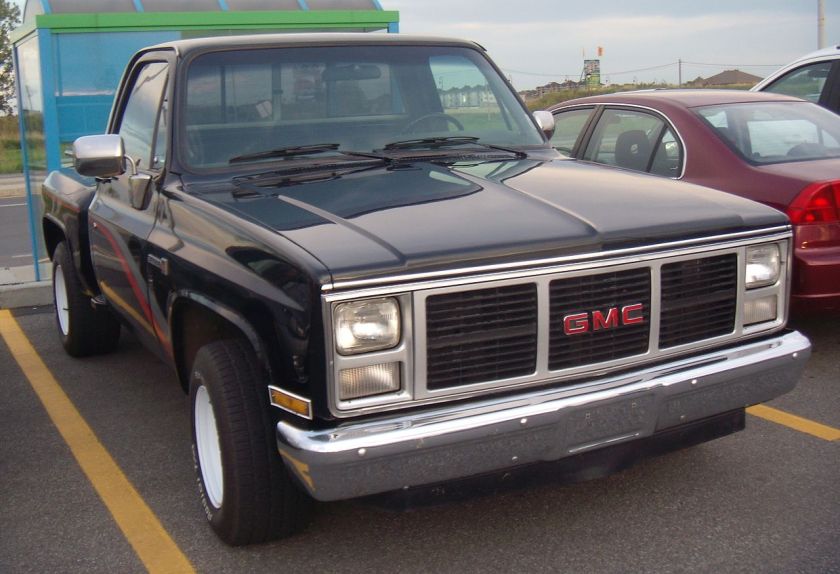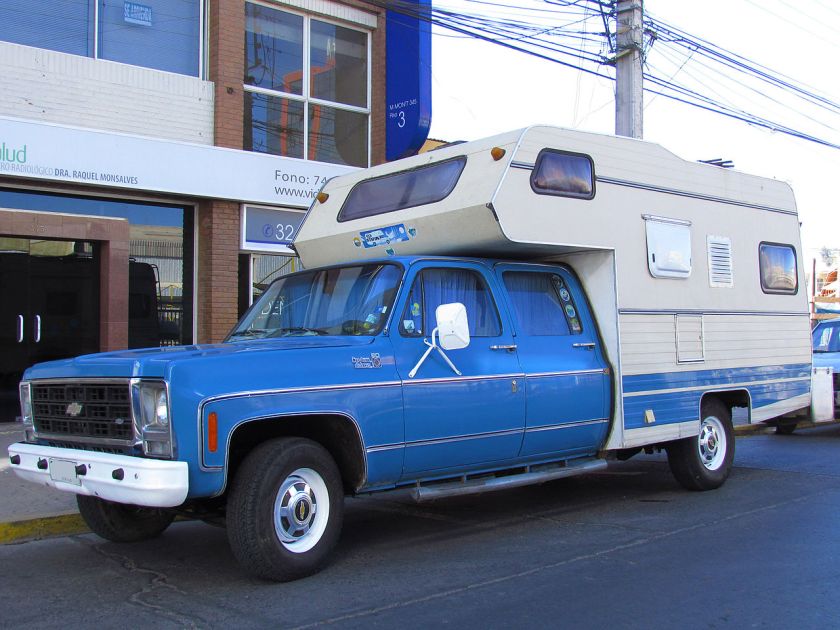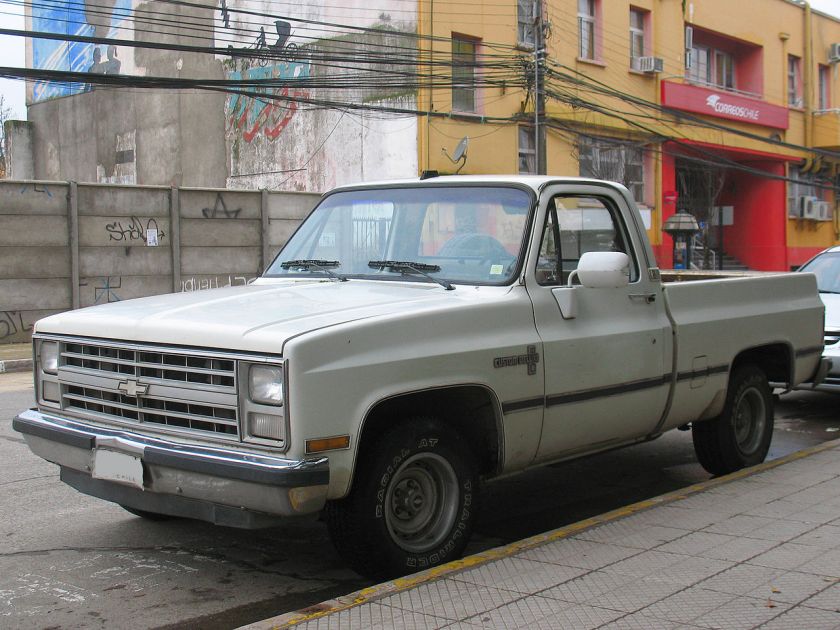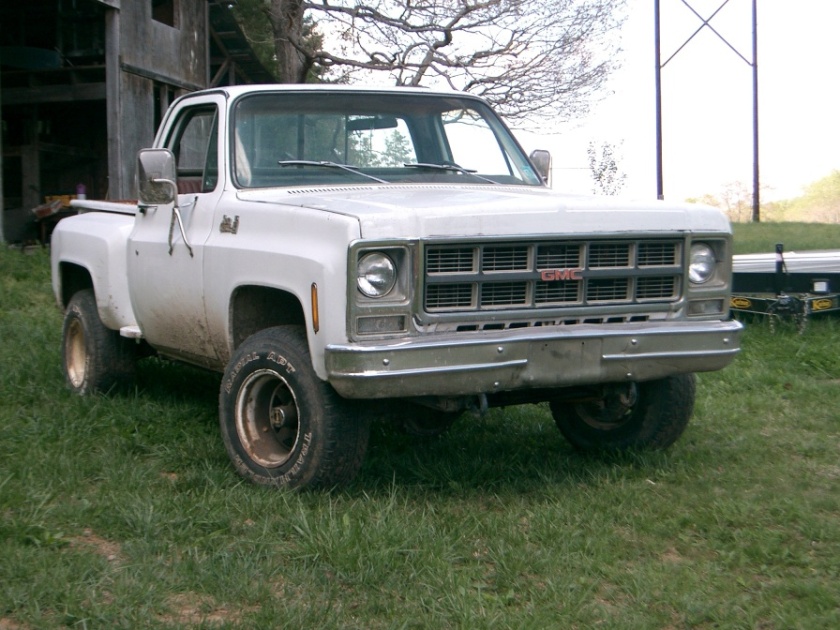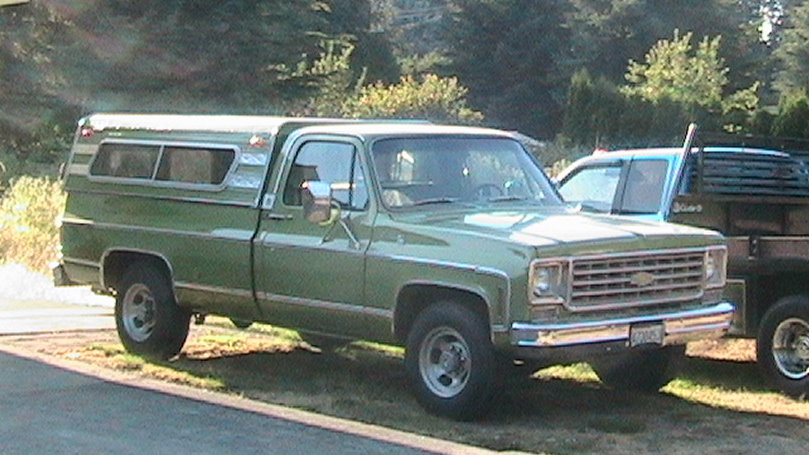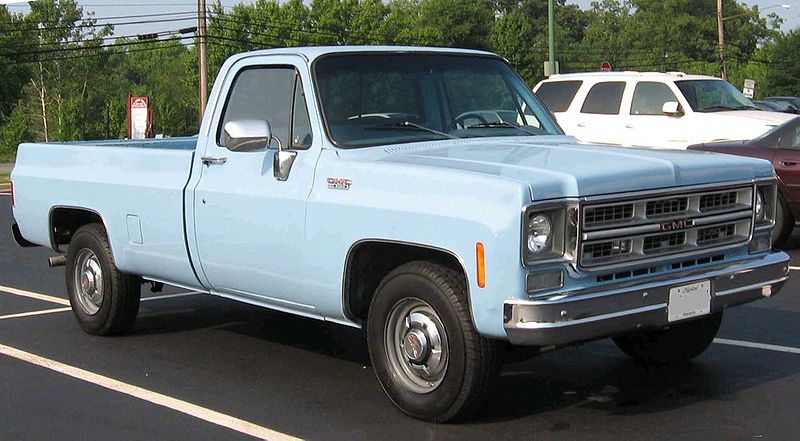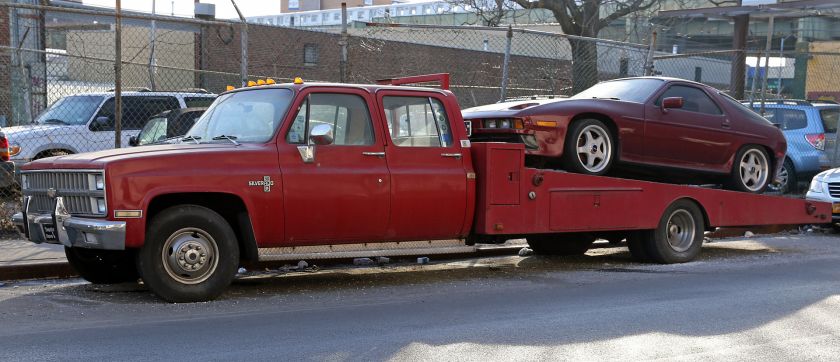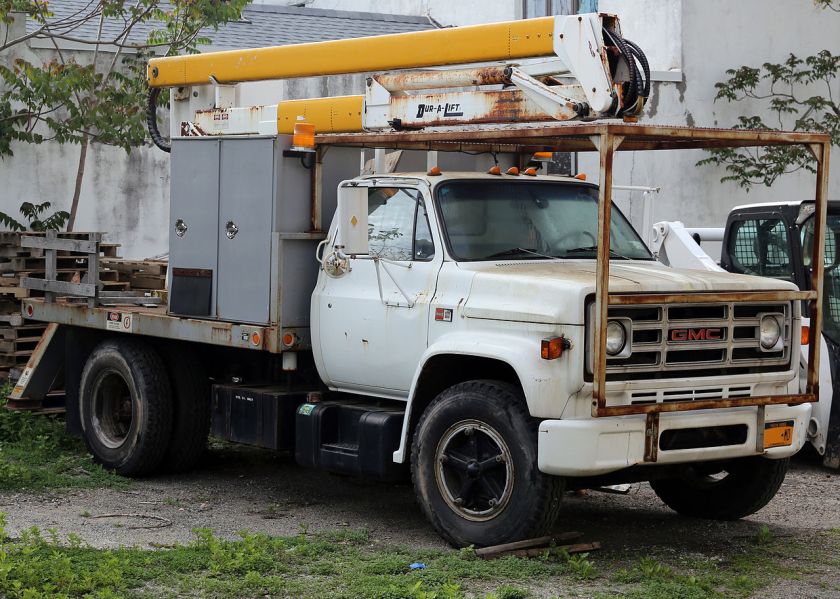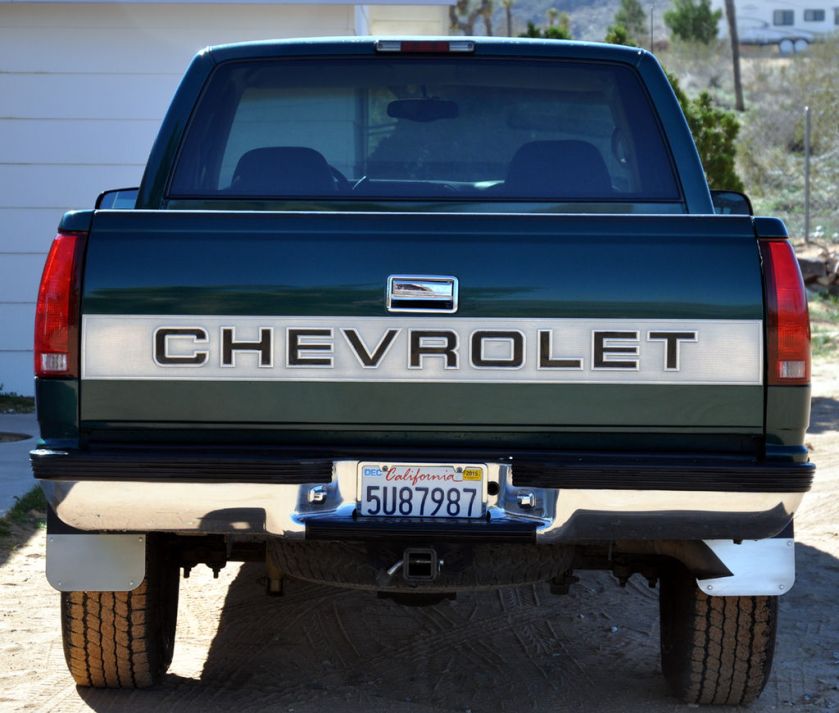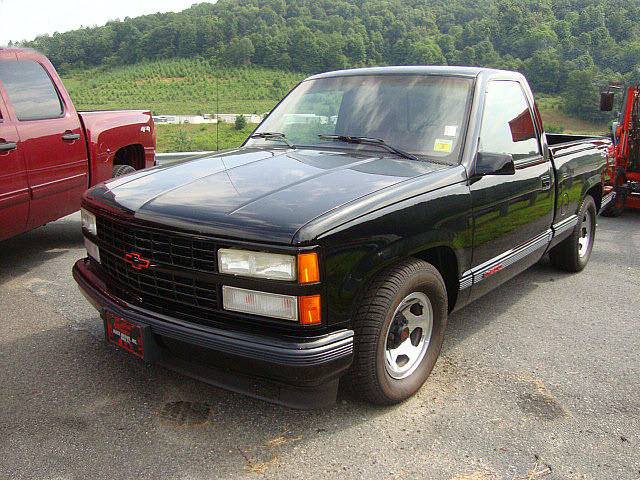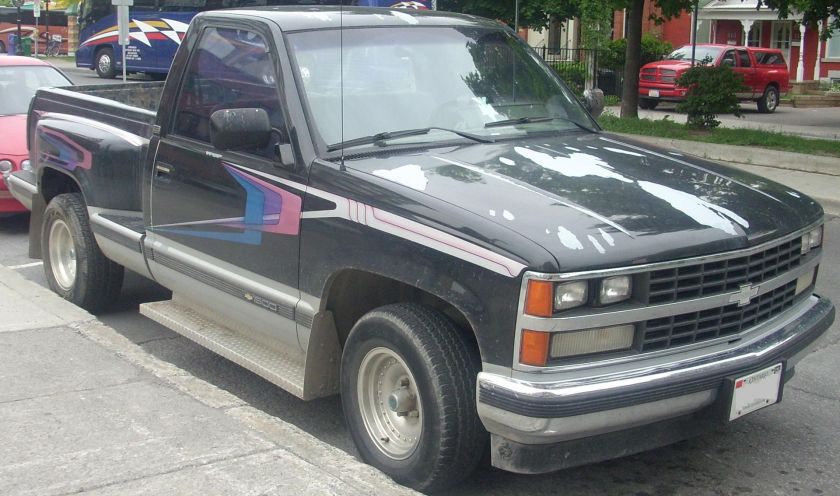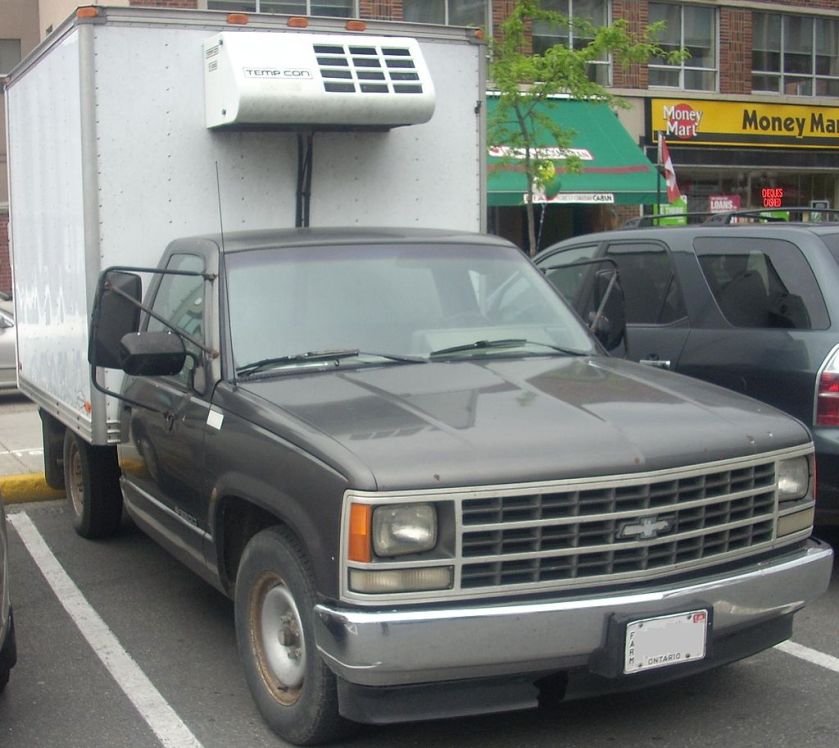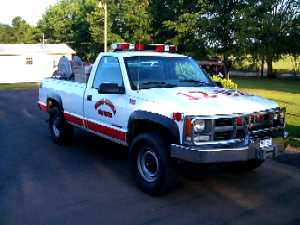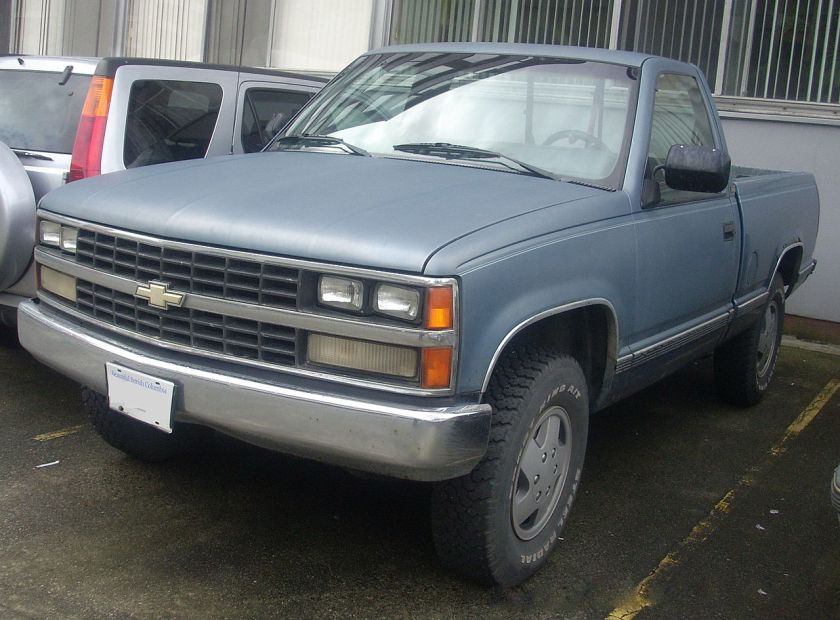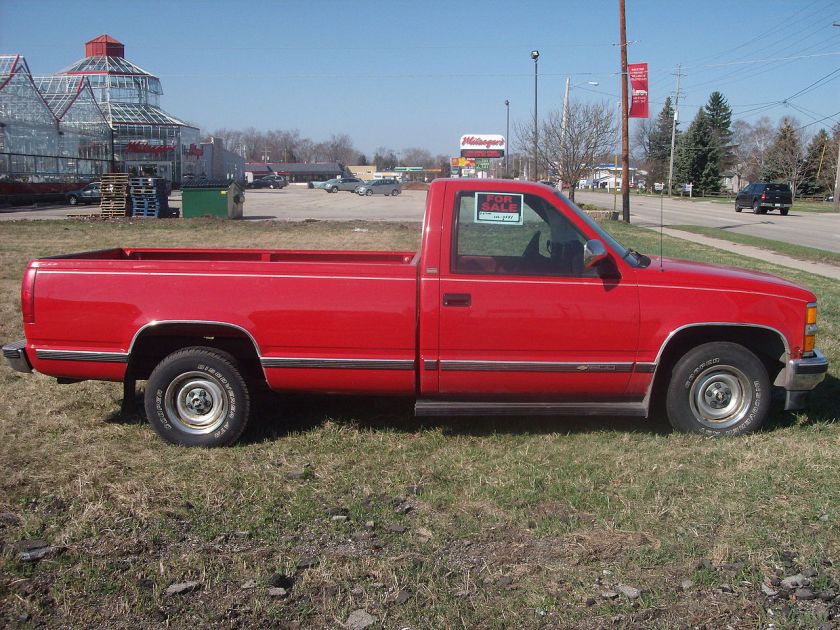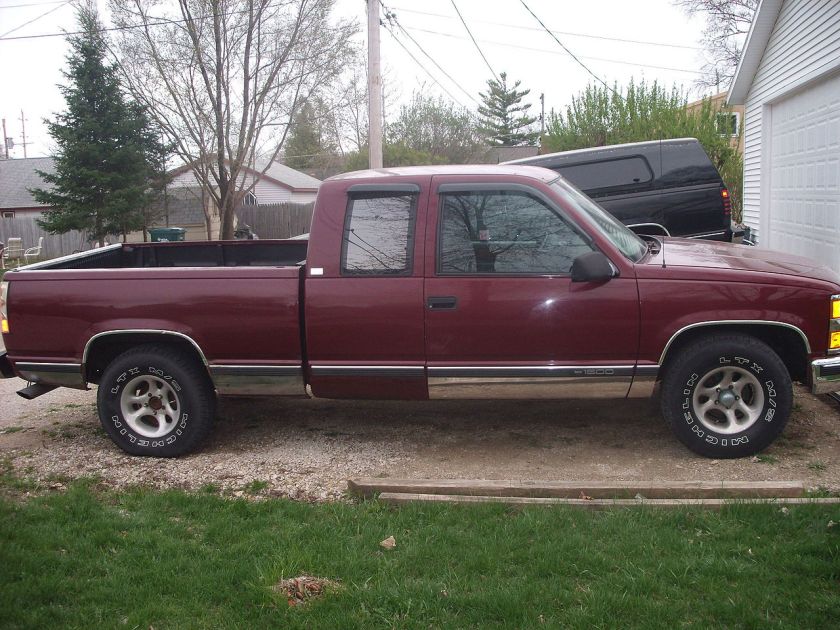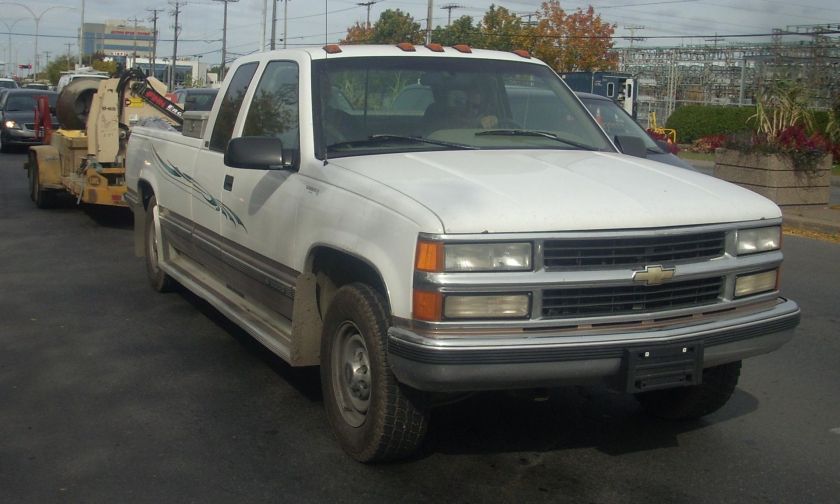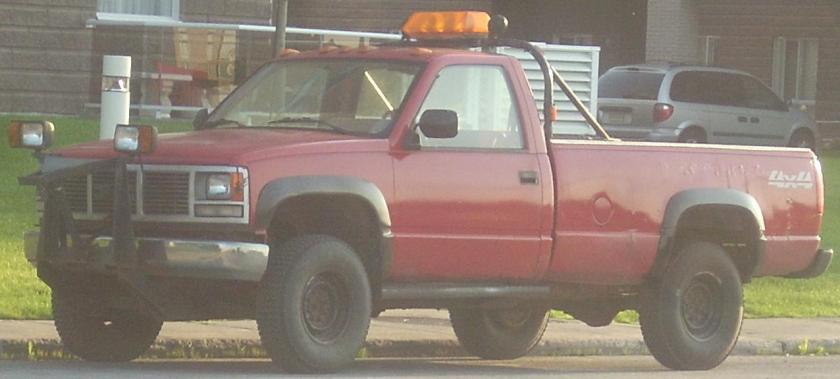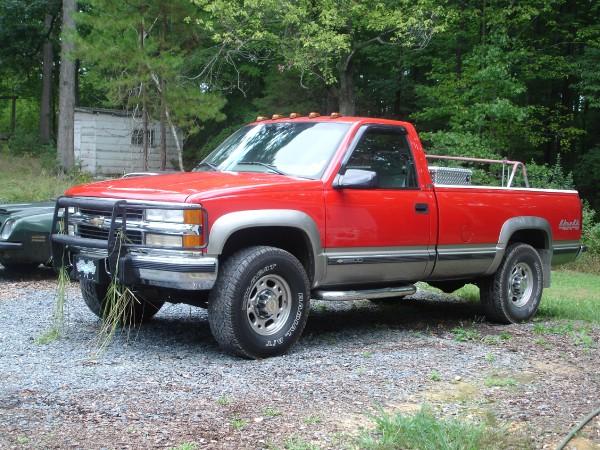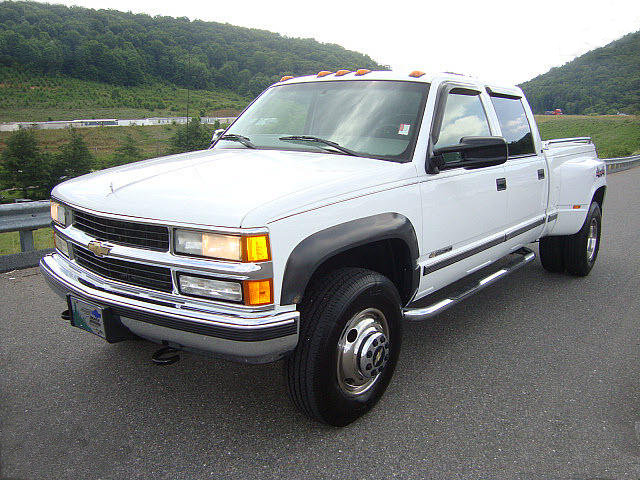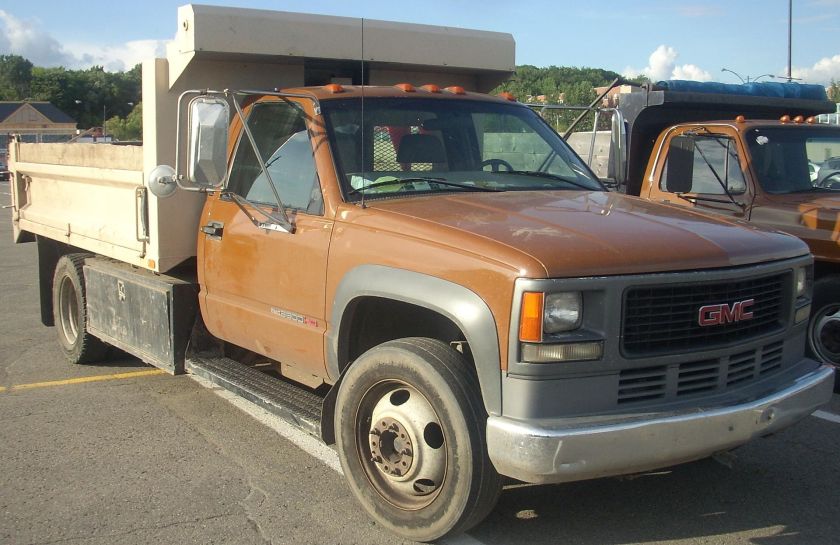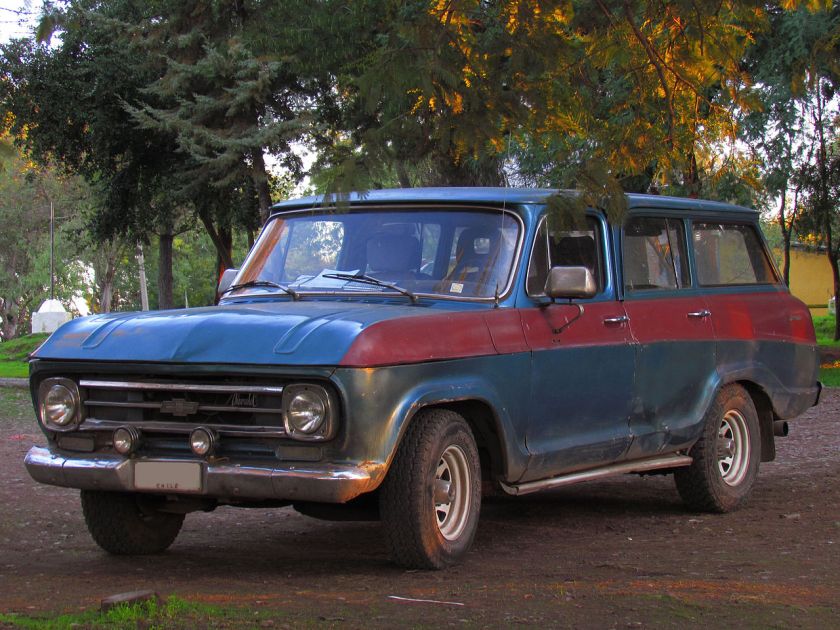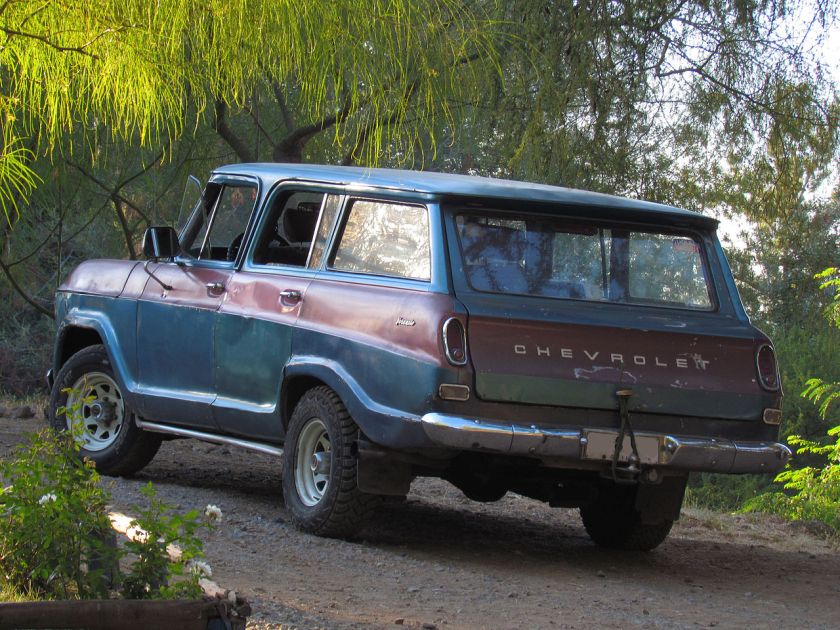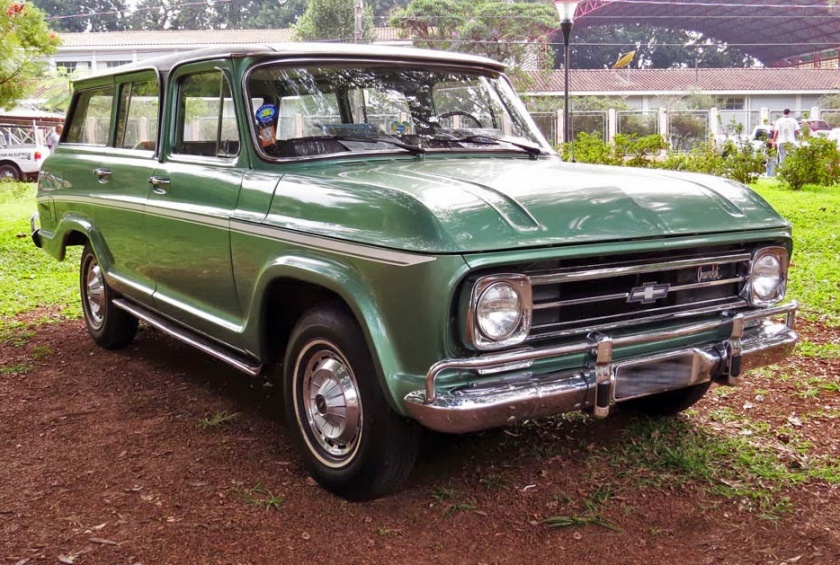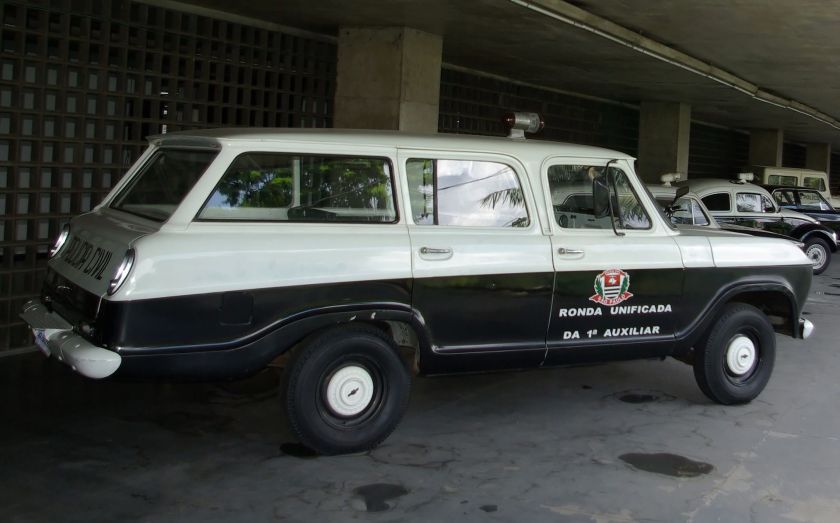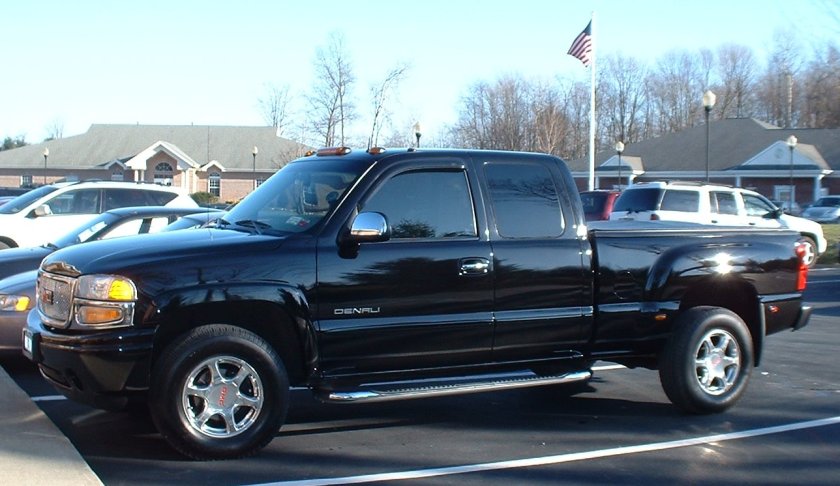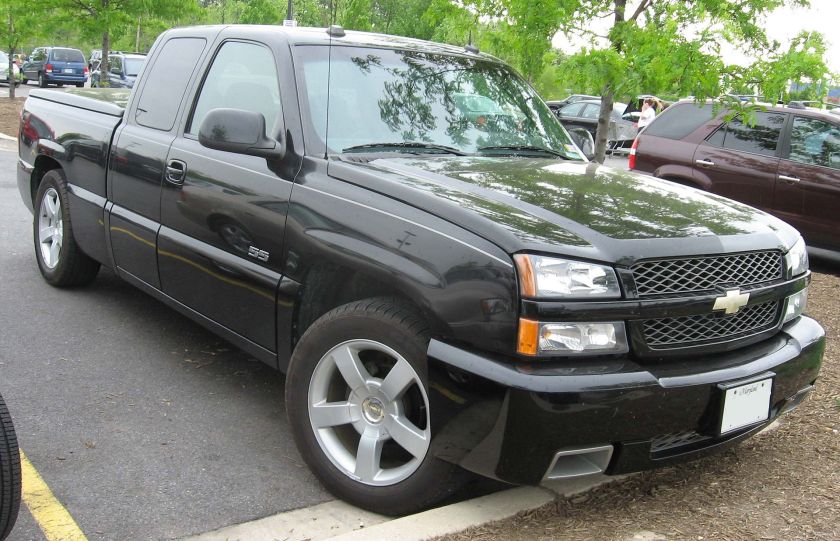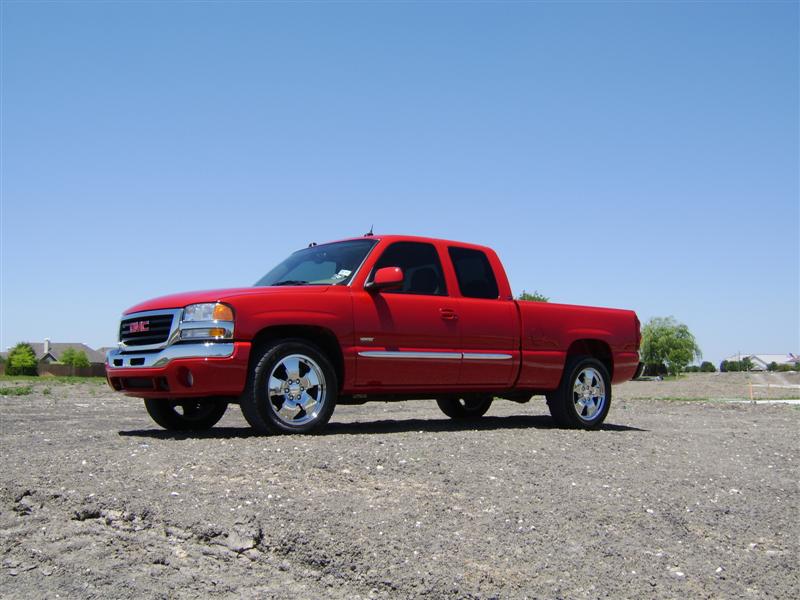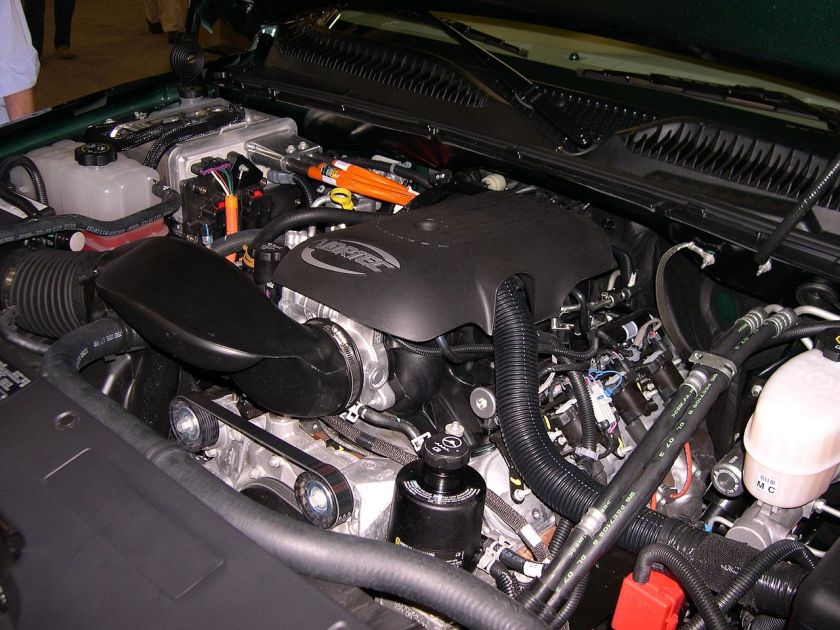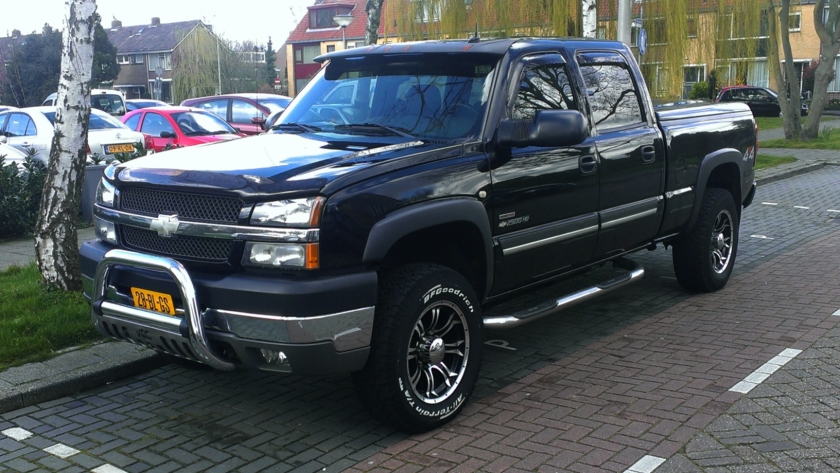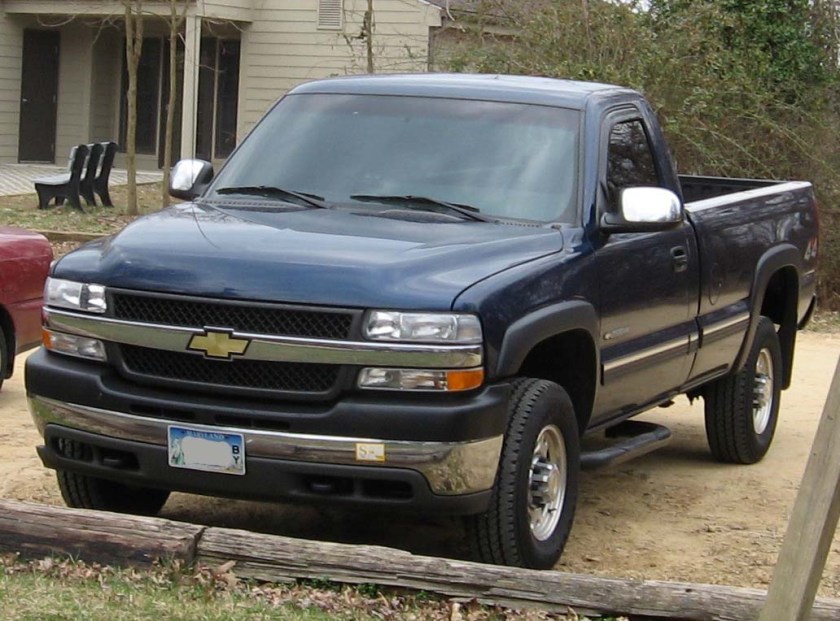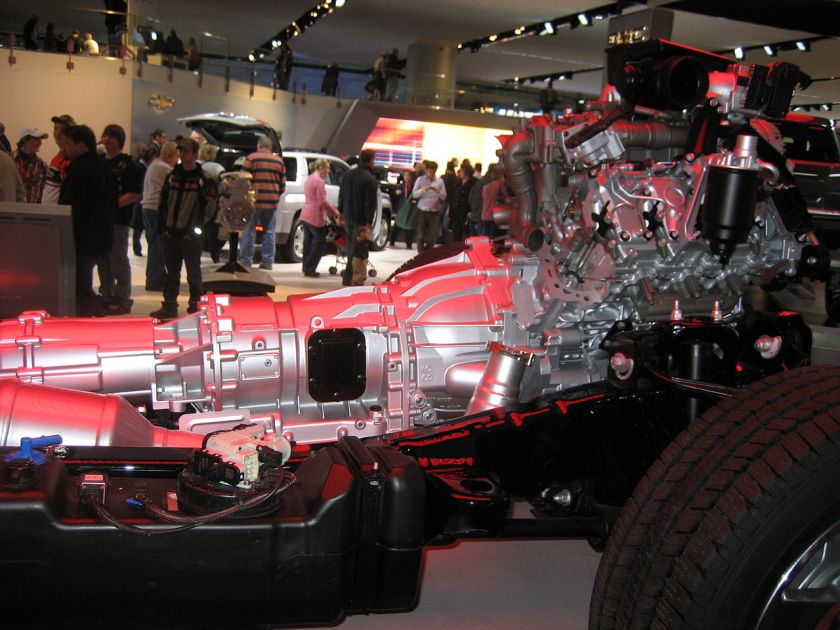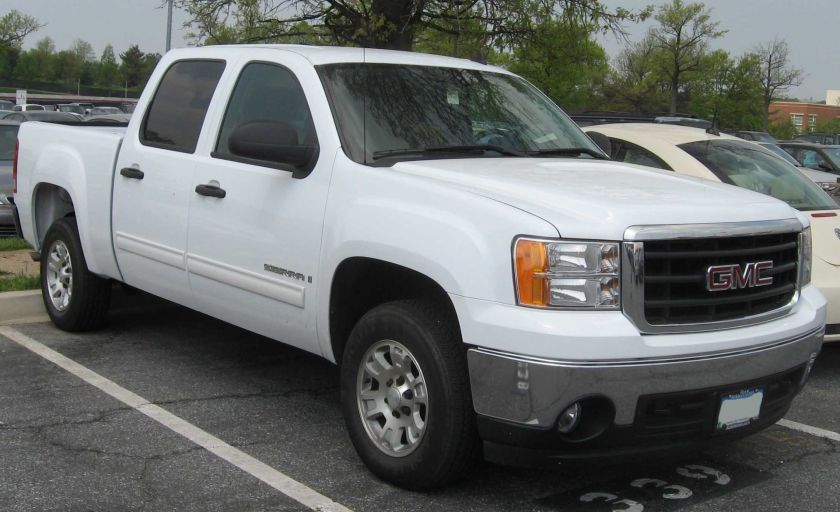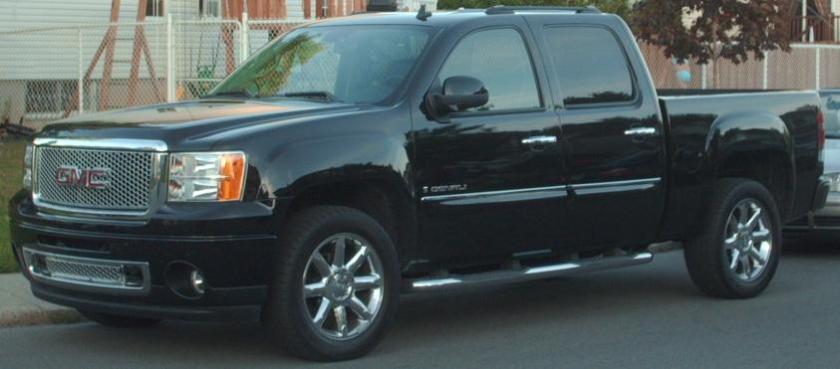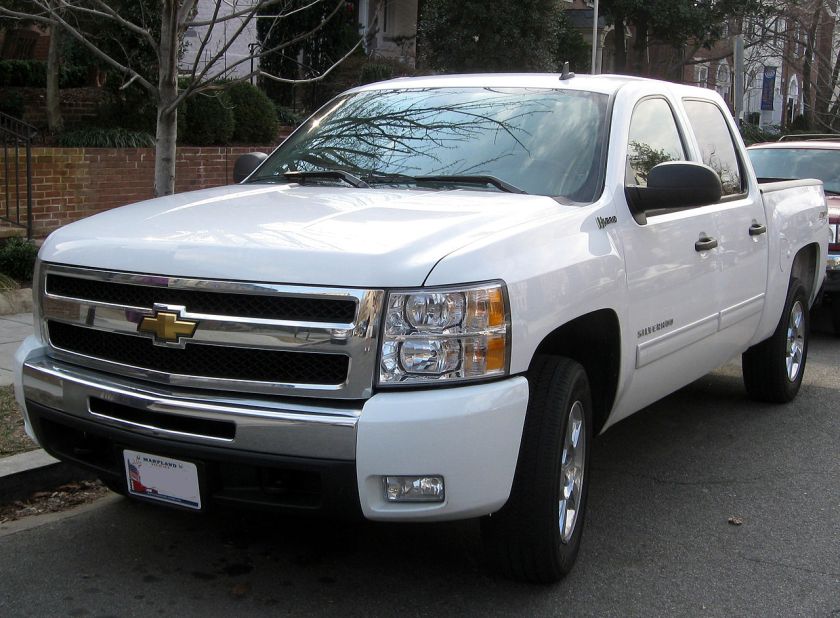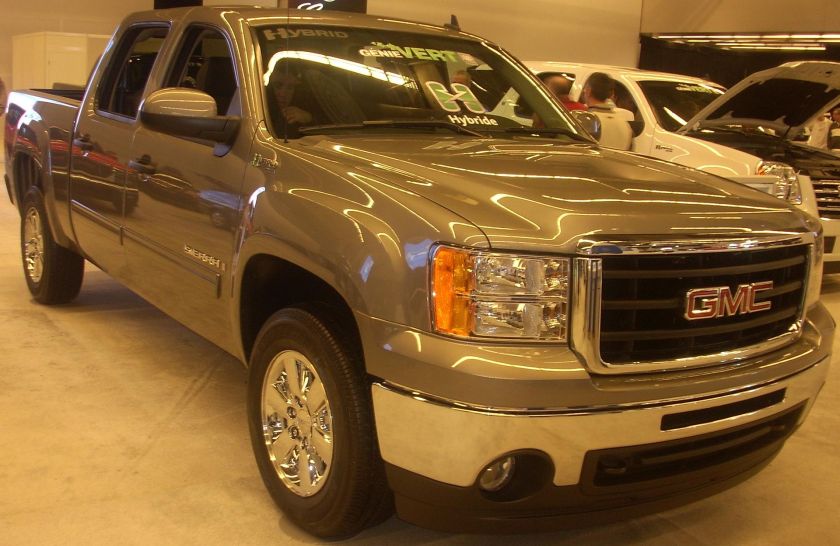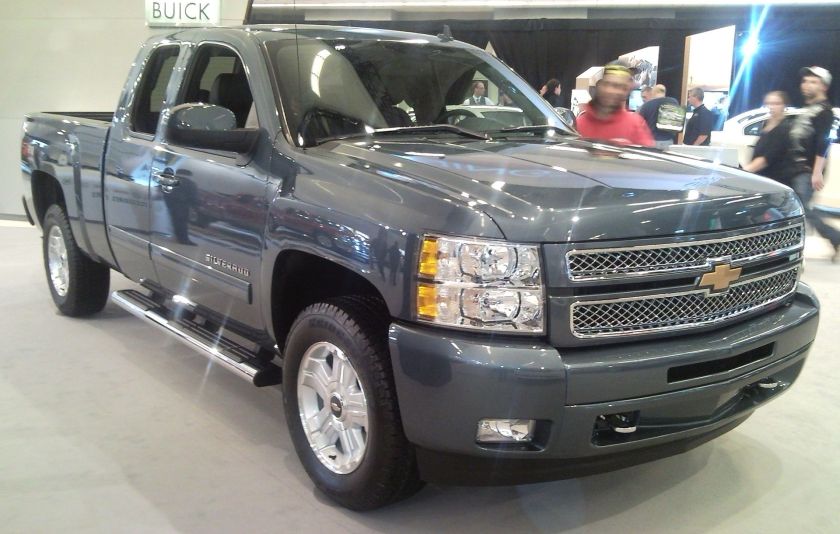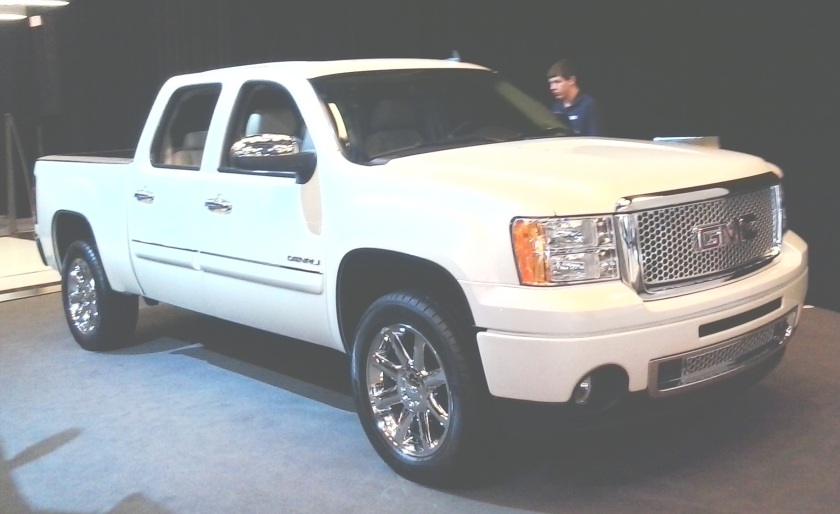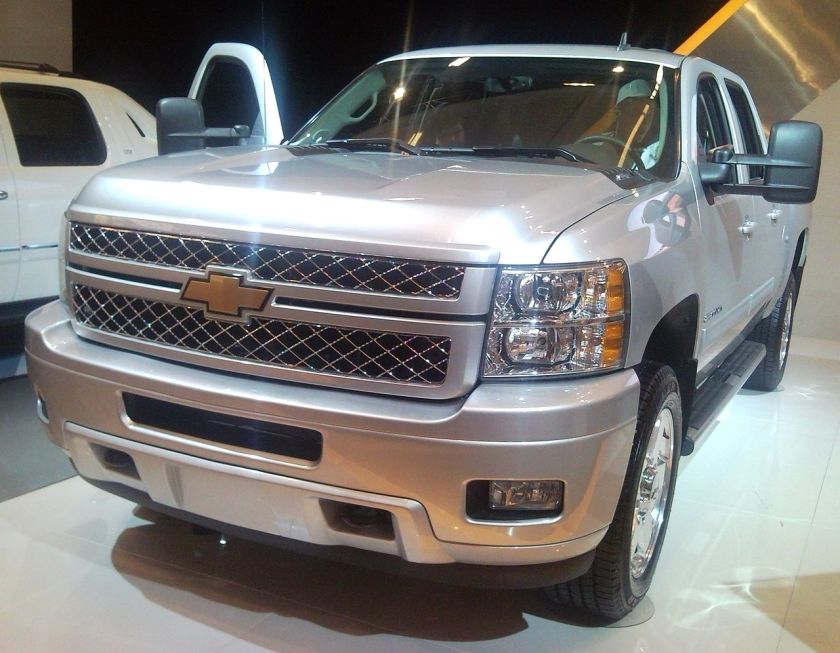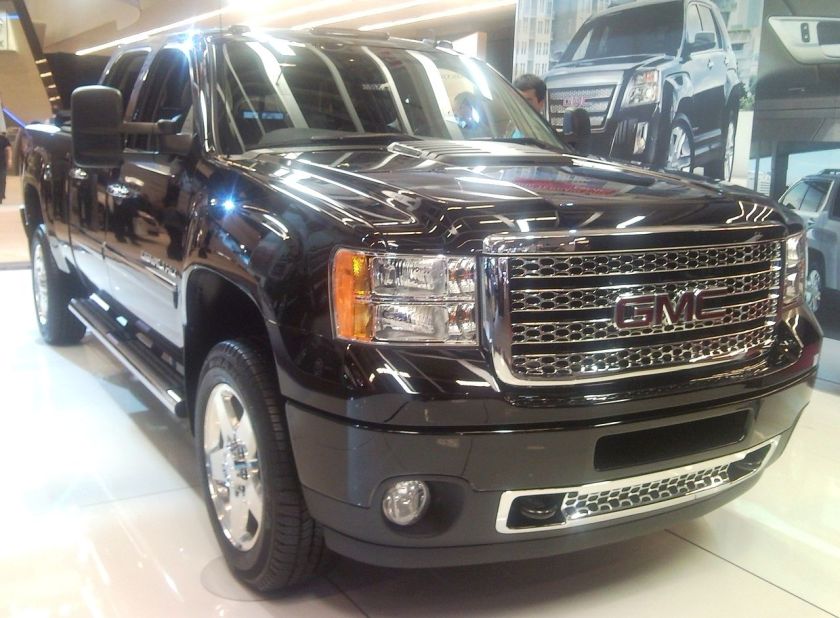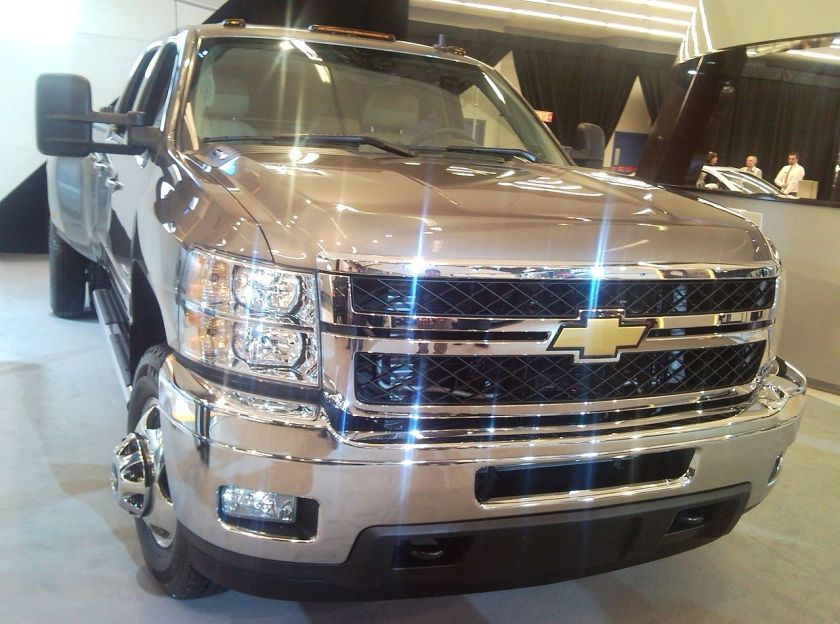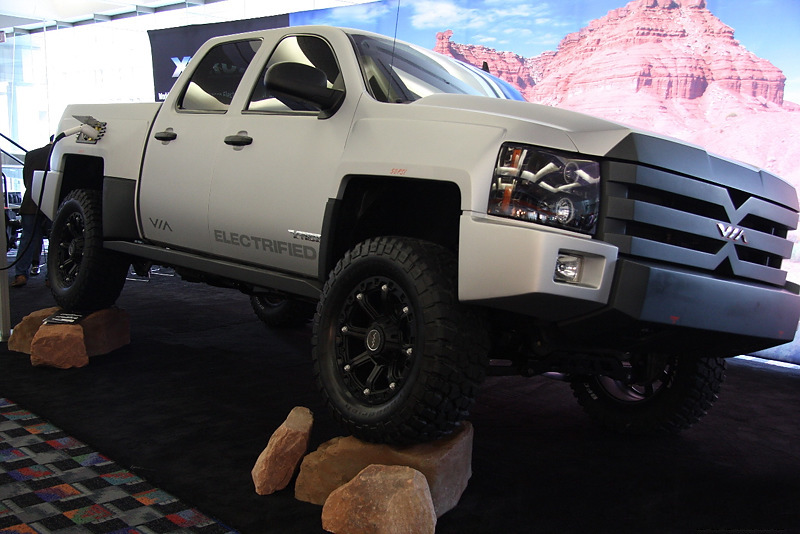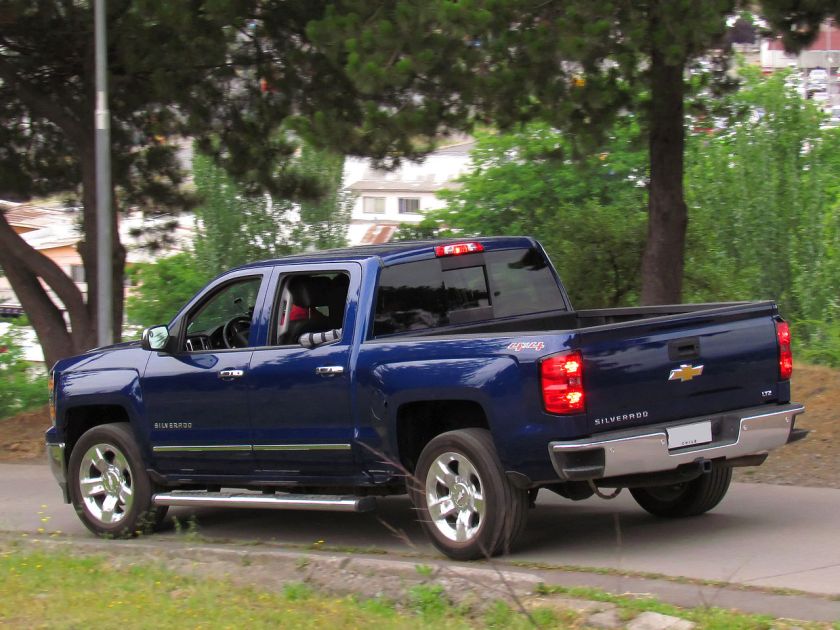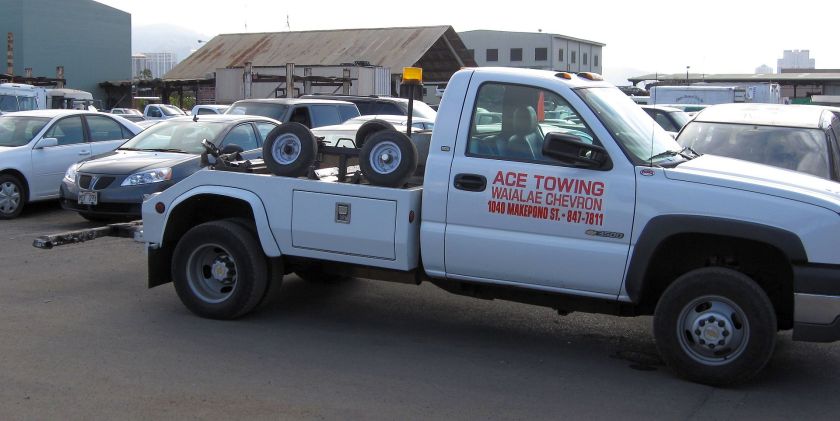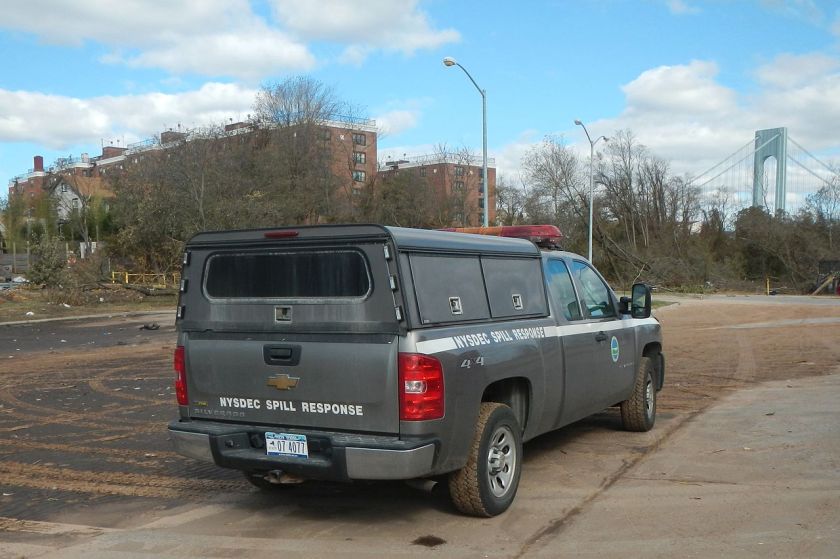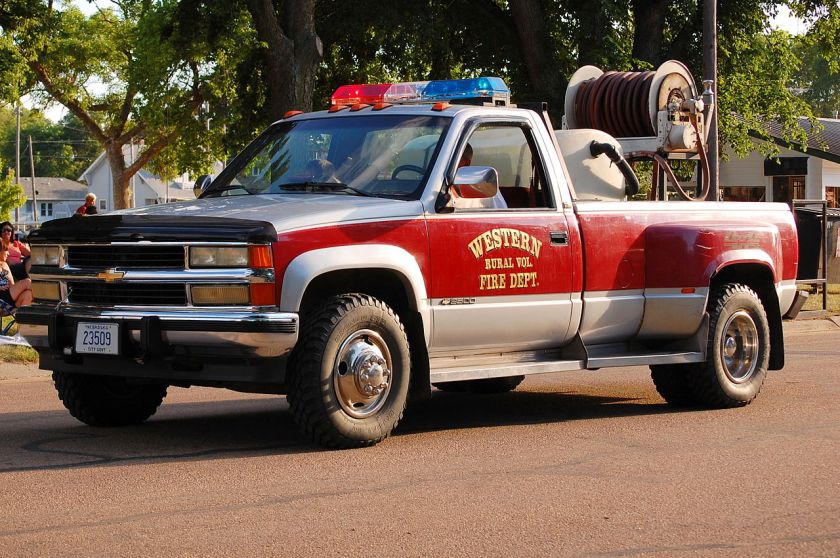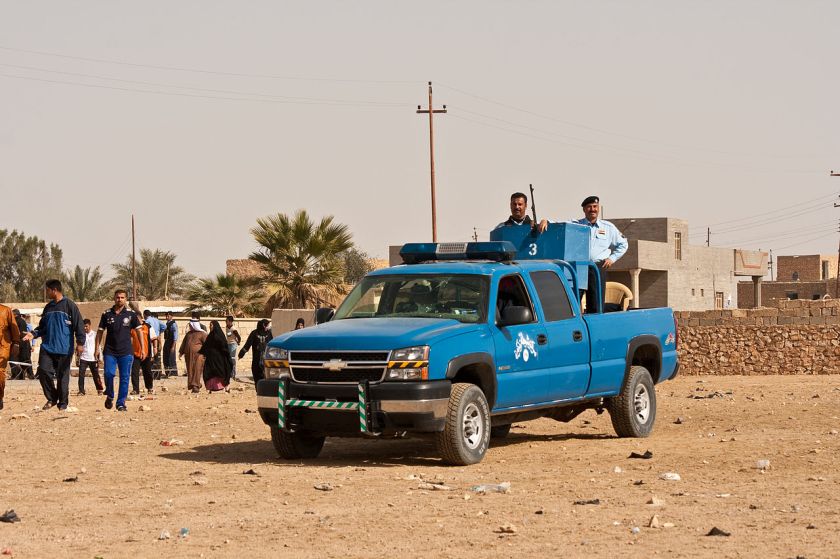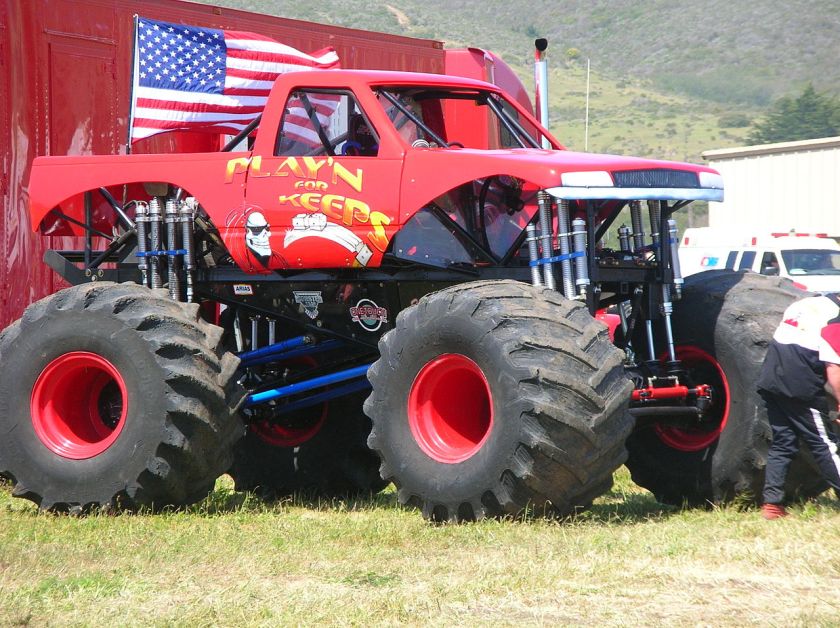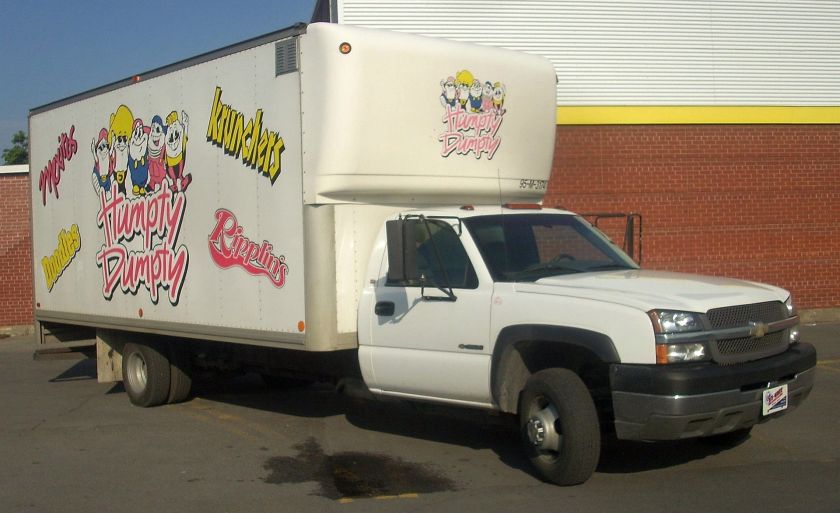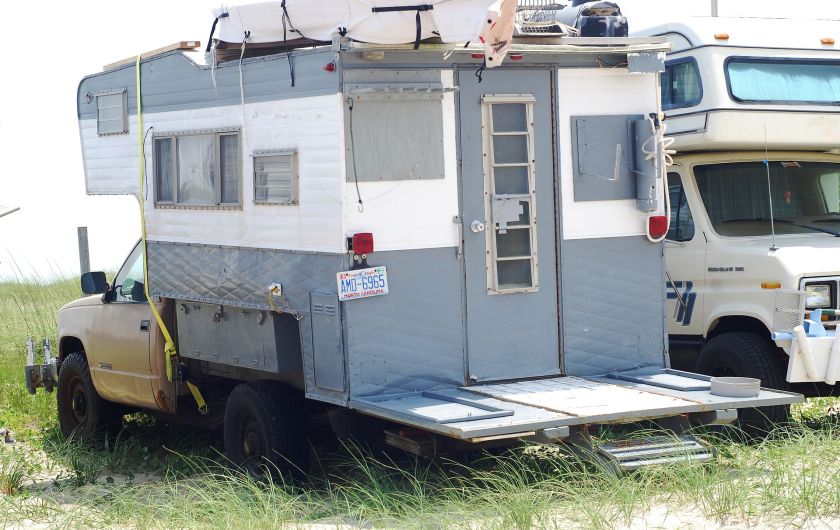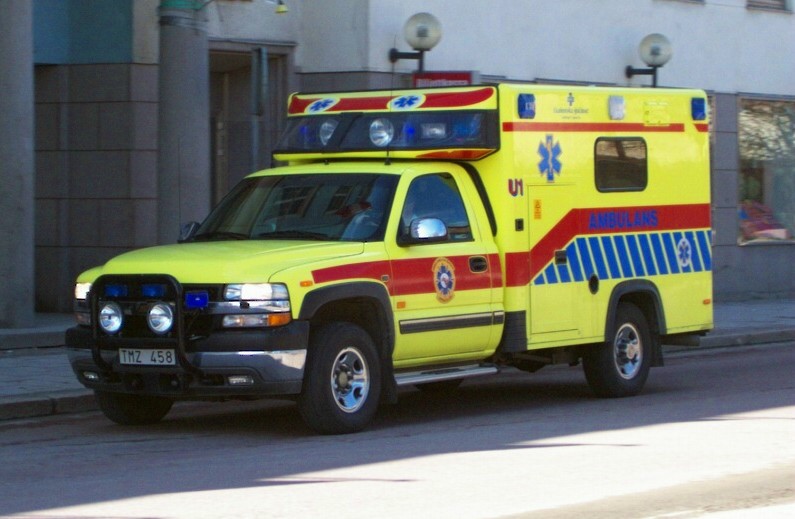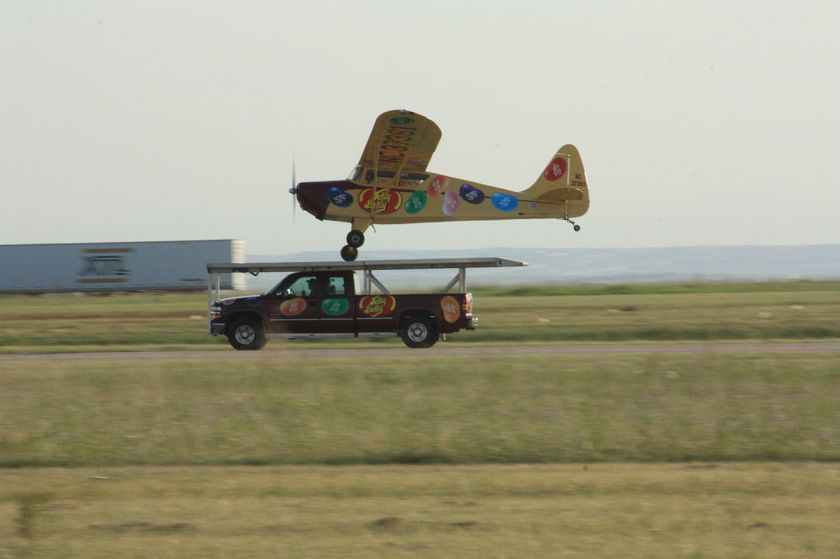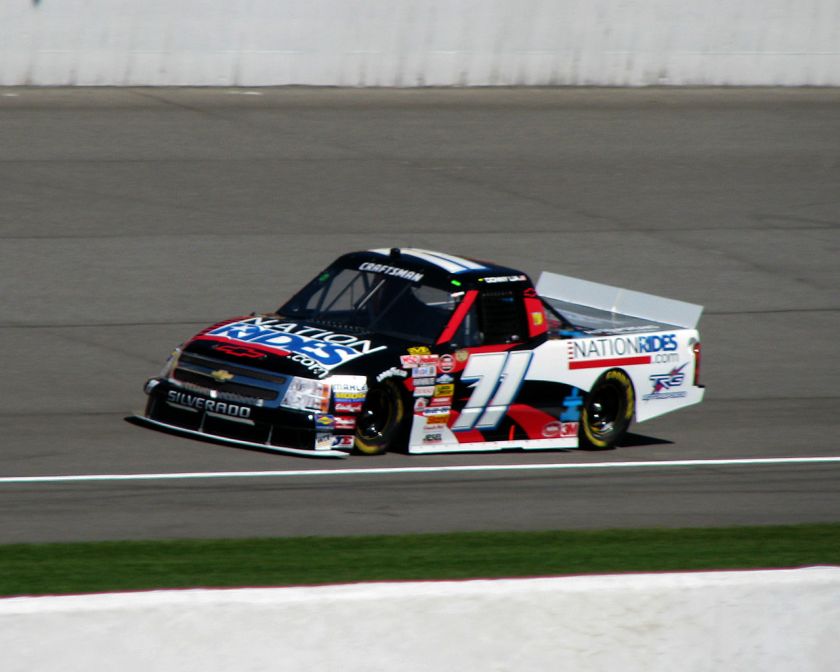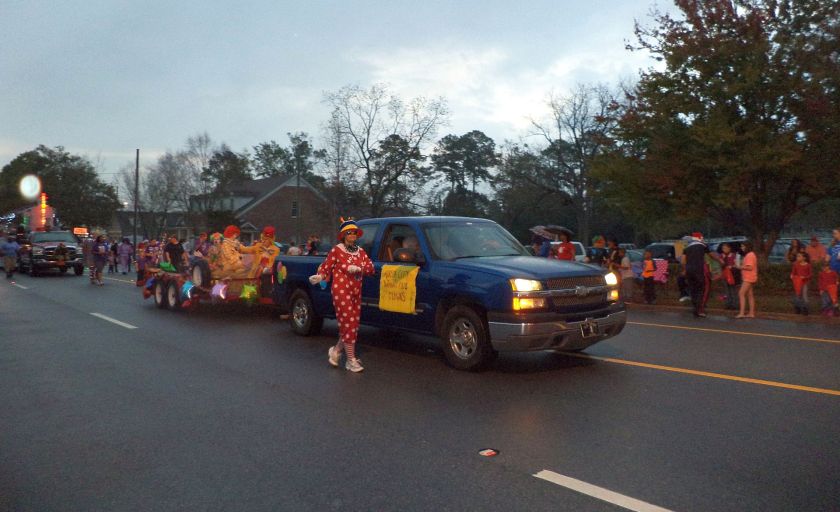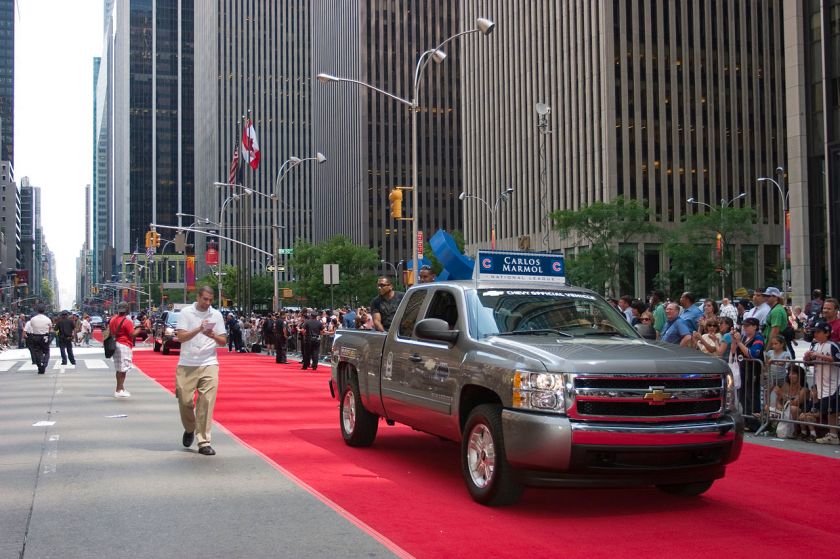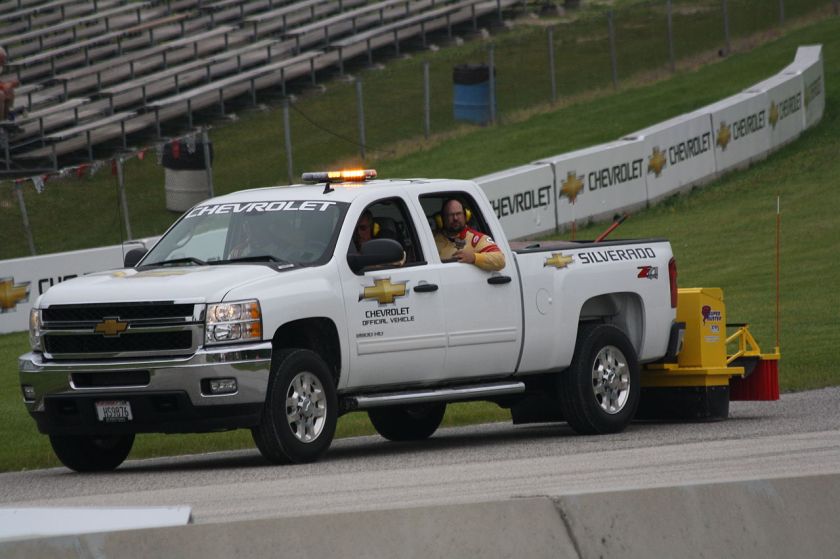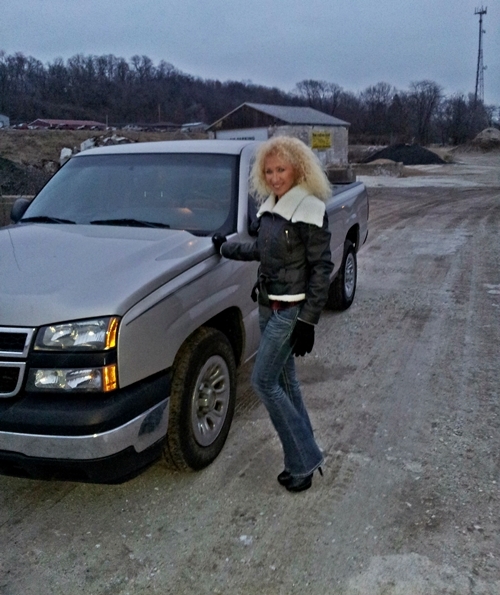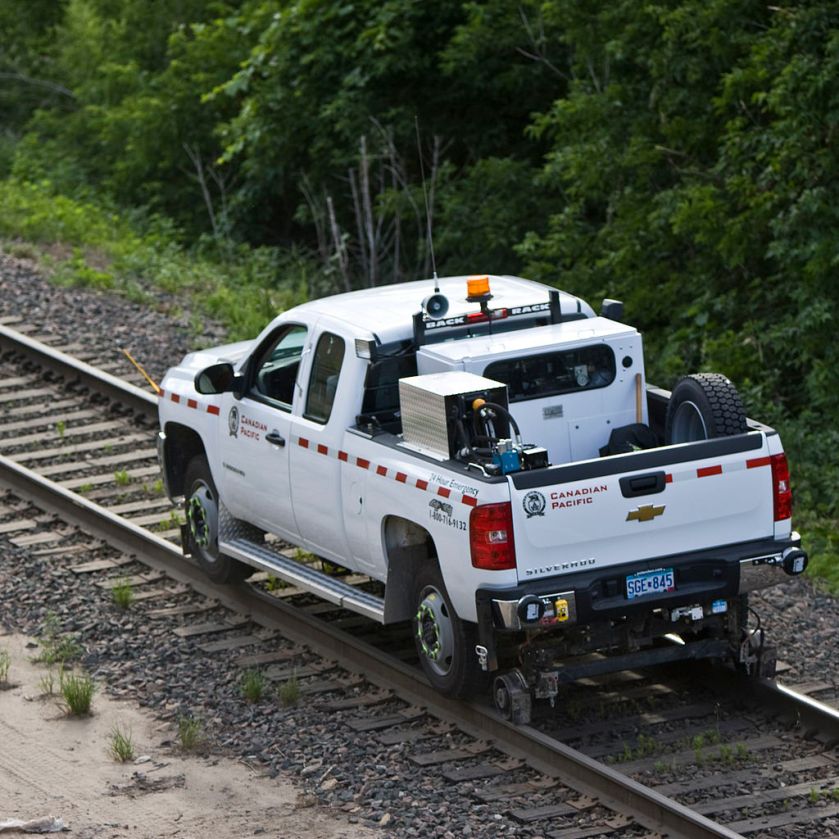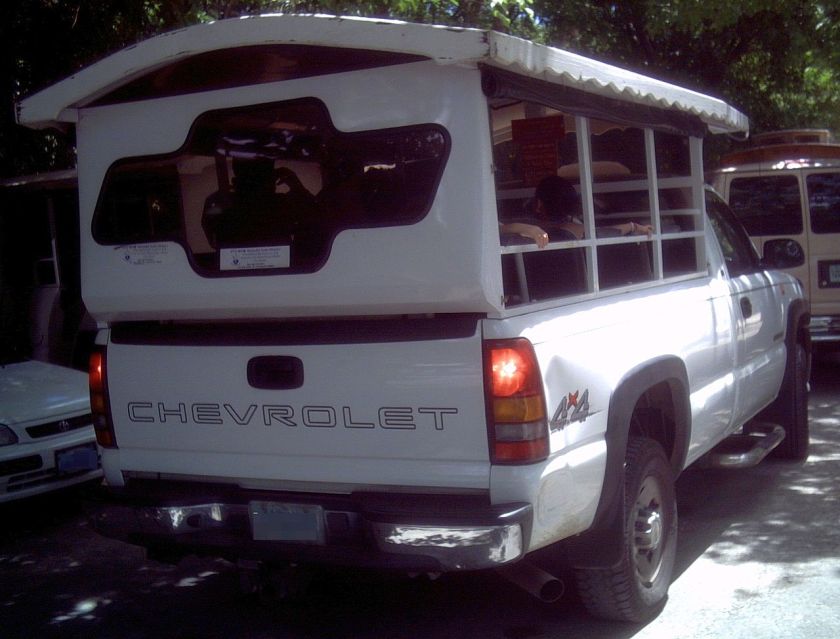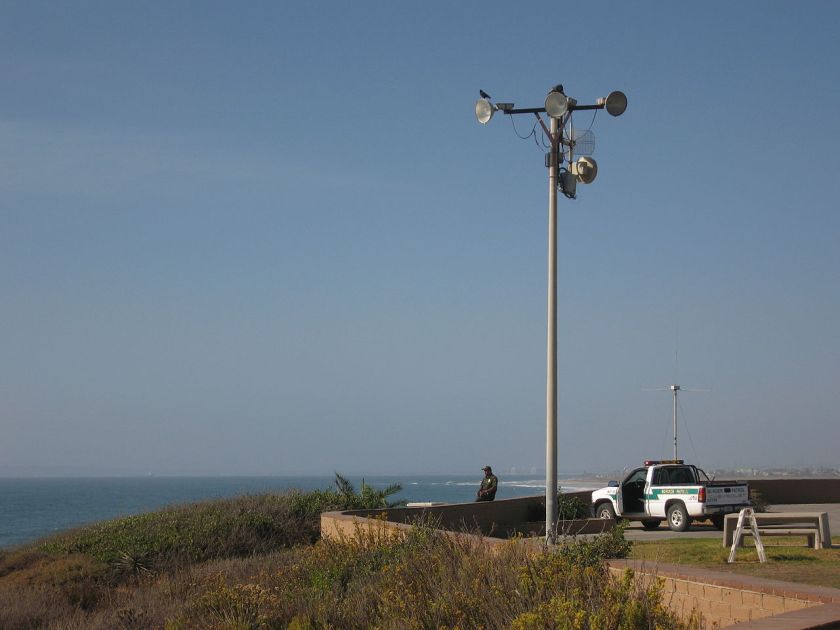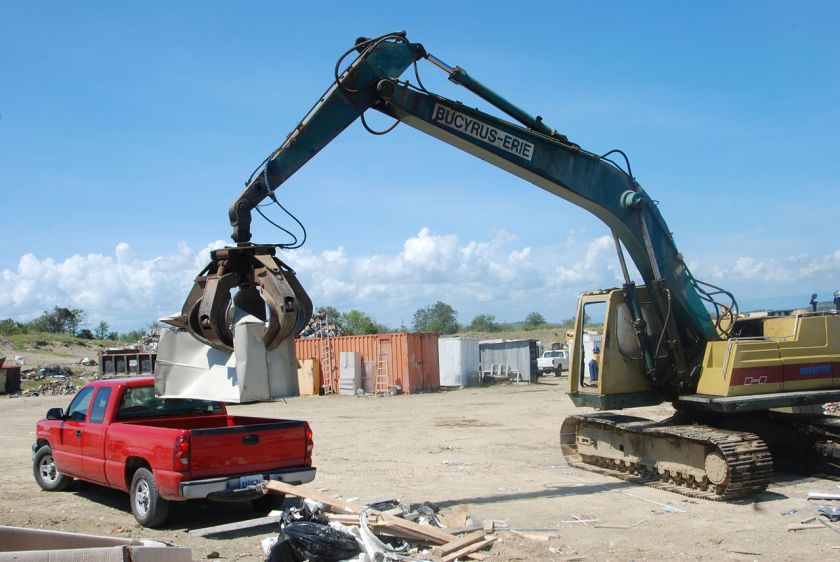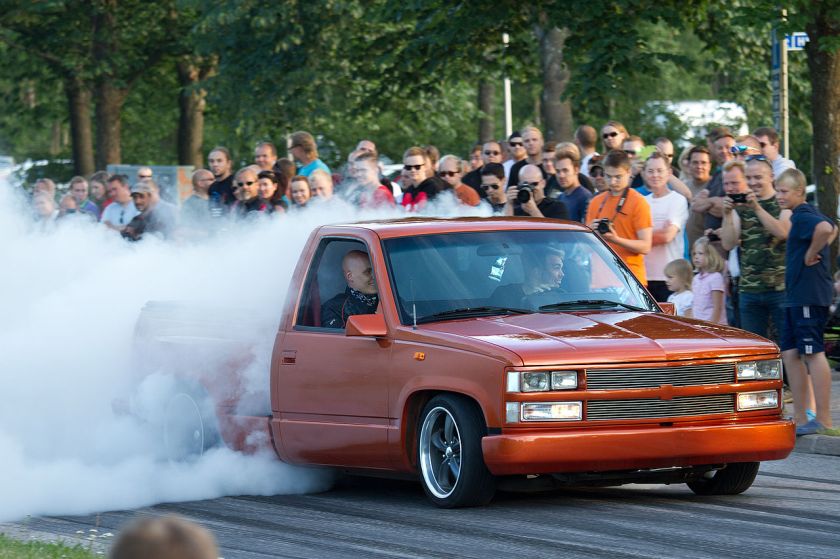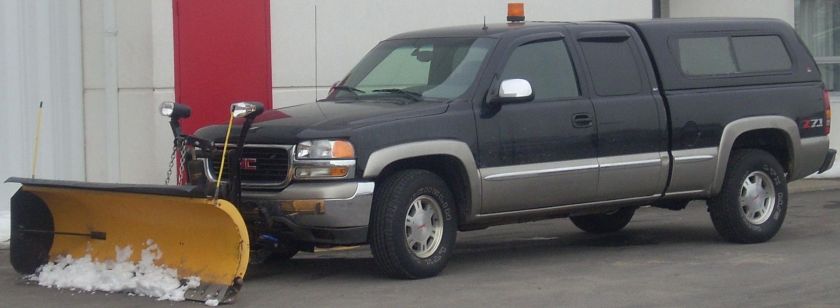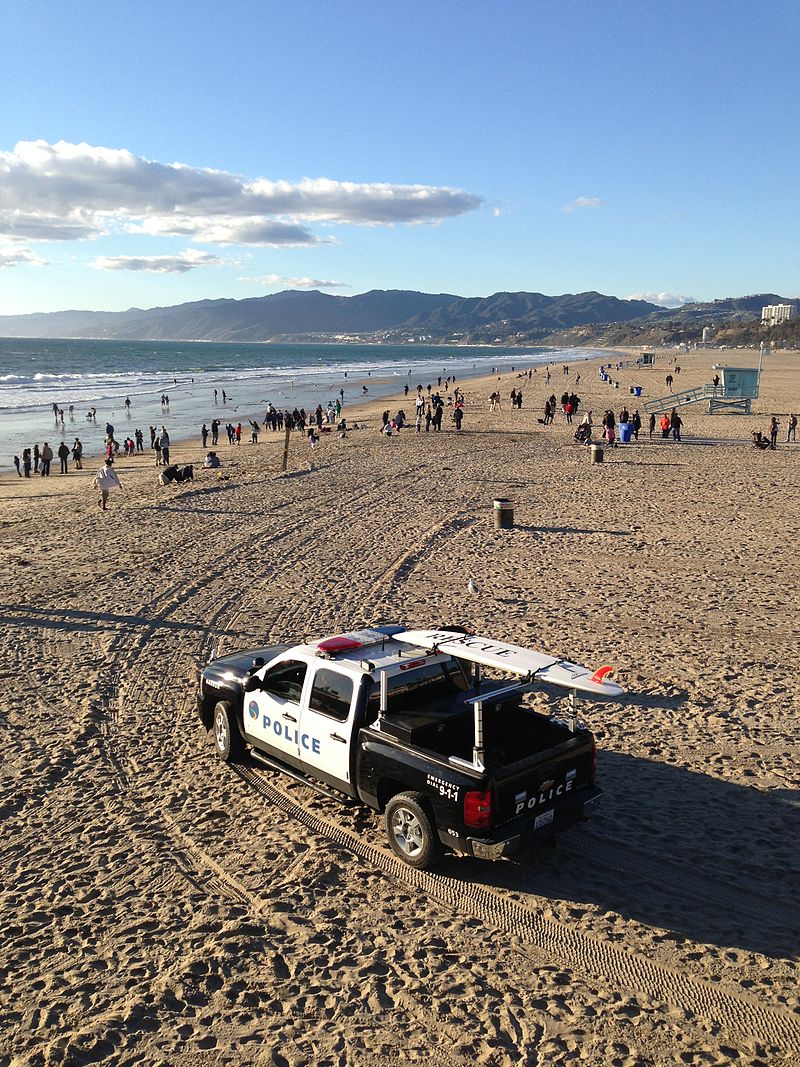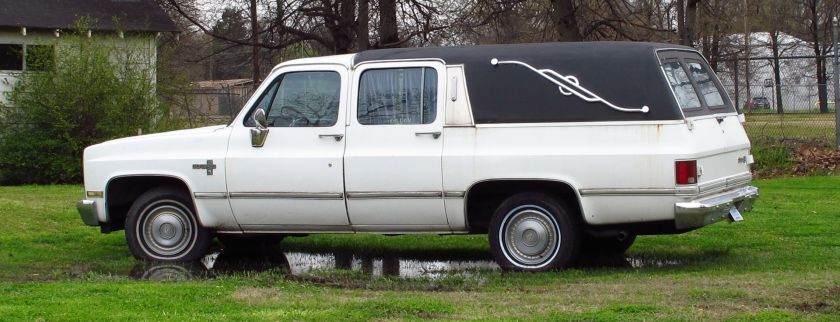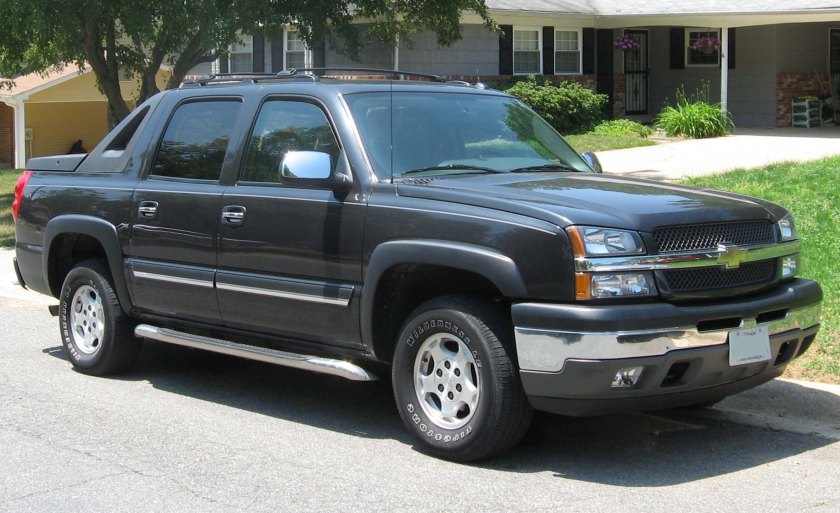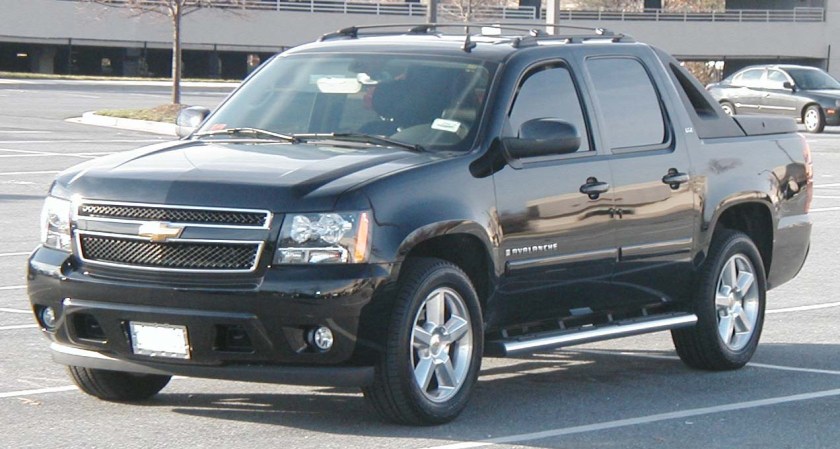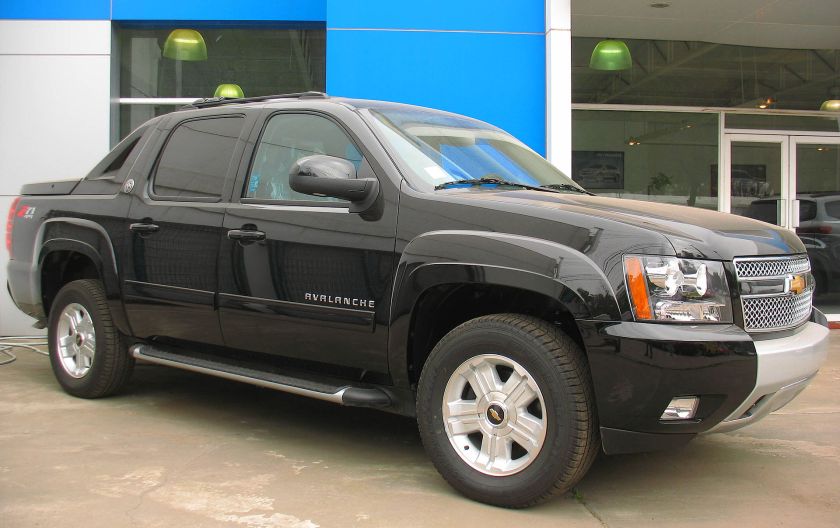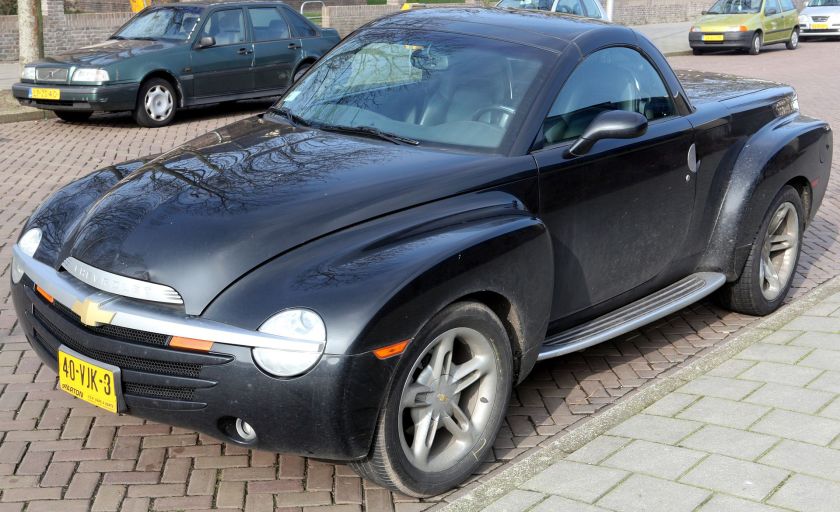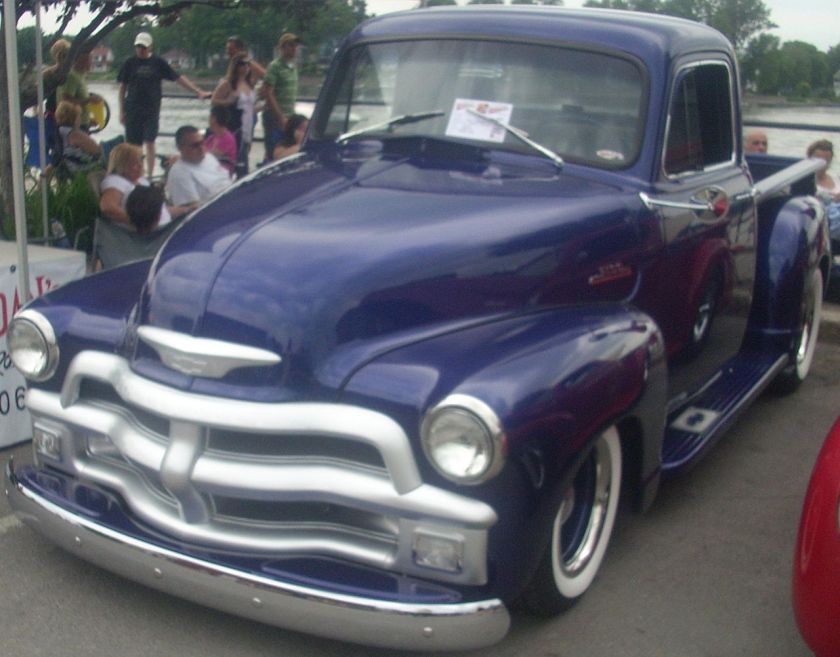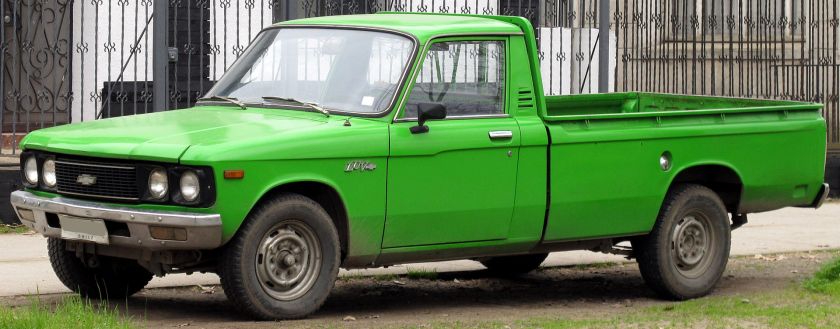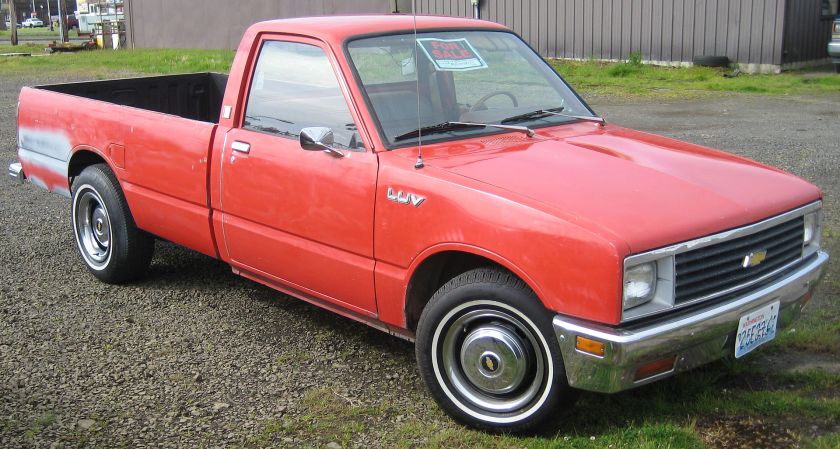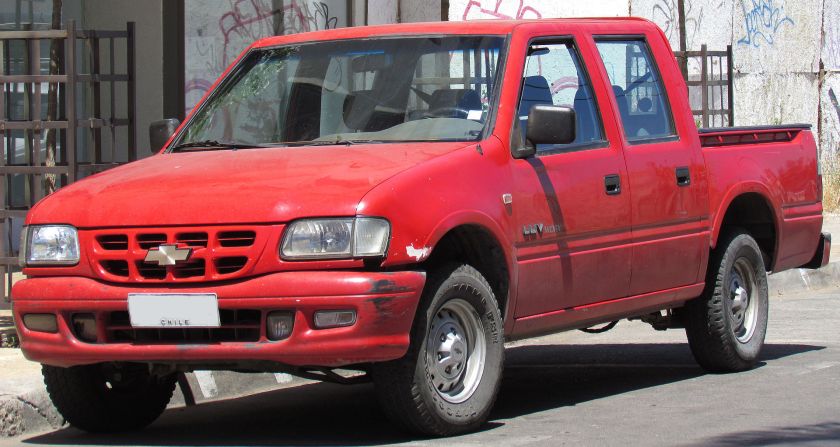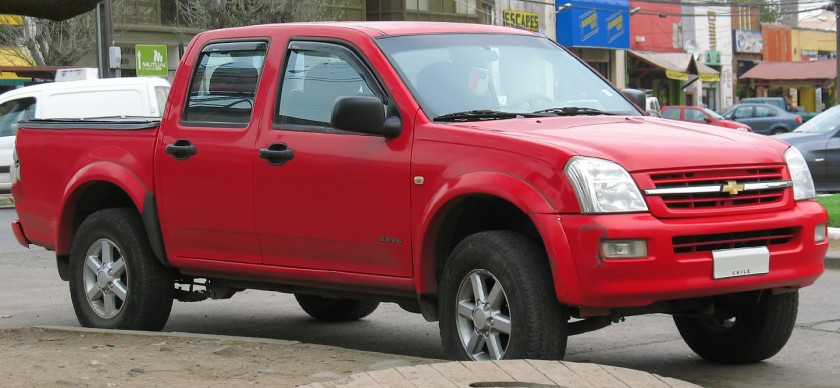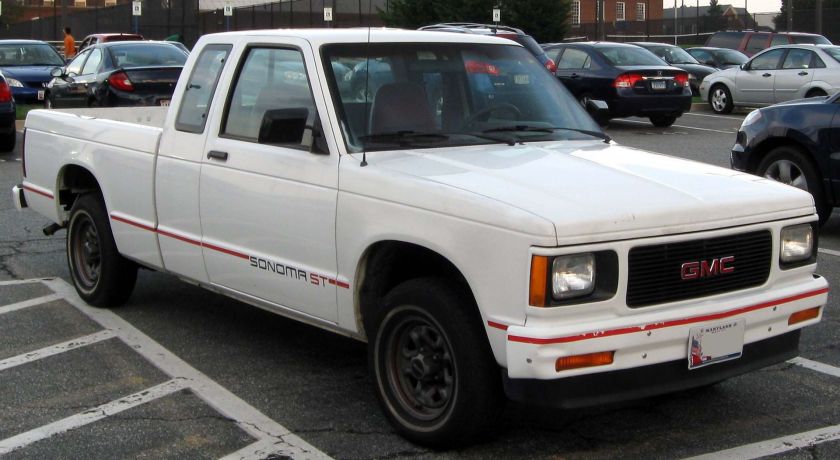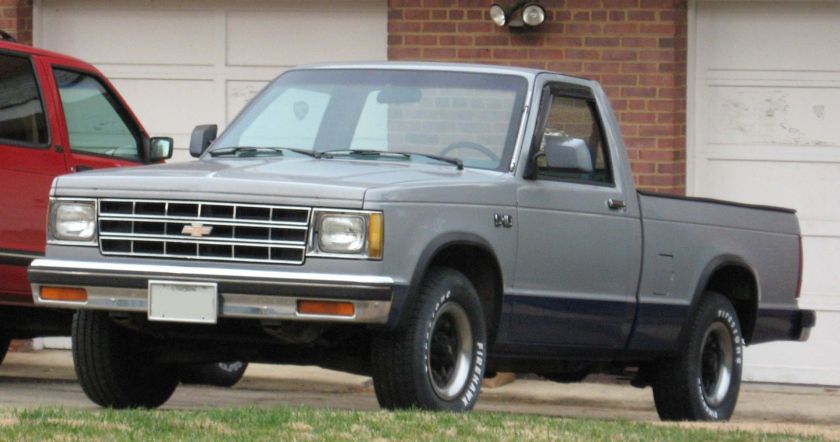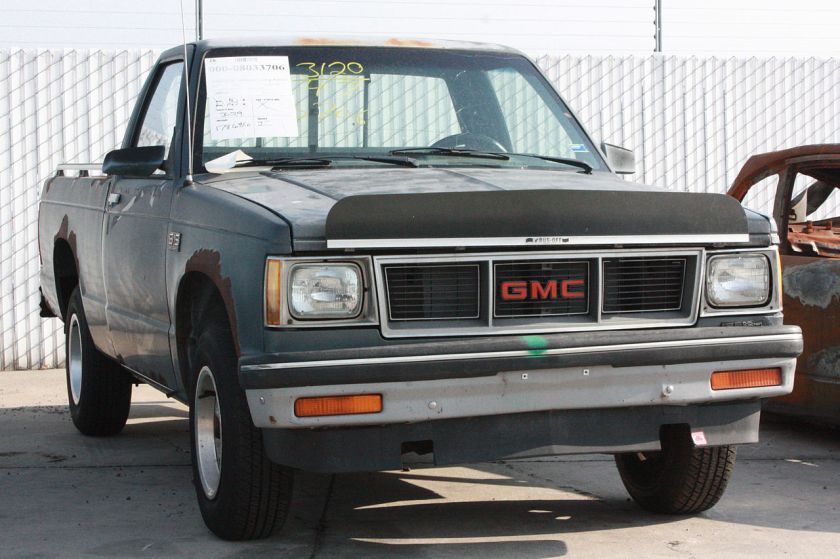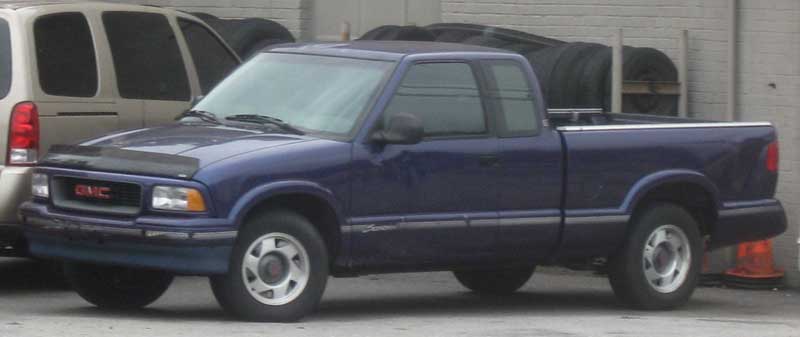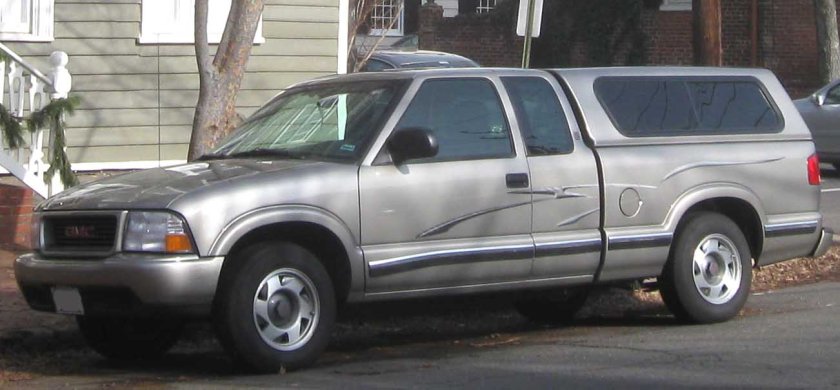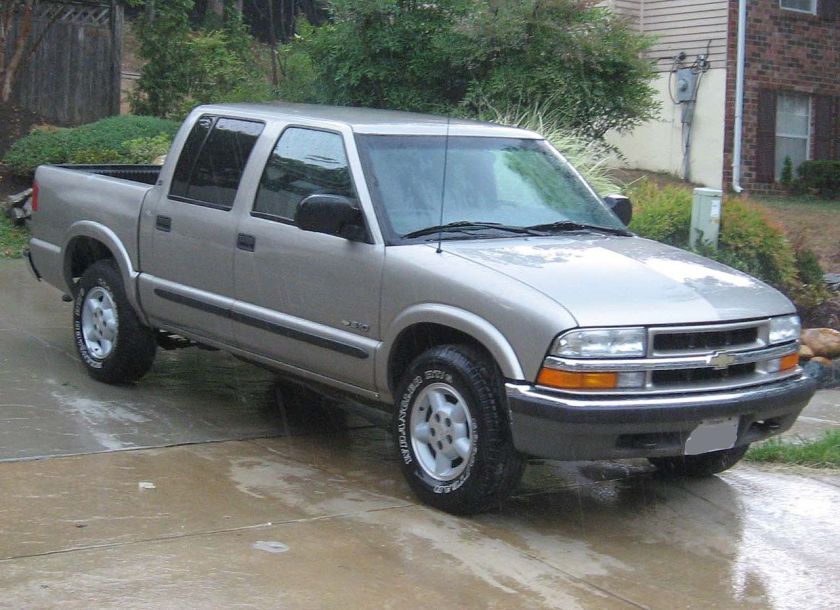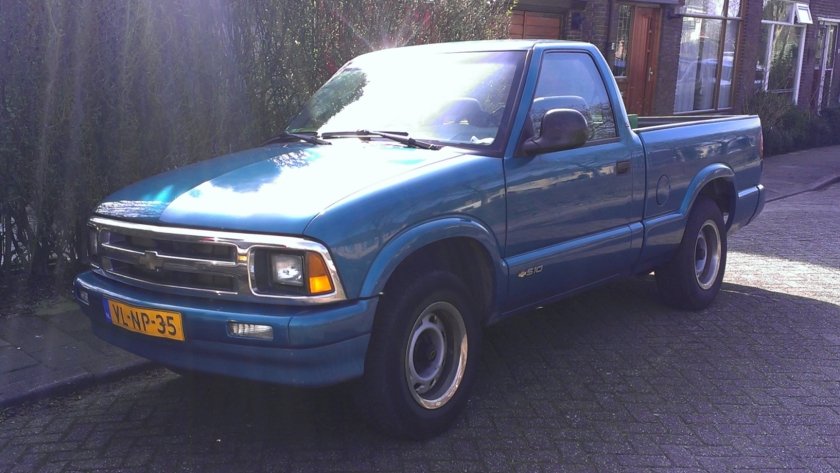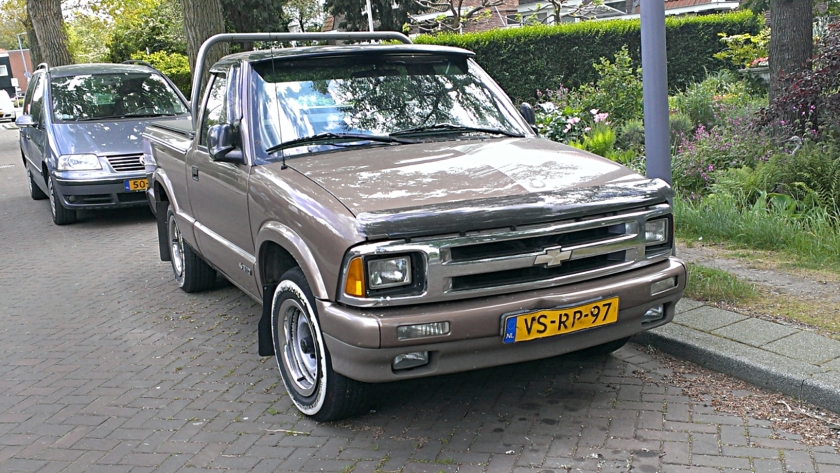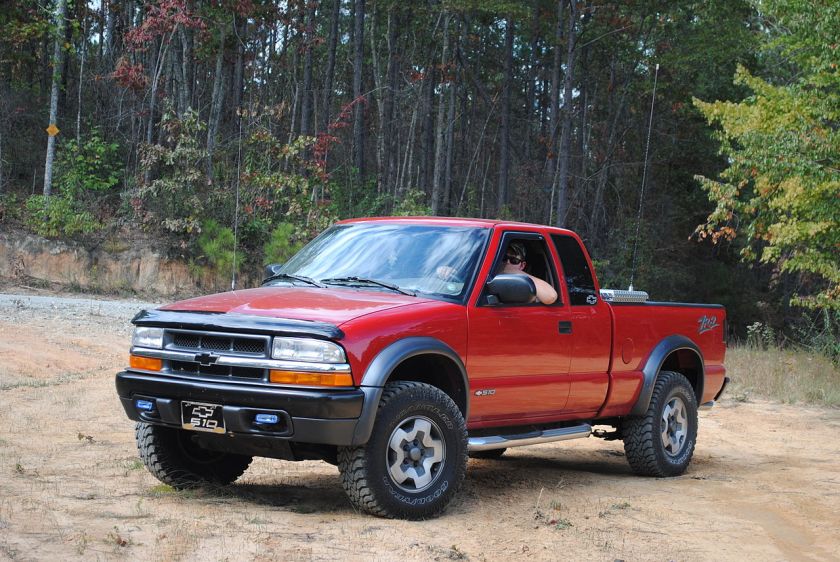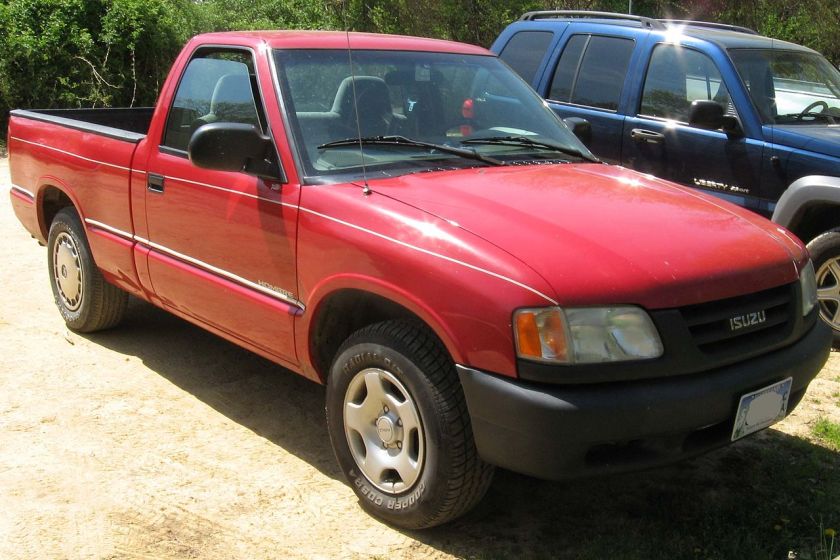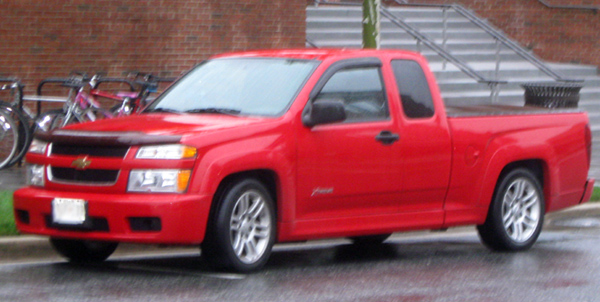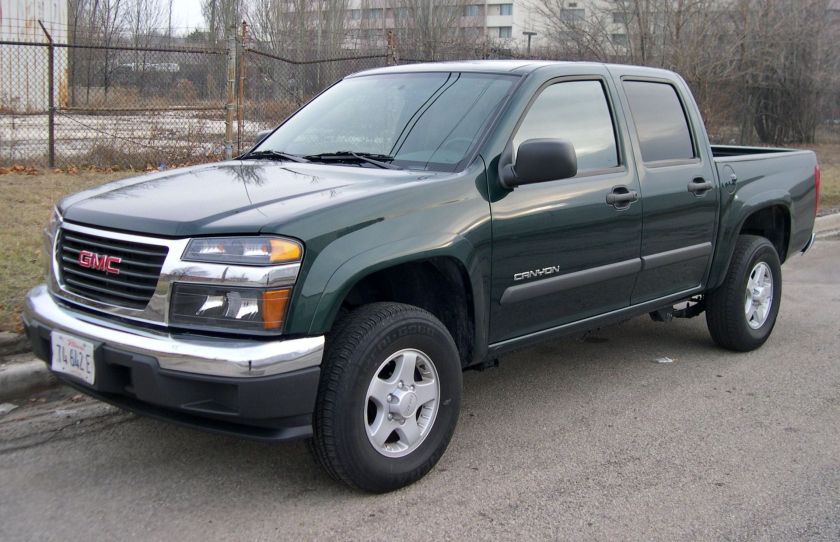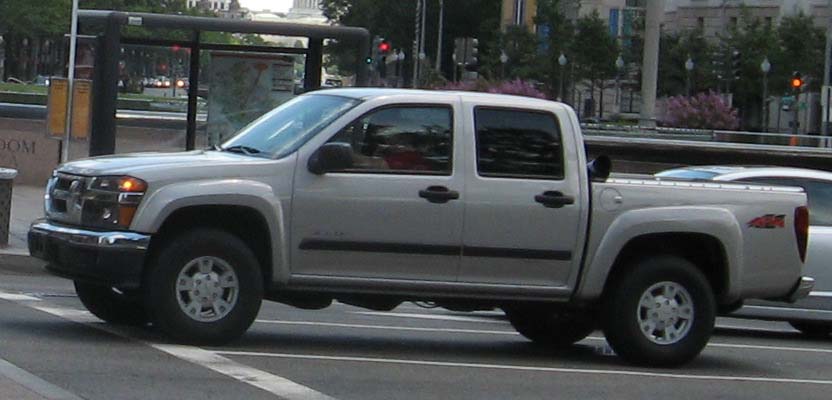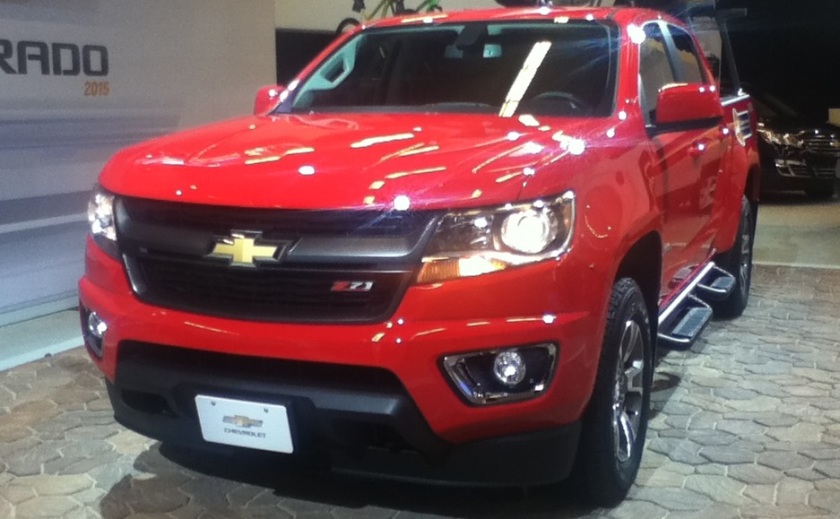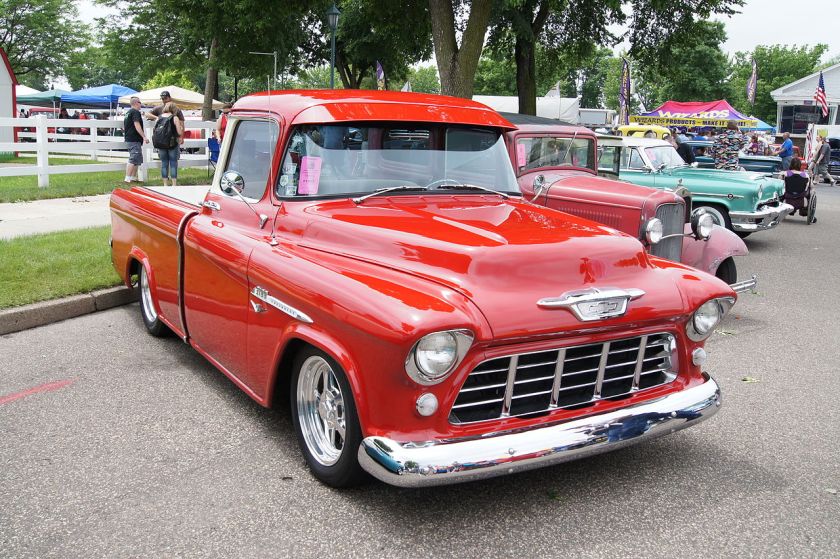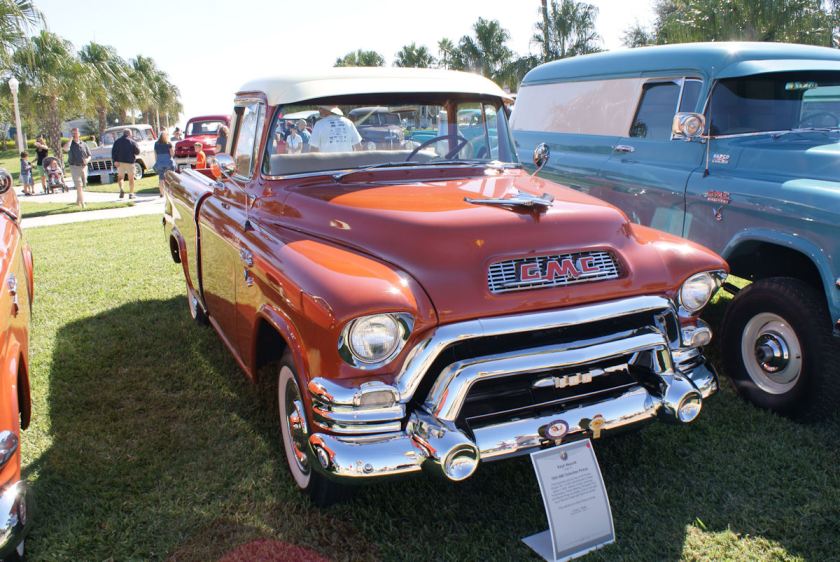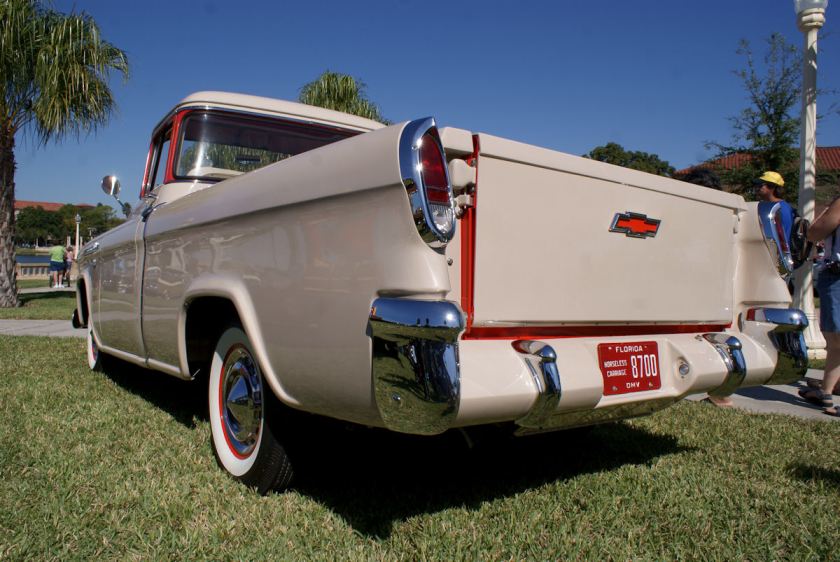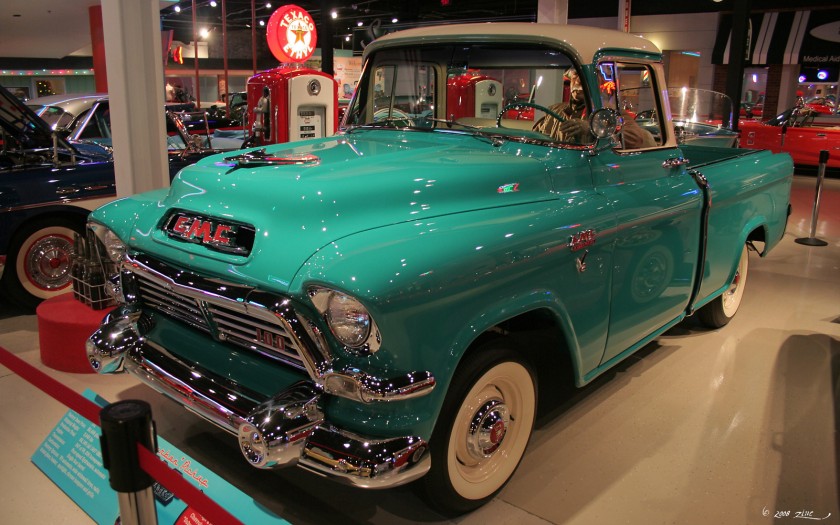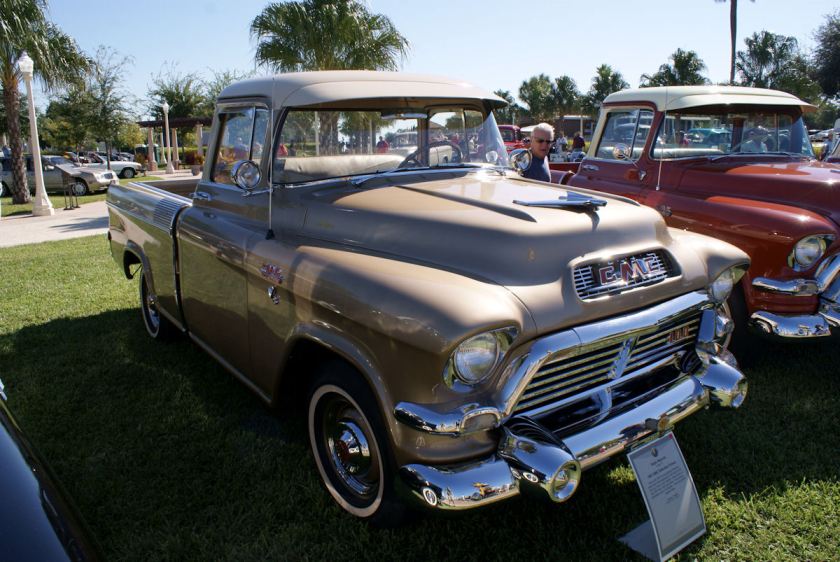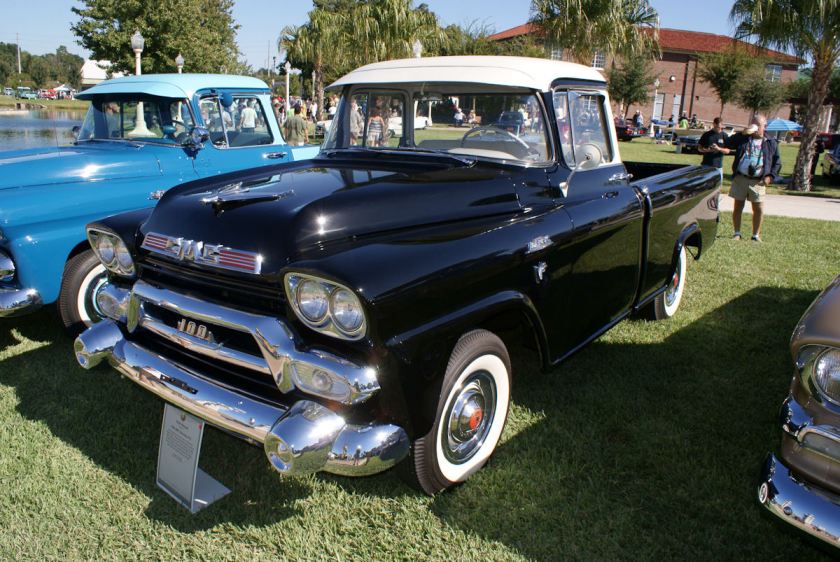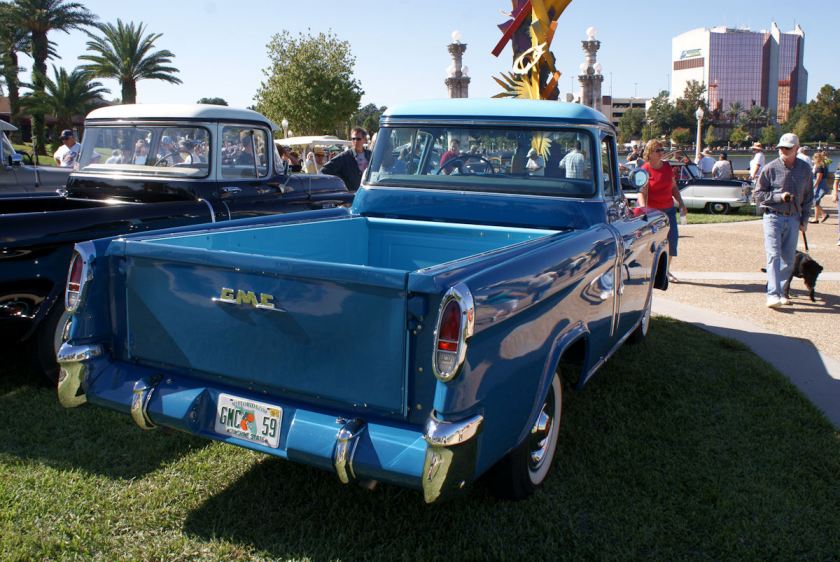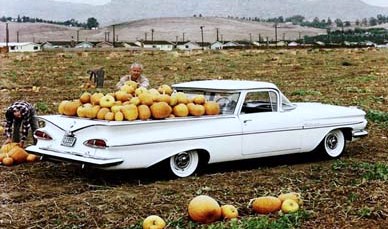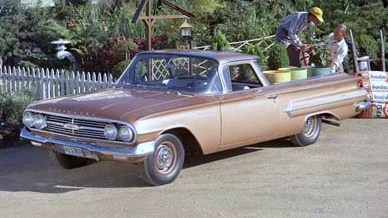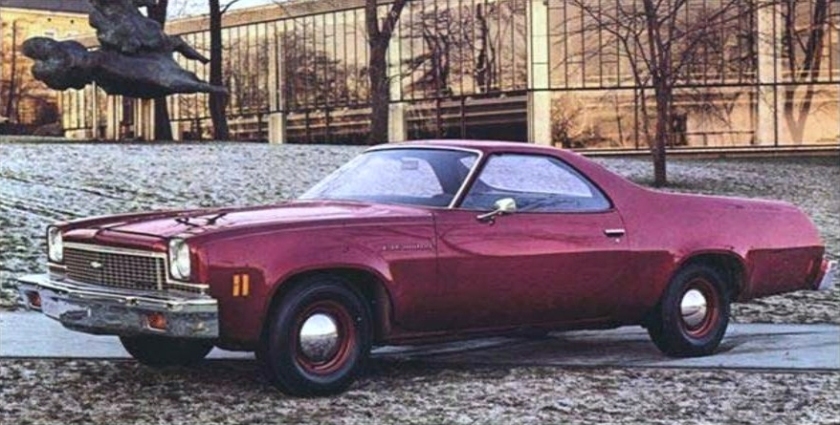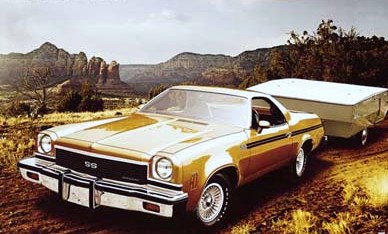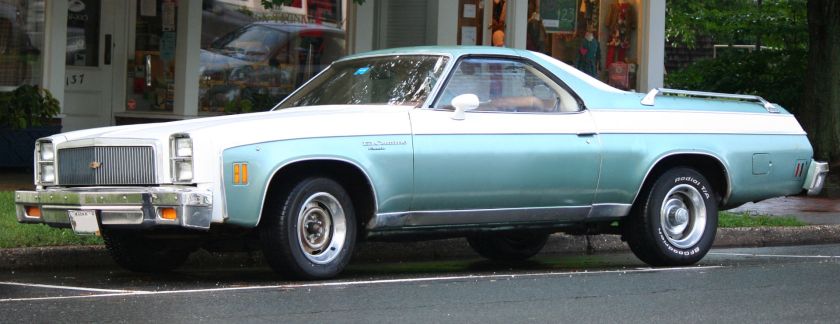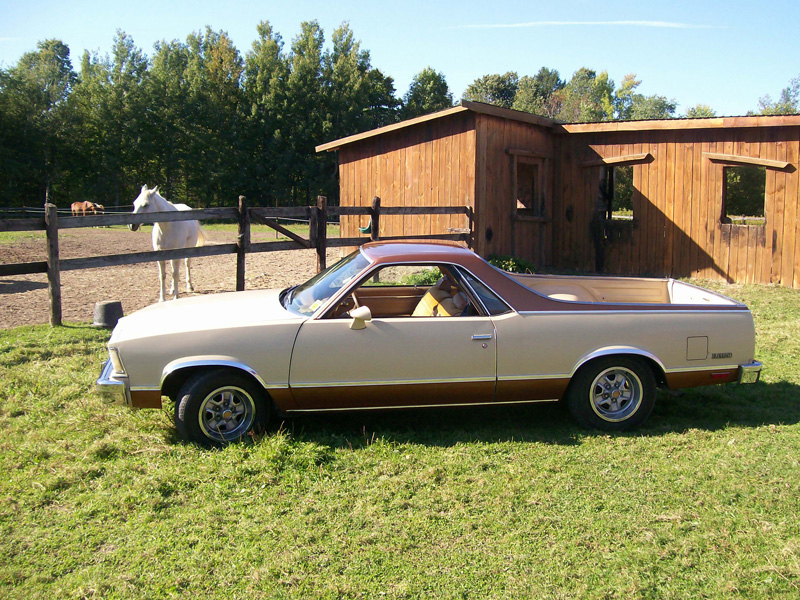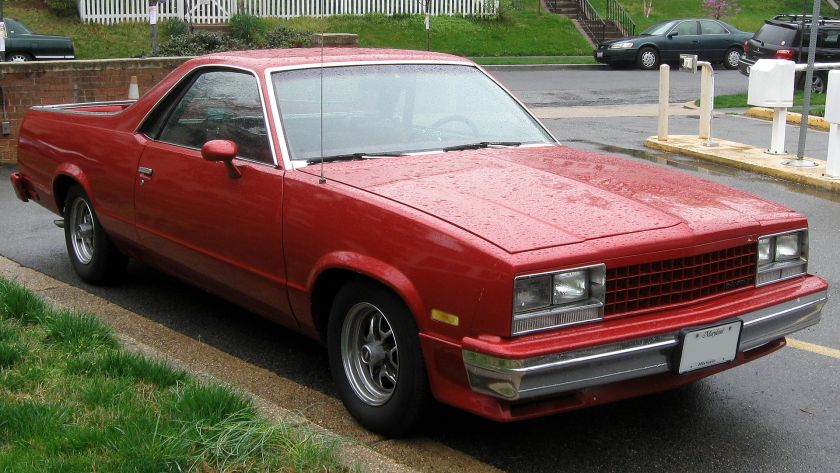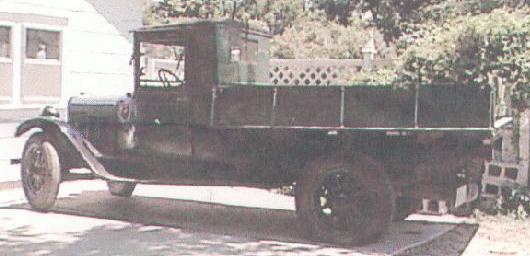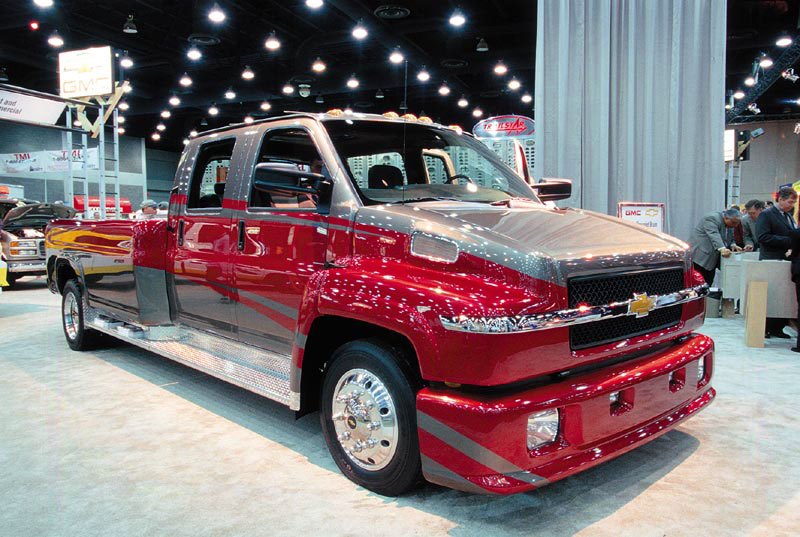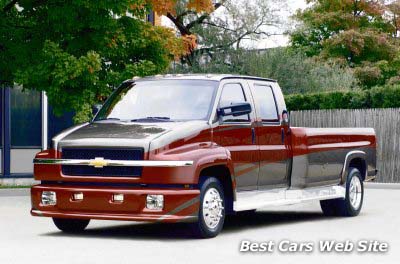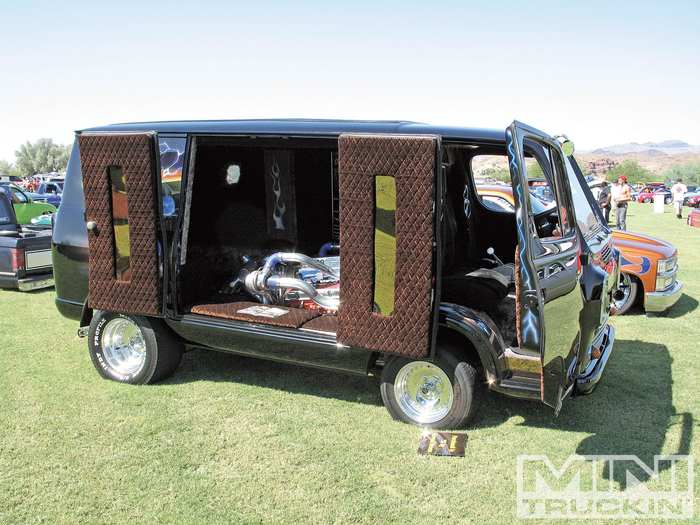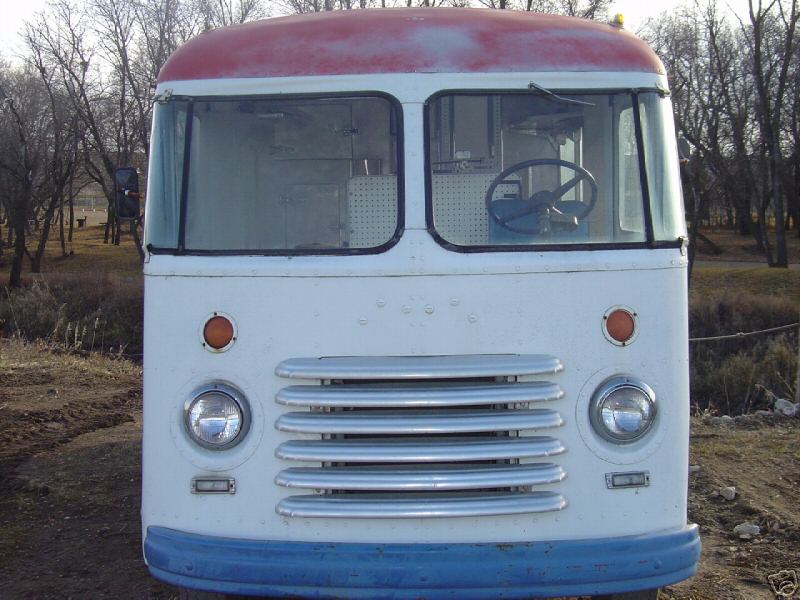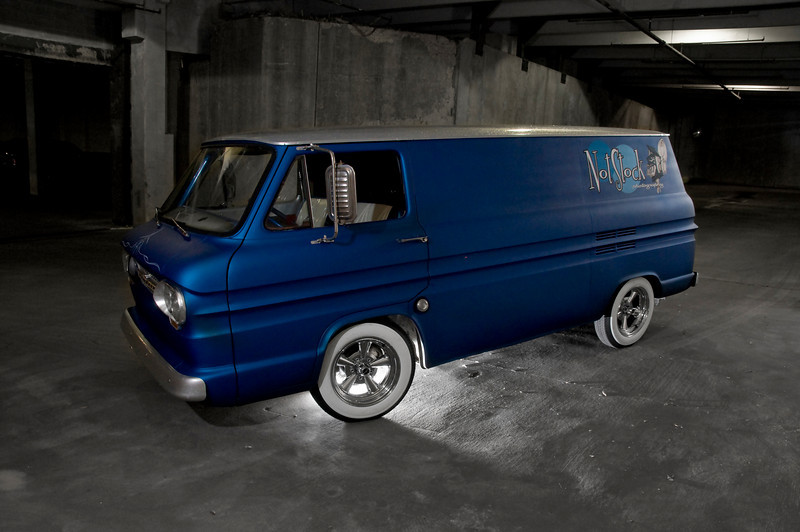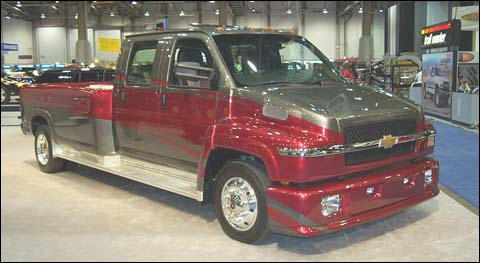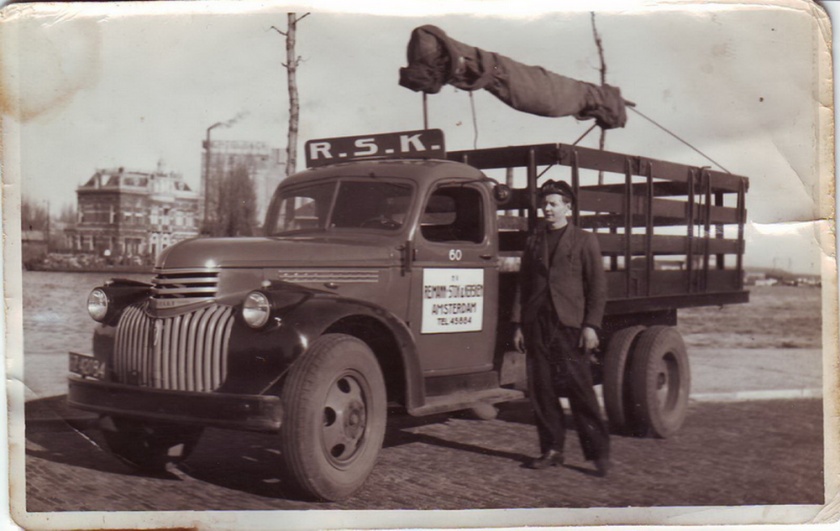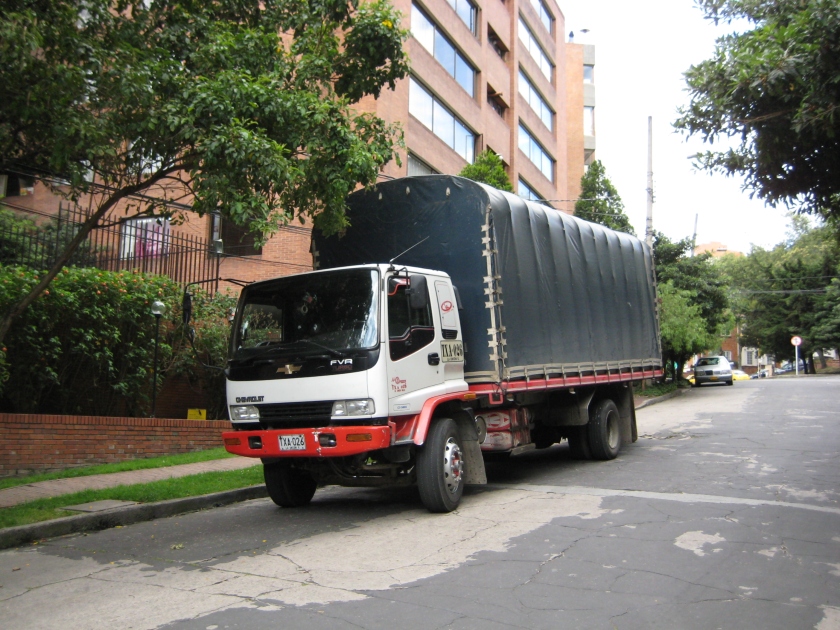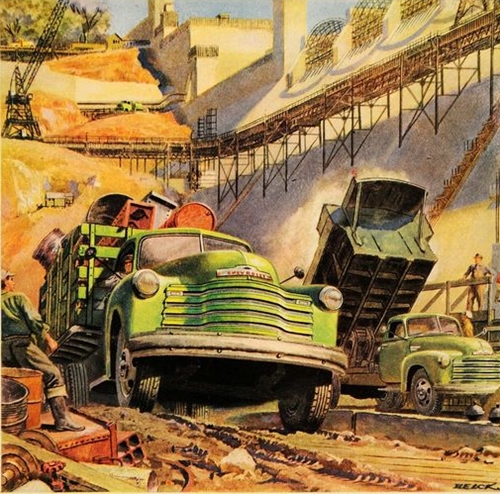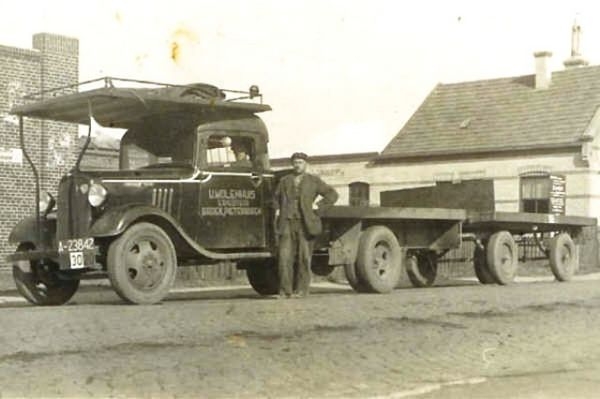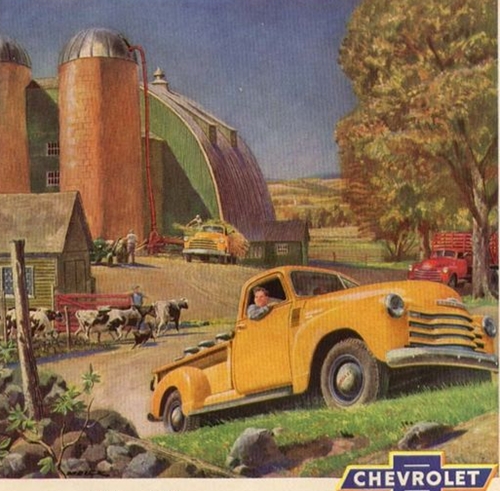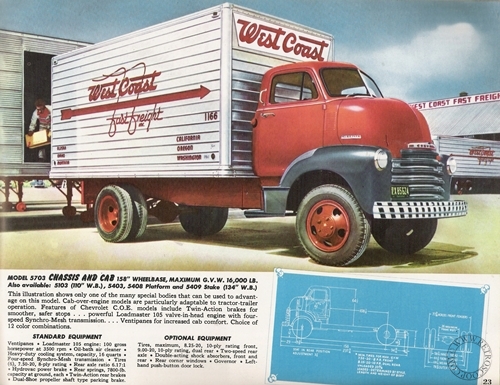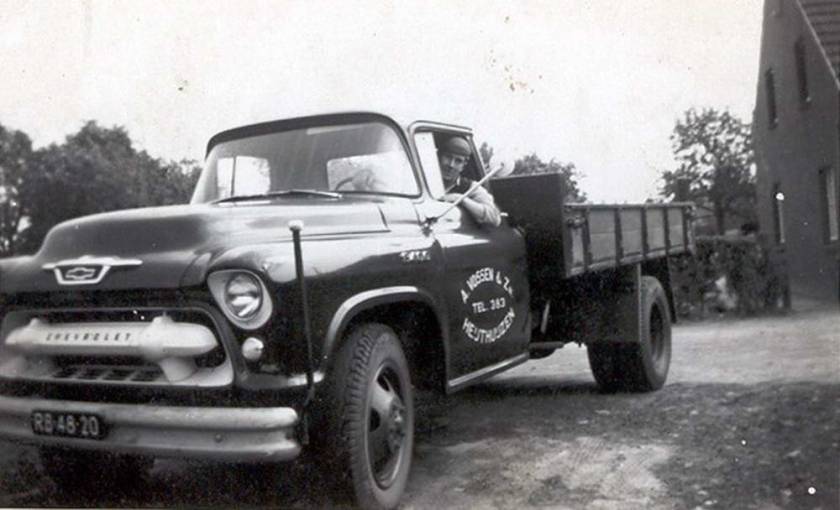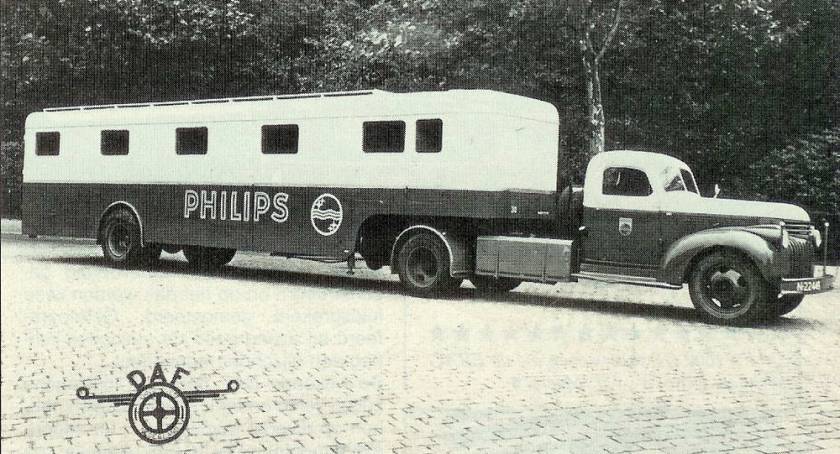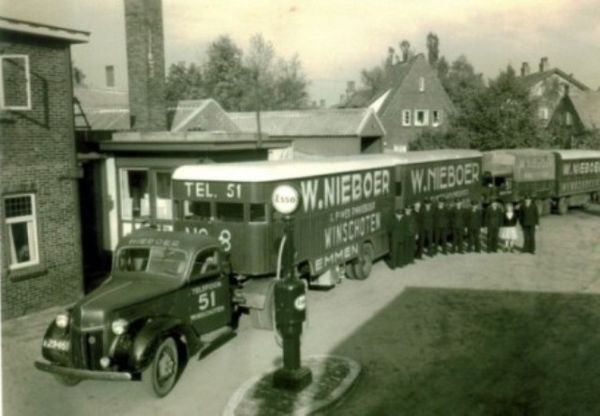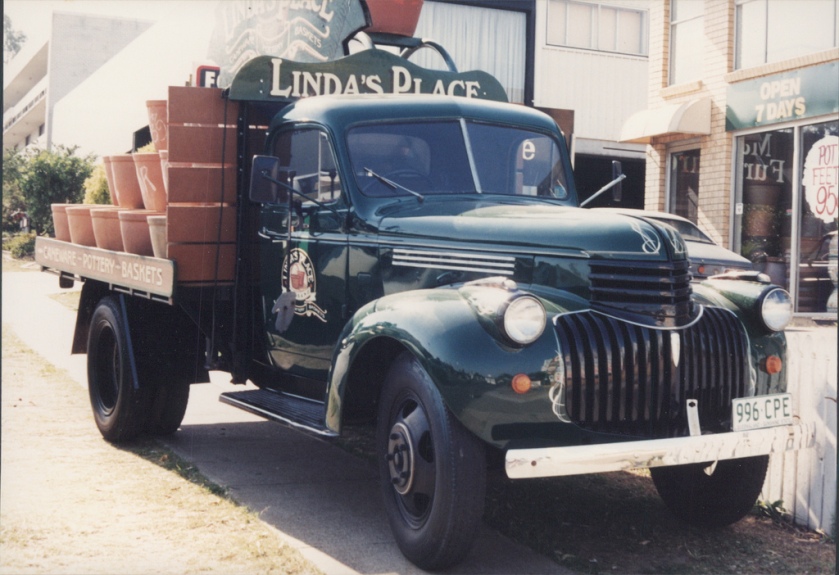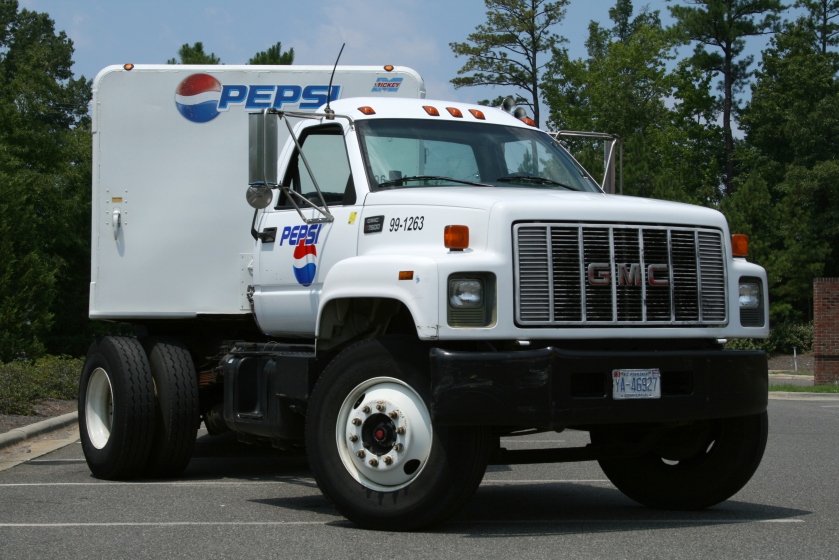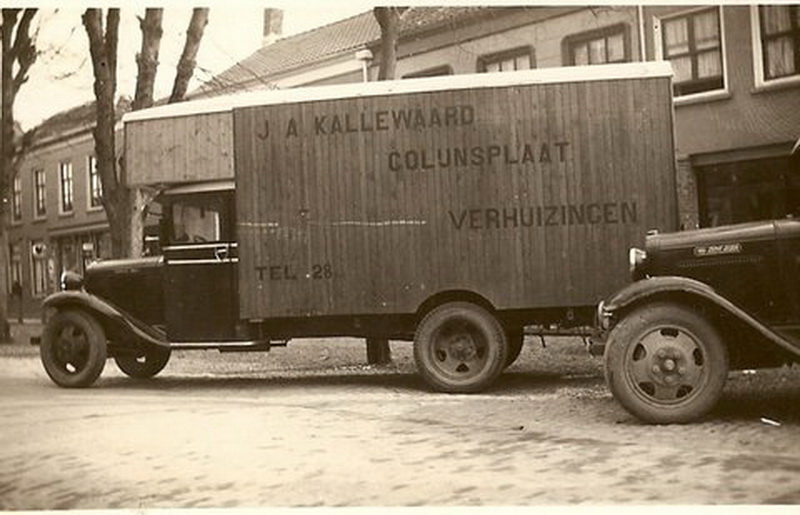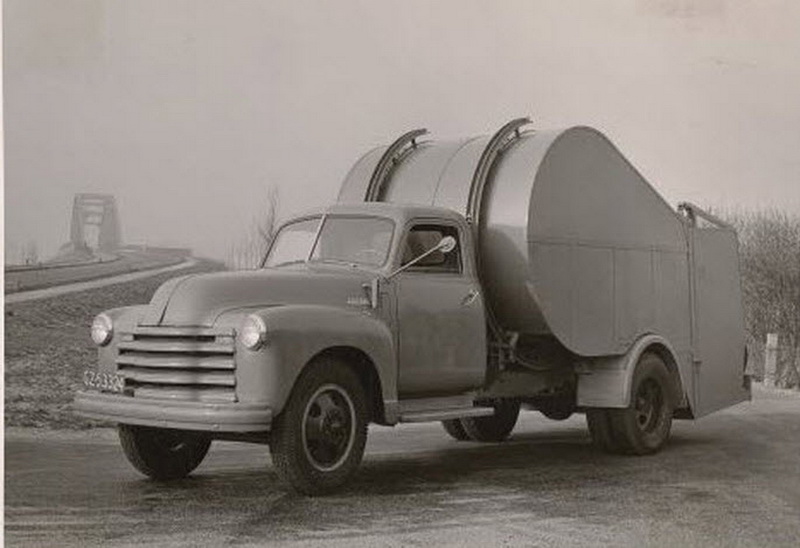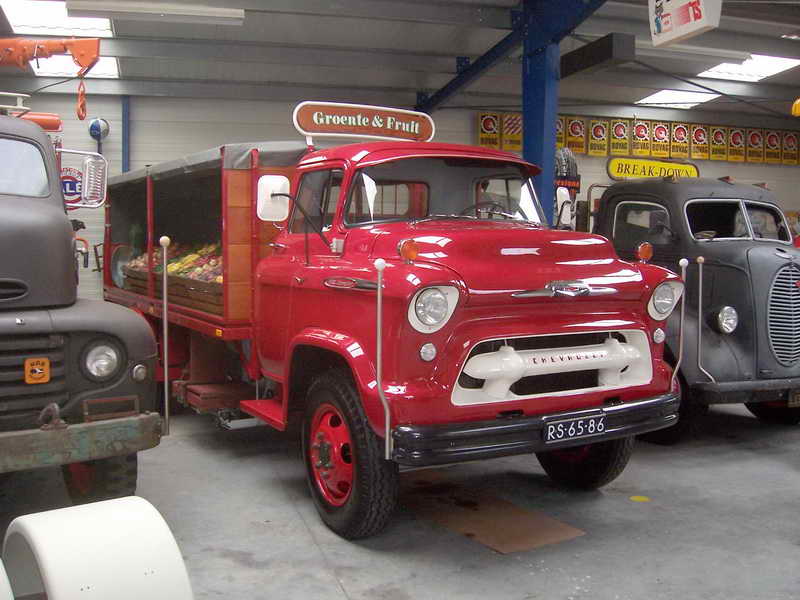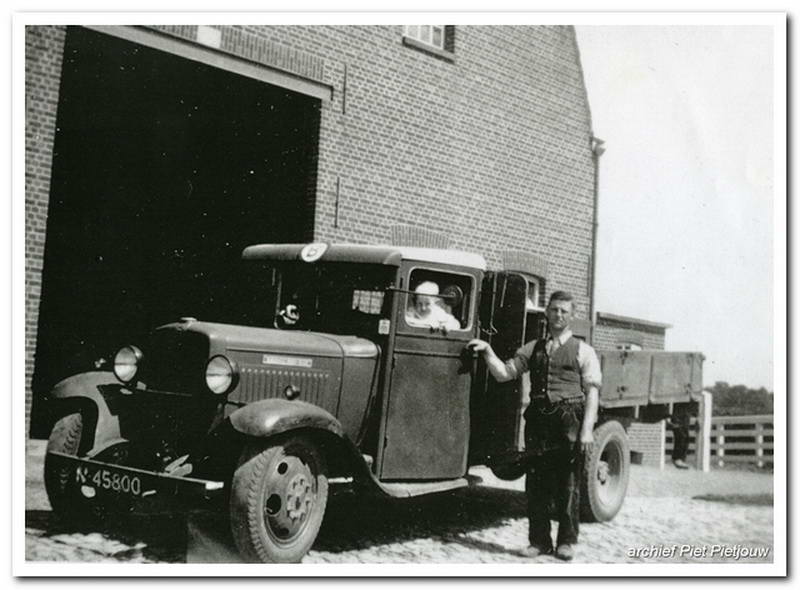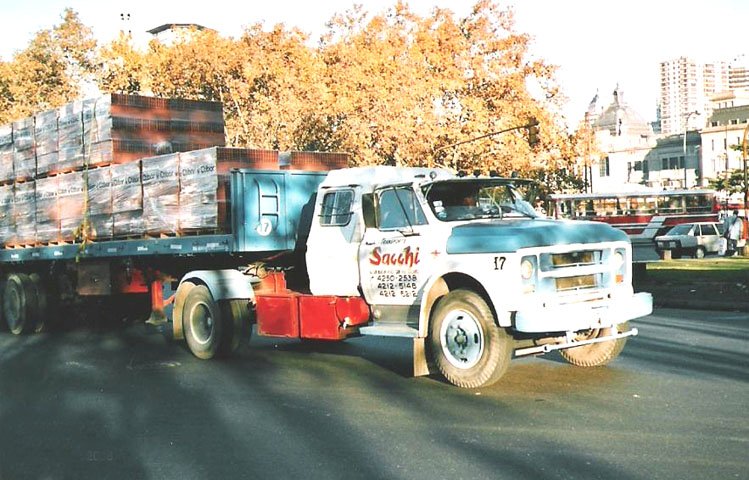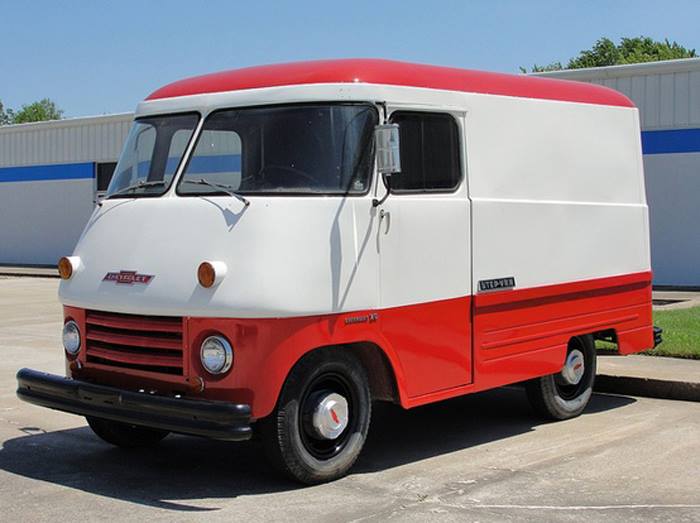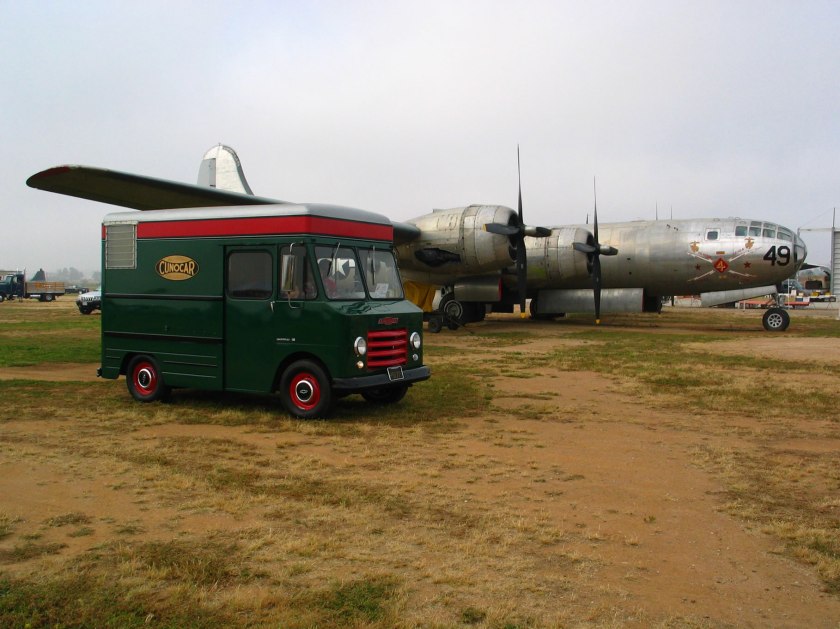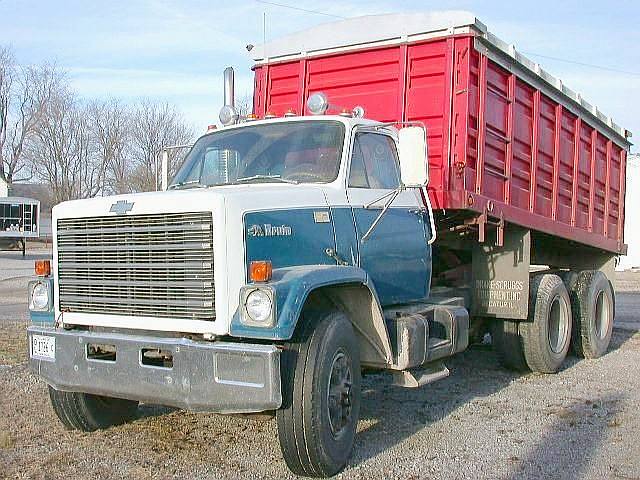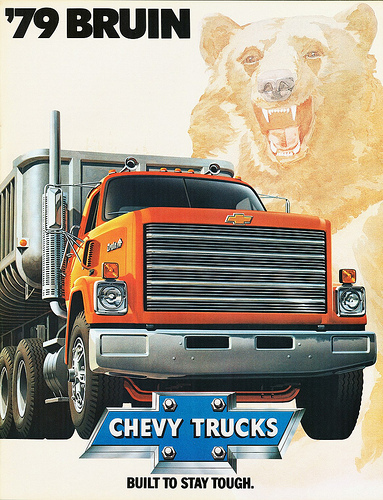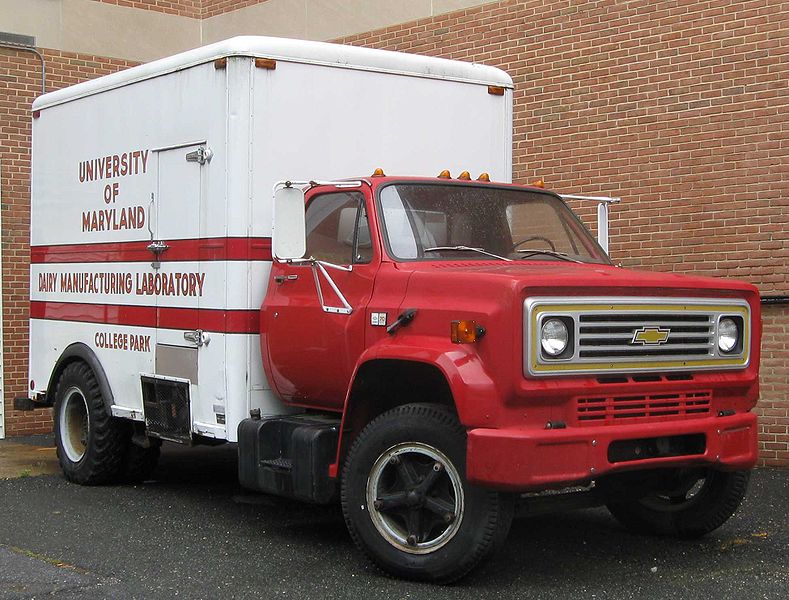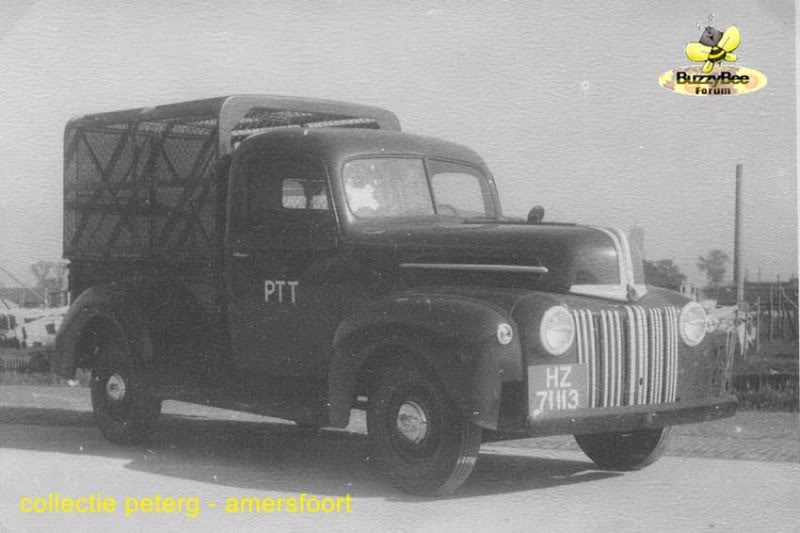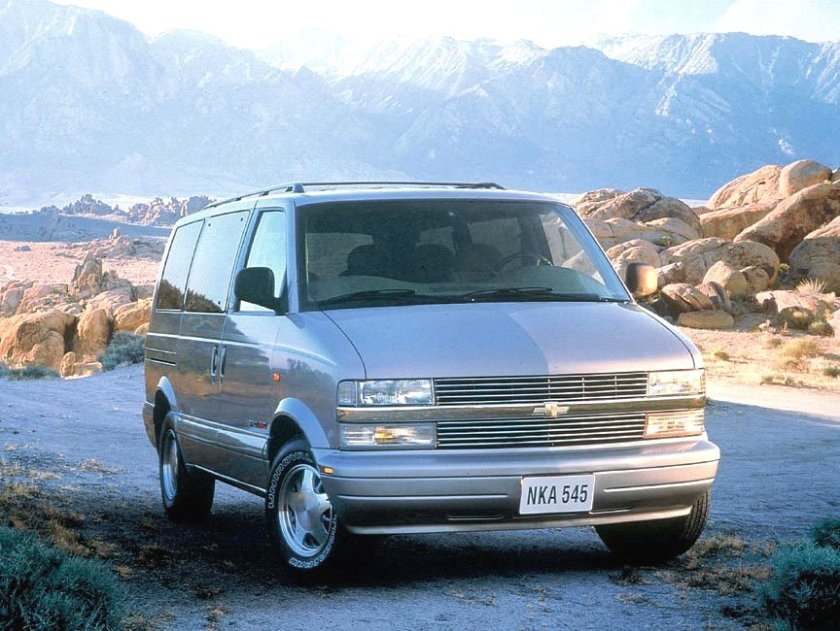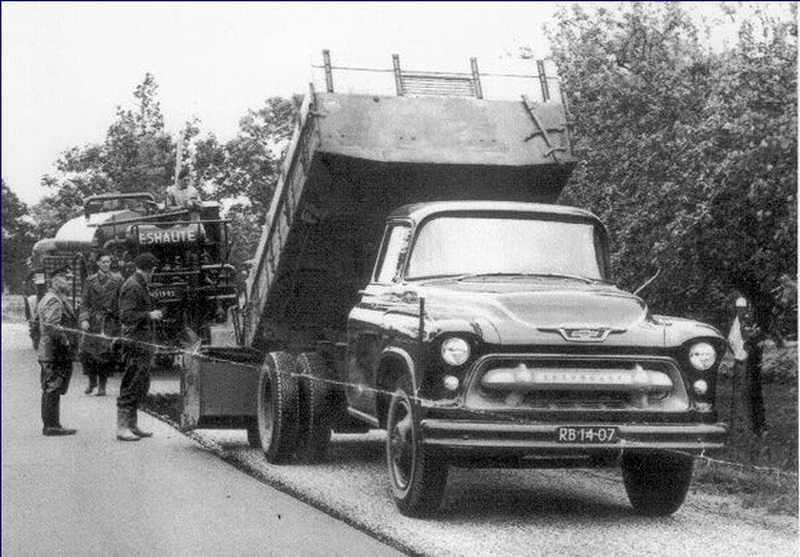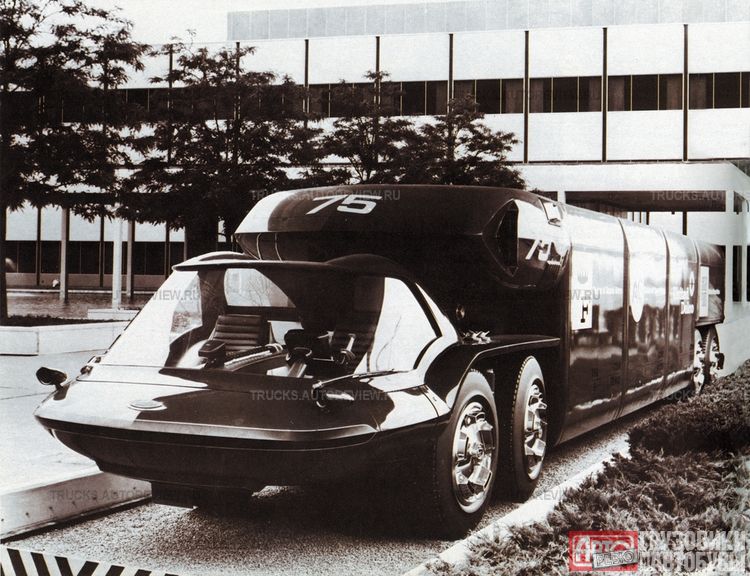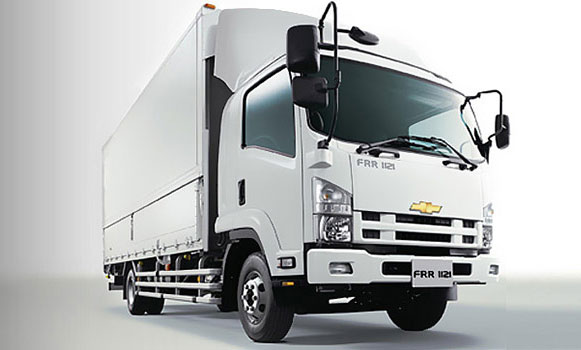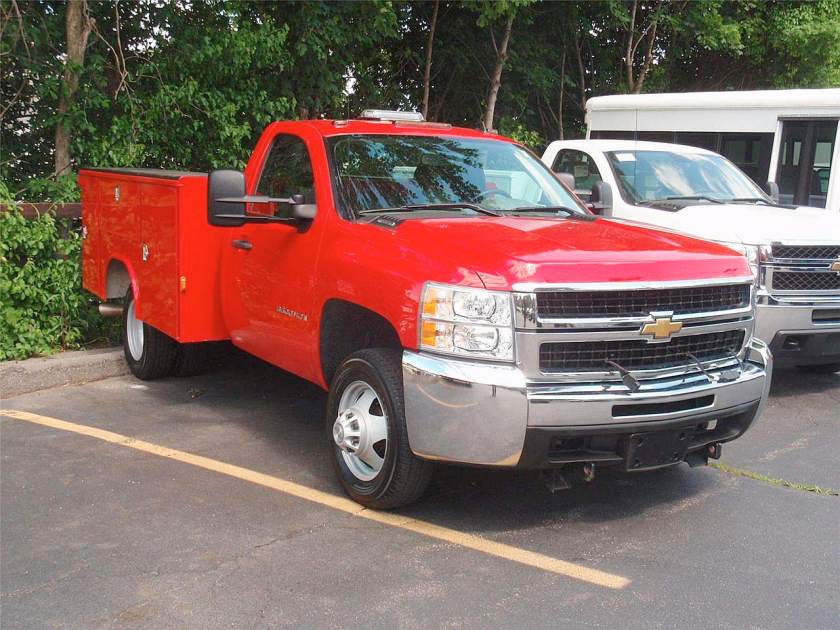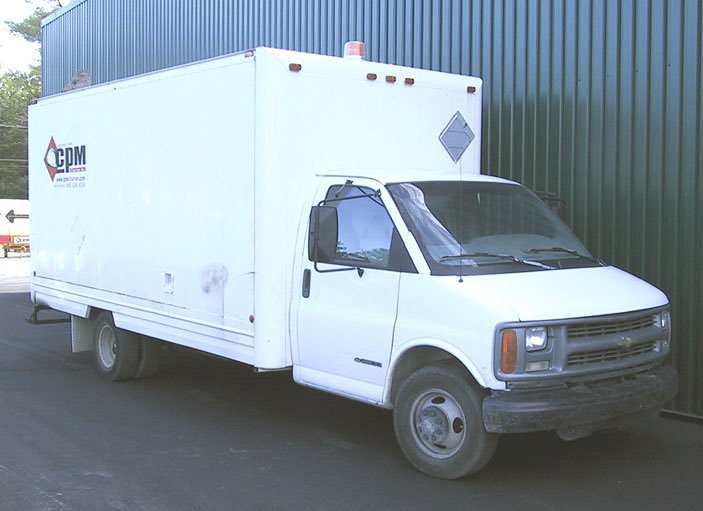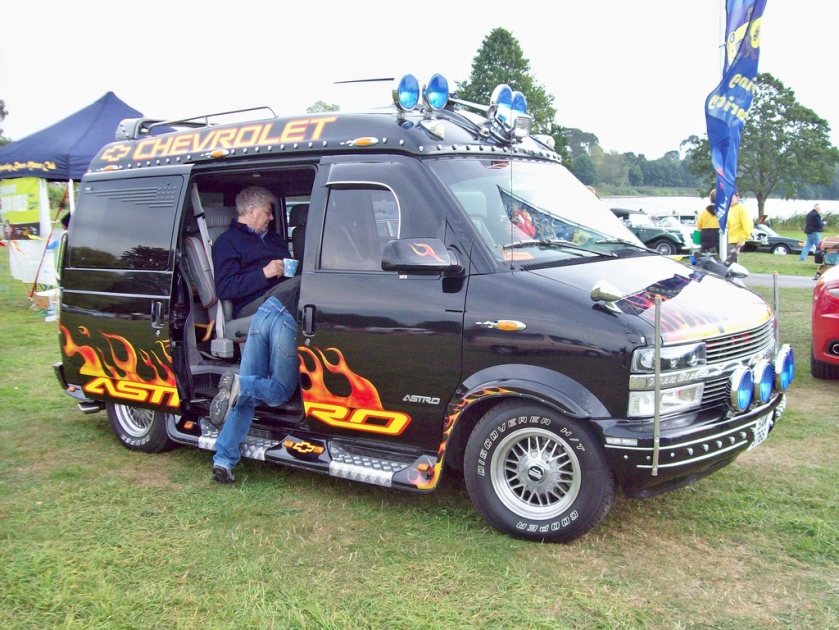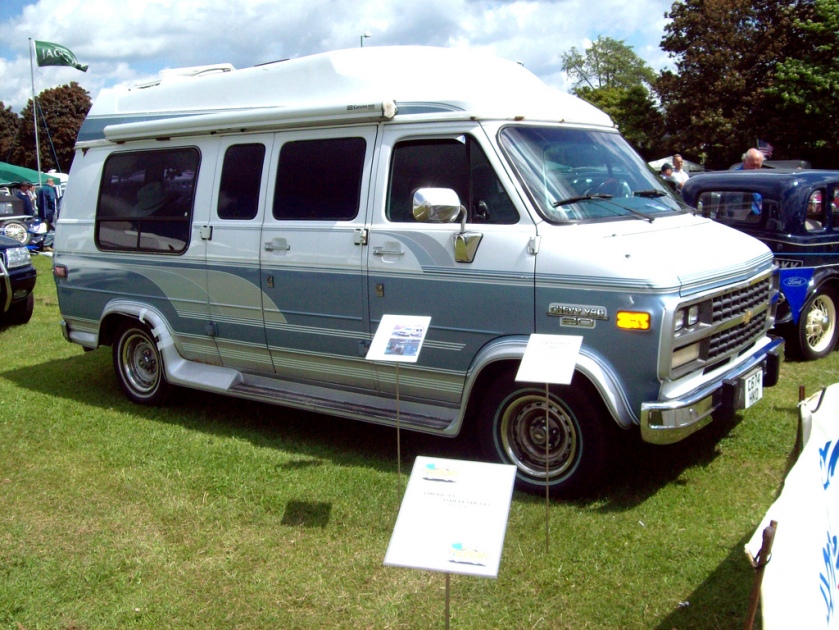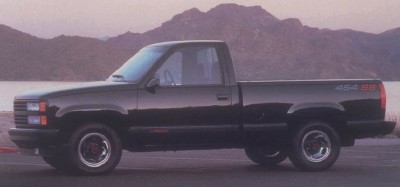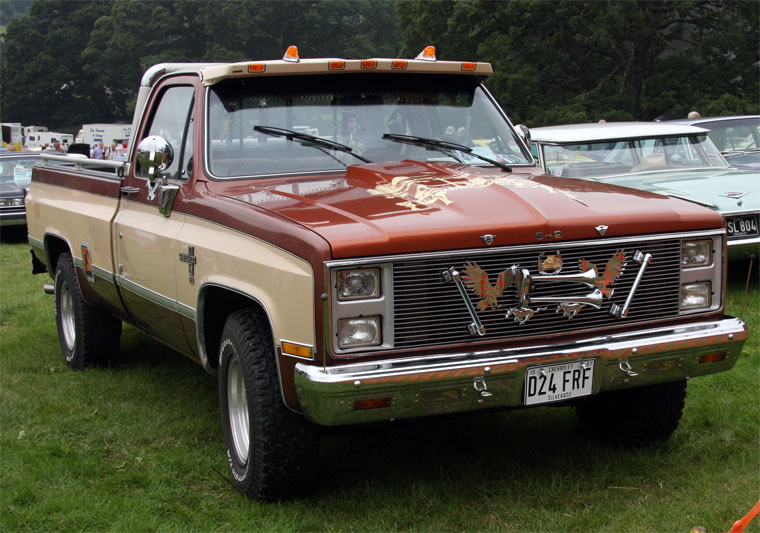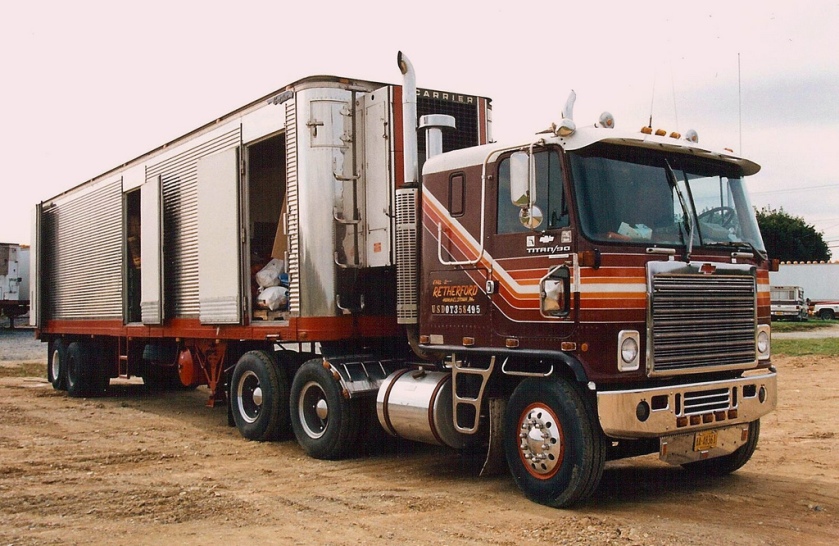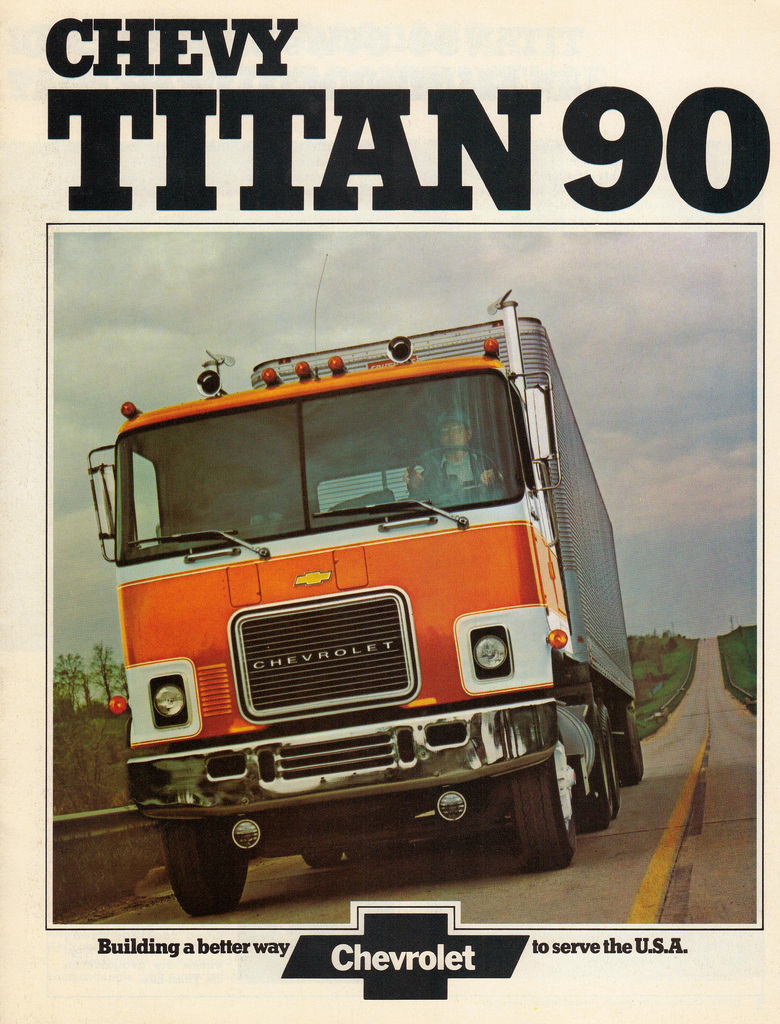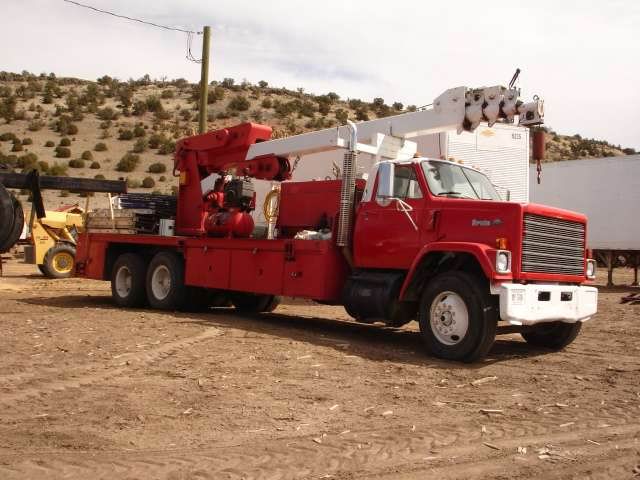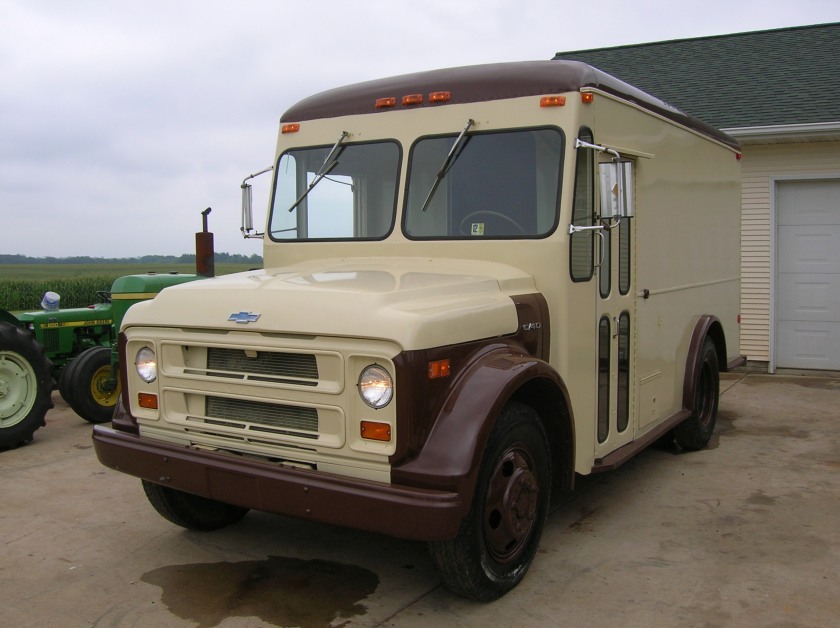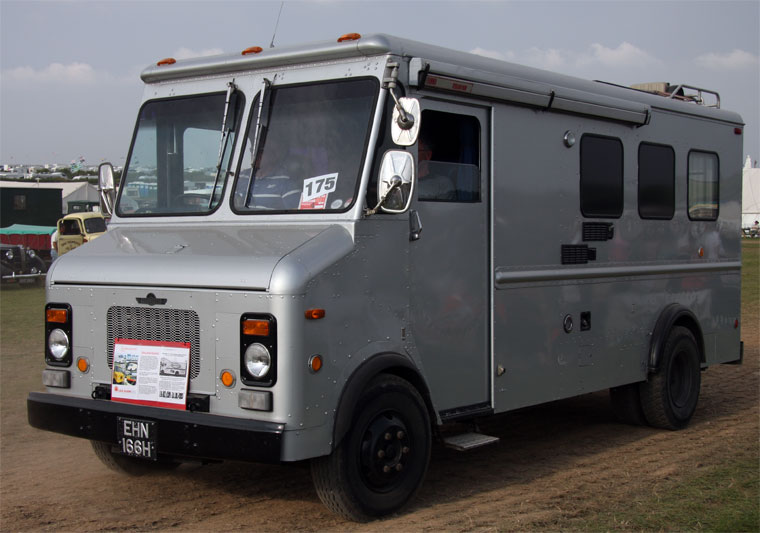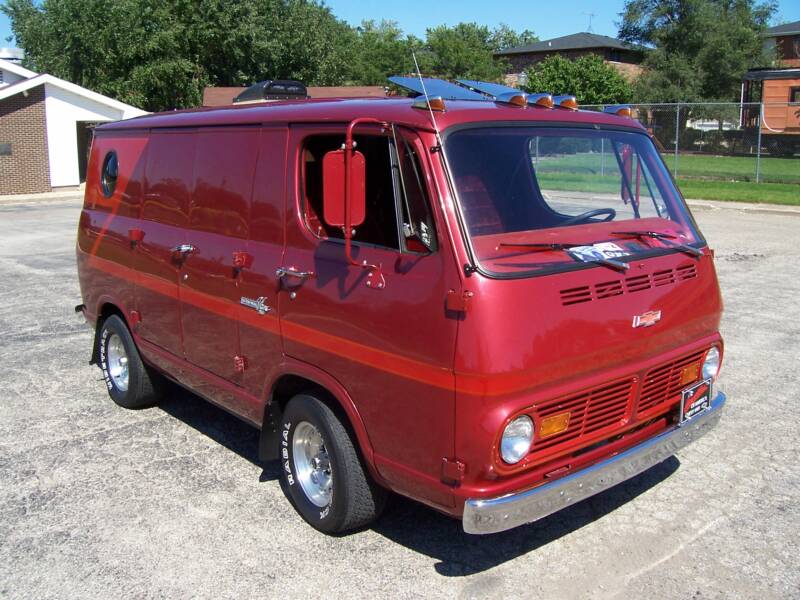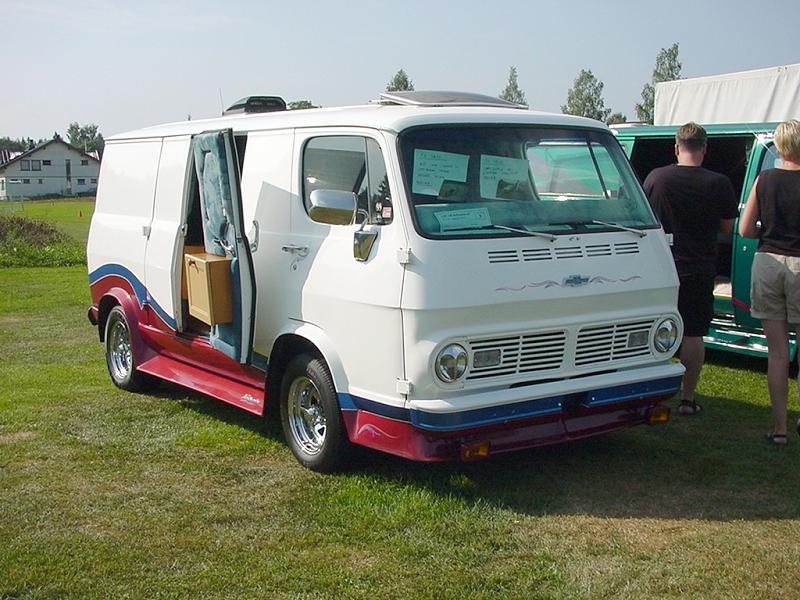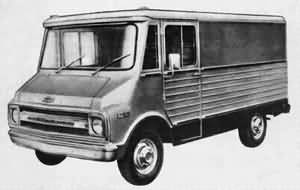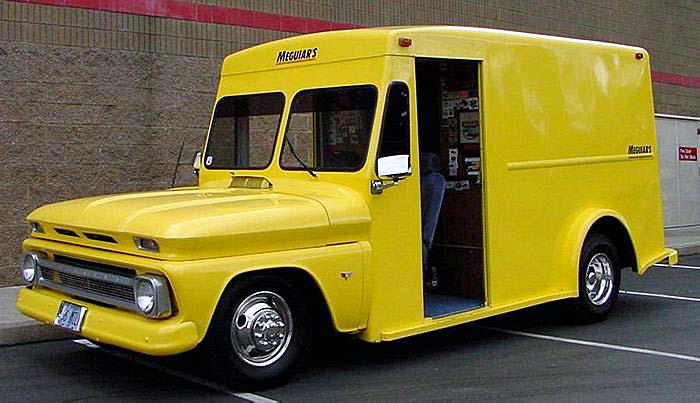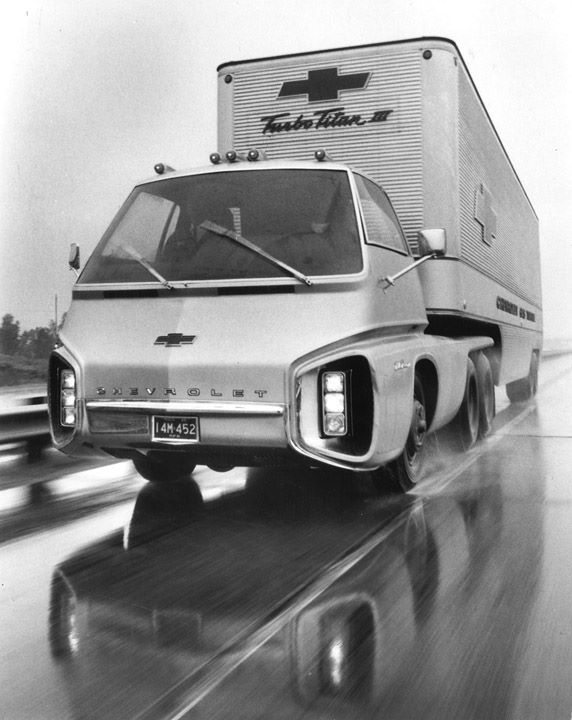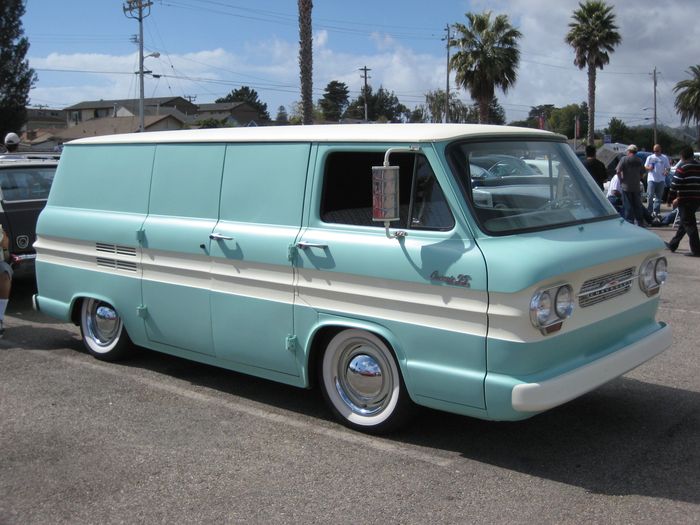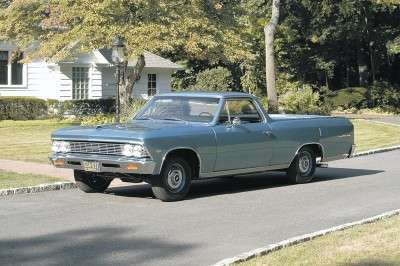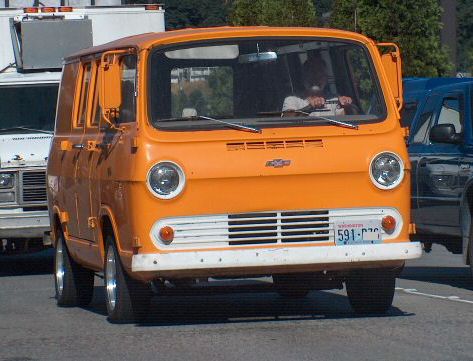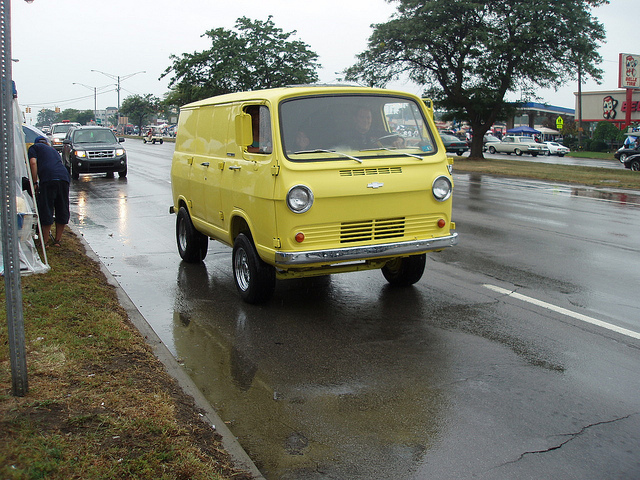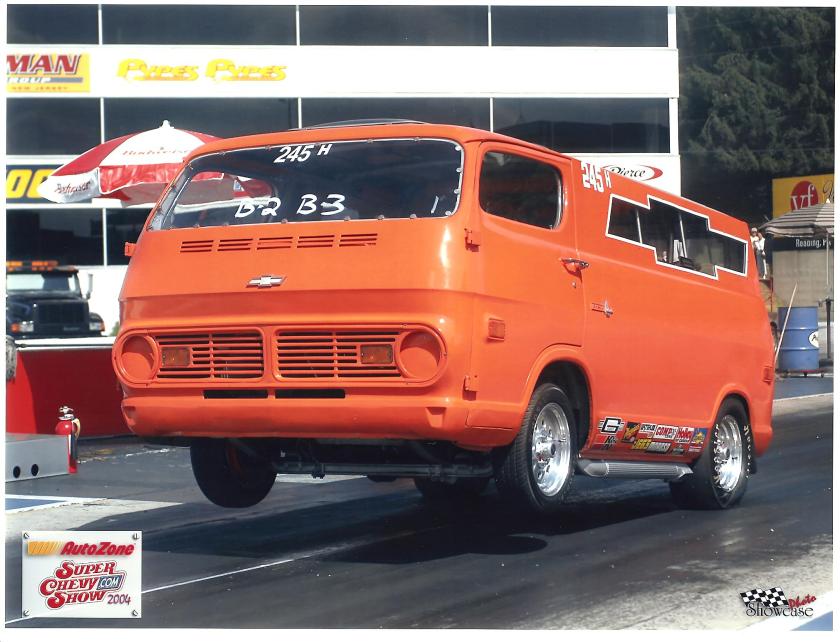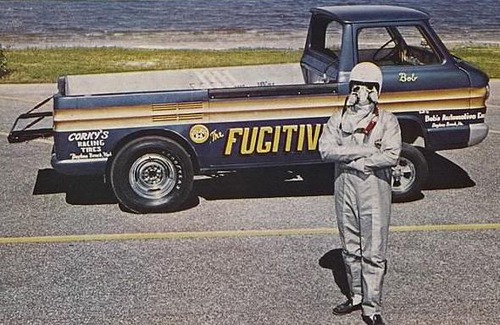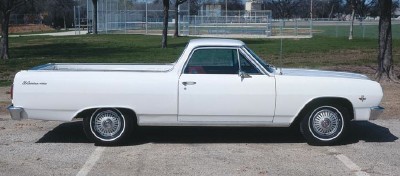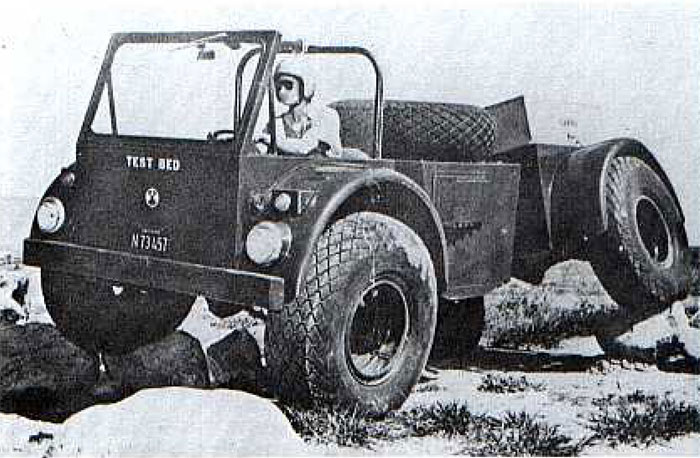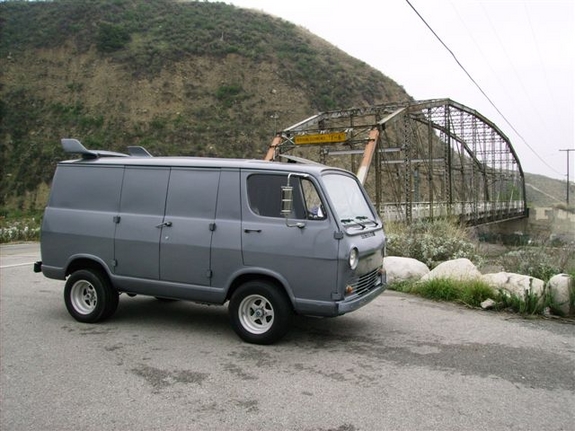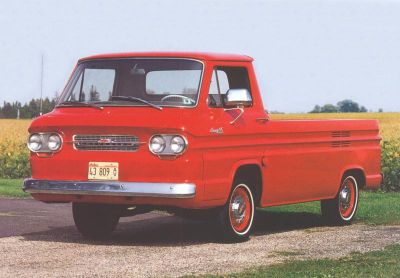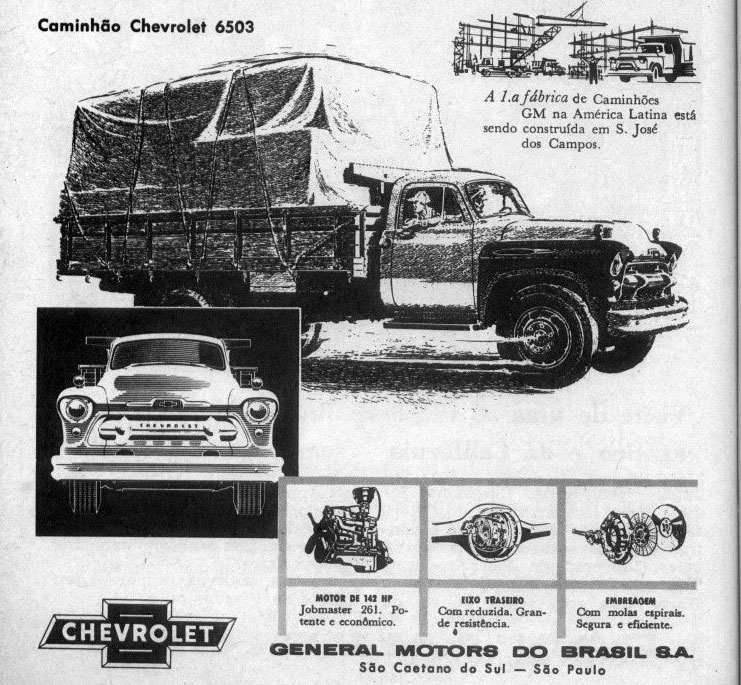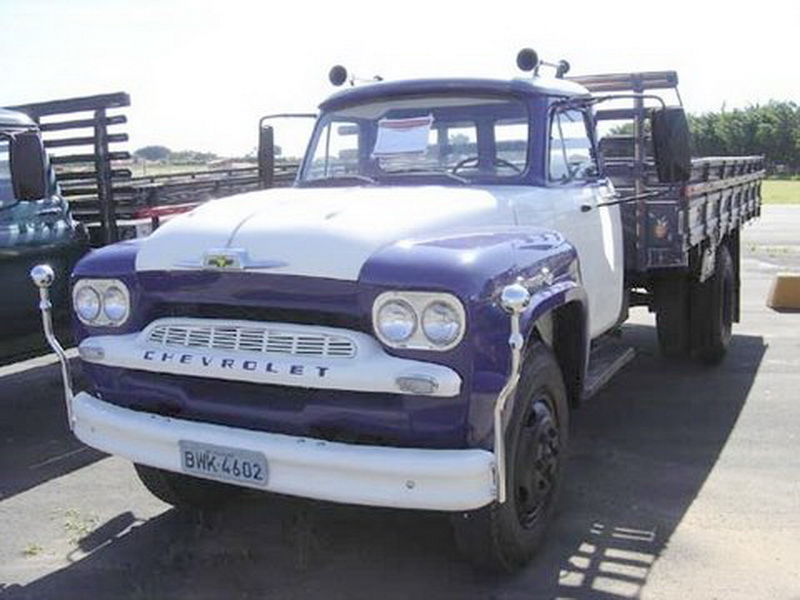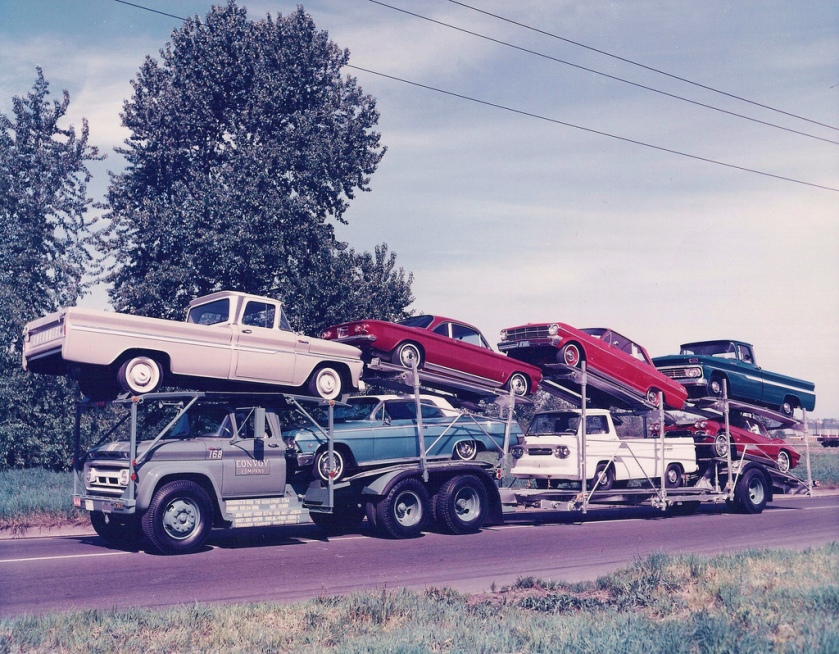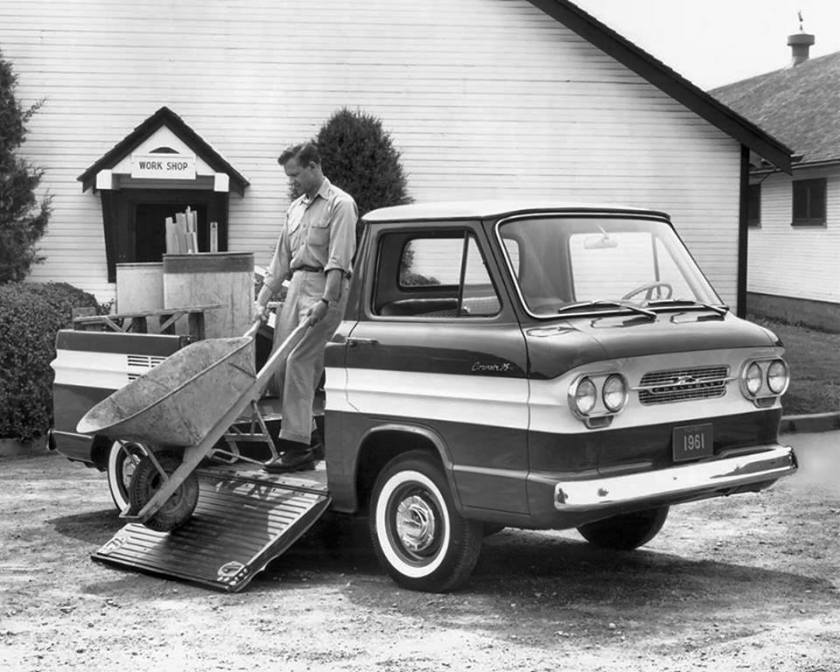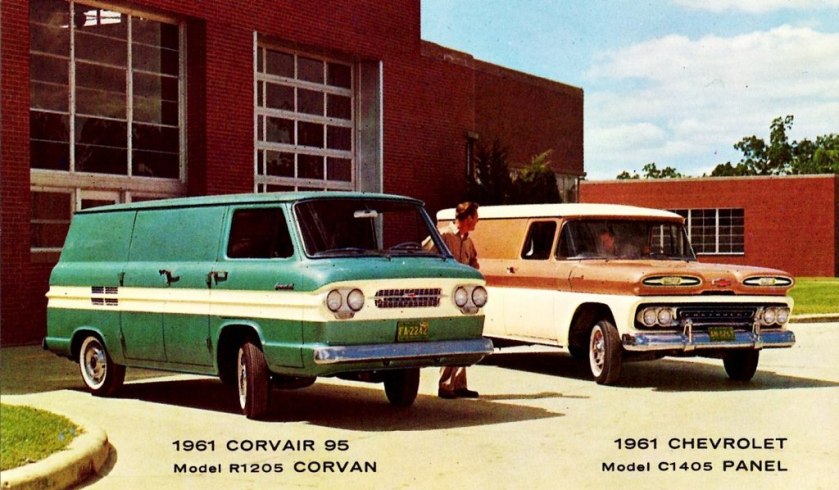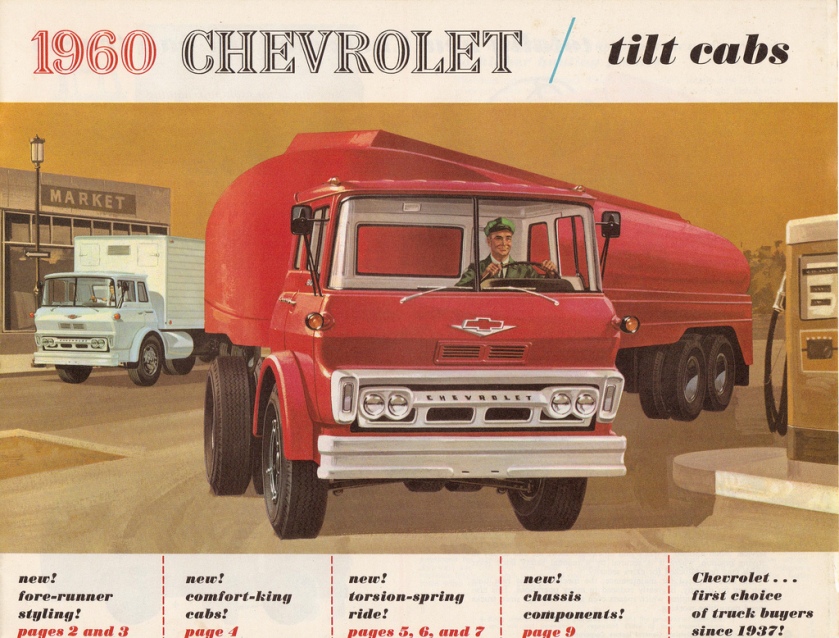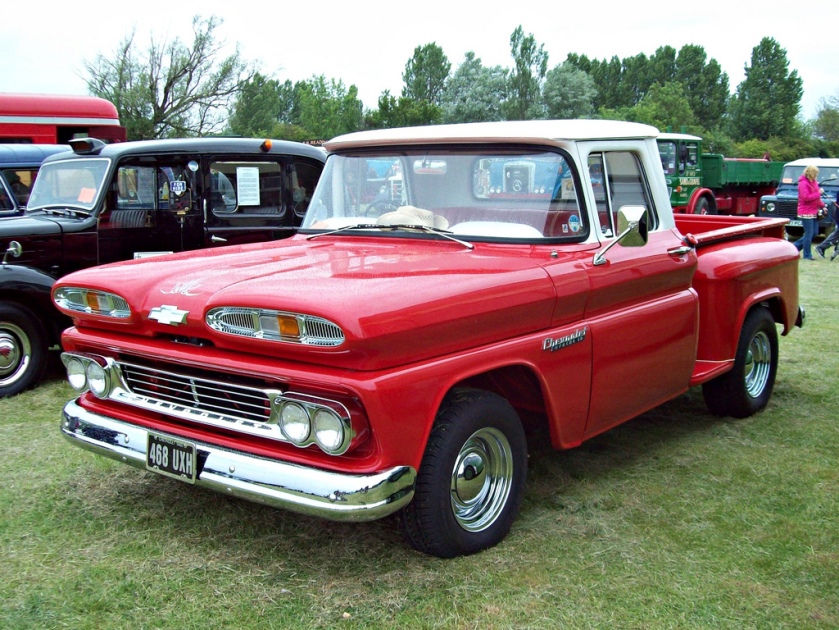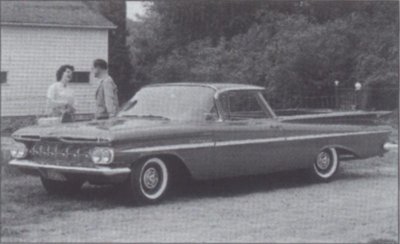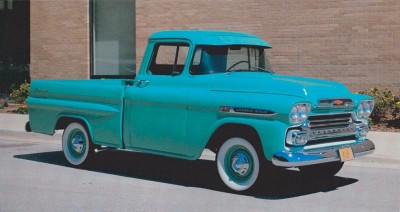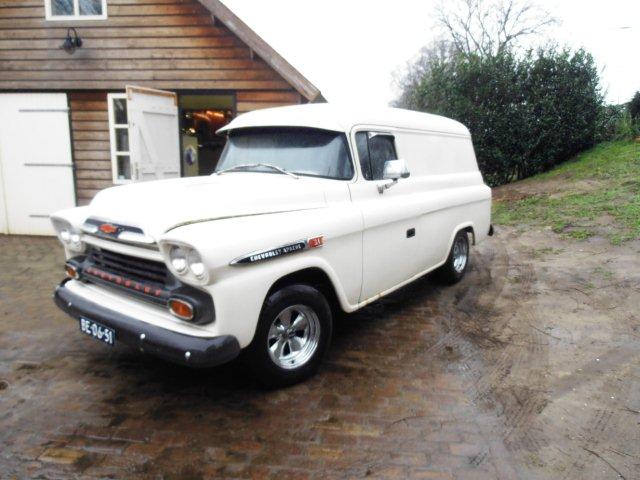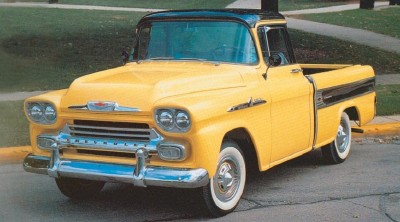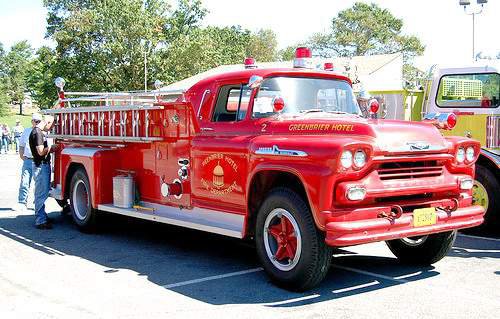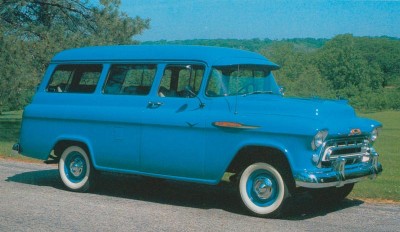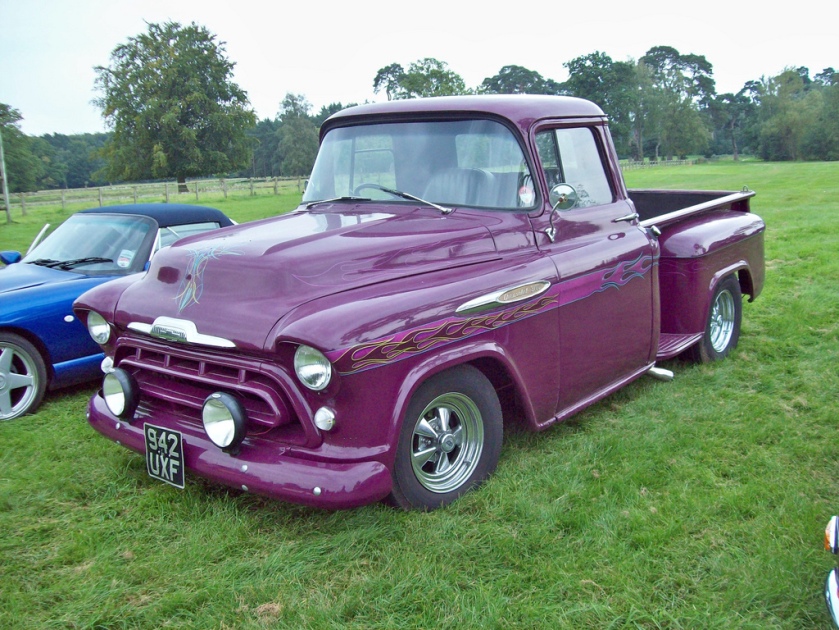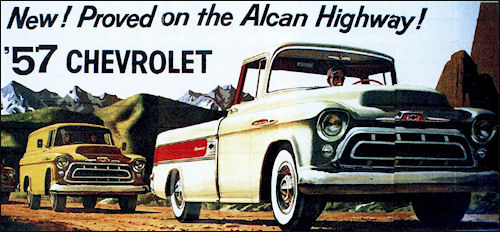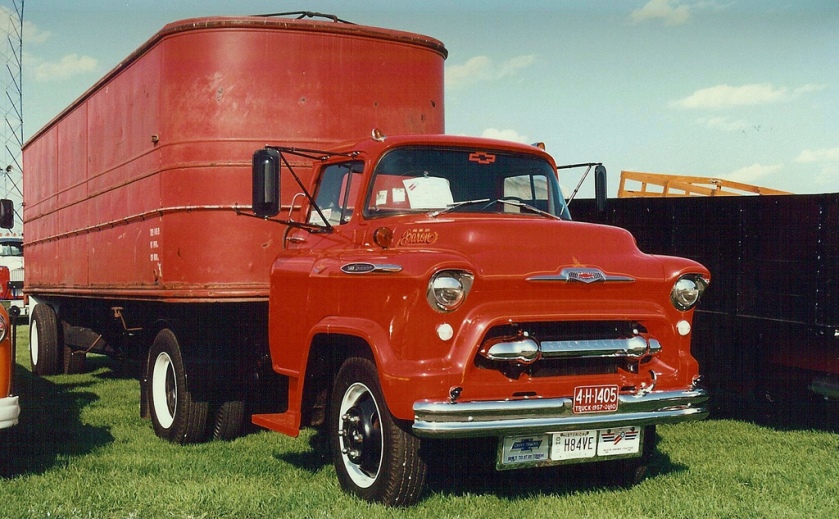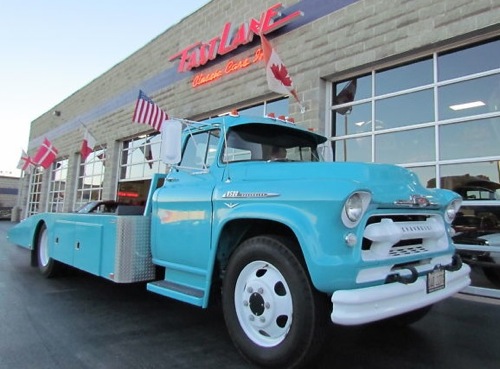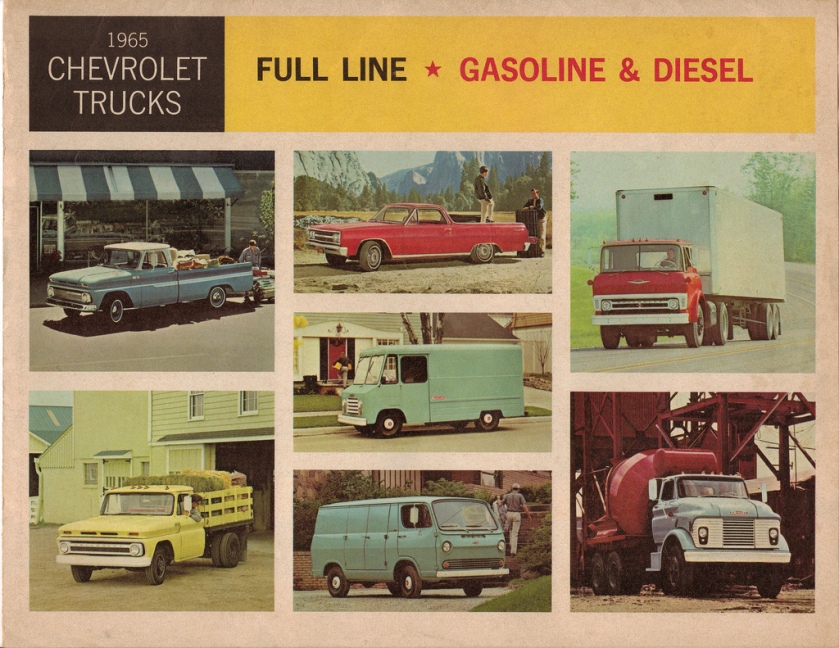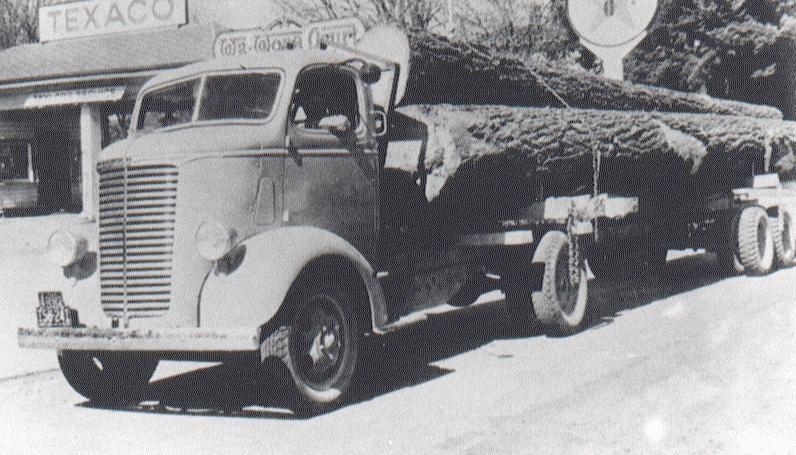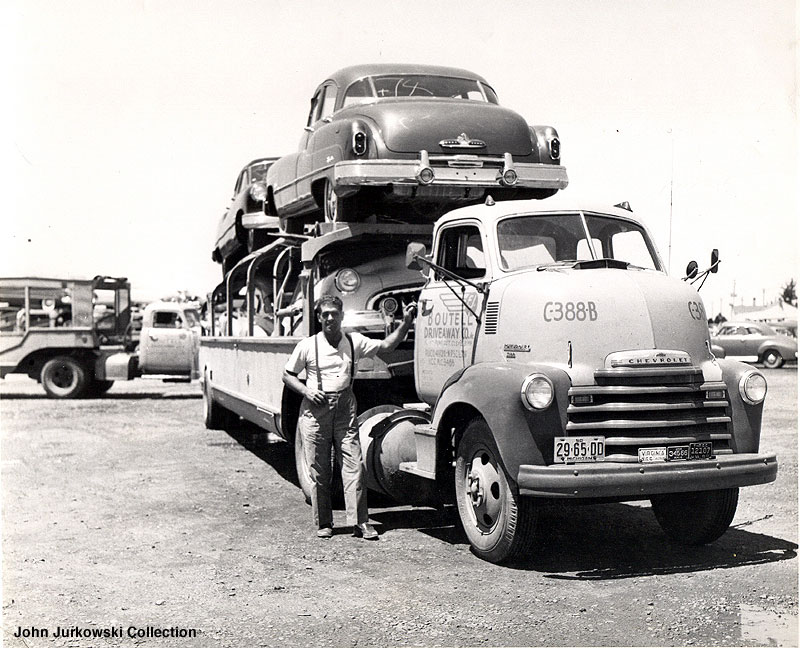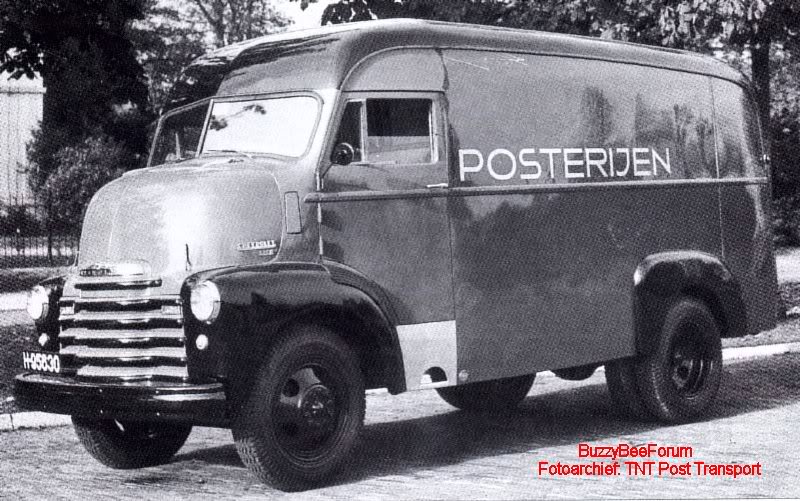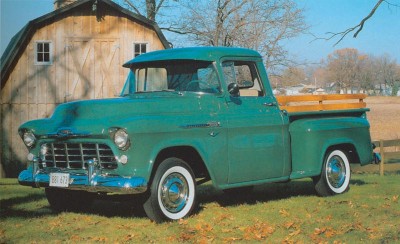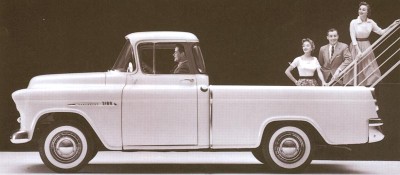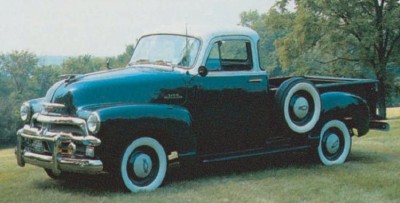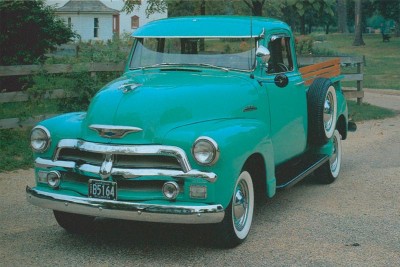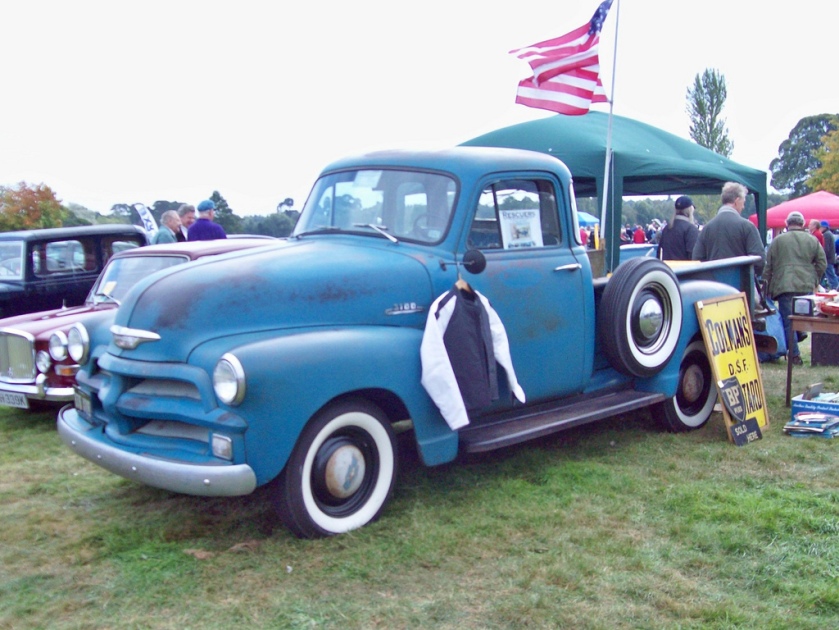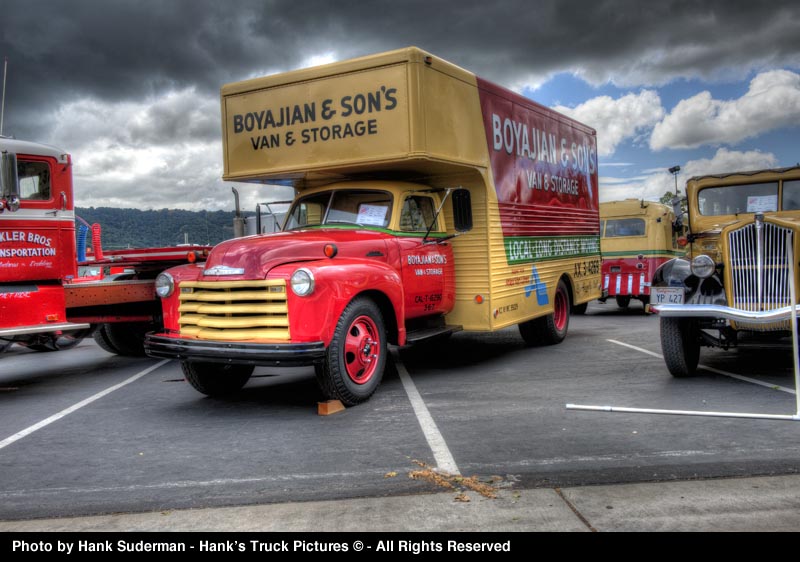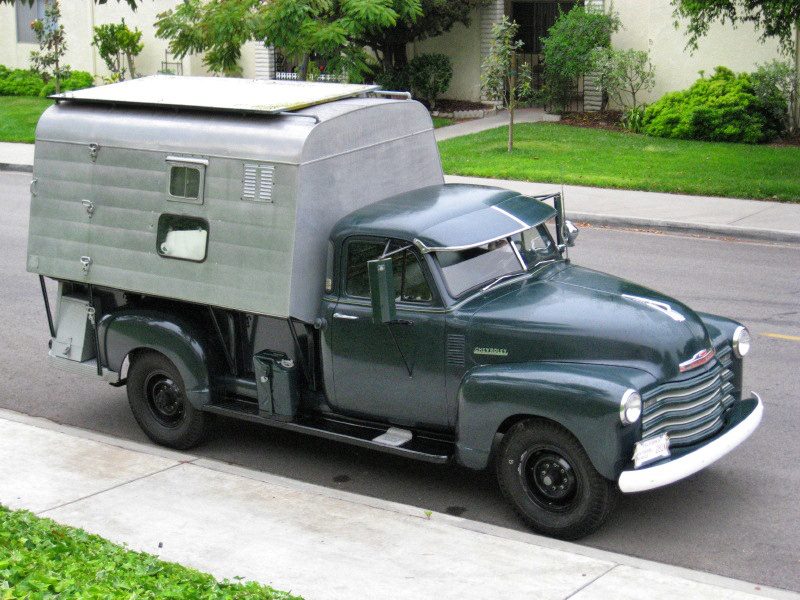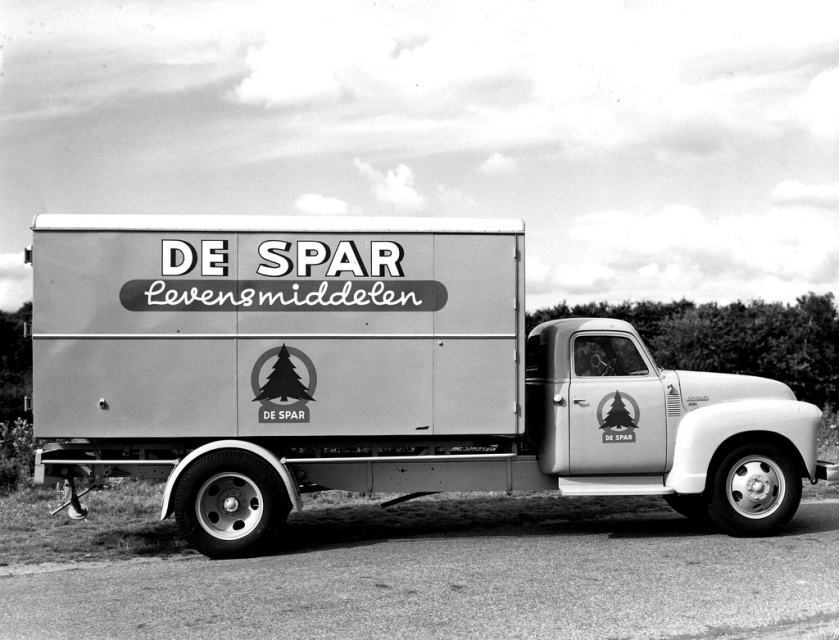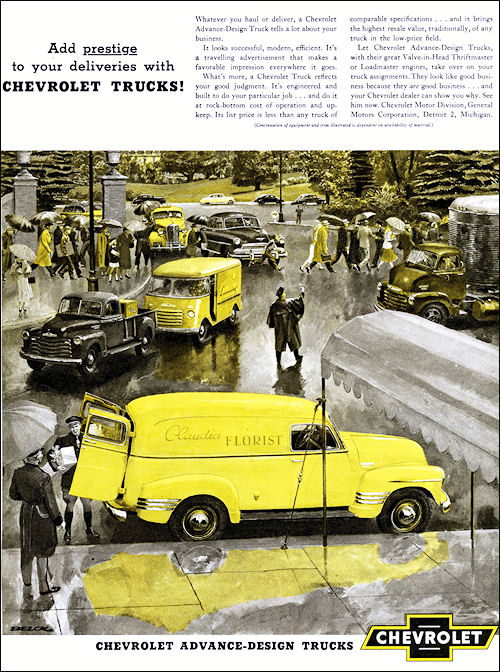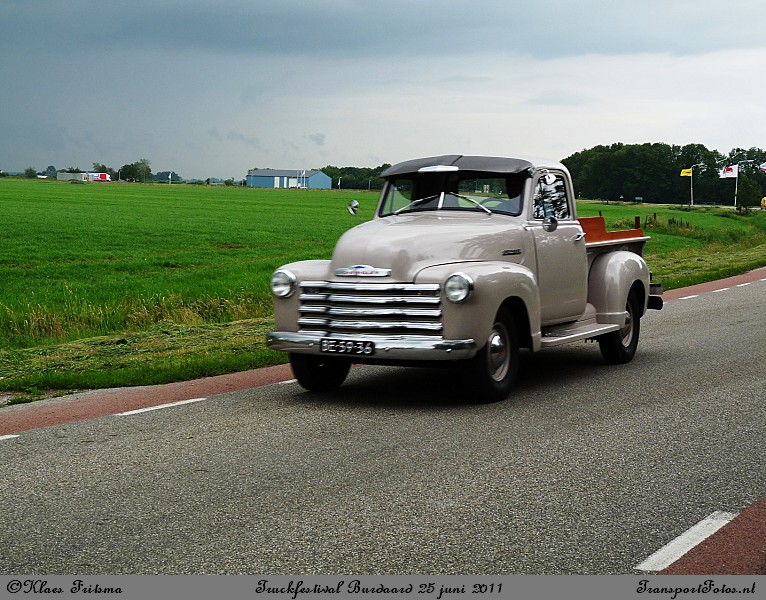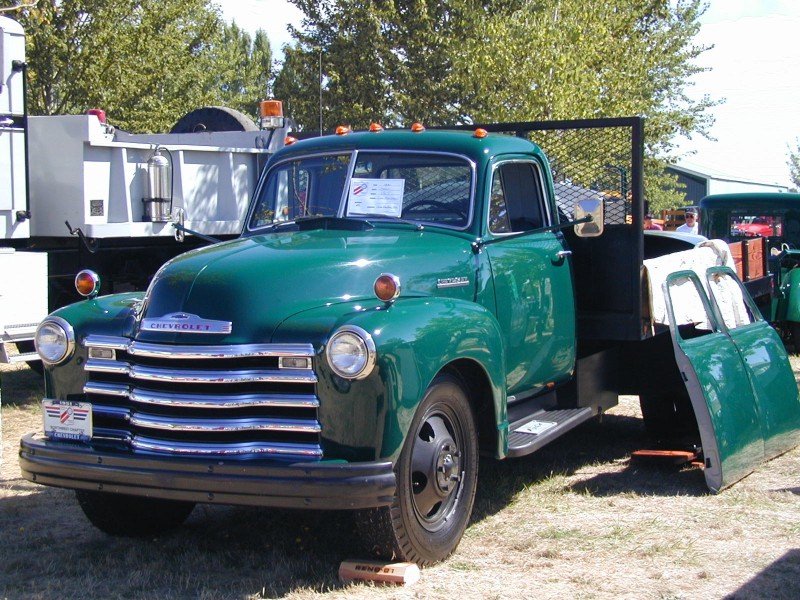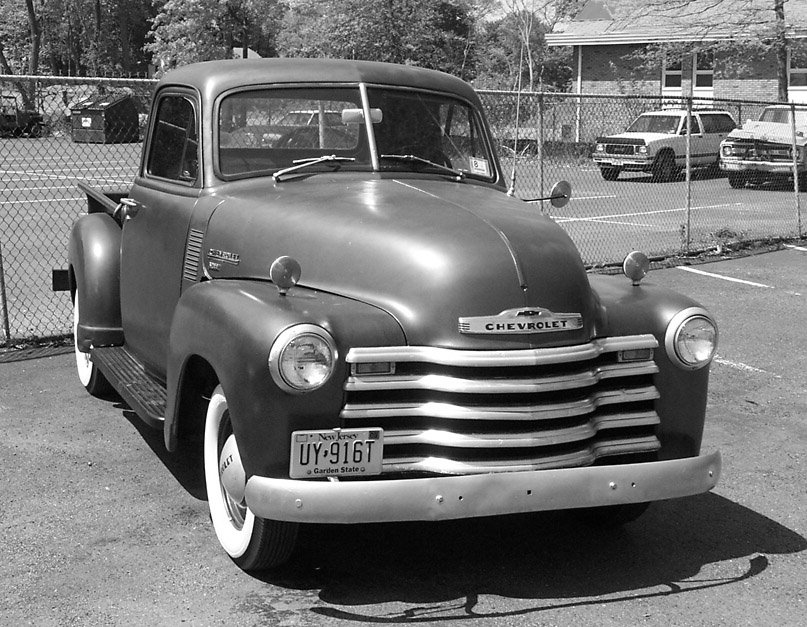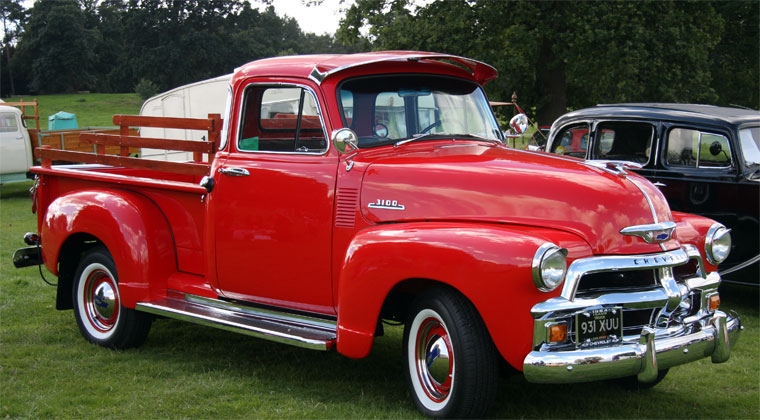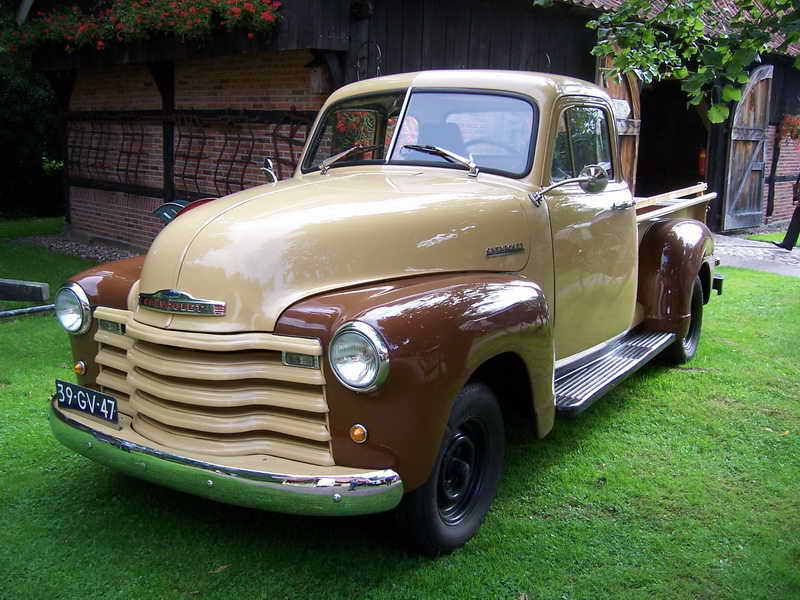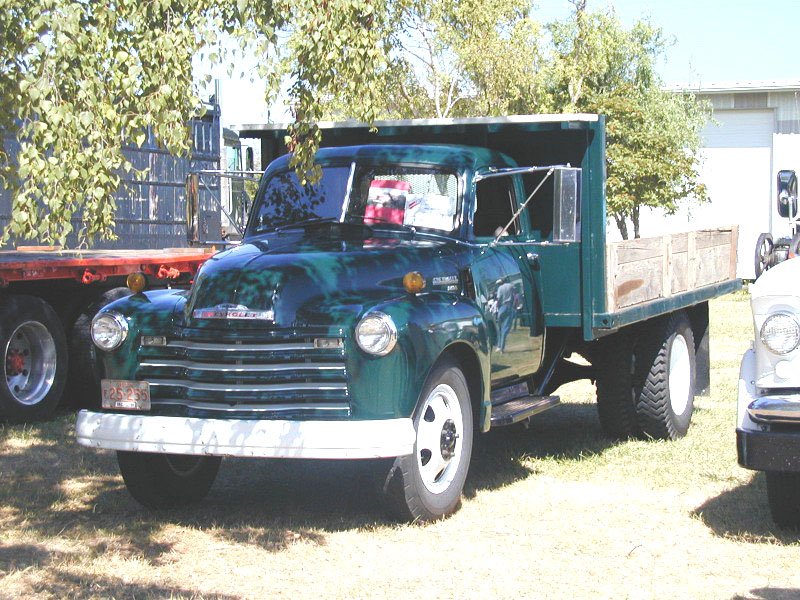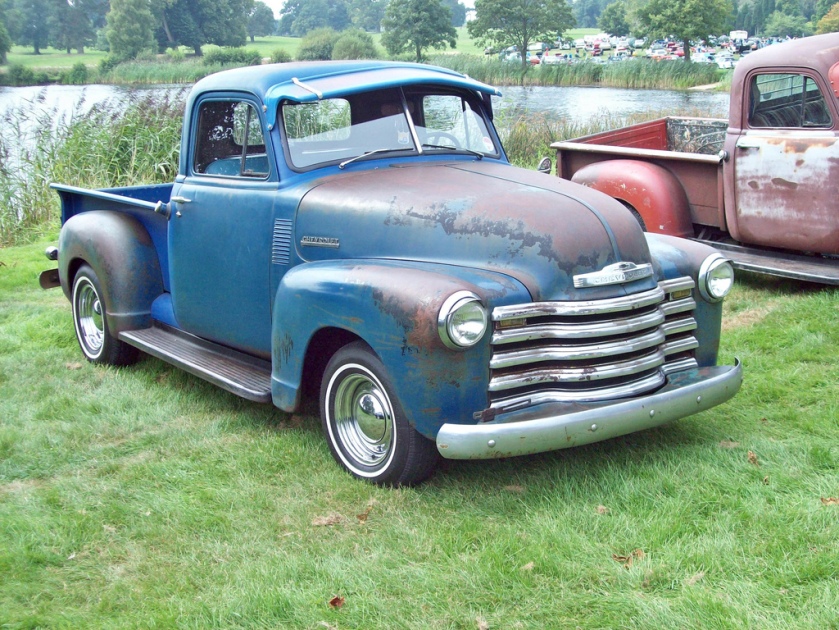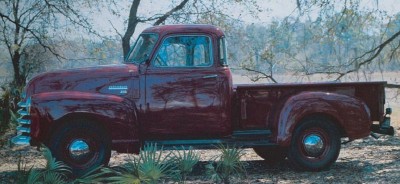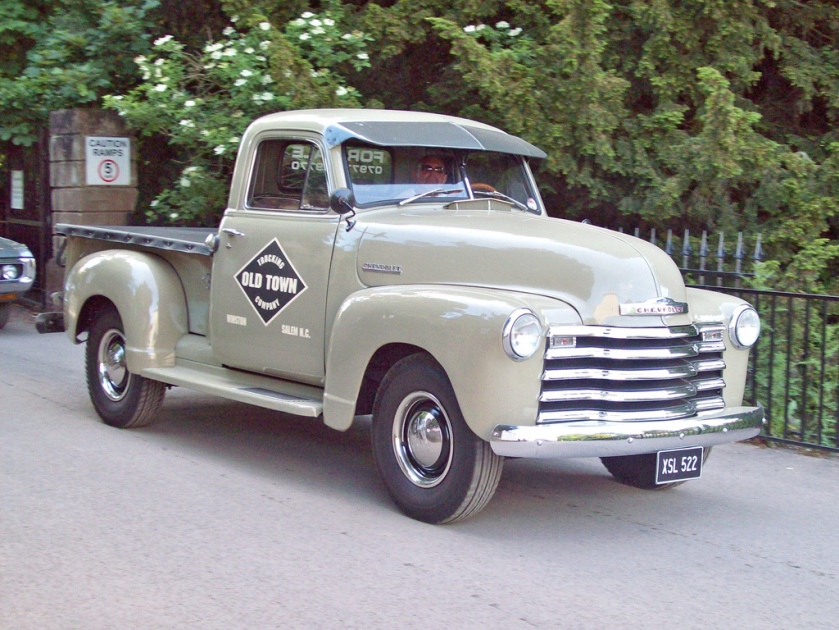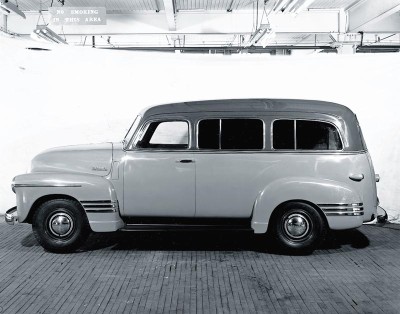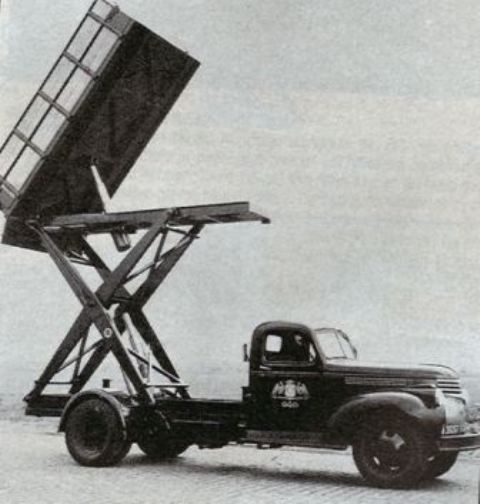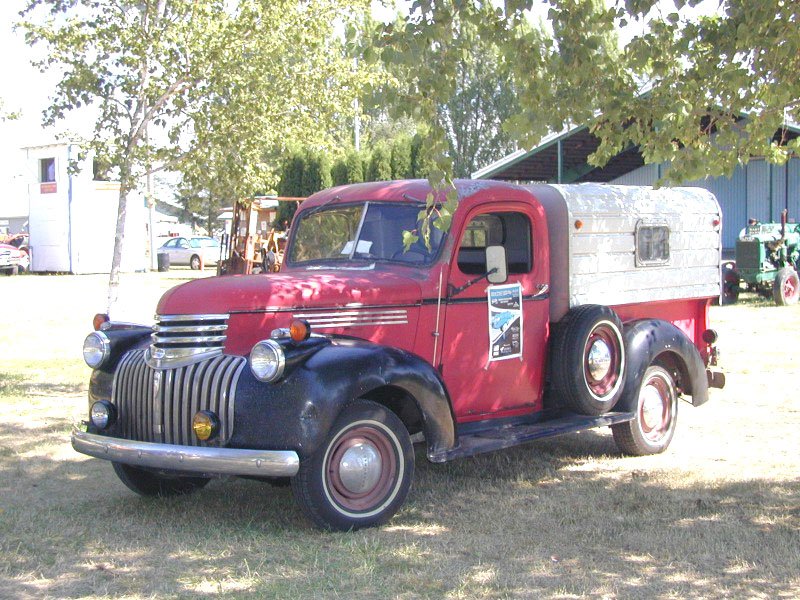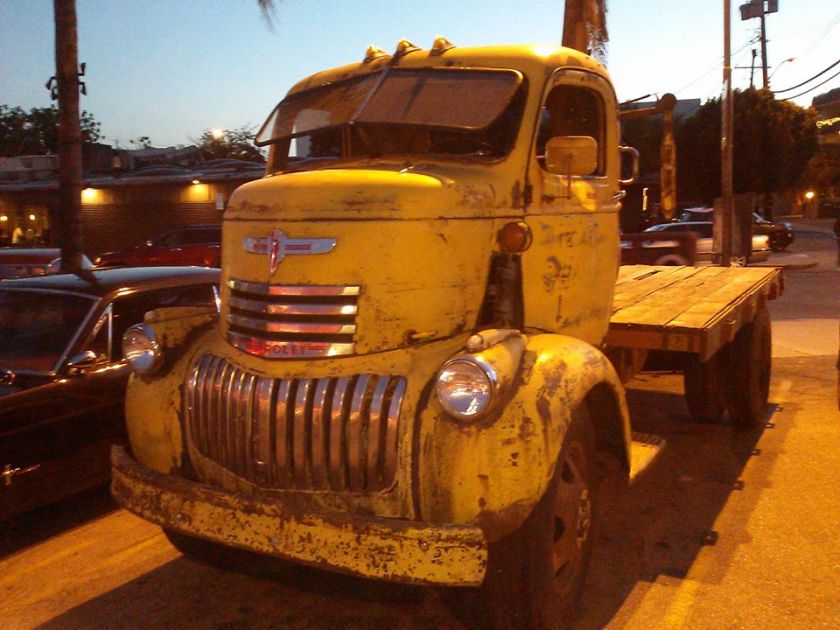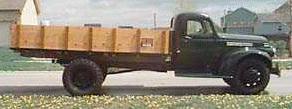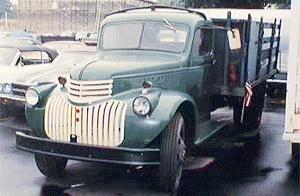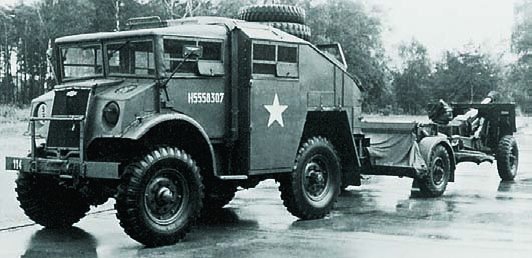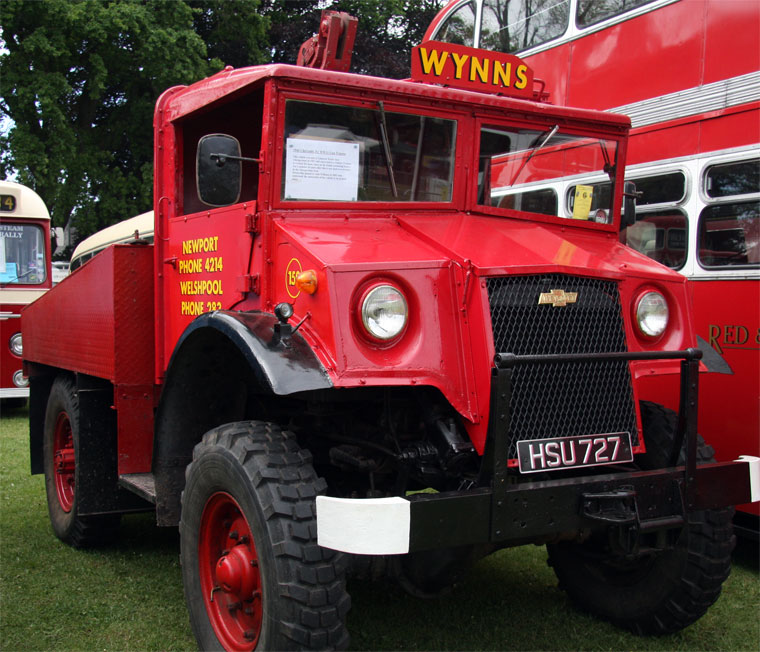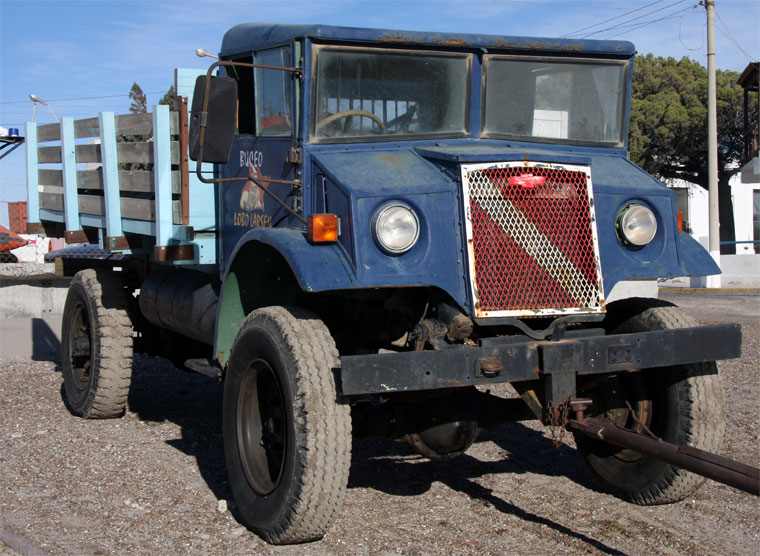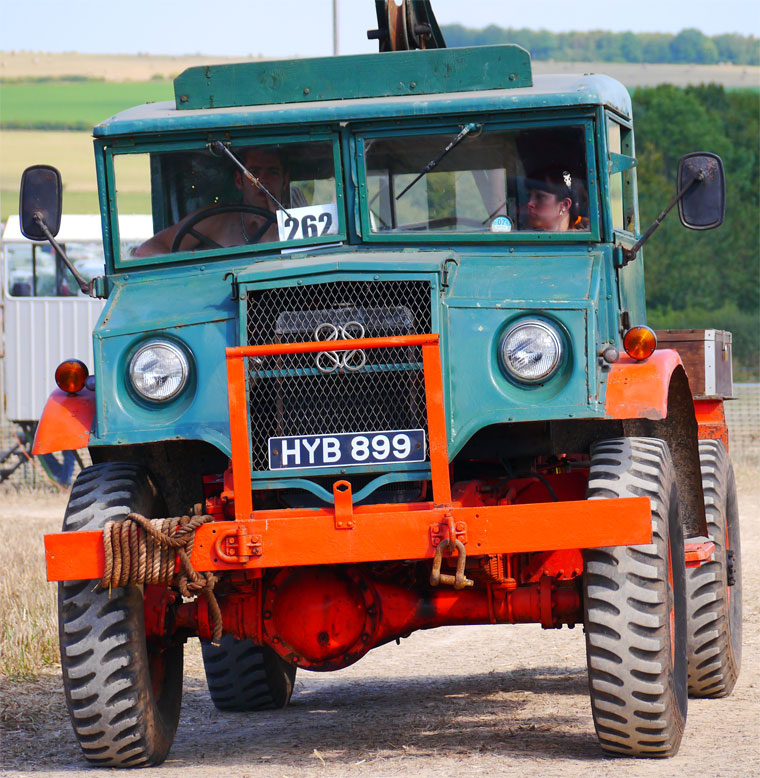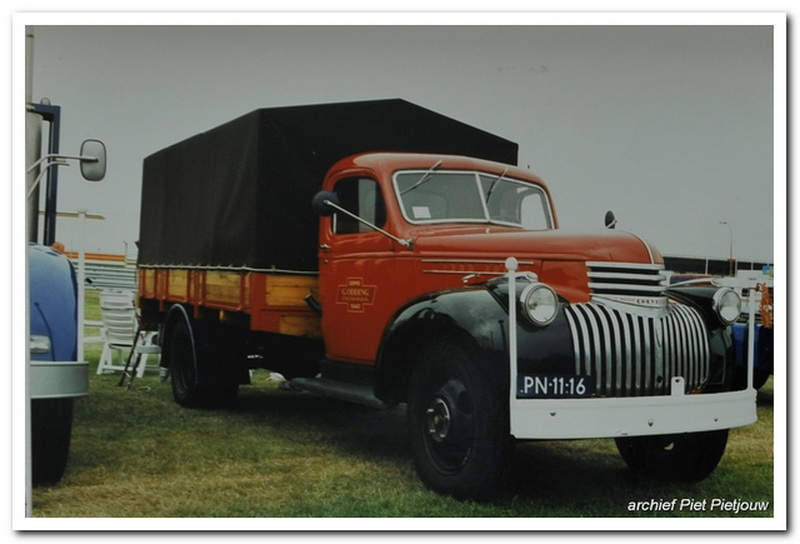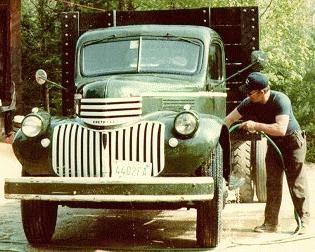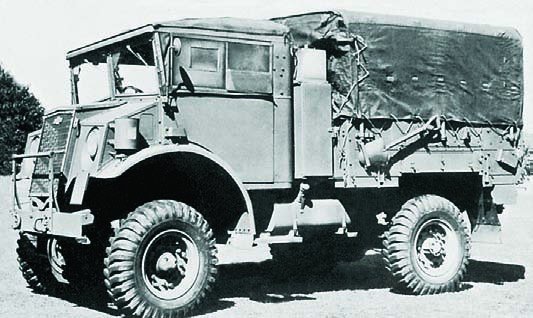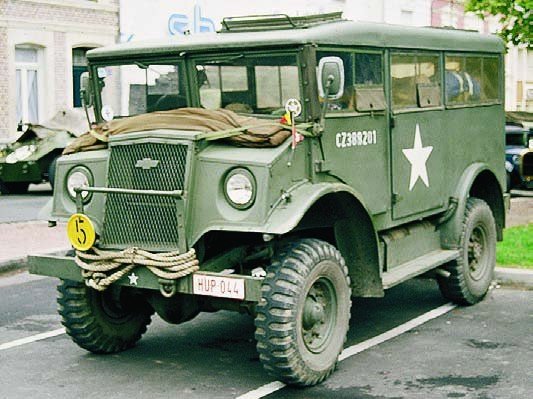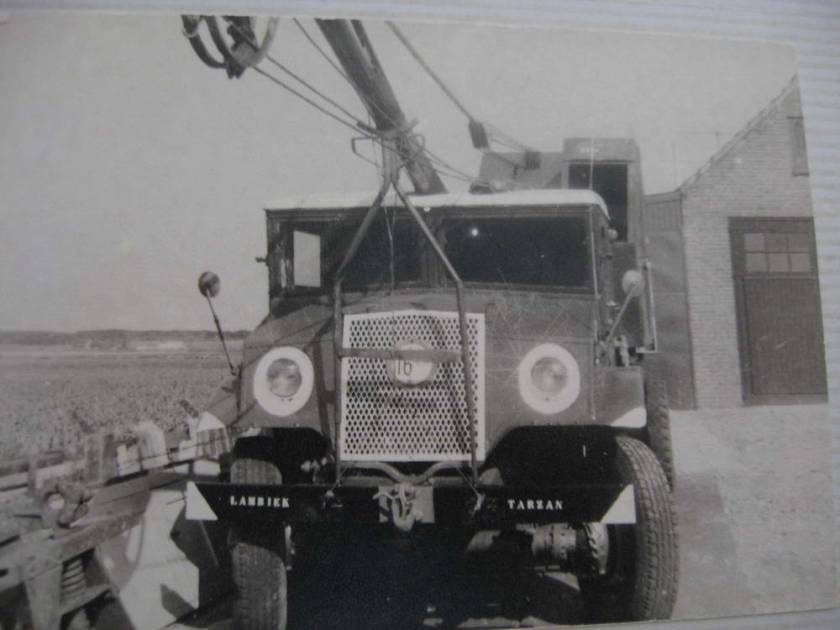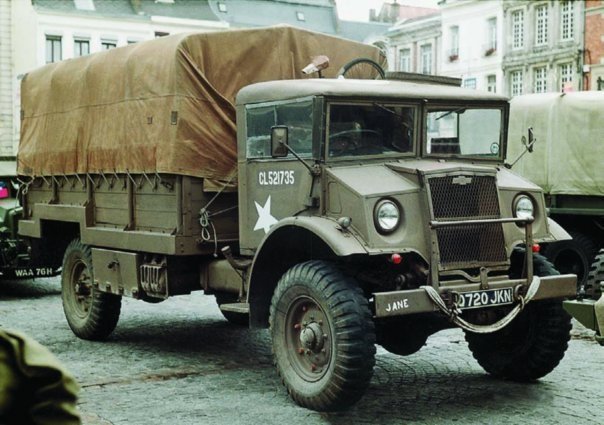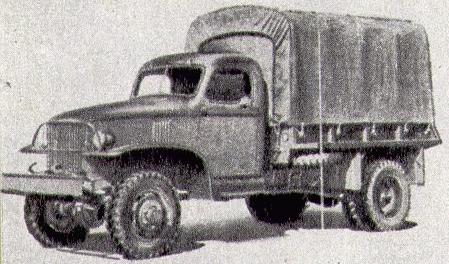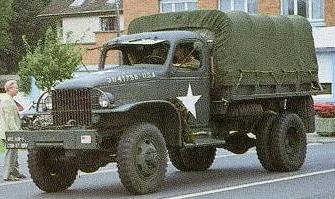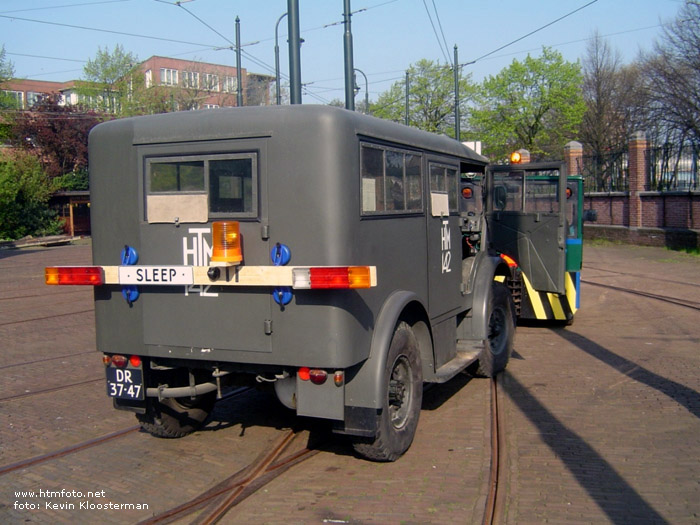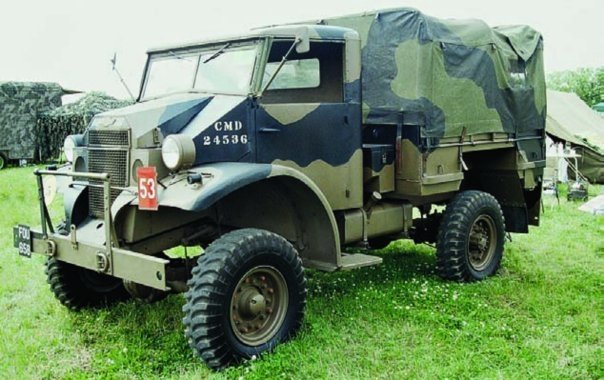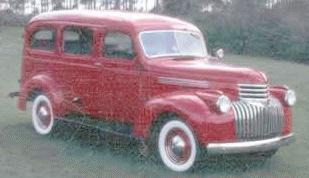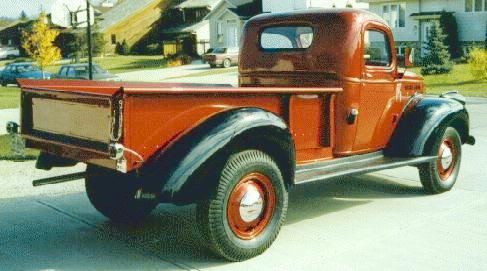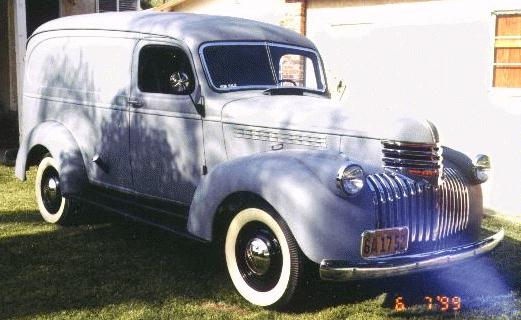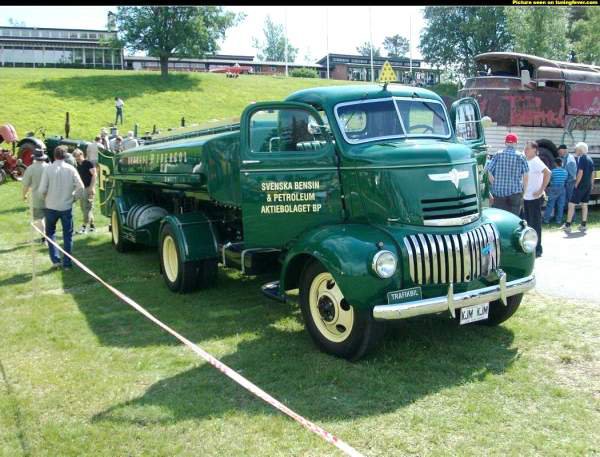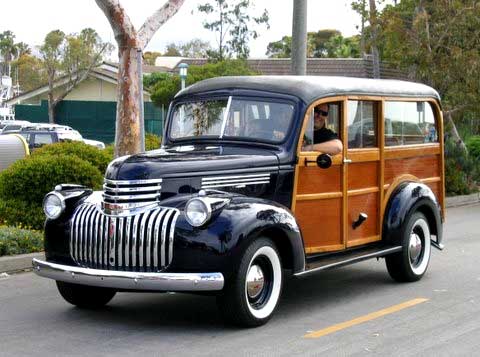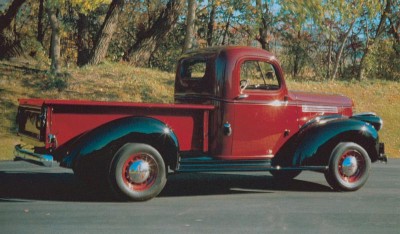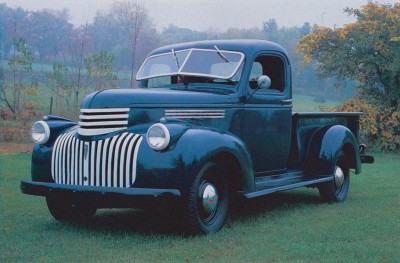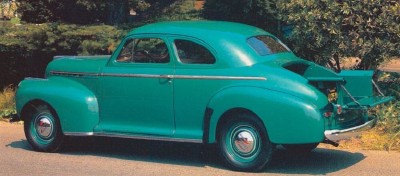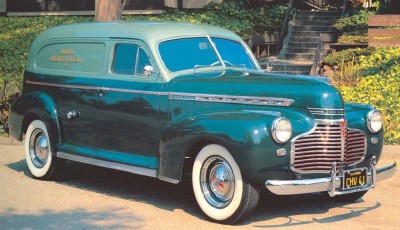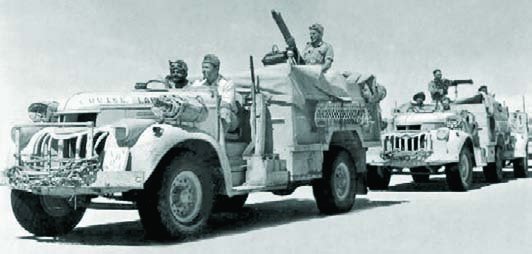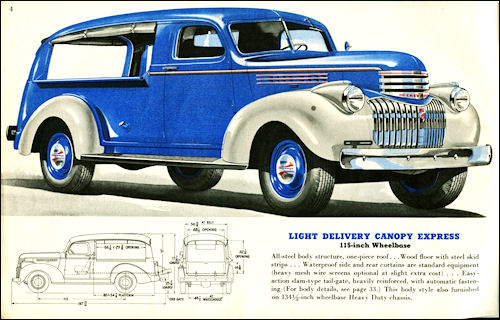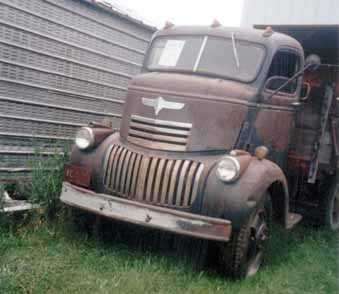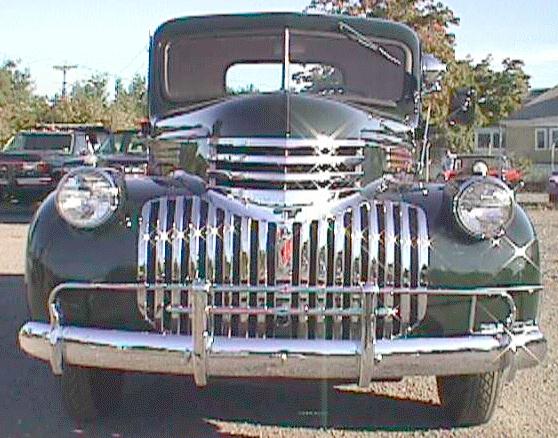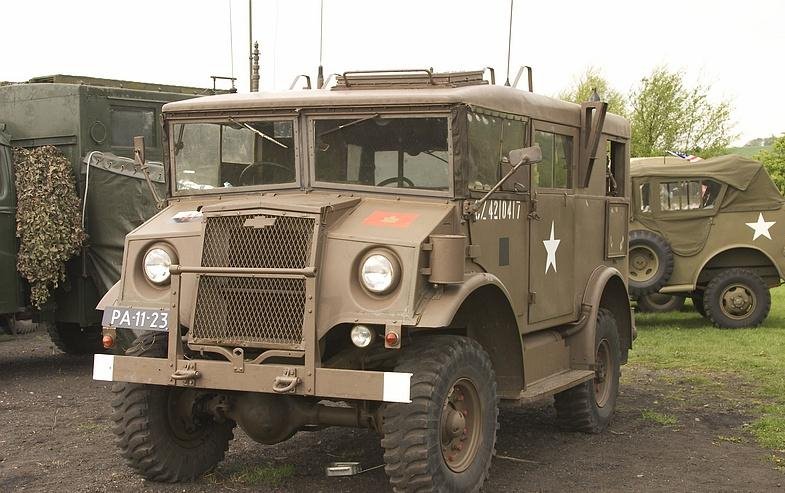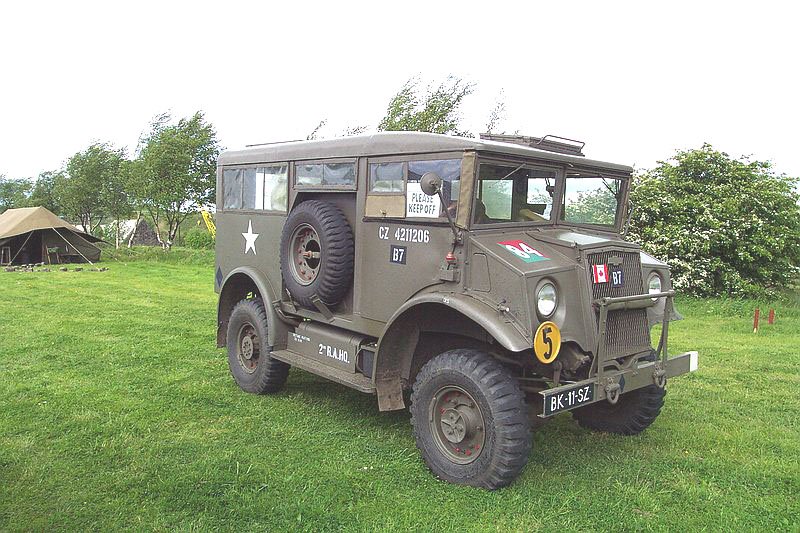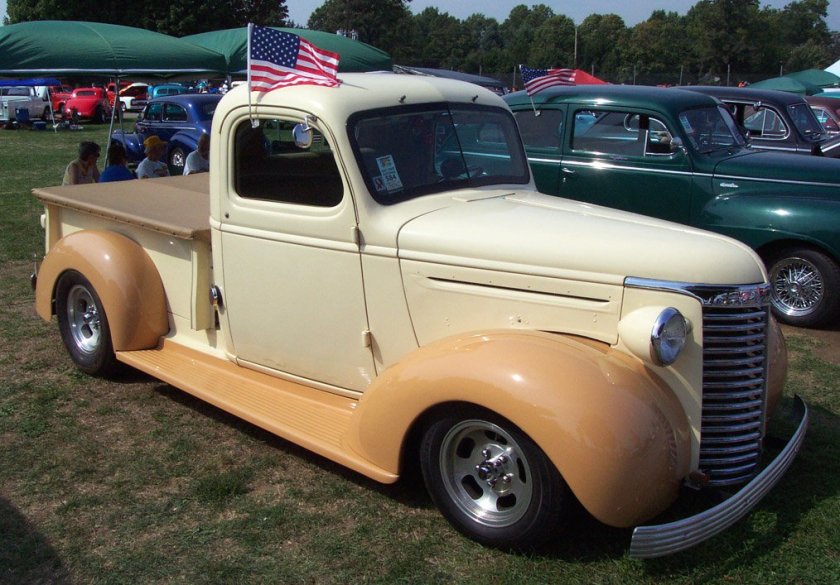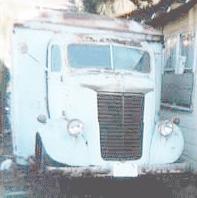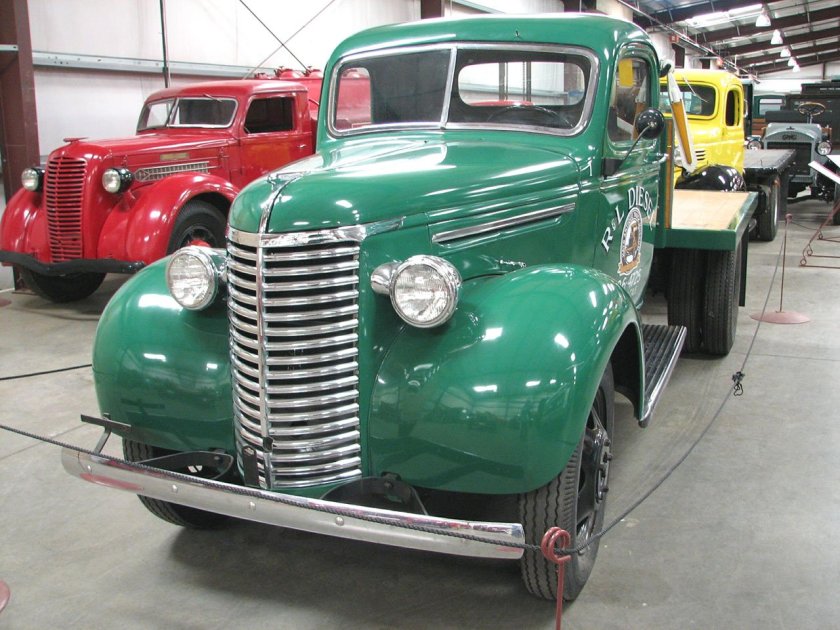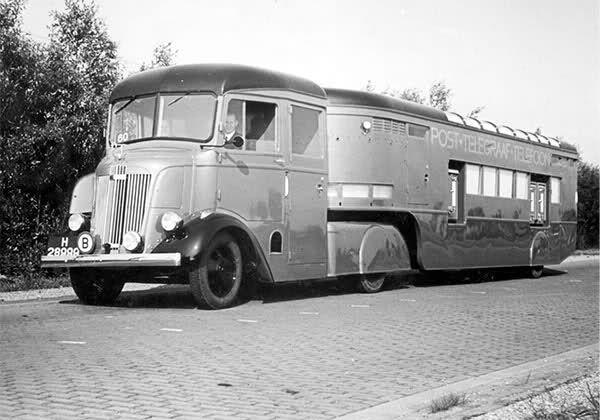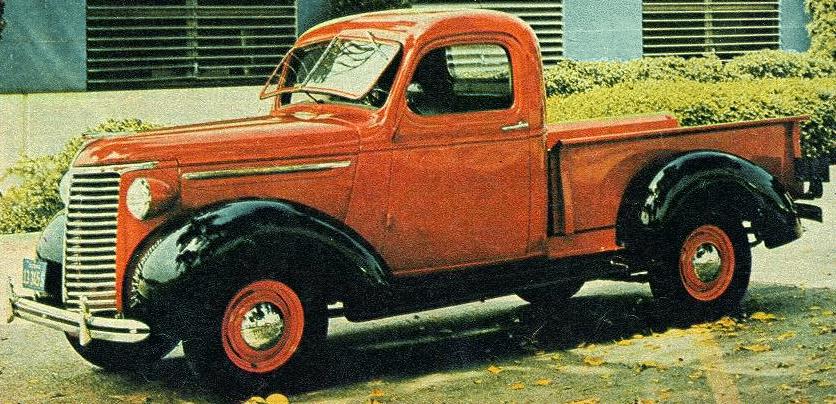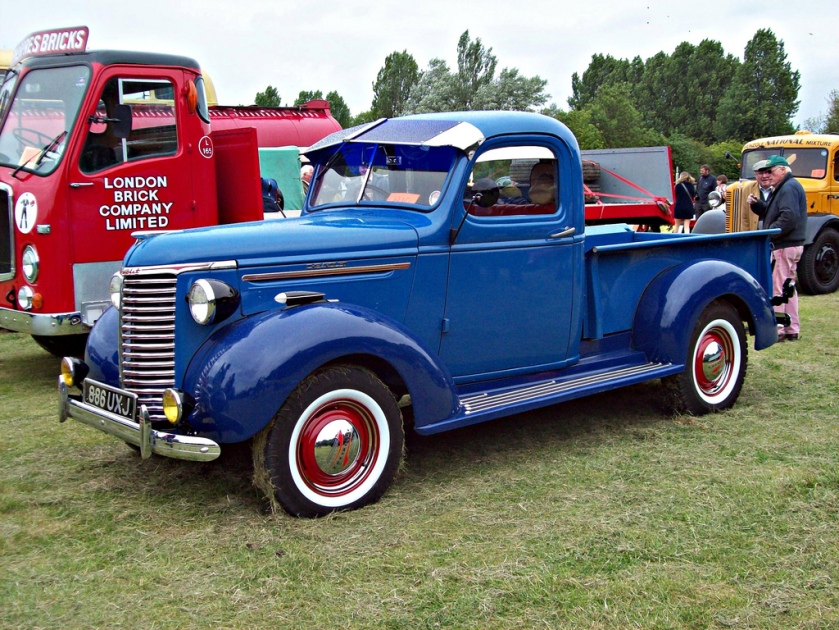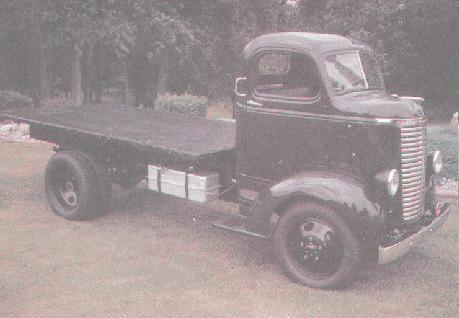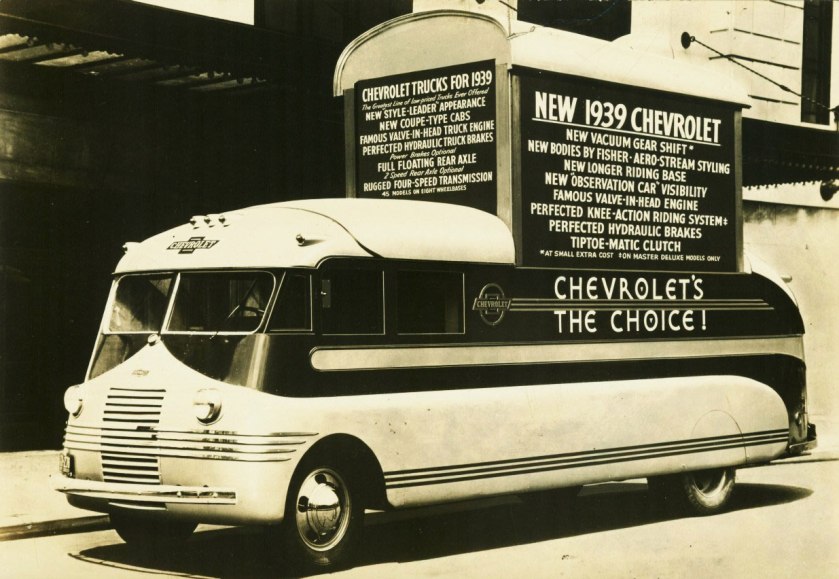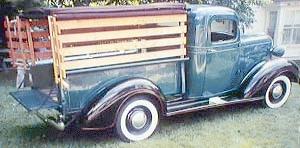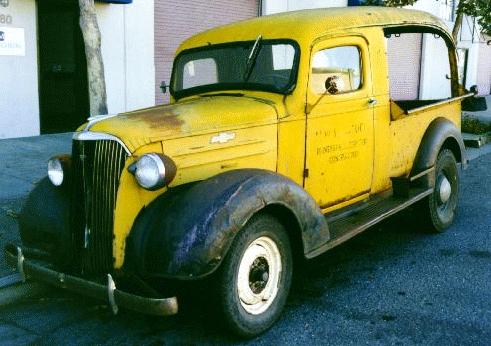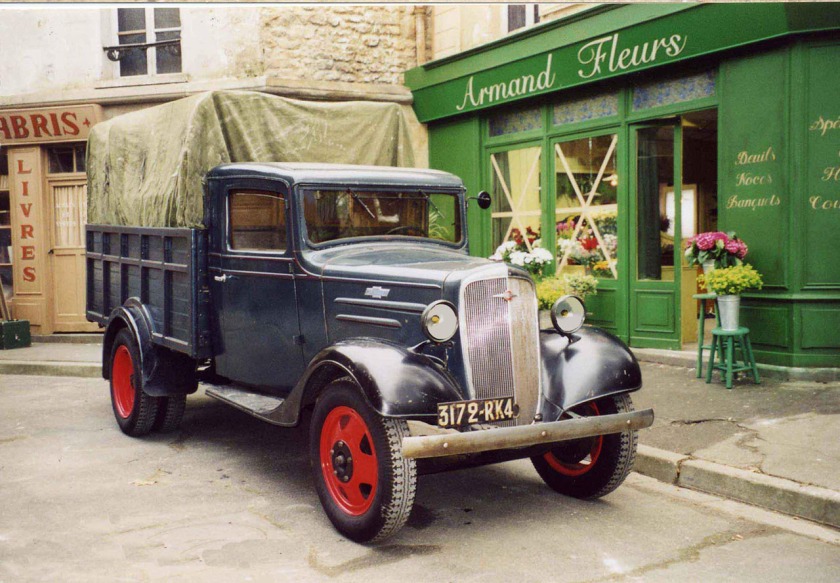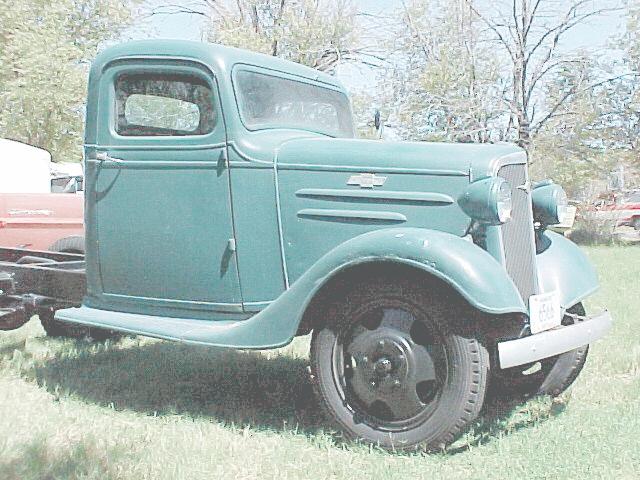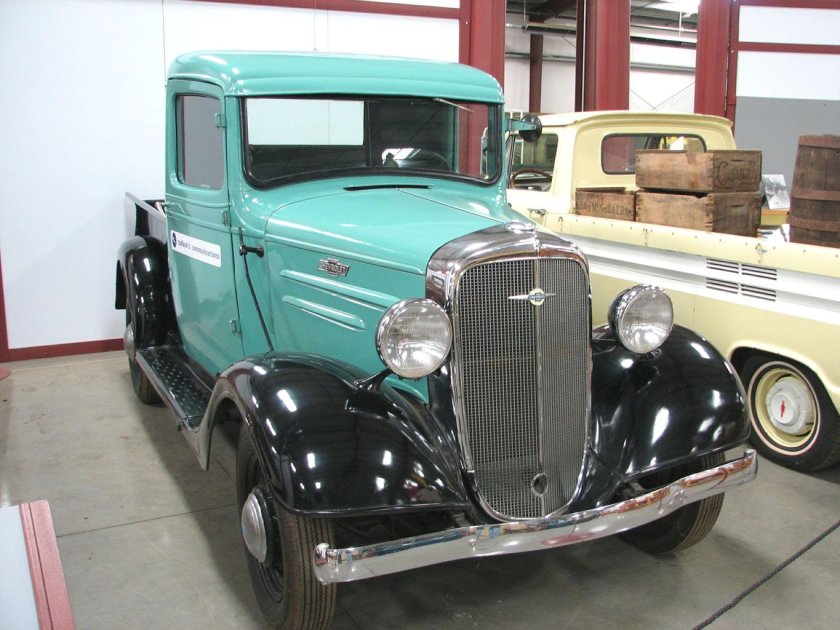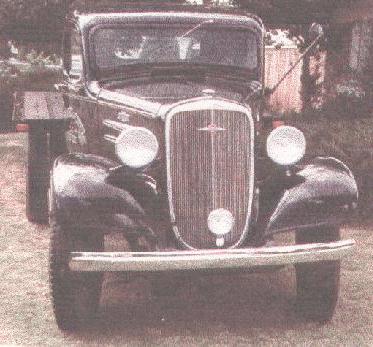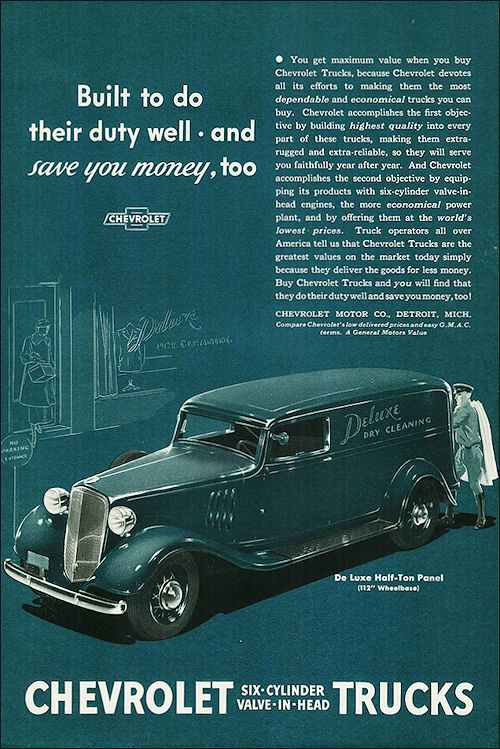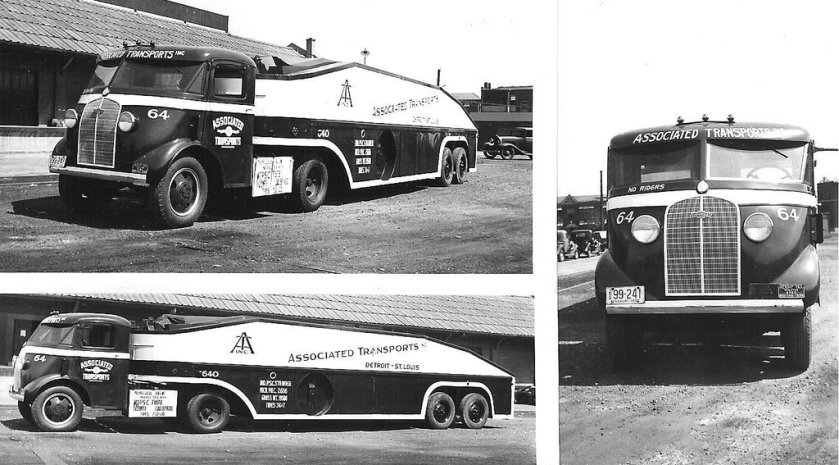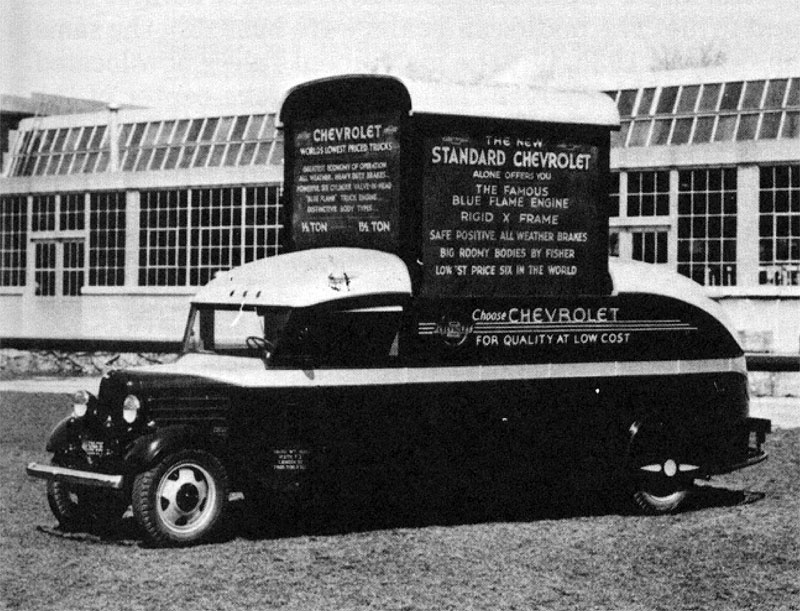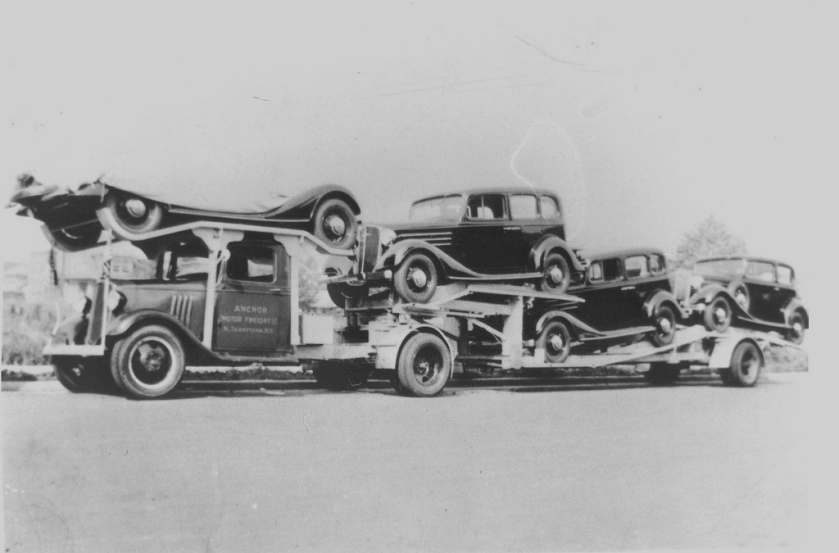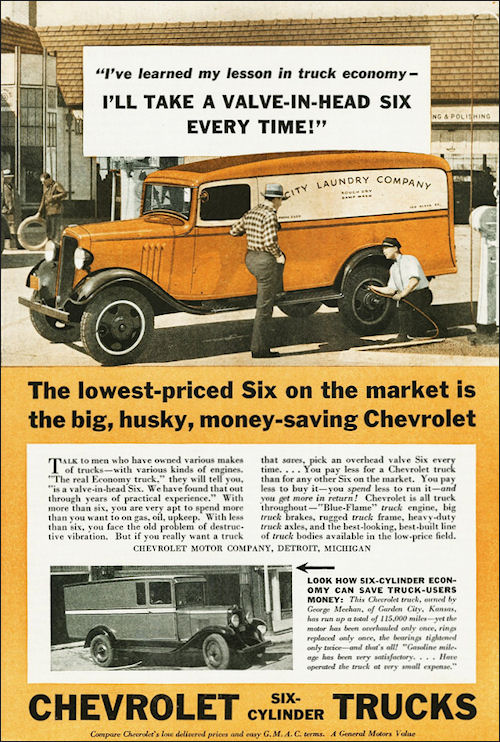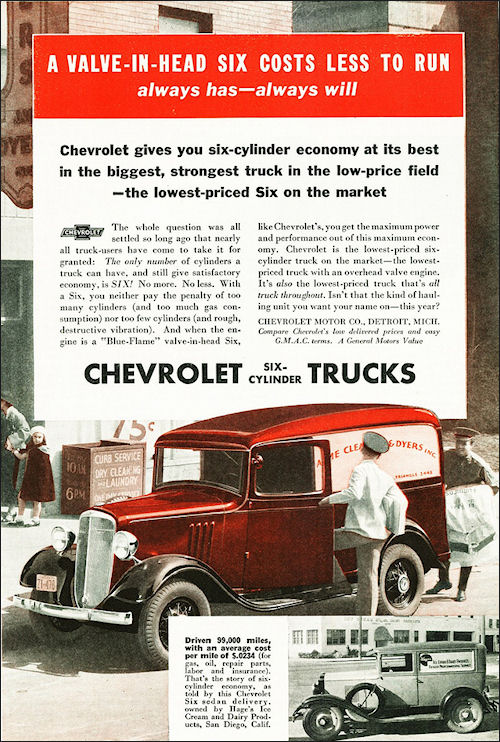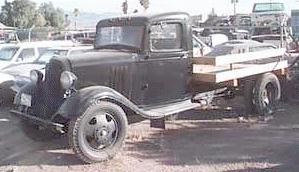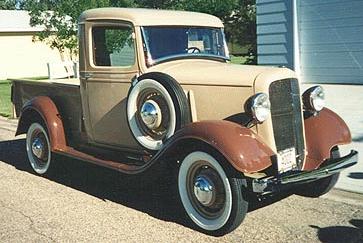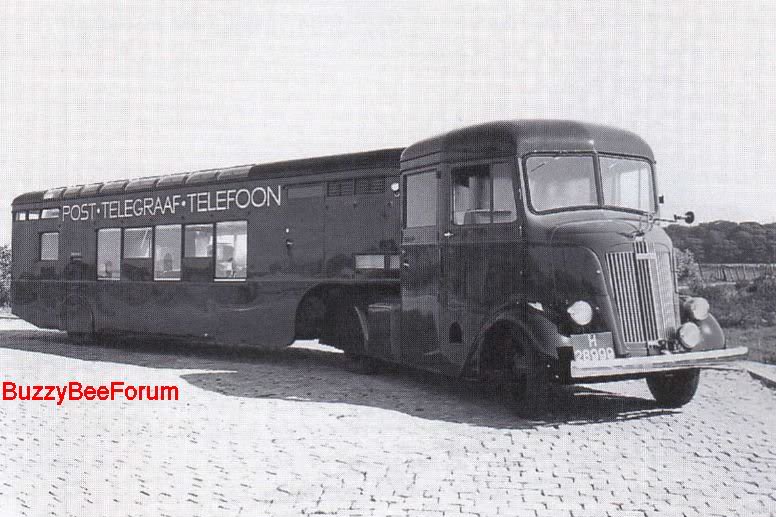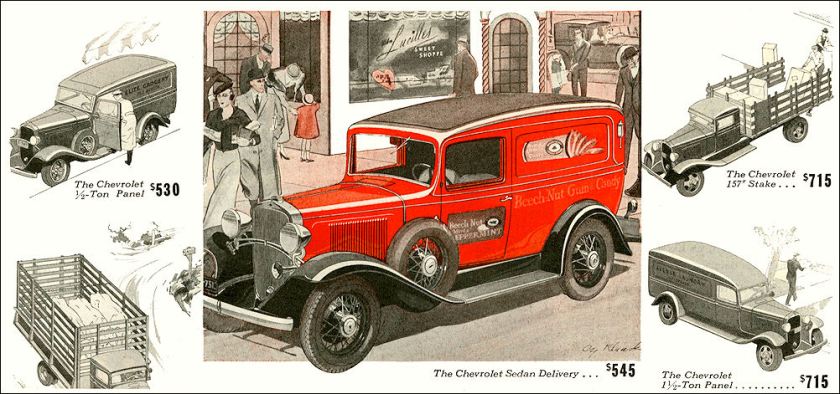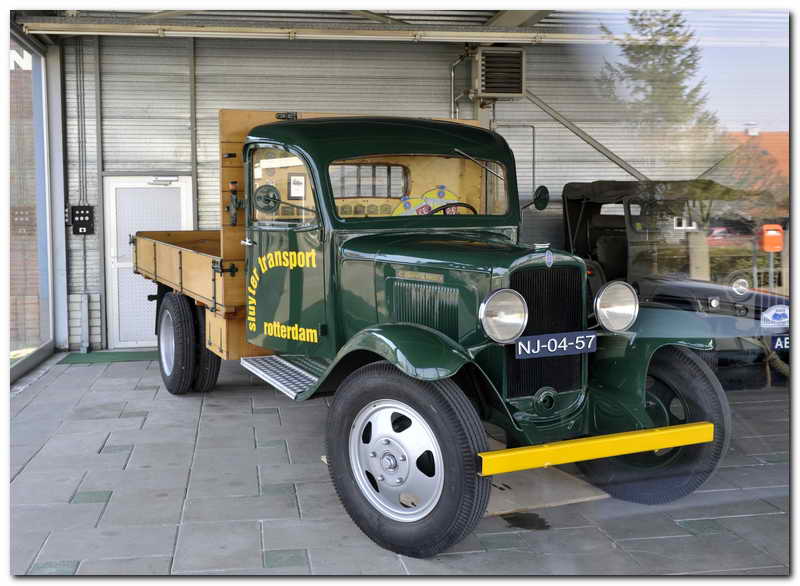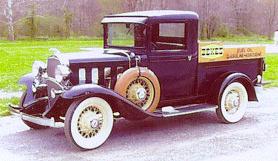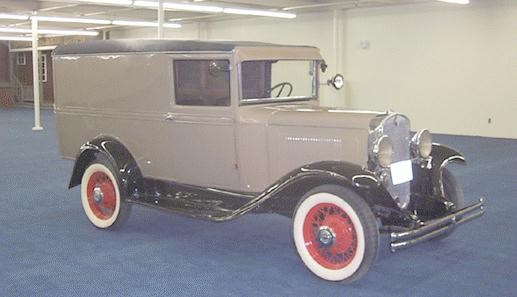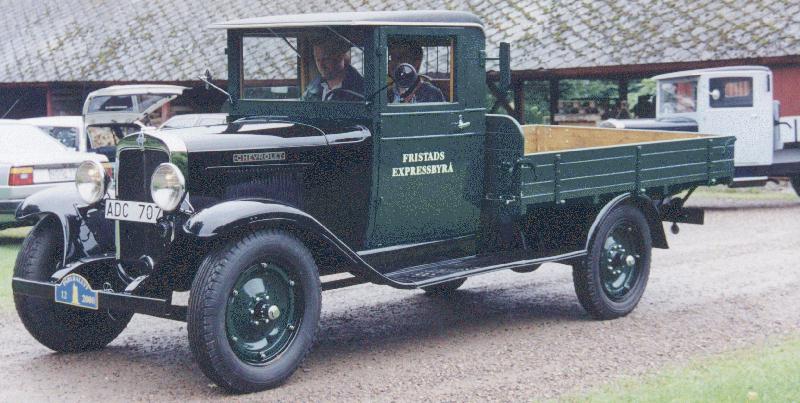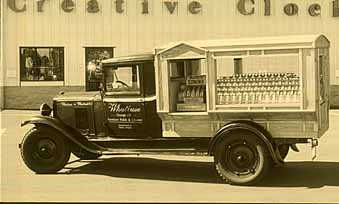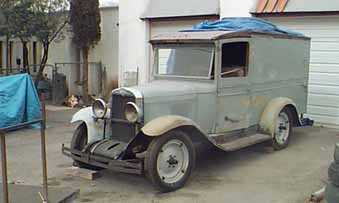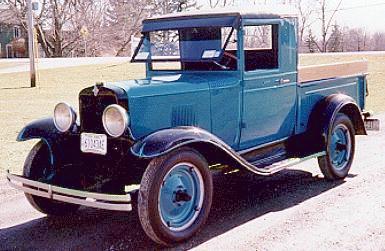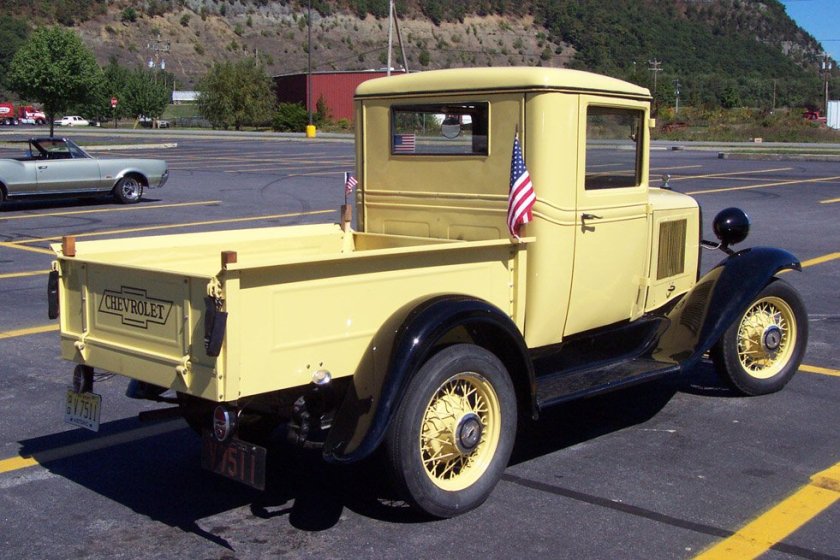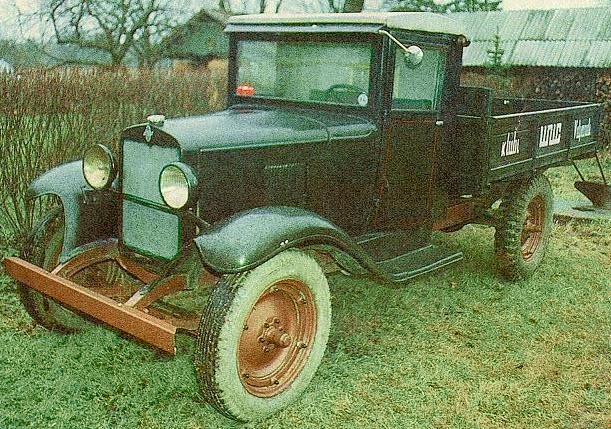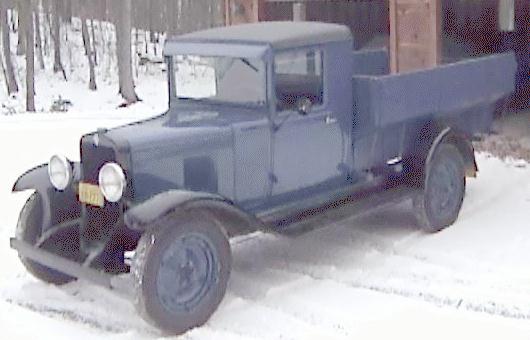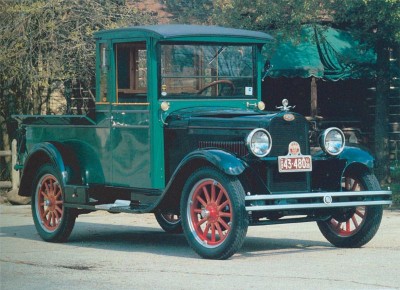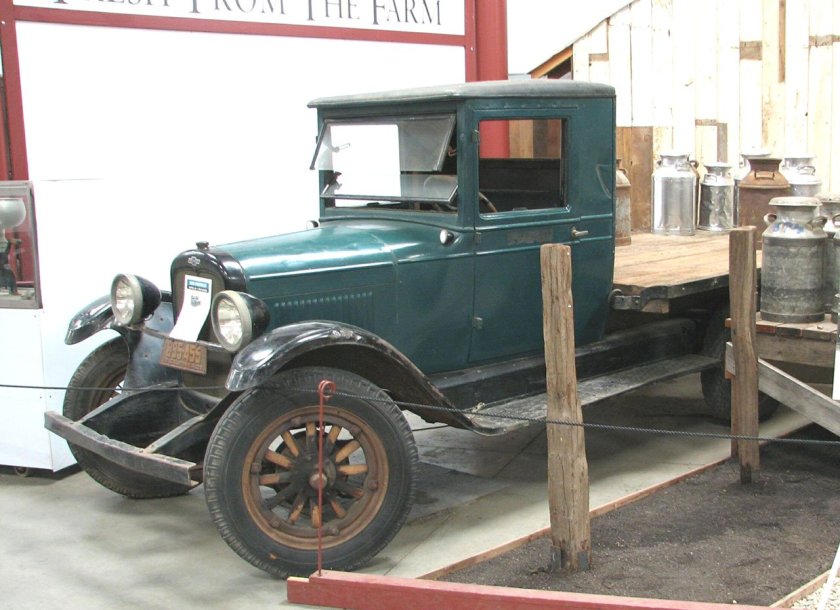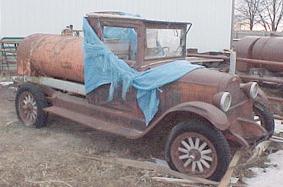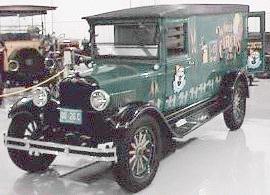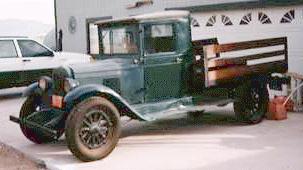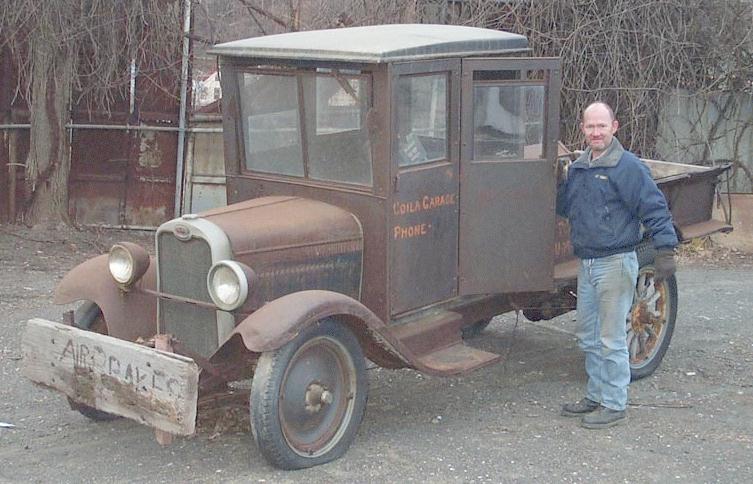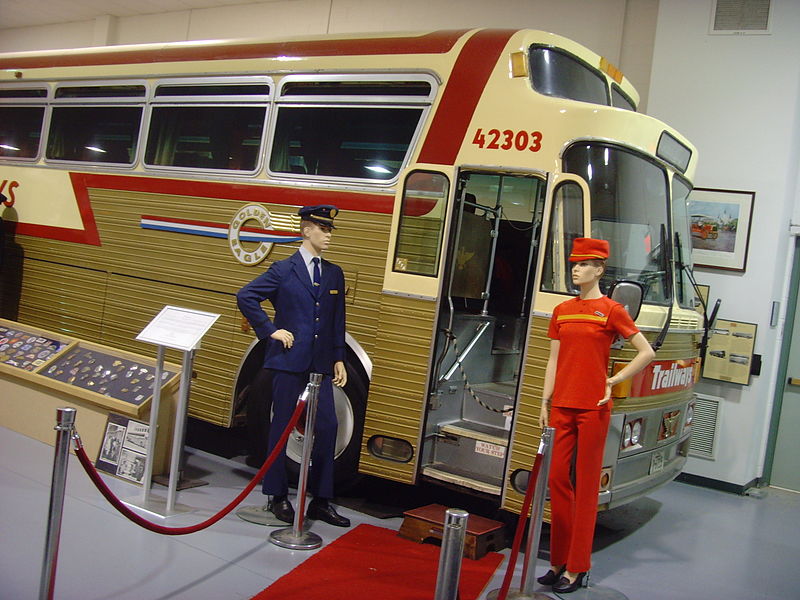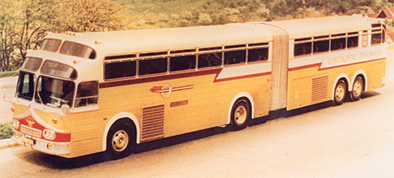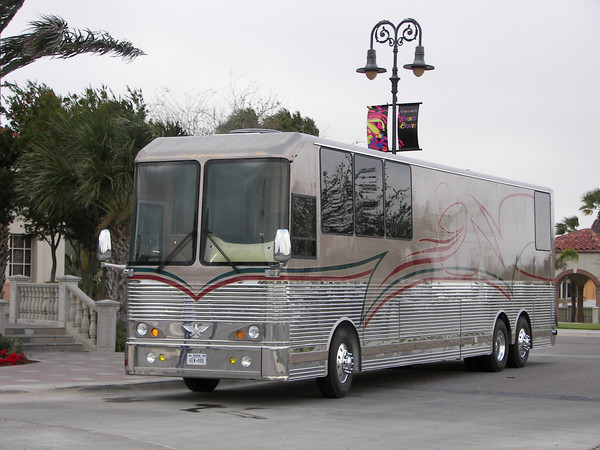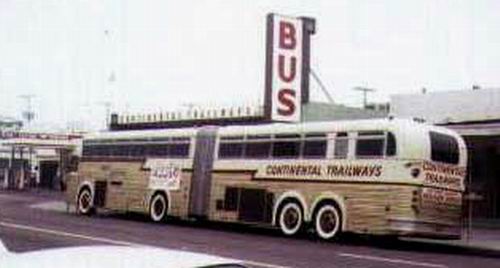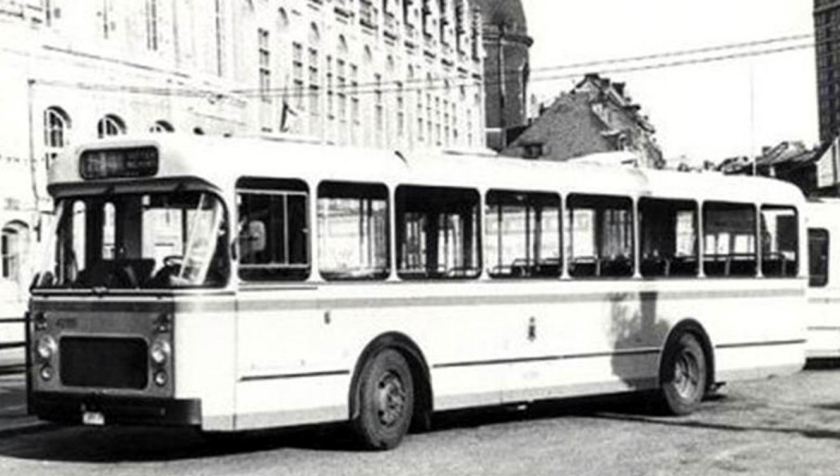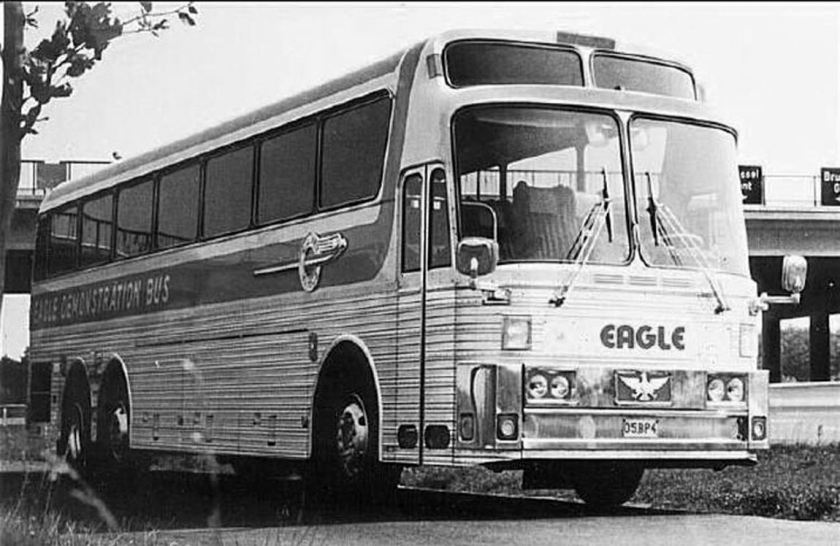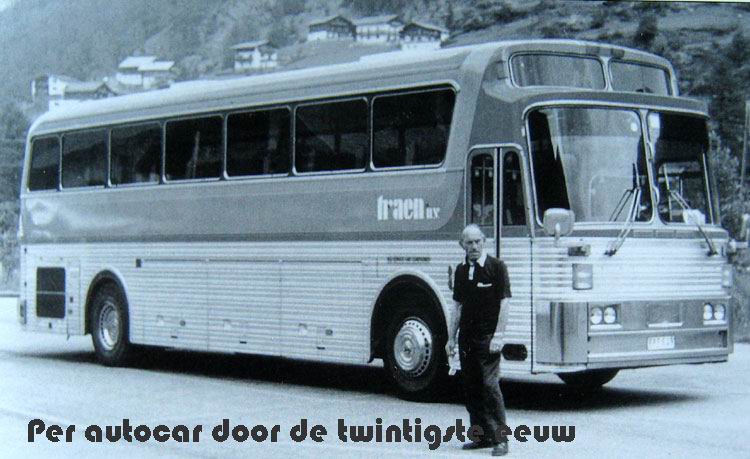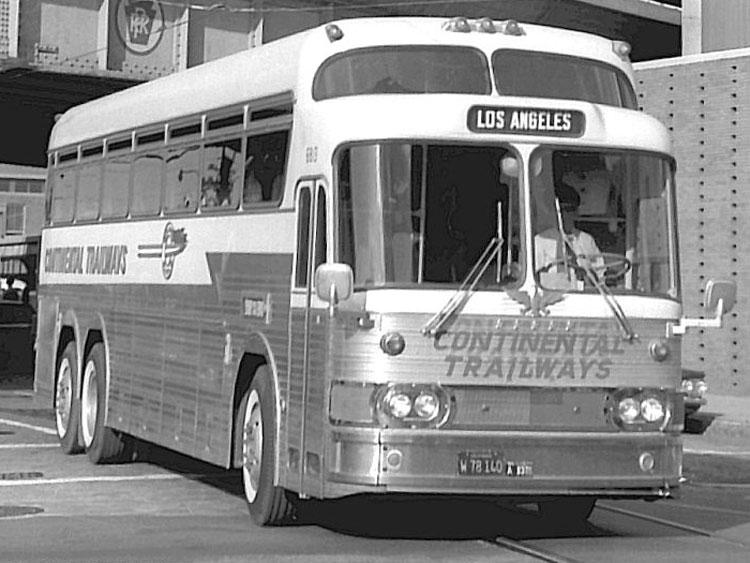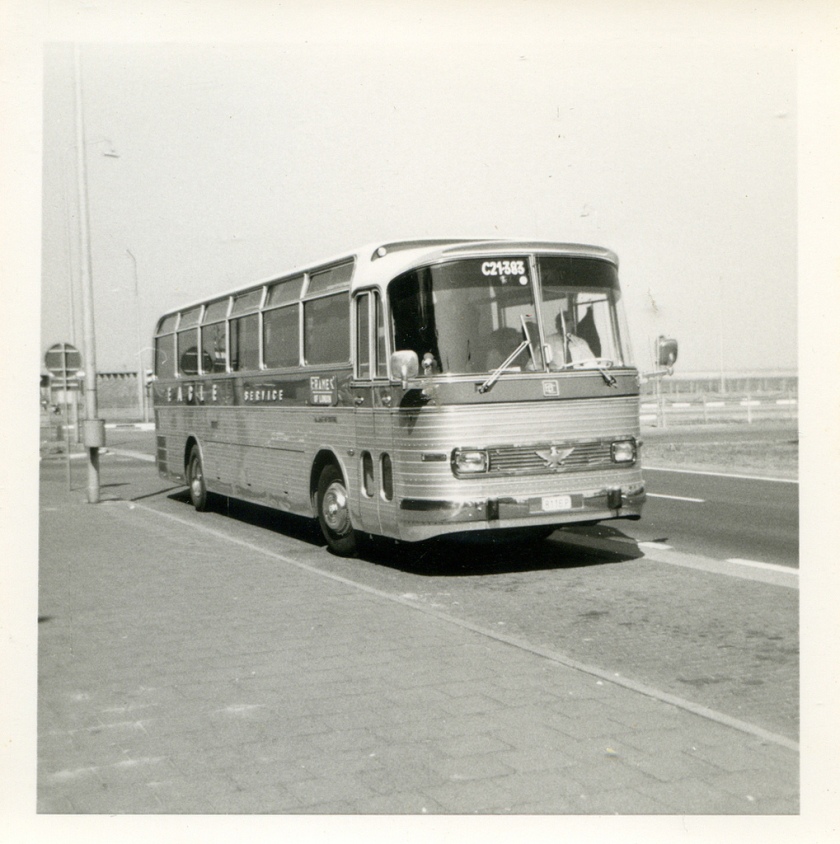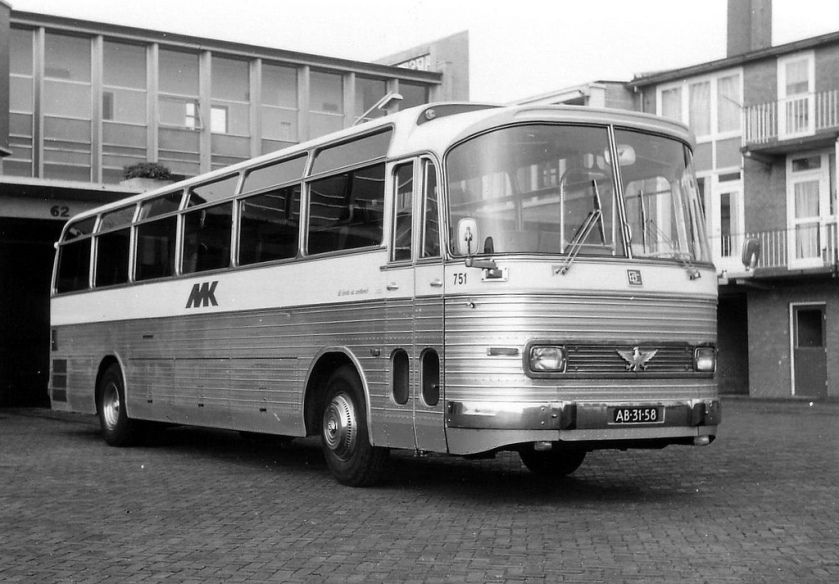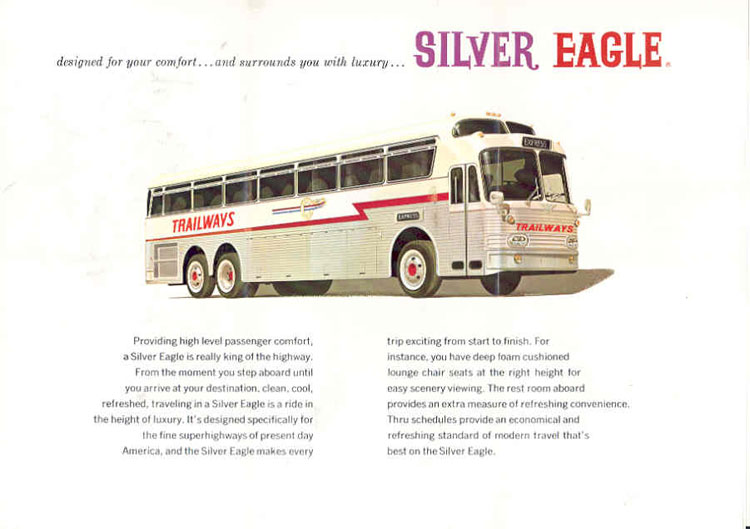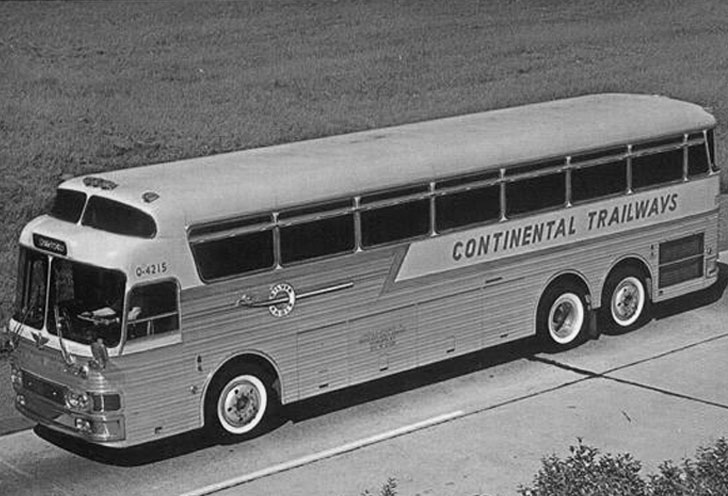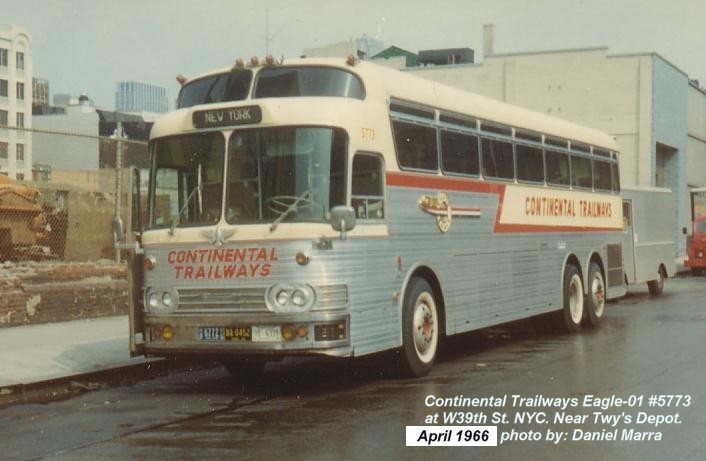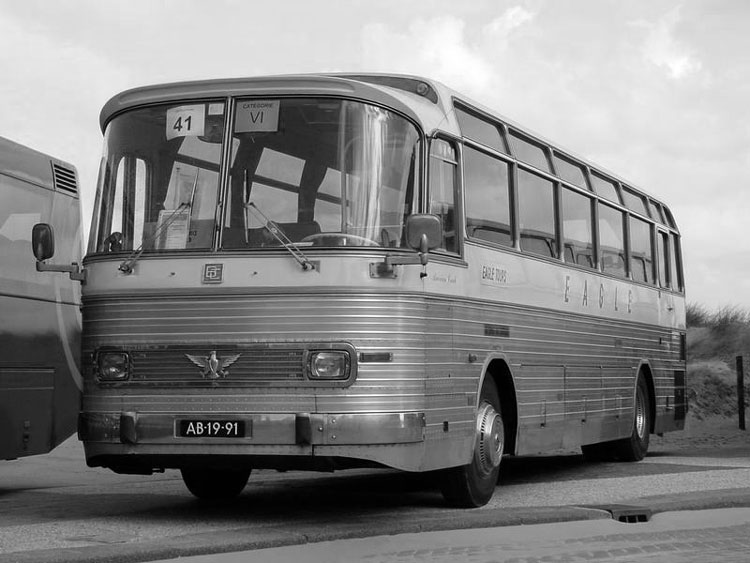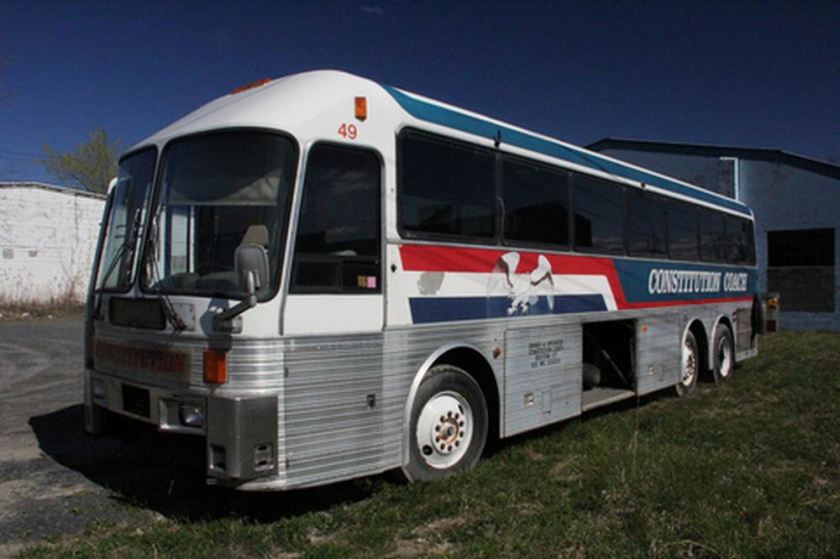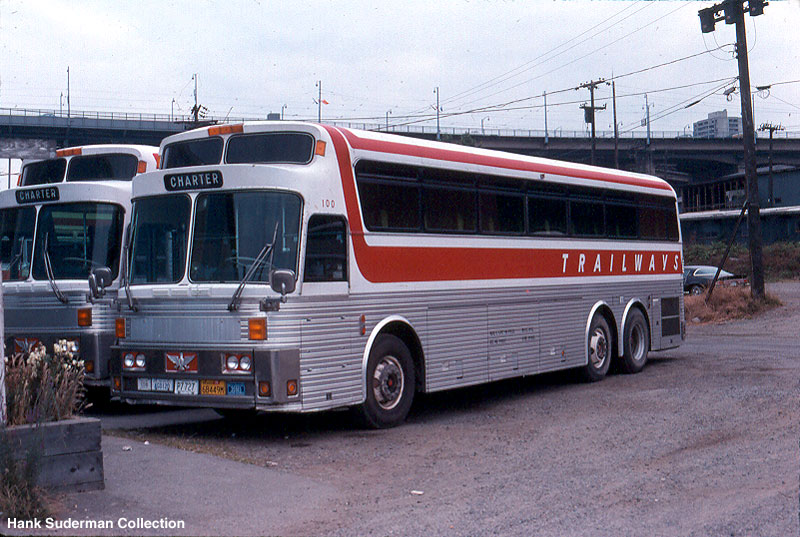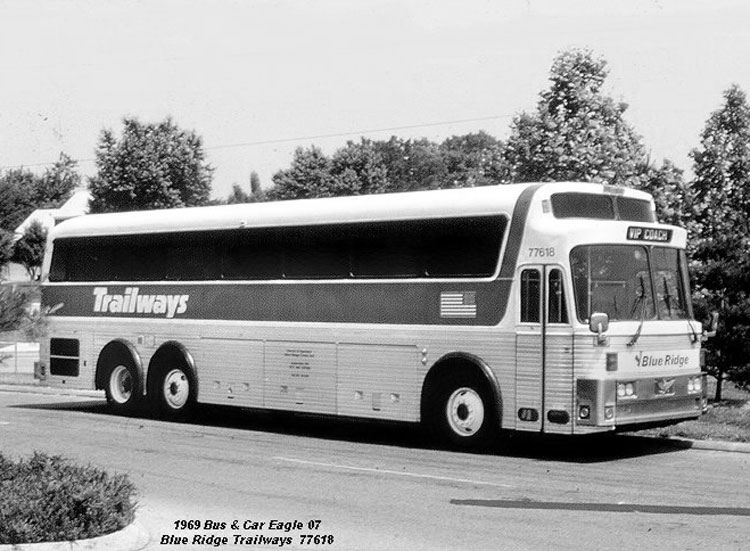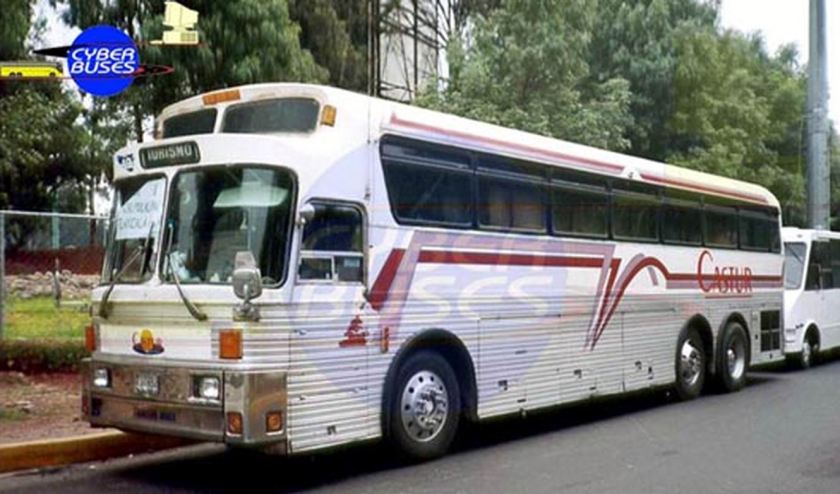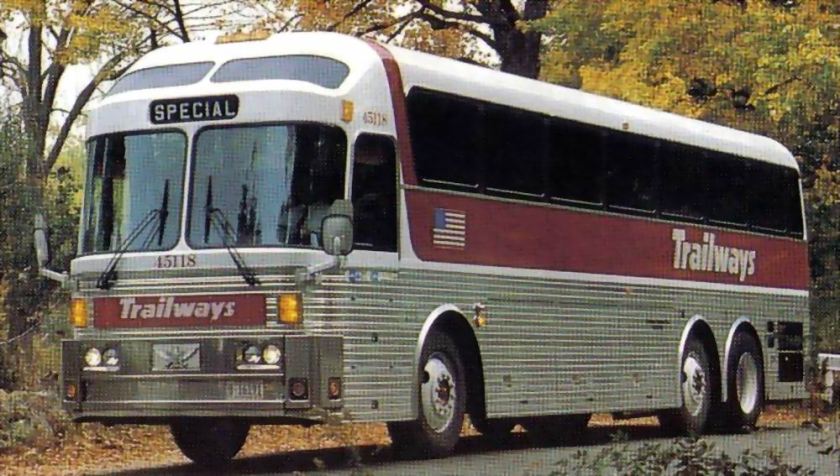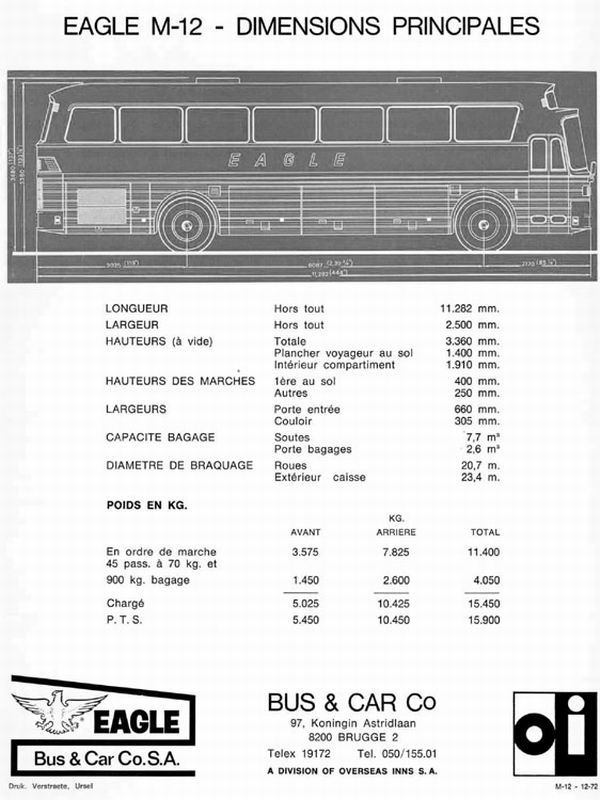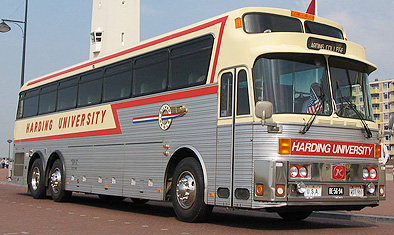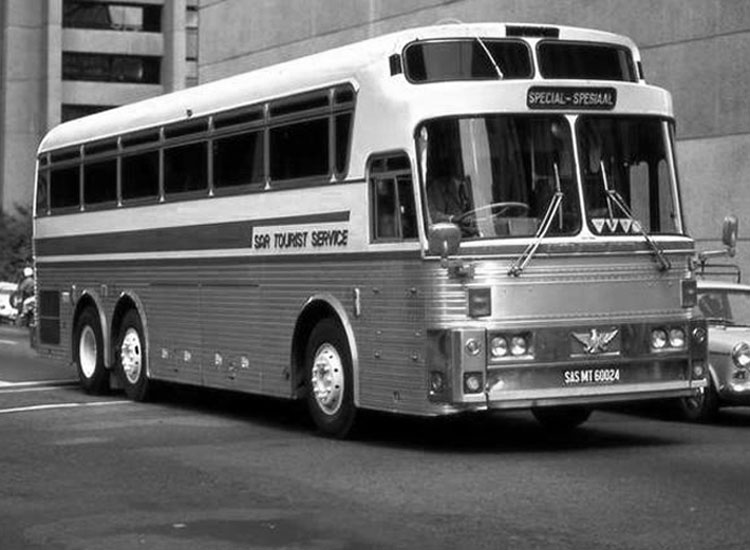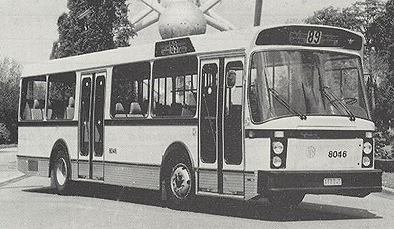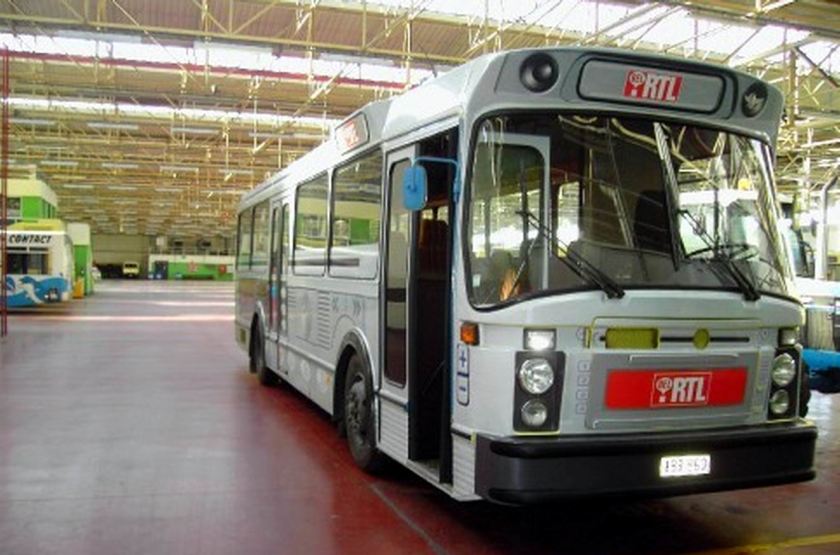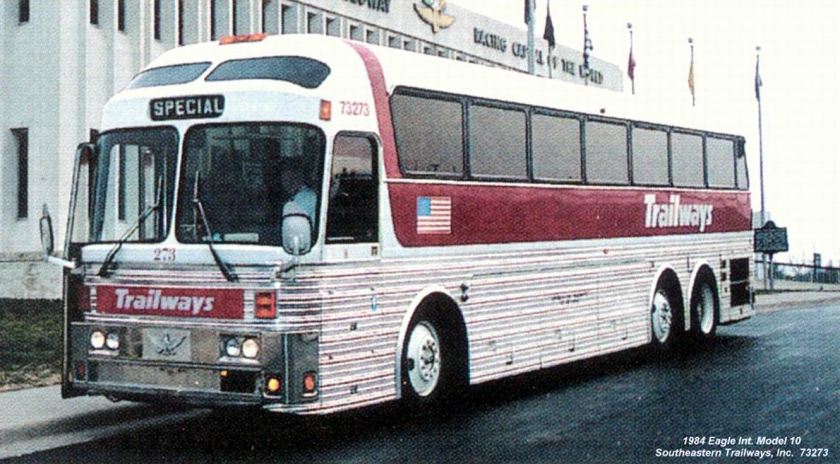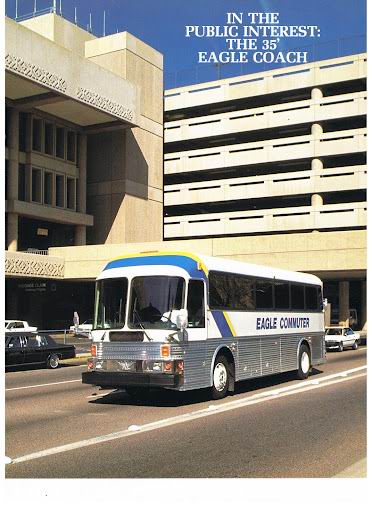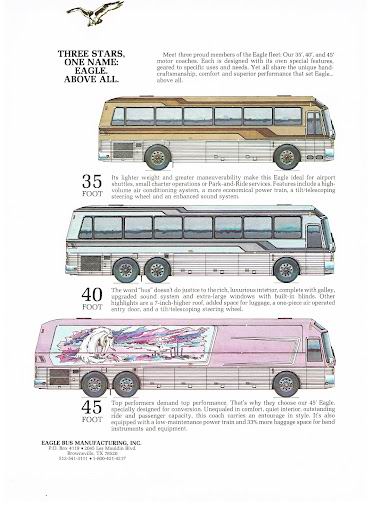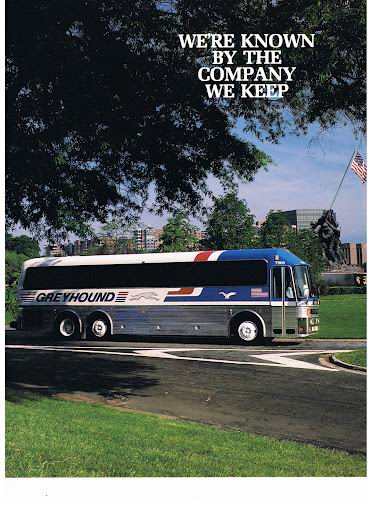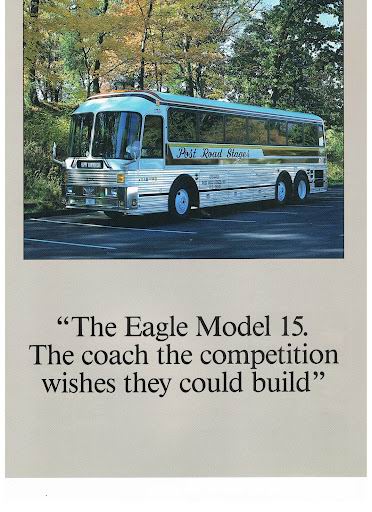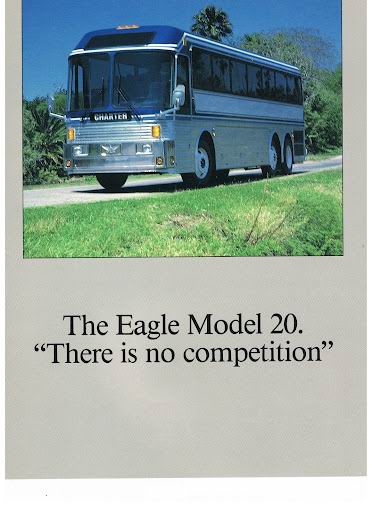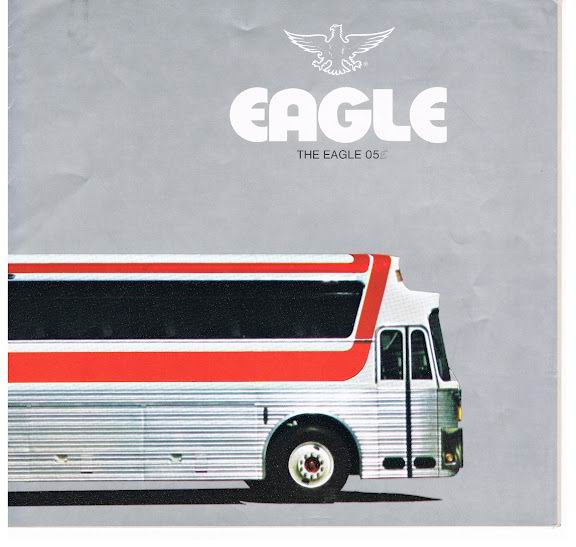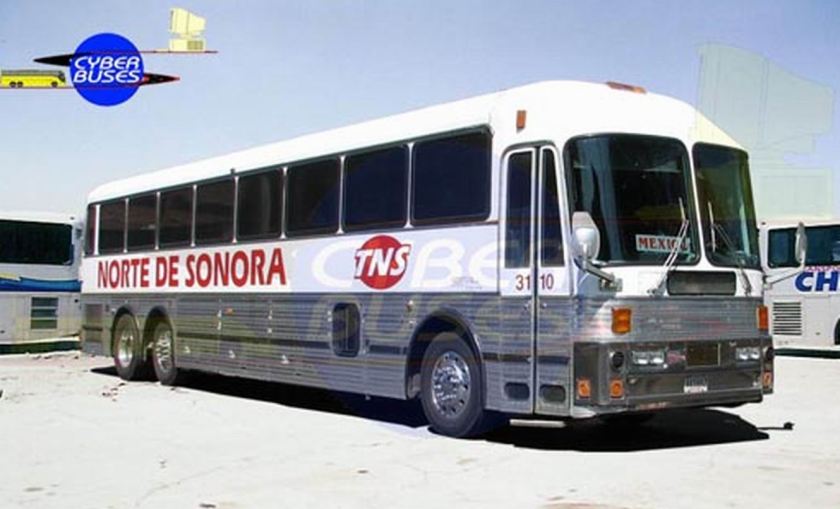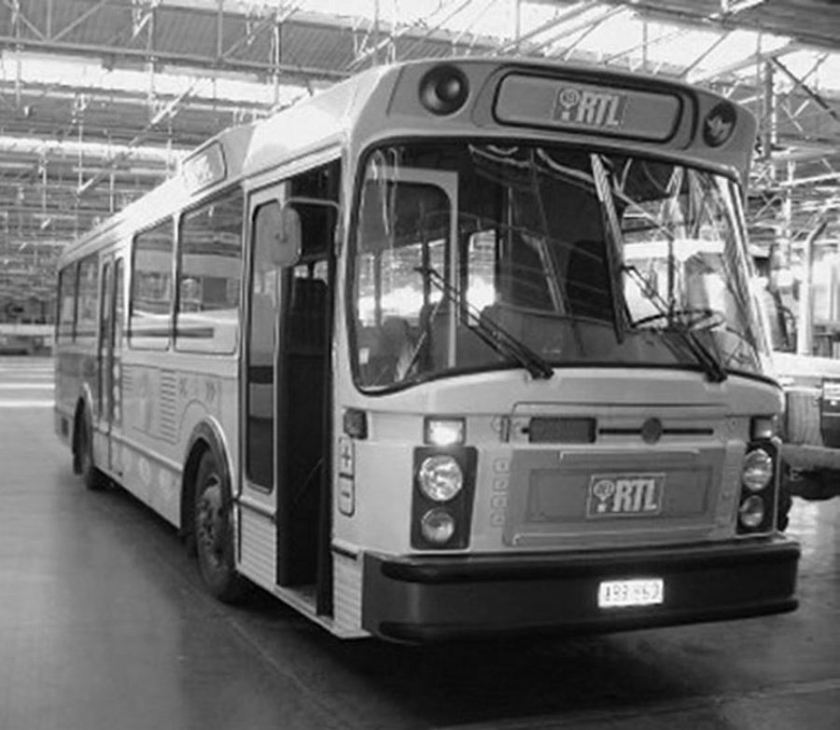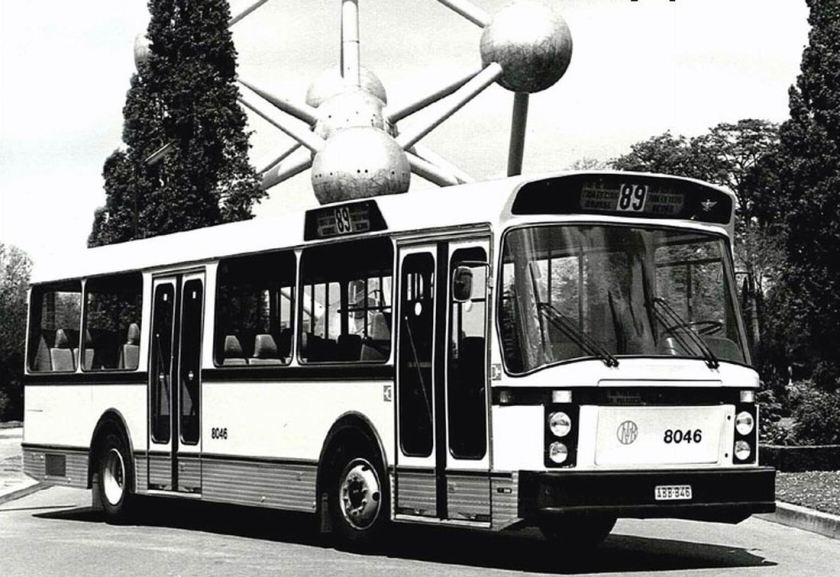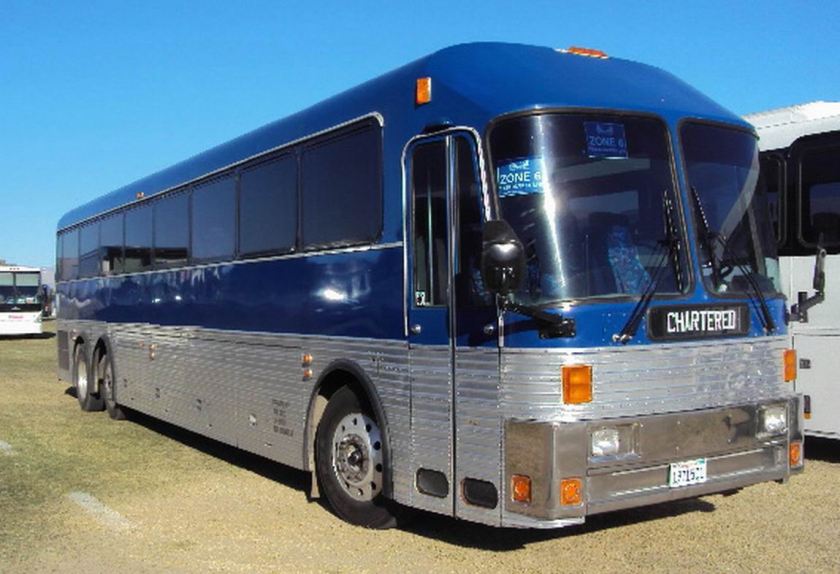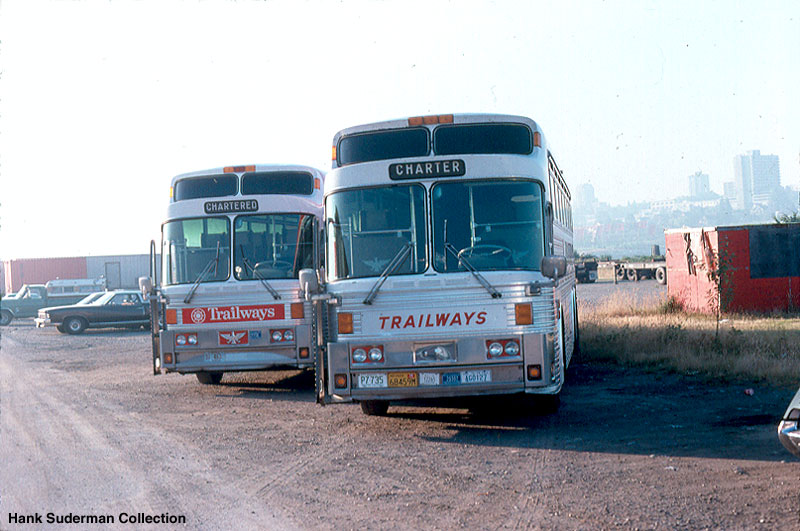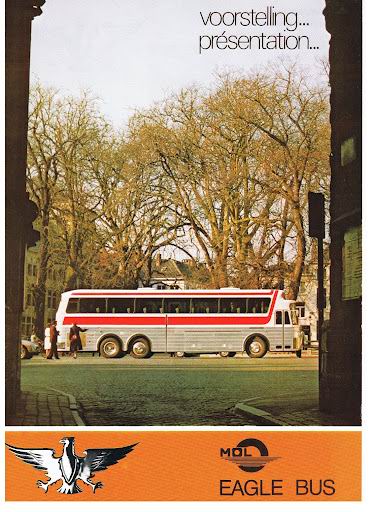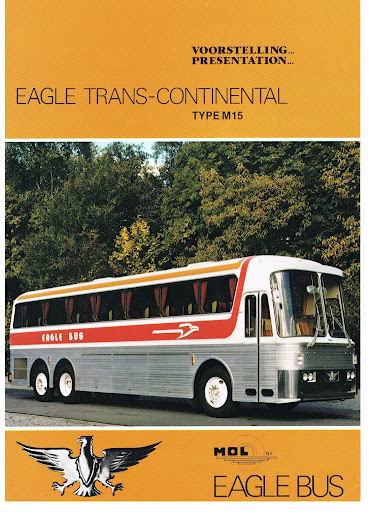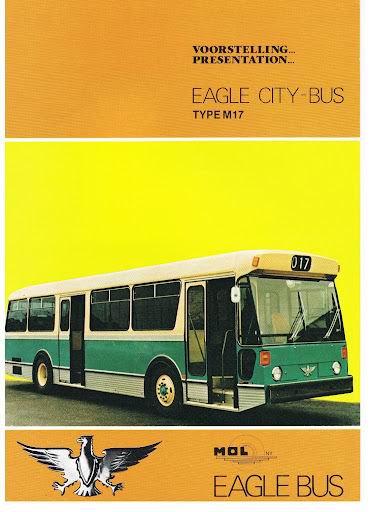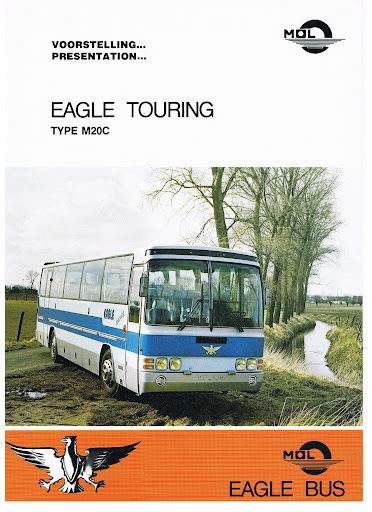Chevrolet pickup truck
Chevrolet Advance Design 1947-1955
| Chevrolet Advance-Design Series | |
|---|---|
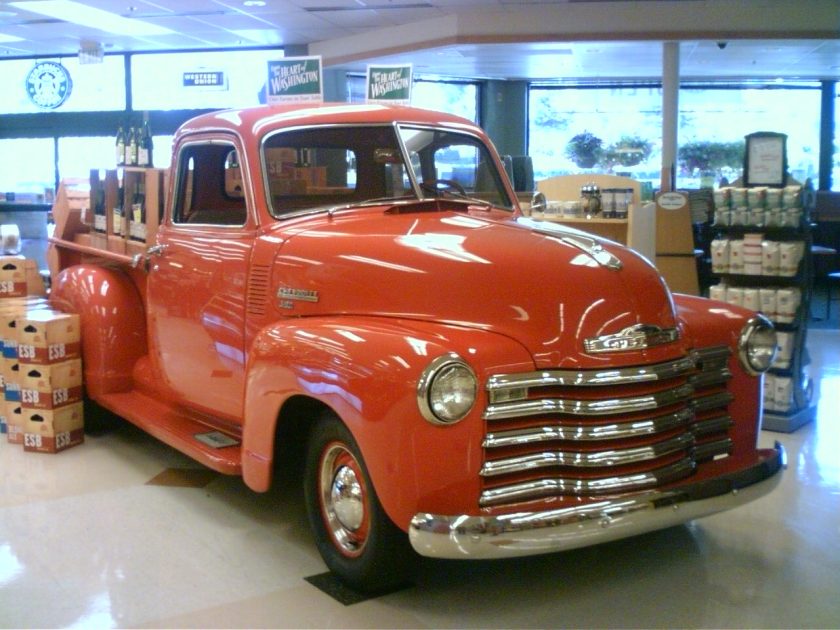 |
|
| Overview | |
| Manufacturer | Chevrolet (General Motors) |
| Also called | 3100 (½-ton) 3600 (¾-ton) 3800 (1-ton) Thriftmaster Loadmaster |
| Production | 1947–1955 |
| Assembly | Van Nuys Assembly (Van Nuys, California) St. Louis Truck Assembly (Saint Louis, Missouri) Pontiac Assembly Center (Pontiac, Michigan) |
| Body and chassis | |
| Class | Pickup truck |
| Body style | 2-door truck |
| Layout | FR layout |
| Platform | GM A platform |
| Related | Chevrolet Suburban |
| Powertrain | |
| Engine | 216 cu in (3.5 L) I6 235 cu in (3.9 L) I6 261 cu in (4.3 L) I6 |
| Transmission |
|
| Dimensions | |
| Wheelbase | 116 in (2,946 mm) 125.25 in (3,181 mm) 137 in (3,480 mm) |
| Length | 3100-196.6″(1947–1952);191.31″(1953–1955) |
| Chronology | |
| Predecessor | AK Series Pickup Truck |
| Successor | Task Force Series |
Chevrolet‘s first major redesign post-World War II, the Advance-Design series was billed as a bigger, stronger, and sleeker design in comparison to the earlier AK Series. First available on Saturday June 28, 1947, these trucks were sold with various minor changes over the years until March 25, 1955, when the Task Force Series trucks replaced the aging Advance-Design model.
The same basic design family was used for all of its trucks including the Suburban, panel trucks, canopy express and cab overs. The cab overs used the same basic cab configuration and similar grille but used a shorter and taller hood and different fenders. The unique Cab Over fenders and hood required a custom cowl area which makes the Cab Over Engine cabs and normal truck cabs incompatible with one another while all truck cabs of all weights interchange.
From 1947 until 1955, Chevrolet trucks were number one in sales in the United States, with rebranded versions sold at GMC locations.
While General Motors used this front end sheet metal, and to a slightly lesser extent the cab, on all of its trucks except for the Cab Overs, there are three main sizes of this truck: the half-, three-quarter-, and full ton capacities in short and long wheelbase.
Differences
1947 – Gasoline tank filler neck on passenger side of bed. No vent windows in doors. Hood side emblems read “Chevrolet” with “Thriftmaster” or “Loadmaster” under it. Serial numbers: EP ½ ton, ER ¾ ton, & ES 1 ton. Radios were first available in Chevrolet trucks as an “in dash” option on the “Advance-Design” body style.
1948 – Manual transmission shifter now mounted on column instead of floor. Serial numbers codes: FP ½ ton, FR ¾ ton, & FS 1 ton.
Early 1949 – Gasoline tank now mounted upright behind seat in cab; filler neck aft of passenger door handle. New serial number codes: GP ½ ton, GR ¾ ton, & GS 1 ton.
Late 1949 – Hood side emblems no longer read “Thriftmaster” or “Loadmaster”, but are now numbers that designate cargo capacity: 3100 on ½ ton, 3600 on ¾ ton, 3800 on 1 ton. Serial number codes remain the same as on early 1949.
1950 – Telescopic shock absorbers replace lever-action type. Last year for driver’s side cowl vent, its handle is now flat steel, not maroon knob as in previous years. New serial number codes: HP ½ ton, HR ¾ ton, & HS 1 ton.
1951 – Doors now have vent windows. Mid-year change from 9-board bed to 8 boards per bed. Last year for 80 MPH speedometer, chrome window handle knobs, and chrome wiper knob. New serial number codes: JP ½ ton, JR ¾ ton, & JS 1 ton.
1952 – Outer door handles are now push button type as opposed to the previous turn down style. Speedometer now reads to 90 mph and dashboard trim is painted instead of chrome. Mid-year, Chevrolet stops using the 3100-6400 designation on the hood and changes to maroon window and wiper knobs. New serial number codes: KP ½ ton, KR ¾ ton, & KS 1 ton.
1953 – Last year for the 216 in³ inline-six. Hood side emblems now only read 3100, 3600, 3800, 4400, or 6400 in large print. Door post ID plate now blue with silver letters (previous models used black with silver letters). Last year to use wooden blocks as bed supports. New serial number codes: H ½ ton, J ¾ ton, & L 1 ton.
1954 – Only year for significant design changes. Windshield now curved one-piece glass without center vertical dividing strip. Revised steering wheel. Revised dashboard. Cargo bed rails, previously angled, now horizontal. Tail lights round instead of rectangular. Grille changed from five horizontal slats to crossbar design commonly referred to as a “bull nose” grille, similar to modern Dodge truck grille. Engine now 235 in³straight-6. Serial number codes unchanged from 1953. Hydramatic automatic transmission is available for the first time as a paid for option.
1955 First Series – Identical to the 1954 model year, except redesigned hood-side emblems and modern open driveshaft in place of enclosed torque tube. Serial number codes unchanged from 1953 and 1954.
Styling Legacy
The styling for the Advance-Design trucks was the inspiration for both the Chevrolet SSR and the Chevrolet HHR.
Chevrolet Task Force
| Chevrolet Task Force Series | |
|---|---|
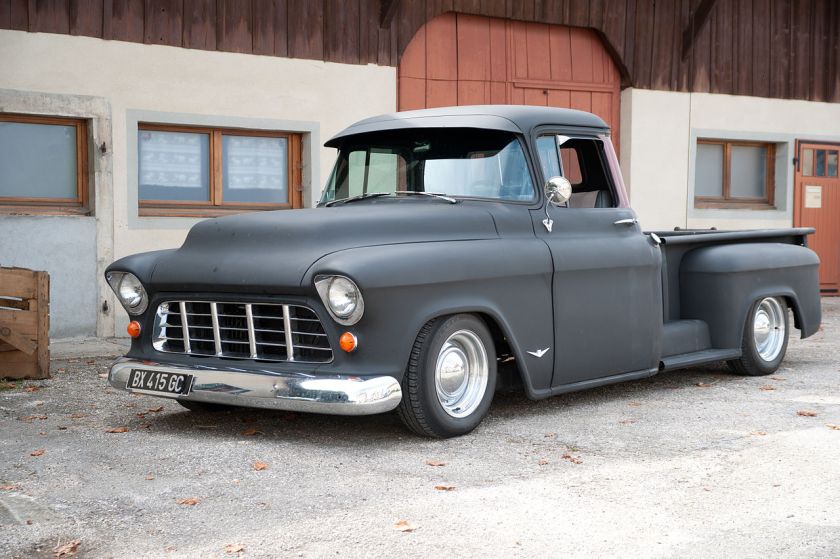
Camionette Chevrolet, Chevrolet Task Force
|
|
| Overview | |
| Manufacturer | Chevrolet (General Motors) |
| Also called | 3100 3200 3600 31 50 100 Apache Cameo Carrier Suburban Carrier Viking Spartan |
| Production | 1955–1960 |
| Assembly | Van Nuys Assembly (Van Nuys, California) Flint Truck Assembly, Flint, Michigan St. Louis Truck Assembly (Saint Louis, Missouri) Pontiac Assembly Center (Pontiac, Michigan) |
| Body and chassis | |
| Class | Pickup truck |
| Body style | 2-door truck |
| Layout | Front engine, rear-wheel drive /four-wheel drive |
| Platform | GM A platform |
| Powertrain | |
| Engine | 235 cu in (3.9 L) I6 265 cu in (4.3 L) V8 283 cu in (4.6 L) V8 |
| Transmission | 3 or 4 speed manual Hydramatic |
| Dimensions | |
| Wheelbase | 114.0 in (2,896 mm) 123.0 in (3,124 mm) |
| Chronology | |
| Predecessor | Chevrolet Advance Design |
| Successor | C/K Series |
The Chevrolet Task Force is Chevrolet‘s successor to the Advance Design trucks. The Task Force Series ran from late 1955 (second series) through 1959. At GMC locations, it was called the Blue Chip Series.
The 1955 second series offered standard options and add-ons such as 12-volt electrical systems, the first V8 (the 265 cubic inch), and fleet-side six-, seven-, and eight-foot length beds.
Differences
Nineteen fifty-five second series – first year for new body style. New “wrap-around” windshield – a truck industry first – and optional wrap-around rear window on Deluxe cabs. Power steering and power brakes became available for the first time on GM trucks. Electrical system upgraded to 12 volts. Only year for seven-foot bed length. Fenders have single headlights and one-piece emblem is mounted below horizontal line on fender. Cameo Carrier series introduced.
1956 – wider hood emblem. Two-piece fender emblems are mounted above horizontal fender line. Last year for egg crate grille.
1957 – only year for more open grille. Hood is flatter with two spears on top, similar to the 1957 Bel Air. Fender emblems are still above fender line, but are now oval-shaped, as opposed to previous versions in script.
1958 – first year for fleetside bed, significant redesign of front end. All light-duty trucks are now called “Apaches”, medium-duty trucks called “Vikings”, and heavy-duty trucks called “Spartans”. Truck has four headlights instead of the previous two and features a shorter, wider grille running the width of the front end. Parking lights are now in the grille instead of being in the front of the fender and the hood is similar to 1955/1956 models, but with a flat “valley” in the middle. First year for factory-equipped air conditioning.
1959 – minimal changes from 1958, the most apparent was a larger and more ornate hood emblem and redesigned badging on the fenders. The last year that the NAPCO (Northwestern Auto Parts Company) “Powr-Pak” four-wheel drive conversion could be factory ordered.
-
1959 Chevrolet Apache
Chevrolet C/K
Main article: List of GM platformsChevrolet C/K 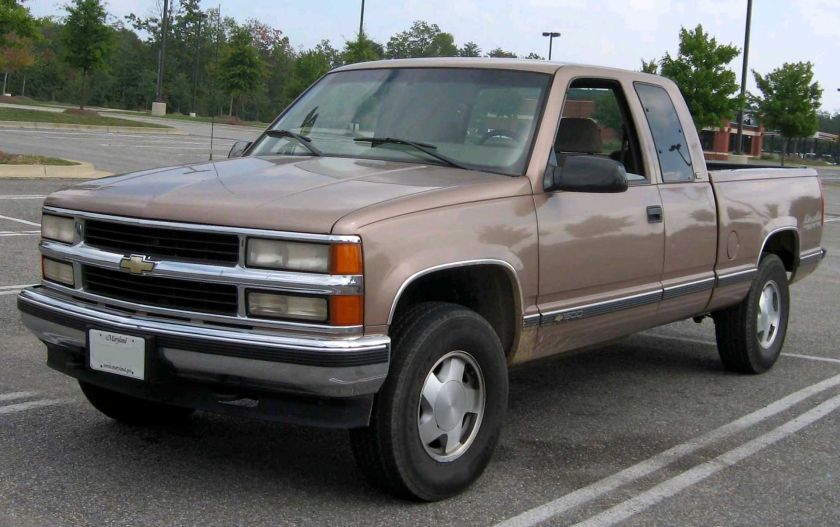
Overview Manufacturer Chevrolet/GMC (General Motors) Also called GMC C/K
GMC SierraProduction 1960–2002 (United States)
1965–2002 (Canada)
1964–2001 (Brazil)
1975–1982 (Chile)
1960–1978/1986–1994 (ArgentinaSevel)
1999-2006 (South Korea, as a renamed Silverado)Body and chassis Class Full-size pickup truck Body style 2-door regular cab
2-door extended cab
3-door extended cab
4-door crew cabLayout Front engine, rear-wheel drive /four-wheel drive Chronology Predecessor Task Force Successor Chevrolet Silverado, Chevrolet Avalanche The C/K was Chevrolet and GMC‘s full-size pickup truck line from 1960 until 2002 in the United States, from 1965 to 2002 in Canada, from 1964 through 2001 in Brazil, and from 1975 to 1982 in Chile. The first Chevrolet pickup truck came out in 1924, though in-house designs did not appear until 1930. “C” indicated two-wheel drive and “K” indicated four-wheel drive. The aging C/K light-duty pickup truck was replaced with the Chevrolet Silverado and GMC Sierra names in 1999 in the US and Canada, and 2001 in Brazil; the Chevrolet Silverado HD and GMC Sierra HD heavy-duty pickup trucks followed. Until this time, the names Silverado and Sierra were used to identify the trim level of the C/K trucks.
For the first Chevrolet C Series, made from 1911 to 1913, see Chevrolet Series C Classic Six, (the first Chevy).
First generation 1960–1966
First generation 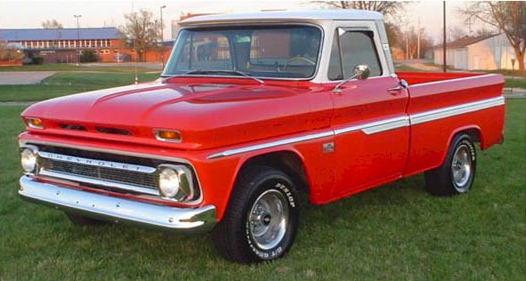
Overview Also called C10/K10
C15/K15
C20/K20
C30Production 1960–1966 Body and chassis Related Chevrolet Suburban Powertrain Engine 230 in3 (3.8 L) I6
236 in3 (3.9 L) I6
250 in3 (4.1 L) I6
261 in3 (4.3 L) I6
292 in3 (4.8 L) I6
305 in3 (5.0 L) V6
283 in3 (4.6 L) V8
327 in3 (5.3 L) V8Transmission 3-speed synchromesh manual
4-speed synchromesh manual
2-speed Powerglide automaticDimensions Wheelbase 115 in (2,921 mm) (short box)
127 in (3,226 mm) (long box)
133 in (3,378 mm) (1961–63 long box)Length 186.875 in (4,747 mm) SWB
206 in (5,232 mm) Standard
216.25 in (5,493 mm) LWBWidth 78.75 in (2,000 mm) Height 71.25 in (1,810 mm) The 1960 model year introduced a new body style of light pick-up truck that featured many firsts. Most important of these were a drop-center ladder frame, allowing the cab to sit lower, and independent front suspension, giving an almost car-like ride in a truck. Also new for 1960 was a new designation system for trucks made by GM. Gone was the 3100, 3200, and 3600 designations for short 1/2, long 1/2 and 3/4-ton models. Instead, a new scheme would assign a 10, 20, or 30 for 1/2, 3/4, and 1-ton models. Since 1957, trucks were available from the factory as 4-wheel drive, and the new class scheme would make this known. A C (Conventional) in front of the series number would indicate 2-wheel rear drive while a K would denote 4-wheel drive. Actual badging on trucks still carried the series name system from the previous generation. The cab roof used double walled steel construction unlike the other automakers who used a single steel roof. The 10, 20, 30, and 40 series (C or K) were badged as “Apache”, etc. 50, and 60 series trucks were badged as “Viking”, and the largest 70, 80, and 90 series models were marked “Spartan” etc. In 1960, C/K trucks were available in smooth “Fleetside” or fendered “Stepside” versions. GMC called these “Wideside” and “Fenderside.” Half-ton models were the C10 and K10 long-bed and short-bed trucks, and The 3/4-ton C20 and K20, as well as the one-ton C30, were also available. GMC did not use the “C” nomenclature, though their 4×4 versions had the “K” designation. GMC Model numbers for 1/2, 3/4, 1, and 1.5 ton were 1000, 1500, 2500, and 3000. The 1960,1961, & 1962 model used torsion bar front suspension, with trailing arm suspension rear. Trim lines were base and “Custom.” Engines included the base GMC 305 in3 V6for the GMC version, 135 hp (101 kW) 236 in3 (3.9 L) and 150 hp (112 kW) 261 in3 (4.3 L) straight-6s, and a 283 in3 (4.6 L) V8 with 185 hp (119 kW).
A coil-spring front suspension came in 1963; along with a new base engine, a 140 hp (104 kW) 230 in3 (3.8 L) I6, and an optional 165 hp (123 kW) 292 in3 (4.8 L) I6. The cab was changed for 1964, with elimination of the “wraparound” windshield and a new front grille design, along with various interior changes. Air conditioning and a 220 hp (164 kW) 327 in3 (5.3 L) V8 came in 1965. A new base engine finished the model in 1966 with a 155 hp (116 kW) 250 in3 (4.1 L) I6.
Second generation 1967–1972
Second generation 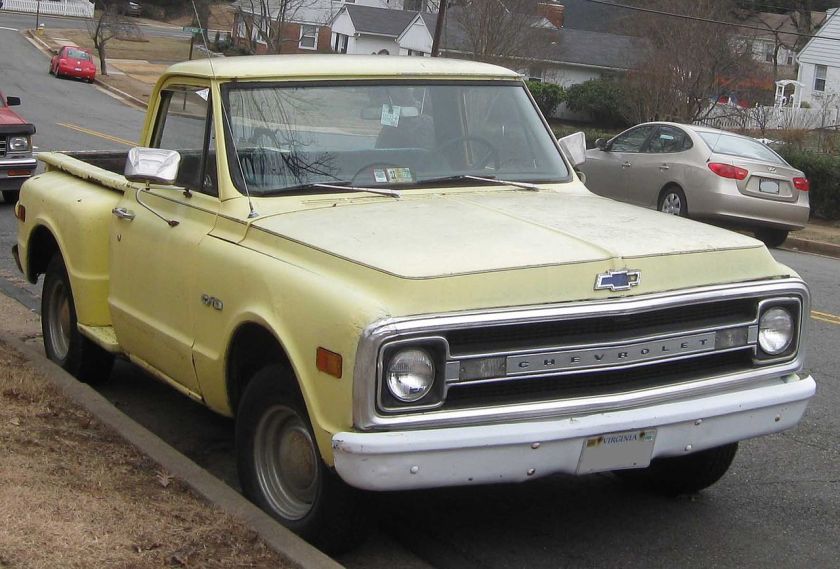
Overview Production 1967–1972 Assembly Atlanta, GA
Baltimore, MD
Pontiac, MI
Flint, MI
Tarrytown, NY
Kansas City, MO
St. Louis, MO
Janesville, WI
Norwood, OH
Fremont, CA
Oshawa, ON
Buenos Aires, ArgentinaBody and chassis Related Chevrolet Silverado
Chevrolet K5 Blazer
Chevrolet SuburbanPowertrain Engine 250 cu in (4.1 L) I6
292 cu in (4.8 L) I6
283 cu in (4.6 L) V8
307 cu in (5.0 L) V8
327 cu in (5.4 L) V8
350 cu in (5.7 L) V8
396 cu in (6.5 L) V8
402 cu in (6.6 L) V8GMC models continued to offer the 305 and 351 c.i. V6s through 1970.Transmission 3-speed manual
4-speed Muncie SM465 manual
4-speed New Process NP435manual
2-speed Powerglide automatic
3-speed THM-350 automatic
3-speed THM-400 automaticDimensions Wheelbase 115 in (2,921 mm) (short box)
127 in (3,226 mm) (long box)
133 in (3,378 mm) (Longhorn)Length 188.5 in (4,788 mm) (short box)
207.75 in (5,277 mm) (long box)
213.75 in (5,429 mm) (Longhorn Fleetside)
217.75 in (5,531 mm) (Longhorn Stepside)A new, more modern look came in 1967, along with a new nickname: “Action Line”. It was with this revision of the C/K truck that General Motors began to add comfort and convenience items to a vehicle line that had previously been for work purposes alone. Updated styling features for the 1967 Chevy Pickup trucks came with new body sheet metal that helps fight rust and a pickup box made of double-walled steel. The majority of 10 and 20 series Chevrolet trucks from 1967 to 1972 were built with a coil spring trailing arm rear suspension, which greatly improved the ride over traditional leaf springs. However, the leaf spring rear suspension was still available on those trucks, and standard on 30 series trucks. The front suspension on all Chevrolet trucks were independent front suspension with coil springs. GMC models came standard with leaf springs with coils springs optional; all four-wheel drive models (Chevrolet and GMC) had leaf springs on both axles. 1967 was the only year for the “small rear window” (RPO A10 offered a large rear window as a factory option[3]). The standard drivetrain came with a three-speed manual transmission and one of two engines; the 250 in3 straight six or the 283 cu in (4.6 L) V8. The optional transmissions were the four-speed manual, the Powerglide and the Turbo-Hydramatic 350 and 400. The 292 six and the 327 in3 V8 were the optional engines. The 1/2 ton trucks came with a 6 x 5.5–inch bolt pattern, the 3/4 and 1 ton trucks came with an 8 x 6.5–inch bolt pattern.
In 1968, the 283 cu in (4.6 L) V8 was replaced with a 307 cu in (5.0 L) and a 310 hp (231 kW), 396 cu in (6.5 L) V8 was offered for the first time. The most visible change in differentiating a 1968 from a 1967 was the addition of side-marker reflectors on all fenders. Also, the small rear window cab was no longer available. The GMC grille was revised, with the letters “GMC” no longer embossed in the horizontal crossbar. Another addition was the Custom Comfort and Convenience interior package that fell between the Standard cab and CST cab options. In 1968, Chevrolet celebrated 50 years of truck manufacturing, and to commemorate, they released a 50th Anniversary package, which featured an exclusive white-gold-white paint scheme. Also in 1968, the Longhorn model debuted on 3/4 ton trucks. Featuring a 133-inch wheelbase identical to the one-ton vehicles, it added an extra 6 inches to the bed. Longhorns, interestingly, were 2wd only; no factory Longhorn 4×4 was built.
The 327 c.i. V-8 engine was enlarged in 1969 to 350 CID (stroke increased from 3.25 to 3.48) with a net horsepower rating of 195-200, depending on emissions package 255 hp (190 kW), 350 cu in (5.7 L). Along with the new engines came a new grille design for Chevrolet trucks and a more upright hood for both Chevrolet and GMC trucks. A utility variant, known as the K5 Blazer, was also introduced with a shorter wheelbase of 104 inches (2,642 mm). The GMC version, known as the Jimmy, was introduced the same year. Some internal cab changes were also made, most notably the switch from a hand-operated parking brake to a foot pedal, and a more modern looking two-spoke steering wheel with plastic horn button replaced the previous year’s three-spoke wheel with chrome horn button. Also new this year were upper and lower side moldings, which added another two-tone paint option. These were standard on CST trucks, and optional in any other trim level.
The only noticeable change for 1970 was a minor update to the Chevrolet grille. At first glance, the 1969 and 1970 grilles appear identical. However, the 1970s plastic inserts actually have highlights that break the appearance into six separate sections. The 396, while still sold as such, was enlarged to 402 cubic inches starting in 1970.
Several changes occurred in 1971. First came another new grille design (the “egg crate”) for Chevrolet trucks and black paint over portions of the GMC grille. Second, an additional trim package was introduced: the Cheyenne. On GMC models, this was referred to as the Sierra. These packages consisted mostly of comfort features — nicer interiors, more padding and insulation, carpet, chrome trim, and upper and lower side molding and tailgate trim. 1971 was the first year for AM/FM radios factory installed. Finally, the front brakes on all light-duty trucks were switched from drum brakes to disc brakes, resulting in much less brake fade under heavy use. While many prior C/K half-ton trucks had used a six-lug bolt pattern (6 x 5.5″) for the wheels, two-wheel-drive models switched to a five-lug pattern (5 x 5–inch bolt circle) common to Buick,Oldsmobile, Pontiac, and Cadillac passenger cars. The 1/2 ton 4 x 4 retained the 6 lug bolt pattern. This bolt pattern would remain the standard through the end of the C/K series (along with the Chevrolet/GMC vans). Also, Chevrolet changed the 396 V8 emblem designation to 400 V8.
The 1972 models were virtually identical to 1971 models, with the only change being the rear view mirror was glued to the windshield instead of being bolted to top of the cab, and metal or vinyl-covered flat door panels were no longer available; all trim level door panels were molded plastic with integral armrests and wood grain inserts on Cheyenne and Sierra trim levels. For restoration, it should also be noted that the door and window cranks were slightly longer due to the molded plastic door panels, and the vent windows were now secured with a single screw on the inside of the door, thus differentiating it from the 1971 model year.
Engines
Year 1967 1968 1969 1970 1971 1972 Inline 6 250 in3
292 in3250 in3
292 in3250 in3
292 in3250 in3
292 in3250 in3
292 in3250 in3
292 in3V6 (GMC) 305 in3
351 in3305 in3
351 in3305 in3 V8 283 in3
327 in3307 in3
327 in3
396 in3307 in3
350 in3
396 in3307 in3
350 in3
396 in3307 in3
350 in3
402 in3307 in3
350 in3
402 in3Trim Levels (Chevrolet)
Years Base Mid-level Top-line Special 1967–70 C/10 Custom/10 CST/10 1971 Custom/10 CST/10 Cheyenne/10 late 1971–72 CST/10 Cheyenne/10 Cheyenne Super Cheyenne Highlander A 10, 20, or 30 on the emblem indicates 1/2, 3/4, or 1 ton trucks. There are also 40, 50, 60, and 70-series trucks, being a 1½ ton (40), a light duty 2 ton (50), a 2 ton (60), and a heavy duty 2 ton truck (70). These models share the cabin but sit on a taller chassis and have a taller front end of a different design, with a clamshell hood.
Trim Levels (GMC)
Years Base Mid-level Top-line Special 1967–70 1500 Custom 1500 Super Custom 1500 1971 Custom 1500 Super Custom 1500 Sierra 1500 late 1971–72 Super Custom 1500 Sierra 1500 Sierra Grande 1500 Sierra Highlander 1500, 2500, and 3500 designations were used to indicate 1/2, 3/4, and 1-ton trucks.
In both series, the ‘Highlander package’ included special color-coordinated houndstooth cloth inserts and additional trim colors and insulation.
Third generation 1973–1991
An all-new clean sheet redesign of General Motors’ Chevrolet and GMC brand C/K-Series pickups débuted in mid-1972 for the 1973 model year. Development of the new third-generation trucks began in 1968 with vehicle components undergoing simulated testing on computers before the first prototype pickups were even built for real world testing. The redesign was revolutionary in appearance at the time, particularly the cab, departing from typical American pickup truck designs of the era. Aside from being near twins, the Chevrolet and GMC pickups looked like nothing else on the road. The third-generation trucks are officially known as the “Rounded-Line” generation. GM’s “Rounded-Line” moniker highlighted the pickup’s rounded-lines or rounded styling cues that were incorporated into the design. These rounded-lines included rounded windshield corners, rounded cab roof, sloped rounded doors which cut high into the cab roof eliminating roof height, rounded front fenders, and rounded pickup box corners which allowed for rounded or curvedwraparound taillamps, a first for GM pickups. The design also featured strong distinctive curved shoulderlines which rounded out below the beltline. The curved shoulderline continued across the back tailgate on Chevrolet Fleetside and GMC Wideside models. A popular, but incorrect nickname for these trucks is “square body”. As this name did not originate from General Motors, it is therefore not official. The erroneous square body name was propagated through poorly researched truck magazines and dubious word of mouth.
GM’s design engineers fashioned the “Rounded-Line” exterior in an effort to help improve aerodynamics and fuel efficiency, using wind tunnel technology to help them sculpt the body. Other design traits include “double-wall” construction, sleek sculpted body work, a aerodynamic cab with steep windshield rake, and a unique available hidden radio antenna embedded into the windshield glass.
There were two types of pickup boxes to choose from. The first type, called Fleetside by Chevrolet and Wideside by GMC, was a “double-wall” constructed full width pickup box and featured a flared shoulderline to complement the cab in addition to rounded box corners and the new aforementioned rounded wraparound taillamps. Both steel and wood floors were available. The second type, called Stepside by Chevrolet andFenderside by GMC, was a narrow width pickup box featuring steps and exposed fenders with standalone tail lamps. Initially, only wood floors were available.
The wheelbase length was extended to 117.5 in (2985 mm) for the short wheelbase pickups, and 131.5 in (3340 mm) for the long wheelbase pickups. A new dual rear wheel option called “Big Dooley” was introduced on one-ton pickups, along with a new Crew Cab option on the 164.5 in (4,178 mm) wheelbase. An optional Elimipitch camper was made available for the Big Dooley. Crew Cabs were available in two versions: a “3+3” which seated up to six occupants and “bonus cab” which deleted the rear seat and added rear lockable storage in its place. The fuel tank was moved from the cab to the outside of the frame, and a dual tank option was available which brought fuel capacity to 40 US gallons. 1980 was the first year that a cassette tape player could be purchased, along with a CB radio.
The Rounded-Line generation ultimately ran for a lengthy 19 model years (1973–1991) with the exception of the Crew Cab, Blazer, Jimmy, and Suburban versions, which continued up until the 1991 model year.
Interior and safety
The third-generation pickups were offered in several equipment level packages or trim packages. Chevrolet/GMC used various names for the trim levels throughout the vehicle’s life cycle and some were rearranged in their class order. For the 1973 and 1974 model years, the base (standard) trim level was Custom/Custom, mid-range trims were Custom Deluxe/Super Custom, luxury trims were Cheyenne/Sierra, and top-of-the-line luxury trim levels were Cheyenne Super/Sierra Grande.
For the 1975 model year the trim levels were revised and the base trims were now Custom Deluxe/Sierra, mid-range trims were Scottsdale/Sierra Grande, luxury trims were Cheyenne/High Sierra, and the top-of-the-line luxury trim levels were now known as Silverado/Sierra Classic. They remained in this configuration up to the 1991 model year. For the 1982 model year, the luxury trim levels were dropped, leaving the base, midcurange, and top-of-the-line luxury trim level packages.
Soft touch materials were used throughout the passenger cabin, such as the dashboard, doors (arm rests), steering wheel, and shift levers. Subtle grained interior panels and bright metal work was used on the inside with high-quality materials also used on the outside, like chrome, aluminium, and polished stainless steel, particularly on top-of-the-line luxury Silverado or Sierra Classic trim levels. Custom Vinyl vinyl or soft Custom Cloth cloth and velour seating surfaces were used along with fabric headliners, door inserts, and plush carpeting, depending on the trim level. Upper class trim levels also used acoustic deadening materials for quieter ride comfort. From model years 1973 to 1977, chestnut wood grain inserts were used on the dashboard and doors for further visual enhancement. The wood grain inserts were replaced by bright brushed aluminiuminserts for model years 1978 to 1987. A Delco AM/FM audio sound system and an all-season climate control system that heated, cooled, cleaned, and dehumidified were optional extras.
At its launch in 1972, the Rounded-Line C/K-Series introduced two firsts in safety advancements concerning full-size pickups, and would later lead a third safety advancement in 1975. The first was the standard passenger-side sideview mirror, and the second was the energy-absorbing collapsible steering column. Patented by GM and already in use in its cars since 1967, the new energy-absorbing steering column was standard on all C-Series and K-Series models.
The third safety advancement was the introduction of dual front lap-and-shoulder safety belts with emergency locking retractors for outboard occupants in 1975 for the 1976 model year. These replaced the outdated and inadequate lap belts previously used. A center lap safety belt with slack adjustment was provided for the center occupant. Ford and Dodge would follow one model year later adding lap-and-shoulder safety belts to their pickups.
Other safety features included soft-padded interior panels for appearance and safety, 3,329 square inches of tempered and laminated safety glass, prismatic rearview mirror, six turn-signal indicator lamps with asymmetrical flash, four-way hazard function, and lane departure function.
Chassis and powertrain
Third-generation Rounded-Line C/K-Series pickups gained an all-new, high tensile strength carbon steel ladder type frame with “drop center” design. Steering controls included variable-ratio recirculating ballsteering gear with optional hydraulic power assist. Braking controls included front self-adjusting disc brakes with rear finned drum brakes and optional four-wheel hydraulic Hydra-Boost or Vacuum-Boost power assist. Engines choices initially consisted of six or eight cylinder engines with either manual or Turbo Hydra-Matic transmissions.
C-Series pickups included two-wheel drive and featured an independent front suspension (IFS) system with contoured lower control “A” arms and coil springs. GM’s new Load Control rear suspension system took up residence in the back. The Load Control rear suspension system consisted of a rear live axle with dual stage Vari-Rate multi-leaf springs and asymmetrical (offset) shock absorber geometry, to help sort out any “wheel hop” under heavy loads or hard acceleration.
K-Series pickups included either Conventional, Permanent, or Shift-on-the-move four-wheel drive. The latter system was introduced for 1981. Regardless of the type of four-wheel drive system equipped, all K-Series pickups featured four-corner Vari-Rate multi-leaf springs, front live axle with symmetrical (inline) shock absorber geometry, and the Load Control rear suspension system. K-Series pickups also featured an off road oriented design, with the transfer case bolted directly to the transmission and running gear tucked up as high as possible under the vehicle to reduce the chances of snagging vital components on obstacles, as well as to achieve a low silhouette and optimal ground clearance. Exposed brake lines wrapped in steel were standard, with underbody skid plate armor optional for further protection.
Conventional four-wheel drive pickups featured manual locking hubs and a two-speed dual range New Process 205 transfer case with four drive modes: Two High, Four High, Neutral, and Four Low. Two High gave a 0:100torque split, while Four High yielded a locked 50:50 torque split. Four Low applied reduction gearing. The front and rear propeller shafts were locked at all times in Four High and Four Low. Neutral allowed for flat towing, or use of the power take off (PTO).
Permanent four-wheel drive pickups featured a two-speed dual range New Process 203 transfer case with planetary center differential and lock. Five drive modes were provided: High, Low, Neutral, High Loc, and Low Loc. In High the center differential was unlocked and allowed the front and rear propeller shafts to slip as needed for full-time operation. The system could be manually shifted into High Loc which locked the center differential for a locked 50:50 torque split. Low and Low Loc applied reduction gearing with or without lock, depending on the mode selected. Neutral was also available for use of the PTO.
A new Eaton Automatic Differential Lock (ADL) was introduced in 1973 as an optional extra on the Rounded-Line C/K-Series pickups, for the rear hypoid differential. The new automatic locking differential was offered under the G86 code, replacing the Eaton NoSpin differential, and eventually replacing the old Positraction limited-slip differential in 1974, at which point it assumed the G80 code. The Eaton ADL featured intelligent differential control via an internal governor which monitored vehicle speed and wheel slip to know when to automatically lock and could lockup 100 percent at or below 20 mph (32 kph) increasing tractive effort. The differential lock would unlock and deactivate at speeds above 20 mph for safety reasons, such as the vehicle being on dry pavement.
Towing and payload capacity ratings for Rounded-Line C/K-Series pickups varied, depending on how they were configured. Factors such as engine and transmission combination, differential gear ratio, curb weight, and whether the pickup was two-wheel drive or four-wheel drive decided how much the pickup could safely tow or haul.
A properly equipped C-Series half-ton class pickup could tow up to 8,000 lbs (4 tons) of braked trailer, while a properly equipped C-Series three quarter-ton or one-ton class pickup could tow up to 12,000 lbs (6 tons) of braked trailer. Adding four-wheel drive reduced towing capability due to increased curb weight, which resulted from additional driveline components (transfer case, front axle, front differential, front propeller shaft, and so on) needed to facilitate four-wheel drive. A properly equipped K-Series half-ton or three quarter-ton class pickup could tow up to 6,500 lbs (3.25 tons) of braked trailer, whilst a properly equipped K-Series one-ton class pickup could tow 500 lbs more, up to 7,000 lbs (3.5 tons) of braked trailer.
Heavy-duty towing equipment was available for both C and K-Series pickups, such as the Trailering Special package (included power steering, uprated battery, and uprated generator), 7-pin trailer electrics connector, heavy-duty engine oil cooler, heavy-dutytransmission oil cooler, and a weight distributing trailer hitch.
For the 1975 model year, the 185 hp 400 cu in (6.6 L) small-block V-8 was added to the line and there was a realignment of Chevy trim levels, along with new grilles and clear/white instead of orange front turn signals. Base models gained a passenger-side woodgrain dash accent and a new plaid upholstery pattern (which would change slightly each year until 1978).
A new gauge to show voltage replaced the ammeter in 1976, and the engine size decals were removed from the grille during this model year.
For 1977 models, power windows and power door locks were introduced as an optional extra. There was another round of new grilles, revised inner door panels that left less metal exposed, a four-wheel drive, full one-ton chassis was added to the lineup, and a Dana 60 was used for the front axle, as well as an electric oil pressure gauge replacing the mechanical unit. Trucks with an optional trim level, but without an additional wheel upgrade, received flatter stainless steel hubcaps, still with painted accents. This was also the only year with yellow painted trim instead of black.
The addition of the first diesel engine of the three American automakers in a light duty pickup the 125 hp 350 cu in (5.7 L) Oldsmobile diesel V-8 began in 1978. All models got new, flatter dash trim panels, black on the lower two trims and aluminum-look on the fancier two. Base models received the flatter stainless hubcaps, and Stepsides got new squared-off taillights with built-in backup lights and side markers, while the rear fenders were smoothed out where the old side markers were.
The 1979 models got a new grille surround that incorporated the turn signals; inside there was a new full-width “houndstooth” seat trim on base models and a (rare) fifth interior color option on the higher series called “oyster” by Chevrolet and “Mystic” by GMC (mostly white with a gray dash, carpeting and cloth). Fuel doors were added to the bed sides to hide the previously exposed fuel caps.
For the 1980 model year, permanent four-wheel drive was discontinued on K-Series, leaving only conventional four-wheel drive. Some pickups gained a new grille, others did not; high-trim Chevys had both a new surround that incorporated near-flush square headlights and revised turn signals with a new, squarer grille pattern, while a GMC base model was entirely carryover, base Chevys had the new center section in the 1979 surround while GMCs with uplevel trims or the separate RPO V22 option had the new square-light surround with the main grille introduced in 1977. Blue interiors were a darker shade than before.
Engines
Year Engine Power Torque Notes 1981–1984 4.1 L GMC 250 I-6 115 hp (86 kW) @ 3600 RPM 200 lb·ft (271 N·m) @ 2000 RPM 1983 120 hp (89 kW) @ 4000 RPM 205 lb·ft (278 N·m) @ 2000 RPM C1 1985–1986 4.3 L LB1 90º V-6 155 hp (116 kW) @ 4000 RPM 230 lb·ft (312 N·m) @ 2400 RPM 1987-1991 160 hp (119 kW) @ 4000 RPM 235 lb·ft (319 N·m) @ 2400 RPM 1981–1985 4.8 L GMC 292 I-6 115 hp (86 kW) @ 3400 RPM 215 lb·ft (292 N·m) @ 1600 RPM 1986 115 hp (86 kW) @ 4000 RPM 210 lb·ft (285 N·m) @ 800 RPM 1981–1982 5.0 L 305 V-8 130 hp (97 kW) @ 4000 RPM 240 lb·ft (325 N·m) @ 2000 RPM 2-barrel 1981–1982 165 hp (123 kW) @ 4400 RPM 240 lb·ft (325 N·m) @ 2000 RPM 1/2 Ton w/ 4-barrel 1981–1982 160 hp (119 kW) @ 4400 RPM 235 lb·ft (319 N·m) @ 2000 RPM all others w/ 4-barrel 1983–1986 165 hp (123 kW) @ 4400 RPM 240 lb·ft (325 N·m) @ 2000 RPM less than 8500# GVWR 1983 160 hp (119 kW) @ 4400 RPM 235 lb·ft (319 N·m) @ 2000 RPM over 8500# GVWR 1987-1991 170 hp (127 kW) @ 4000 RPM 260 lb·ft (353 N·m) @ 2400 RPM 1981–1986 5.7 L 350 V-8 165 hp (123 kW) @ 3800 RPM 275 lb·ft (373 N·m) @ 1600 RPM less than 8500# GVWR 1987 210 hp (157 kW) @ 4000 RPM 300 lb·ft (407 N·m) @ 2800 RPM 1981–1985 160 hp (119 kW) @ 3800 RPM 250 lb·ft (339 N·m) @ 2800 RPM over 8500# GVWR 1986 185 hp (138 kW) @ 4000 RPM 285 lb·ft (386 N·m) @ 2400 RPM 1987 185 hp (138 kW) @ 4000 RPM 295 lb·ft (400 N·m) @ 2400 RPM 1981–1982 7.4 L 454 V-8 210 hp (157 kW) @ 3800 RPM 340 lb·ft (461 N·m) @ 2800 RPM 1983–1985 230 hp (172 kW) @ 3800 RPM 360 lb·ft (488 N·m) @ 2800 RPM 1986 240 hp (179 kW) @ 3800 RPM 375 lb·ft (508 N·m) @ 3200 RPM 1987 230 hp (172 kW) @ 3600 RPM 385 lb·ft (522 N·m) @ 1600 RPM 1982–1987 6.2 L Detroit Diesel V-8 130 hp (97 kW) @ 3600 RPM 240 lb·ft (325 N·m) @ 2000 RPM less than 8500# GVWR 1982–1984 135 hp (101 kW) @ 3600 RPM 240 lb·ft (325 N·m) @ 2000 RPM over 8500# GVWR 1985–1991 148 hp (110 kW) @ 3600 RPM 246 lb·ft (334 N·m) @ 2000 RPM 1981 mid-life cycle facelift
A mid-life cycle cosmetic facelift and mechanical refresh was carried out for the 1981 model year. In response to the recent 1979 energy crisis, the 1981 rework featured several fuel saving techniques to help make the Rounded-Line C/K-Series pickups more fuel efficient. Again, engineers turned to wind tunnels to resculpt the front end with new sheet metal, reducing areas which could hinder air flow and cause drag. A sleeker front bow-like look emerged, similar to a ship’s bow with the front end being gently swept back from the center. New dual tier halogen headlamps became available with the Deluxe Front Appearance package. Mechanical updates included more anti-corrosion techniques, reduced weight, and a new 5.0 L 305 cubic inch V-8 with electronic spark control. The 5.7 L 350 cubic inch pushrod V-8 was dropped from the half-ton class pickups, except in California where it was offered in place of the new 5.0 L 305 engine with electronic spark control, which did not meet California’s emissions requirements.
A new Shift-on-the-move four-wheel drive system with two-speed dual range New Process 208 aluminium transfer case was introduced on K-Series pickups for the 1981 model year. It replaced the permanent four-wheel drive system, on pre-1980 models. The shift-on-the-move four-wheel drive system featured new automatic self locking hubs and synchronized direct high range planetary gearing, such that the truck could be shifted from two-wheel drive, to fully locked four-wheel drive at speeds of up to 25 mph. Once the shift from two-wheel drive to four-wheel drive was made, the vehicle could be driven at any forward or reverse speed. Four drive modes were offered: Two High, Four High, Neutral, and Four Low. Two High gave a 0:100 torque split, with Four High yielding a locked 50:50 torque split through direct synchronized gearing. Four Low applied reduction gearing. The front and rear propeller shafts were locked at all times in Four High and Four Low. Neutral was provided for disengagement of both propeller shafts. Conventional four-wheel drive was still available with manual locking hubs.
A new four-speed Turbo Hydra-Matic 700R4 transmission with overdrive gearing became available in 1981 for the 1982 model year. The 151 hp 379 cu in (6.2 L) Detroit Diesel V-8 was added to replace the LF9 Oldsmobile diesel. Chrome front bumpers were now standard on base models.
1985 saw the new 262 cu in (4.3 L) LB1 introduced to replace both inline-six engines. Hydraulic clutches were introduced. Also, a new grill was used. The most expensive radio was the AM/FM stereo seek/scan with cassette tape at $594. A variation of the C/K series was introduced in 1985 in Brazil, replacing the locally produced C10, introduced in 1964.
R/V-Series
For the 1991 model year, the last model year for the conventional cab pickups, the Rounded-Line C/K-Series were renamed the R/V-Series. R-Series now designated two-wheel drive, while V-Series represented four-wheel drive. The name change is also found in the vehicle identification number. This was done in preparation for the next generation GMT400 trucks, which were produced concurrently with the older line. The new 1988 model trucks entered production December 8, 1986 at Pontiac East, Oshawa, and the new Fort Wayne plant. The 1987 models continued to be built at Janesville, St. Louis, and Flint.
Along with the name change, came other major improvements and tweaks for the final model year of the conventional cab pickups. Single-point electronic throttle-body fuel injection (TBI) was introduced on GM’s full-size pickups, with new electric fuel pumps and high-pressure fuel lines. In addition, a “smart” powertrain control module (PCM) was also introduced, which controlled the fuel injection system, fuel-to-air burn ratio, engine ignition timing, and (if equipped with an automatic transmission) the Turbo Hydra-Matic’sturbine torque converter clutch. The 5.7 L 350 cubic inch pushrod V-8 was reintroduced to the order books for R-Series and V-Series half-ton class pickups, with the new TBI fuel injection system. Horsepower and torque output was increased to 210 hp, and 300 lb-ft of torque.
After 1987, R/V remained in use for the Rounded-Line one-ton crew cab pickups through 1991 (built at Janesville), and the Rounded-Line utilities (Chevrolet K5 Blazer and Suburban, built at Flint) through 1991. From the 1988 model year and onward, C/K was re-used for the fourth-generation “GMT400” design.
-
GMC Medium-Duty conventional, predecessor to the Topkick
Sidesaddle fuel tank controversy
The third generation of GM’s full-size pickup line featured a fuel tank design that saw some criticism after the model run ended. The fuel tank was relocated from the cab to the outboard sides of one or both frame rails beneath the cab floor extending under the leading edge of the pickup box, commonly referred to as a sidesaddle arrangement. This enlarged fuel capacity from 16 up to 40 gallons depending on wheelbase and the number of tanks. This also removed the tank from the passenger compartment.
According to a now debunked 1993 report which aired on Dateline NBC, this arrangement made the trucks capable of exploding when involved in a side collision. The faked video was staged by an expert witness for hire against GM, Bruce Enz of The Institute for Safety Analysis. Enz used incendiary devices and a poorly fitted gas cap to create the impression of a dangerous vehicle. It was also revealed that the Dateline report was dishonest about the fuel tanks rupturing and the alleged 30 mph (48 km/h) speed at which the collision was conducted. The actual speed was found to be higher, around 40 mph (64 km/h), and after x-ray examination of the fuel tanks from the C/K pickups used in the staged collision, it was discovered they had not ruptured and were intact.
Fatality figures vary wildly. A study by Failure Analysis Associates (now Exponent, Inc.) found 155 fatalities in these GM trucks between 1973 and 1989 involving both side impact and fire. The Center for Auto Safety, Ralph Nader’s lobbying group, claims “over 1,800 fatalities” between 1973 and 2000 involving both side impact and fire. Other commentators noted that regardless of any increased risk of fire, the GM trucks had statistically indistinguishable safety records in side-impact crashes from their Ford and Dodge equivalents.
Also notable, was the fact that the sidesaddle fuel tanks themselves, were found to have a well-engineered robust design and form factor, which was highly resistant to crushing or crumpling from a side-impact. The heavy-duty design of the sidesaddle fuel tanks allowed them to not only comply with, but also far exceed the U.S. government’s safety standards, which specifically address the dangers of fuel tank rupturing in side collisions. Studies showed that it would take about 4,000 side-impact crashes with a Rounded-Line GM pickup to get one with fire, major injury, or fatality.
In 1993 the bad publicity generated by the later debunked Dateline story spawned several class action lawsuits. As settlement GM offered owners $1000 coupons toward the purchase of a new truck with a trade-in of the old one. Even though the trucks met NHTSA 15 and 20 mph side impact crash test standards in place at the time of manufacture, GM eventually settled with the U.S. National Highway Traffic Safety Administration (NHTSA) in 1994 for the amount of $51 million to be used for safety programs. The fourth-generation C/K-Series pickups (1988–2001) were designed and produced well before the lawsuits, with one fuel tank inside the frame rails.
Foreign production
Sevel Argentina S.A. built the Chevrolet C10 in its Córdoba plant from 1985 to 1991. The gasoline version used the Chevy 250 CID engine (4,093 cc) familiar to most Latin American markets, producing 130 hp. Because of Sevel being a subsidiary of Peugeot, the C10 was also available with a 70 hp Indénor XD2 2,304 cc diesel engine, perhaps best known in the US from the Peugeot 504.
Fourth generation 1988–2002 (GMT400)
Fourth generation / GMT400 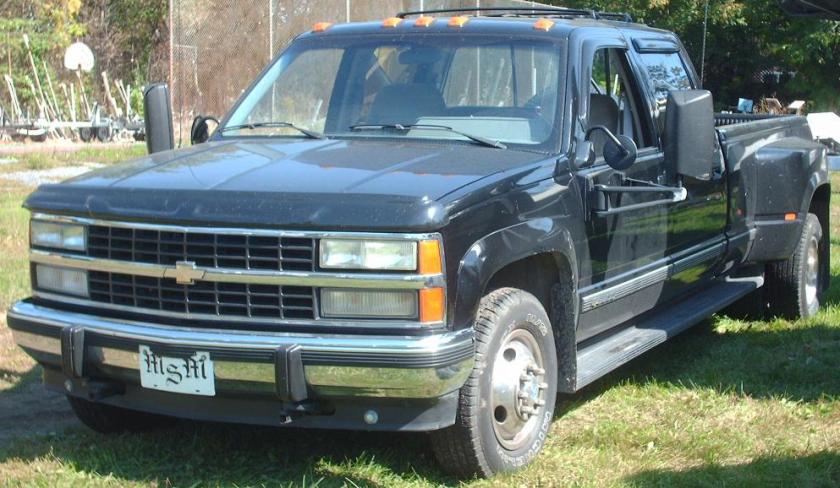
Overview Also called Chevrolet Silverado
GMC SierraProduction 1988–2002 Assembly Oshawa, Ontario
Pontiac, Michigan
Flint, Michigan
Fort Wayne, Indiana
Córdoba, ArgentinaBody and chassis Platform GMT400/480 Powertrain Engine 250 cu in (4.1 L) I6 (Brazil)
262 cu in (4.3 L) V6
305 cu in (5.0 L) V8
350 cu in (5.7 L) V8
454 cu in (7.4 L) V8
MWM Sprint 6.07T engine (4.2L) I6diesel
378 cu in (6.2 L) diesel V8
6.5 L turbo diesel V8Transmission 3-speed THM-400 automatic
4-speed 700R4 automatic
4-speed 4L60 automatic
4-speed 4L60-E automatic
4-speed 4L80-E automatic
4-speed SM465 manual
5-speed NV3500 manual
5-speed ZF 5S-42 manual
5-speed NV4500 manual
5-speed HM290 manual
5-speed 5LM60 manualDimensions Wheelbase 117.5 in (2,984 mm)
131.5 in (3,340 mm)
141.5 in (3,594 mm)
155.5 in (3,950 mm)Length 194.5 in (4,940 mm)
213.1 in (5,413 mm)
218.5 in (5,550 mm)
237.4 in (6,030 mm)Width 76.8 in (1,951 mm)
77.1 in (1,958 mm)Height 73.2 in (1,859 mm)
72.6 in (1,844 mm)Development of these trucks began around 1984 and were introduced in September 1987 as 1988 models (known as the GMT400 platform), there were eight different versions of the C/K line for 1988: Fleetside Single Cab, Fleetside Extended Cab, Fleetside Crew Cab, and Stepside Single Cab, each in either 2WD (C) or 4WD (K) drivelines. All C/K models would ride on independent front suspension. Three trim levels were available: Cheyenne, Scottsdale, and Silverado. Engines were a 160 hp (119 kW) 4.3 L V6, a 175 hp (130 kW) 5.0 L V8, a 210 hp (157 kW) 5.7 L V8 and a 6.2 L diesel V8. A 230 hp (172 kW) 7.4 L V8 was available in the 3/4-ton and one-ton trucks. To enhance durability the trucks featured extensive use of galvanized steel for corrosion resistance and a fully welded frame with a boxed front section for strength and rigidity.
4×4 front suspension
A drastic difference between the third-generation and fourth-generation GM trucks was the suspension; the fourth-generation GM trucks used all independent front suspensions (IFS).
In 1989, a half-ton 2WD fleetside Sport appearance package was available with black and red bumper and body trim, and a black grille with red outlined Chevrolet emblem, chrome wheels with custom center caps, and fog lights. The 89 was a limited production run set to determine how well the “sport” package would be received by consumers in the years to follow. The Sport package was more of a trim and towing package edition as well as a few engine enhancements that weren’t on available on other Chevrolet trucks of the time.
Also in 1989, the 4×4 sport appearance package included black bumper and body trim, wheel flares, mirrors, sport grille, 16–inch cast-aluminum wheels and special “4×4” badging on the box and “SPORT” badged on the tailgate. The box and tailgate decals were flanked by red-outlined Chevy bow ties. The sport package was only offered from 1989 until 1992 as some insurance companies began to express concerns with the idea of a high-performance truck. RPO code was BYP. This model was only available with the standard cab and regular fleet-side box. Colors included white, black, and red. A Z71 off-road package was also available with skid plates and Bilstein shocks, making it the first off-road package offered by the big three automakers and a few years later Ford would make their own the FX4 package. The Work Truck (W/T) was also introduced in 1990, which featured a single-cab long bed with Cheyenne trim and new grille with black bumpers. Also in 1988 the GMC 3500 EFI with a 454 (7.4 L) was available. The 454 EFI produced 230 hp (172 kW) and 385 lb·ft (522 N·m). In 1991, the 4L80-E automatic transmission was available for the 3/4-ton and one-ton trucks. In 1992, the four-speed manual transmission was dropped and the stepside trucks were available with extended cabs. The 6.5-liter diesel V8 was also made available with a turbocharger. In 1989, a Sport package was available for the fleet side short-bed Chevrolet trucks, featuring body-colored, striped molding, body-colored bumpers,and a blacked-out grille with chrome-plated steel wheels and specialized chromed plastic center caps. The Sport package also included a standard Chevrolet Receiver hitch and stiffer rear suspension, as well as oil and transmission cooling lines and heftier brake package. Of the first 1989 Silverado sport trucks there were only 5,400 produced. The Sport was re-introduced in 1990, this time with composite headlights and different sport emblems on the bedsides. This is one of the most frequently faked looks for the Chevrolet trucks but VIN decoding will reveal if it is a true “sport” or not. 1994 models received a new front fascia, federally mandated CHMSL, many new exterior colors including a new two-tone option on the rocker panels, and new tire and wheel combinations. All 1995 models received a new interior that included a new steering wheel containing a driver’s-side airbag, a new dashboard containing a more central-mounted radio, dial-operated HVAC system and an improved gauge cluster. New front door panels, and new seating were also included. Late 1995 the 1500 series and 2500 series two-wheel drive trucks were assembled with the newer 4L60E transmission and the 700 R4 was no longer used at this point. Exterior changes this year included a special two-tone paint job, available in many different varieties new gloss black folding exterior mirrors, and the door handles were changed from a smooth gloss black finish to a textured, satin finish. In 1996, a passenger-side-mounted third door was optional on extended cab models. A new range of engines was included. The “Vortec” engines meant HP increases across gasoline V6 and V8 small-block engines. The 6.2 diesel V8 was dropped.
1997 saw a passenger-side airbag on 1500 models in order to comply with new federal regulations for light trucks. 2500 and 3500 models are exempt. This meant a slight dashboard redesign to incorporate these airbags. On models where passenger airbags weren’t included, the space was occupied by a storage compartment. Also, 1997 was to be the last year the C/K Silverado would display CHEVROLET on the tailgate.
1998 meant minor trim and badge updates as GM readied the end of the GMT-400 platform. There was some overlap in 1999–2002 model years. In response to continued fleet sales, the GMT400 trucks were produced as the Sierra Classic/Silverado Classic until the GMT400 ended production at the end of the 2002 model year. A Brazilian version of the GMT400 was produced in Brazil powered with a Chevrolet inline six, a 4.2-liter I6 MWM Sprint Turbodiesel and a 4.0L I4 NA Maxion Diesel.
The GMT400 and G-Van were the last two platforms to utilize the traditional small-block Chevrolet V8 in the 2002 model year.
The GMT800 platform was introduced in 1999 as the Silverado/Sierra.
Engines
Engine Years Power Torque Notes 4.3 L V6 1988–1989 160 hp (120 kW) @ 4000 RPM 235 lb·ft (319 N·m) @ 2400 RPM 1990–1992 160 hp (120 kW) @ 4000 RPM 235 lb·ft (319 N·m) @ 2400 RPM less than 8500# GVWR 1993 165 hp (123 kW) @ 4000 RPM 235 lb·ft (319 N·m) @ 2000 RPM 1990 150 hp (110 kW) @ 4000 RPM 230 lb·ft (310 N·m) @ 2400 RPM over 8500# GVWR 1991–1993 155 hp (116 kW) @ 4000 RPM 230 lb·ft (310 N·m) @ 2400 RPM 1994 165 hp (123 kW) @ 4000 RPM 235 lb·ft (319 N·m) @ 2000 RPM 1995 160 hp (120 kW) @ 4000 RPM 235 lb·ft (319 N·m) @ 2000 RPM 1996–1998 200 hp (150 kW) @ 4400 RPM 255 lb·ft (346 N·m) @ 2800 RPM 5.0 L V8 1988–1994 175 hp (130 kW) @ 4000 RPM 270 lb·ft (370 N·m) @ 2400 RPM 1994–1995 175 hp (130 kW) @ 4200 RPM 265 lb·ft (359 N·m) @ 2800 RPM 1996–1998 230 hp (170 kW) @ 4600 RPM 285 lb·ft (386 N·m) @ 2800 RPM 5.7 L V8 1988–1994 210 hp (160 kW) @ 4000 RPM 300 lb·ft (410 N·m) @ 2800 RPM less than 8500# GVWR 1994–1995 200 hp (150 kW) @ 4000 RPM 310 lb·ft (420 N·m) @ 2400 RPM 1988 185 hp (138 kW) @ 4000 RPM 295 lb·ft (400 N·m) @ 2400 RPM over 8500# GVWR 1989–1995 190 hp (140 kW) @ 4000 RPM 300 lb·ft (410 N·m) @ 2400 RPM 1996–2000 255 hp (190 kW) @ 4600 RPM 330 lb·ft (450 N·m) @ 2800 RPM 6.2 L V8 N/A Diesel 1988–1989 126 hp (94 kW) @ 3600 RPM 240 lb·ft (330 N·m) @ 2000 RPM less than 8500# GVWR w/ MTX 1990 135 hp (101 kW) @ 3600 RPM 240 lb·ft (330 N·m) @ 2000 RPM 1988–1989 140 hp (100 kW) @ 3600 RPM 247 lb·ft (335 N·m) @ 2000 RPM less than 8500# GVWR w/ ATX 1990 140 hp (100 kW) @ 3600 RPM 250 lb·ft (340 N·m) @ 2000 RPM 1988–1989 143 hp (107 kW) @ 3600 RPM 257 lb·ft (348 N·m) @ 2000 RPM over 8500# GVWR 1990 150 hp (110 kW) @ 3600 RPM 265 lb·ft (359 N·m) @ 2000 RPM 1991–1993 140 hp (100 kW) @ 3600 RPM 255 lb·ft (346 N·m) @ 1900 RPM less than 8500# GVWR 1991 150 hp (110 kW) @ 3500 RPM 280 lb·ft (380 N·m) @ 2000 RPM over 8500# GVWR 1992 148 hp (110 kW) @ 3600 RPM 246 lb·ft (334 N·m) @ 2000 RPM 1993 150 hp (110 kW) @ 3500 RPM 280 lb·ft (380 N·m) @ 2000 RPM 6.5 L V8 N/A Diesel 1994–1995 155 hp (116 kW) @ 3600 RPM 275 lb·ft (373 N·m) @ 1700 RPM 6.5 L V8 Turbo Diesel 1992 180 hp (130 kW) @ 3500 RPM 380 lb·ft (520 N·m) @ 1700 RPM 1993 190 hp (140 kW) @ 3400 RPM 380 lb·ft (520 N·m) @ 1700 RPM 1994–1997 180 hp (130 kW) @ 3400 RPM 360 lb·ft (490 N·m) @ 1700 RPM less than 8500# GVWR 1998–1999 180 hp (130 kW) @ 3400 RPM 360 lb·ft (490 N·m) @ 1800 RPM 1994–1997 190 hp (140 kW) @ 3400 RPM 385 lb·ft (522 N·m) @ 1700 RPM over 8500# GVWR 1998–1999 195 hp (145 kW) @ 3400 RPM 430 lb·ft (580 N·m) @ 1800 RPM 2000–2002 195 hp (145 kW) @ 3400 RPM 420 lb·ft (570 N·m) @ 1800 RPM w/ MTX 2000–2002 195 hp (145 kW) @ 3400 RPM 430 lb·ft (580 N·m) @ 1800 RPM w/ ATX 7.4 L V8 1988–1995 230 hp (170 kW) @ 3600 RPM 385 lb·ft (522 N·m) @ 1600 RPM 1996–2000 290 hp (220 kW) @ 4000 RPM 410 lb·ft (560 N·m) @ 3200 RPM 1991–1993 255 hp (190 kW) @ 4000 RPM 405 lb·ft (549 N·m) @ 2400 RPM 454SS 8.1 L V8 2001–2002 340 hp (250 kW) @ 4200 RPM 455 lb·ft (617 N·m) @ 3200 RPM 454 SS
In 1990, Chevrolet introduced the first high-performance racing focused truck of the big three automakers a high-performance variant of the GMT400 under the Super Sport emblem called the 454SS. It was available only as a 2WD half-ton regular cab short box in Onyx Black only with a garnet red interior. The 454SS was powered by a 454 cu in (7.4 L) V8 producing 230 hp (172 kW) and 385 lb·ft (522 N·m). A 3-speed automatic transmission (Turbo Hydra-Matic 400) and 3.73 rear axle ratio added to the truck’s performance. The axle itself is unique, being a 14-bolt semi-floating unit which uses standard Chevrolet 5 on 5-inch wheels—the only factory-produced 14-bolt axle with such a wheel bolt pattern. The suspension was also upgraded with 32 mm (1.3 in) Bilstein gas-filled shock absorbers, a 32 mm (1.3 in) front stabilizer bar, and 12.7:1 fast-ratio steering gear assembly.
Unique exterior features included a front air dam with fog lights, special rims, decals displaying “454SS” on the bed sides, red trim emblems, and black painted grille, bumpers, and mirrors. The interior was also unique with a special plush Garnet Red cloth with black trim, high-back reclining sport bucket seats, and center console.
For 1991, a four-speed electronic automatic transmission (known as the 4L80E), 25 more horsepower, and even higher torque (405 lbs/ft at 2400 rpm) were added to the 454SS. The rear-axle ratio was also lowered to 4.10:1 for extra jolt off the line. On the dash was a tachometer, oddly omitted from 1990 models. Dual exhaust was also added during the ’91-’94 model years.
The MSRP of the 1990 model was US$18,295 with a $550 destination charge. A total of 16,953 units were sold over the 4 years the 454SS was in production, with 1990, the first year of production, selling 13,748 units alone. The 454SS was discontinued after the 1994 model year.
In 1992–1994 other color options included Summit White and Victory Red, with multiple interior colour options. The rear quarter panel and tailgate decals also changed in 1992 to a more ‘stylized’ ‘SS’ and the Chevrolet sticker on the tailgate became much smaller and located on the corner area.
-
c. 1997–1999 K-Series brush truck near Tallahassee, Florida
C3500 HD
In 1991 GM introduced a 15,000 pound GVWR truck C3500 HD under the Chevrolet and GMC nameplates that was replaced by the 4500. It was marketed as a truck to bridge the gap between light duty trucks “pickup trucks” and medium duty trucks. The C3500 HD was only offered as a standard chassis cab until 1996 when a crew chassis cab was also offered. It is not clear if the crew cab was for fleet orders only, or if anyone could order it. An extended cab was never offered on the C3500 HD, though several have been custom made by the registered owners. All paint colors and most options were offered in the C3500 HD. Upper cab marker/clearance lights were not optional equipment on the C 3500HD. The two mirror options are the camper style and west coast style mirrors.
The common drive axle used on the C3500 HD was the Dana 80, an 85.8-inch-wide full floating axle with an 11-inch ring gear fitted with 19.5–inch x 6.0 tires. The front axle was a solid I-beam drop axle, similar to the axles of medium and heavy duty trucks. Both front and rear leaf sprung axles had disc brakes.
Available wheelbases were; 135.5 inches, 159.5 inches, and 183.5 inches. The C3500 HD frames are very different from the C/K3500 cab and chassis. The C/K3500 cab and chassis and C3500 HD rear frame rails are spaced at industry standard 34 inches for easy fitment of bodies but that is where the similarity ends. The HD frame is much heavier and exits straight out behind the high mounted cab necessitating the unmistakable HD filler panel between the bumper and grille. The front fenders were also equipped with the same flares used on 4×4 models of the lighter trucks to cover the increased track width and larger tires.
Two transmissions were offered in the C3500 HD; the 4L80E 4-speed OD automatic, and the NV4500 5-speed manual.
GM never offered a four-wheel-drive counterpart of the C3500 HD, so there was no K3500 HD. Several aftermarket conversion companies offered a 4×4 version with either a Dana 60 or Dana 70 front axle. At least one company, Monroe Truck, was offered by GM dealers as a ship-through 4WD upfit using the RPO code VCB. Tulsa is another company that did 4×4 conversions for utility companies. Quigley conversions were mostly for fire/ambulance applications.
Engines 1991–2000
Engine offerings for the C3500 HD included three gasoline engines; from 1991 to 1995 5.7L 350 Small Block and 7.4L GEN V Big Block. In 1996 both the 5.7 and GEN V 7.4 were replaced by the new Gen VI 7.4L Vortec Big Block.
One of the main additions to the 1991–2000 years is that it introduced the 305 cu in a traditional 5.0L V8 and also in a 5.7L V8 which was most common in the SLE packages.
The RPO L65 6.5L Turbo Diesel debuted in the C3500 HD in 1992, the year of the engine’s release. The 6.5 was the only diesel engine offered for the entire production run of the T400 C3500 HD. No diesel was available for 1991, the first C3500 HD production year.
Engines 2001–2002
While all other C/K pickup models were dropped by 2000, the C3500 HD was produced until 2002 due to fleet demand. In the brochures it is referred to as Sierra Classic/Silverado Classic. There were two engine choices; The 8.1L Vortec Big Block replaced the Gen VI 7.4L Vortec Big Block and the venerable 6.5L Turbo Diesel.
Brazilian versions
A variant of the C/K family was introduced in Brazil during the 1960s. These used the instrument cluster from the 1960–66 US Chevrolet C/K series although the exterior sheet metal layout is exclusive to Brazil. The models built included a light truck, named C-10, and a SUV named Veraneio (initially known simply as Chevrolet C-1416), introduced in 1964. They were initially powered with a Chevrolet 4.2 l (260 cu in) inline six based on the pre-1962 “Stovebolt” engines. Later they used the 4.1 l (250 cu in) engine from the Chevrolet Opala. In later years a four-cylinder diesel (Perkins Q20B) was also offered labeled as D-10 (light truck only). An ethanol-powered version of the C-10 was offered beginning in the 1981, dubbed the A-10.
After 1985, a redesigned pickup similar to the U.S. 1973–87 C/K truck was introduced as the C-20, powered with the 4.1 l (250 cu in) inline six of the U.S. Chevy II/Nova. Diesel and ethanol versions were also sold, labeled as D-20 and A-20 respectively (later models of the D-20 replaced the Perkins Q20B with a Maxion S4). The original version of the Veraneio was kept in production until 1988 (model year 1989), but it was eventually replaced with an updated version based on the C-20 family.
In 1997 GM introduced in Brazil the then-current Silverado pickup, which lasted until 2001, and the Tahoe, which in Brazil was named the Grand Blazer. The 4.1 L (250 cu in) inline six engine with 138 hp (103 kW) was offered on both models with option for a MWM4.2 L (260 cu in) turbo diesel engine producing 168 hp (125 kW). But the model earned a reputation for being a less capable work vehicle than its predecessor. After the Silverado was discontinued in Brazil, GM ceased offering any trucks in this sector in Brazil.
-
Civil Police of Sao PauloChevrolet Veraneio in the museum of the São Paulo Polícia Civil.
Chevrolet Silverado
From Wikipedia, the free encyclopediaFor the Chevrolet C/K series Silverado, see Chevrolet C/K.Chevrolet Silverado/GMC Sierra 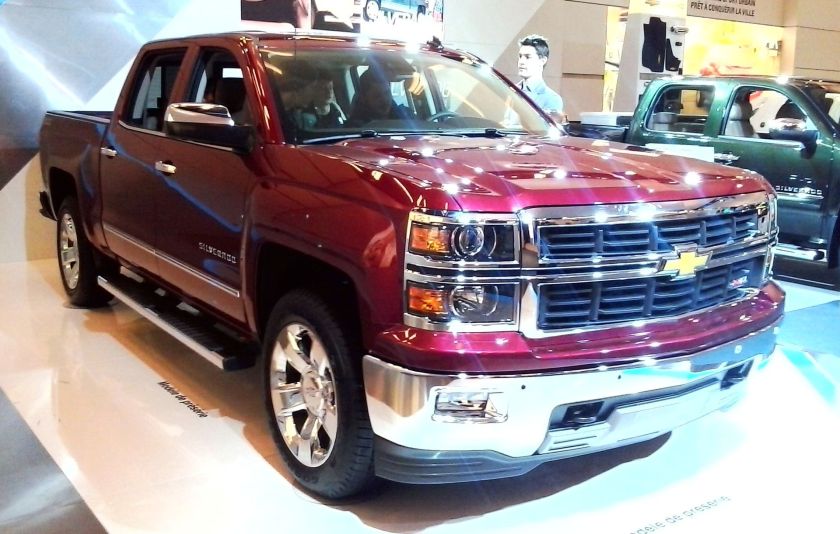
Overview Manufacturer Chevrolet/GMC (General Motors) Also called GMC Sierra
Chevrolet Cheyenne (Mexico)
VIA VTRUX
VTA SolTRUX
Chevrolet C/K (South Korea)Production 1998–present Assembly Flint, Michigan
Roanoke, Indiana
Silao, MexicoBody and chassis Class Full-size/Heavy-Duty pickup Body style 2-door regular cab
3-door extended cab
4-door extended cab
4-door crew cab
DuallyLayout Front-engine, Rear-wheel drive /Four-wheel drive / All-wheel drive Chronology Predecessor Chevrolet/GMC C/K The Chevrolet Silverado, and its mechanically identical cousin, the GMC Sierra, are a series of full-size and heavy-duty pickup trucks manufactured by General Motors and introduced in 1999 as the successor to the long-running Chevrolet C/K line. The Silverado name was taken from a trim level previously used on its predecessor, the Chevrolet C/K pickup trucks and Suburbans from 1975 through 1998. General Motors continues to offer a GMC-badged variant of the Chevrolet full-size pickup under the GMC Sierra name, first used in 1988 for its variant of the GMT400 platform trucks.
History
Although General Motors introduced its first pickup truck in 1930, the term “Silverado” was a designation used only to detail the trim for the Chevrolet C/K pickup trucks, Suburbans, and Tahoes from 1975 through 1999. GMC used a few variations of the “Sierra” name (Sierra, High Sierra). However Chevrolet still uses the CK and the CC in their current model codes.
The Chevrolet Silverado and GMC Sierra trucks have been essentially the same for their entire history. The Silverado today is generally advertised as the “standard” version and is more aimed for use in agriculture, while the Sierra is aimed for industrial workers but can be ordered as a well equipped luxury truck. There are some trim and option variations as well. Early models included variations in the engine and equipment, but the present differences are slight. The 1999 redesign included different grilles and interior trim, and certain features (e.g. Quadrasteer) were included at different times on the two trucks. Chevrolet did not create a Denali equivalent for the Silverado. However, the GMC Sierra has a Denali model.
First generation (1999–2006)
First generation 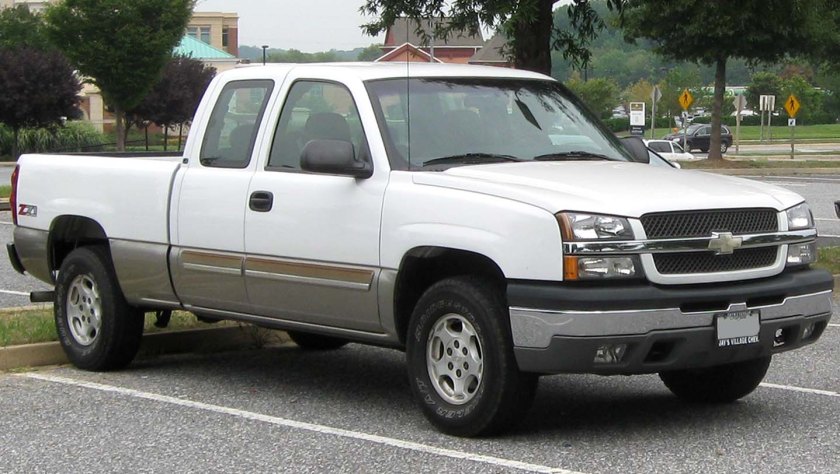
Overview Also called Chevrolet C/K (South Korea) Production 1998–2006 Designer Ken Sohocki (1994) Body and chassis Platform GM GMT800 platform Powertrain Engine Vortec 4300 (4.3 L) V6
Vortec 4800 (4.8 L) V8
Vortec 5300 (5.3 L) V8
Vortec 6000 (6.0 L) V8
Vortec 8100 (8.1 L) V8Transmission 4-speed 4L60-E automatic
4-speed 4L65-E automatic
4-speed 4L80-E automatic
5-speed NV3500 manualDimensions Wheelbase 119 in (3,023 mm)
133 in (3,378 mm)
143.5 in (3,645 mm)Length 203 in (5,156 mm)
227 in (5,766 mm)
246 in (6,248 mm)
Hybrid: 230.2 in (5,847 mm)Width 78.5 in (1,994 mm) Height 74 in (1,880 mm)
77 in (1,956 mm)
Hybrid 2WD: 71.2 in (1,808 mm)
Hybrid 4WD: 73.9 in (1,877 mm)The GMT800 Silverado/Sierra 1500 (light pickup trucks) were released in 1998 as 1999 models. The “classic” light-duty GMT400 C/K trucks were continued in production for that first year alongside the new models, and the Heavy-Duty GMT400 pickups (alongside the GMT400 SUVs) were continued through 2000, with the new GMT800 Silverado/Sierra HD (Heavy Duty) being introduced. A small refresh was introduced in 2002, bringing slight design changes and an upgrade to the audio and HVAC controls.
Body style changes
There was a midyear body style change in 2007; during this change, the first generation ends and the second generation begins. This body style is referred to as “Classic”; the second generation is referred to as the “New body style”
Light duty
There are a number of models of light-duty Silverados and Sierras, including the half-ton, SS, and Hybrid.
The light-duty trucks generally use the 1500 name. They are available in three cab lengths, 2-door standard/regular cab, 4-door extended cab, and front-hinged 4-door crew cab Three cargo beds are available, including a 69.2 in (1,758 mm) short box, 78.7 in (1,999 mm) standard box, and a 97.6 in (2,479 mm) long box. The short box is only available with the extended or crew cab, and is the only option on the latter. The new trucks used a new hydro-formed technology on the frame which GM pioneered from the Corvette and was designed to add strength and take away mass and was later used by Ford and Dodge Ram.
For the first year, only the regular cab and 3-door extended cab were available, along with the Vortec 4300 V6, Vortec 4800 V8, and the Vortec 5300 V8. A 4-door extended cab was added for 2000, and output on the 5.3 L engine increased to 285 hp (213 kW) and 325 lb·ft (441 N·m).
The 6.0 L Vortec 6000 V8 was added for the 2001 Heavy Duty models, rated at 300 hp (224 kW), with the GMC Sierra 1500 C3 getting an uprated 25 hp (19 kW) version of this engine. The Silverado Z71 got an optional lighter composite box, with a suspension package for towing, but lacked the high-output engine. The C3 became the Denali for 2002, and Quadrasteer was added.
GM introducing a reworked version of the Silverado/Sierra in 2003, with a new front end, and a slightly updated rear end. In 2006 the Silverado received another facelift, similar to the HD version introduced in 2005 HD models. In addition to that, Chevrolet has deleted the “Chevrolet” badge off the tailgate that was used from 1999-2005. Its SUV counterparts retained the use of the pre-facelift sheetmetal.
The Insurance Institute for Highway Safety (IIHS) gave the Silverado an overall “marginal” score on the frontal offset crash test for poor structural integrity and poor dummy control, although no injuries were recorded on the dummy’s body regions.
2001 GMC Sierra C3/Denali
GMC created an upscale version of its Sierra 1500 in 2000 called the Sierra C3. It used all-wheel drive with a 3.73 final drive gear ratio and included the 6.0 L Vortec 6000 LQ4 V8 rated at 325 hp (242 kW) at 5000 rpm and 370 lb•ft (502 N·m) of torque at 4000 rpm coupled to a 4L60E-HD four speed automatic transmission along with other upscale equipment. For 2002, the name was changed to Sierra Denali, but the specifications remained essentially the same except for the addition of Quadrasteer and GM changed from the 4L60E-HD to the 4L65E in conjunction with a 4.10 final drive gear ratio.
The Denali is rated for towing 9,100 pounds (4,100 kg) and hauling 1,595 pounds (723 kg) in the cargo box.
The Sierra Denali was initially equipped with Delphi‘s Quadrasteer system as standard equipment. It was a 4-wheel steering system that greatly reduced the truck’s turning radius and improved lane changing while towing. General Motors dropped Quadrasteer from the Sierra Denali after the 2004 model year and its entire lineup after 2005 due to poor sales of this expensive option.
For the ’07 model year, the Sierra Denali shares the same billet grille from the other Denali models, and also has the same dash as the ’07 SUV’s. The ’07 Sierra Denali was initially the only half ton pickup that had a 6.2 liter with 403 hp (301 kW) and 417 lb·ft (565 N·m) of torque coupled to a six speed transmission. This truck is also an optional all wheel drive vehicle and goes 0-60 mph in 6.3 seconds.
Chevrolet Silverado SS
Launched in early 2003, the Silverado SS is a high-performance pickup truck built by Chevrolet. It is based on the 1500 Silverado with upgrades in drive train and both exterior and interior appearance. It was equipped standard with the 6.0 liter Vortec High-Output V8 rated at 345 hp (257 kW) at 5200 rpm and 380 lb·ft (515 N·m) of torque at 4000 rpm coupled to a 4L65E four speed automatic transmission. This was the same engine used for the second generation Cadillac Escalade. Chevrolet and GMC advertised this engine as the Vortec High Output and later as the “VortecMAX”, while Cadillac calls it the “HO 6000”. The SS debuted in 2003 with a standard All Wheel Drive setup with a 4.10 final drive gear ratio and 4 wheel disc brakes. In 2005, in an attempt to increase sales, a 2-wheel drive version became available (the 2WD SS also lost its rear disc brakes in favor of drums, as did the rest of the 1/2-ton GMT800s). 2005 was also the first year the sun roof was available in the SS line up. In 2006, the AWD variant was dropped and the rear wheel drive was the only driveline layout available. In a further effort to reduce cost, you could also get cloth interior and/ or bench seat. The Silverado SS also comes with the Z60 performance suspension and 20 inch aluminum wheels. All the SS trucks in both 2 wheel drive and AWD used the torsion bar style front suspension for better handling. It should also be noted the SS themed trucks were only available from the factory in Black Onyx, Victory Red, and Arrival Blue Metallic from 2003 to 2004. In 2005 Arrival Blue Metallic was dropped from the color choice and replaced with Silver Birch Metallic.
Intimidator SS
In 2006, Chevrolet released a special edition Silverado SS under the name “Intimidator SS” (licensed by Dale Earnhardt Inc.) to honor the late Dale Earnhardt. The truck came with several minor appearance upgrades (rear spoiler, embroidered headrests, Intimidator custom badging), but was essentially just a regular Silverado SS. Of the 1,033 scheduled trucks, only 933 were made (the remaining 100 were sold as 2007 Silverado SS “classic” bodystyle trucks before the 2007.5 MY changeover. These trucks were only available in Black Onyx exterior but could be ordered with cloth or leather interior. Also features
Silverado Performance Edition/Vortec Max
The Silverado Performance Edition option (also known as the VHO by some enthusiasts) was first introduced in 2004 to a limited market (mainly consisting of Texas and several surrounding areas); it was available nationwide for MY 2005-07. The SPE package (under option code B4V) included several options previously not found on the standard 1500 model, most notably the LQ9 6.0 L V-8 engine (the same used for the Silverado SS, the 2005-2006 GMC Denalis and the Cadillac Escalade). The LQ9 motor was rated at 345 hp (257 kW) at 5200 rpm and 380 lb·ft (515 N·m) of torque at 4000 rpm, which was the same specifications shared in the SS models. The B4V package could only be ordered on extended cab standard box 2WD trucks. They were all built at the Canadian assembly plant and were equipped with the Z60 High Performance suspension package, in addition to the M32 = 4L65E transmission, GT4 = 3.73 rear gear, and G80 Gov Lock as standard equipment. The 2004 models were equipped with the standard 10 bolt 8.625 rear end. The 2005 models were upgraded with the larger 14 bolt 9.5 rear end under RPO option AXN. The package also included one style of the newly introduced GM 20 inch wheels installed from the factory. This marked the first time the LQ9 engine was available for a two-wheel drive application. Unlike the SS Package you could order the interior combination in anything from basic cloth to fully loaded. There were also more color options available with this package.
For the 2006 model year, the Vortec Max package (option code NHT) was added to the options list with an array of similar features and new badges. However, the Vortec Max package differed in that it came with a variant of the Z85 Handling/Trailering suspension, as well as 17-inch wheels and tires versus the Z60 High Performance Suspension and 20-inch wheel and tire package of the Performance Edition. This was because the Vortec Max package was intended for max trailer towing, while the Performance Edition was intended more for customers who wanted the Silverado SS mechanicals without the visuals of the SS. It was also made available (in addition to the extended cab) in the light duty 4 door crew cab models. For the first time it was also available in 2 wheel drive or 4 wheel drive on both the Silverados and Sierras, with or without Z71 packages.
The newest Vortec Max Performance package introduced in 2007 on the GMT900 includes a 10,800 pounds towing capacity.
Hybrid
GM launched a hybrid version of the Silverado/Sierra in 2004, becoming the first ever GM hybrid passenger vehicle. Known within GM as the Parallel Hybrid Truck or PHT it is not actually a parallel hybrid by the current definition, but a type of micro hybrid design. The electric motor housed within the transmission flywheel housing, serves only to provide engine cranking/starting, battery charging, and powering accessories. The engine automatically shuts down as the truck comes to a stop and uses 42 Volt electric power to the starter/generator unit to restart the engine as the brake pedal is released. Besides the typical 12 V automotive battery the PHT uses three additional 12 V valve regulated lead acid (VRLA) batteries mounted under the rear seat to store and provide power. The truck uses a 5.3 L Vortec 5300 V8 for primary propulsion power. These trucks were also purchased back from customers for more than what they were worth in the late 2000s.
The PHT features four 120 volt 20 amp AC outlets, two in the bed and two inside the cab under the rear seat. These are particularly interesting to the building/construction contractor market, since they often require AC power when on the job. Additionally, the extra reserves of power for the accessories make this truck well-suited to that market, where trucks often sit at idle for hours at a time.
Availability was extremely limited at first, with commercial buyers getting the first allotment. Later in 2005, the truck was offered at retail in Alaska, California, Florida, Nevada, Oregon, Washington and Canada. For 2006-07 the truck was generally available to retail buyers throughout North America. The Parallel Hybrid Truck was discontinued for the 2008 model year with the release of the GMT900 truck line. Starting in 2009, General Motors offers a second generation Chevrolet Silverado and GMC Sierra equipped with a Two-Mode Hybrid powertrain and 4-speed CVT.
Heavy duty
GMT800 Heavy Duty 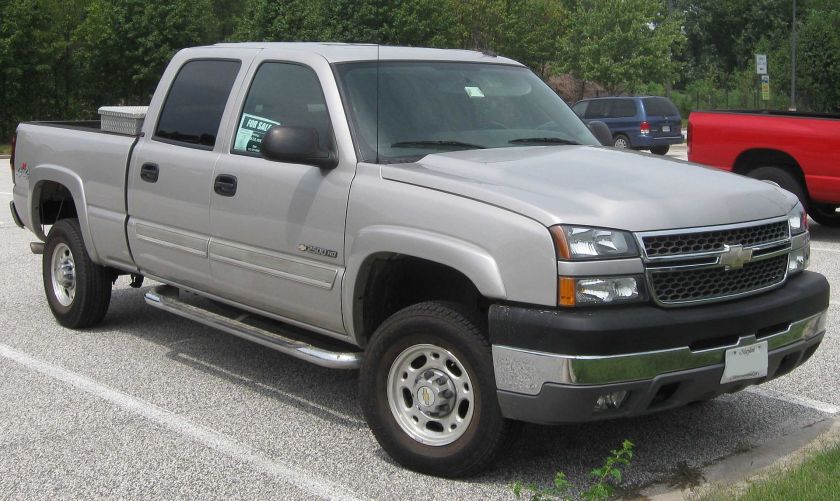
Overview Production 2000–2007 Body and chassis Platform GM GMT880 platform Powertrain Engine 6.0 L Vortec 6000 V8
8.1 L Vortec 8100 V8
6.6 L Duramax V8Transmission 4-speed 4L80-E automatic
5-speed Allison 1000 automatic(2000–2005)
6-speed Allison 1000 automatic(2005–2007)
5-speed NV4500 manual (2000–2007 6.0)
6-speed ZF S6-650 manual (2000–2006 6.6 and 8.1)Dimensions Wheelbase 133 in (3,378 mm)
143.5 in (3,645 mm)
157.5 in (4,000 mm)
167 in (4,242 mm)
153 in (3,886 mm)Length 222.1 in (5,641 mm)
227.7 in (5,784 mm)
246.6 in (6,264 mm)
237.2 in (6,025 mm)
256.1 in (6,505 mm)Width SRW: 79.7 in (2,024 mm)
DRW: 96.1 in (2,441 mm)Height 76.0-77.4 in (1,930-1,966 mm) The HD variant is a heavy-duty light truck. It is a strengthened version of the Silverado/Sierra light-duty, and is available in the 1500HD, 2500HD, and 3500 models. The 1500HD, introduced in 2000, offers a Vortec 6000 V8 with 300 hp (224 kW) at 5200 rpm and 360 lb·ft (488 N·m) of torque at 4000 rpm with a Hydra-Matic 4L80E four-speed automatic transmission. The 2500HD also offers either the LB7 Duramax V8 with 300 hp (224 kW) at 3100 rpm and 520 lb·ft (705 N·m) of torque at 1800 rpm, the LLY Duramax V8 with 310 hp (231 kW) @ 3000RPM and 605 lb·ft (820 N·m) @ 1600RPM, and the LBZ Duramax V8 with 360 hp (268 kW) @ 3200RPM and 650 lb·ft (881 N·m) @ 1600RPM. Also available is the Vortec 8100 V8 with 340 hp (254 kW) at 4200 rpm and 455 lb·ft (617 N·m) of torque at 3200 rpm.
The 2500HD has an available five-speed (six-speed for 2006-2007 models) Allison 1000 transmission with the Vortec 8100 and Duramax 6.6. The Silverado 3500 offers the same engine/transmission features that the 2500HD does, however it is usually equipped with “dually” twin wheels at the rear and has a stronger suspension. The HD models are primarily used for towing and high-weight cargo.
Towing capacity for the 1500HD is rated at 10,300 pounds (4,700 kg), and can haul 3,129 pounds (1,419 kg) in the bed. The 2500HD ups these ratings to 16,300 pounds (7,400 kg) with the 8.1 liter engine or 10,600 pounds (4,800 kg) with the 6.0 liter engine, and 4,058 pounds (1,841 kg), while the 3500 can tow 16,700 pounds (7,600 kg) and haul 5,511 pounds (2,500 kg). The addition of 4 wheel drive tends to reduce the towing and carrying capacity by 200 to 400 lb (181 kg), depending upon year and model. Other factors, such as options, can also affect these numbers.
Engines
Model Year Engine Power Torque 1500 1998–2003 4.3 L Vortec 4300 V6 200 hp (149 kW) @ 4600 RPM 260 lb·ft (353 N·m) @ 2800 RPM 2004–2006 195 hp (145 kW) @ 4600 RPM 260 lb·ft (353 N·m) @ 2800 RPM 1998–2001 4.8 L Vortec 4800 V8 270 hp (201 kW) @ 5200 RPM 285 lb·ft (386 N·m) @ 4000 RPM 2001–2002 275 hp (205 kW) @ 5200 RPM 285 lb·ft (386 N·m) @ 4000 RPM 2002–2003 270 hp (201 kW) @ 5200 RPM 285 lb·ft (386 N·m) @ 4000 RPM 2004–2006 285 hp (213 kW) @ 5200 RPM 295 lb·ft (400 N·m) @ 4000 RPM 1998–2003 5.3 L Vortec 5300 V8 285 hp (213 kW) @ 5200 RPM 325 lb·ft (441 N·m) @ 4000 RPM 2003–2004 295 hp (220 kW) @ 5200 RPM 330 lb·ft (447 N·m) @ 4000 RPM 2004–2006 295 hp (220 kW) @ 5200 RPM 335 lb·ft (454 N·m) @ 4000 RPM 1500HD/2500HD/3500HD 2000-2006 6.0 L Vortec 6000 V8 300 hp (224 kW) @ 4400 RPM 360 lb·ft (488 N·m) @ 4000 RPM 2000–2004 8.1 L Vortec 8100 V8 340 hp (254 kW) @ 4200 RPM 455 lb·ft (617 N·m) @ 3200 RPM 2004–2006 330 hp (246 kW) @ 4200 RPM 450 lb·ft (610 N·m) @ 3200 RPM 2001–2002 w/ LQY 270 hp (201 kW) @ 3600 RPM 400 lb·ft (542 N·m) @ 1600 RPM 2001–2002 w/ LQQ 210 hp (157 kW) @ 3600 RPM 325 lb·ft (441 N·m) @ 1200 RPM 2002–2005 w/ LRW 325 hp (242 kW) @ 4000 RPM 450 lb·ft (610 N·m) @ 2800 RPM 2002–2006 w/ LRZ 295 hp (220 kW) @ 3600 RPM 440 lb·ft (597 N·m) @ 3200 RPM 2002–2006 w/ LQR 225 hp (168 kW) @ 3600 RPM 350 lb·ft (475 N·m) @ 1200 RPM 2000–2004 6.6 L DuraMAX (LB7/LLY) V8 300 hp (224 kW) @ 3100 RPM 520 lb·ft (705 N·m) @ 1800 RPM 2005-2006 w/ MTX 300 hp (224 kW) @ 3000 RPM 520 lb·ft (705 N·m) @ 1800 RPM 2005-2006 w/ ATX 310 hp (231 kW) @ 3000 RPM 605 lb·ft (820 N·m) @ 1600 RPM 2005-2006 6.6 L DuraMAX (LBZ) V8 360 hp (268 kW) @ 3200 RPM 650 lb·ft (881 N·m) @ 1600 RPM GMC Sierra C3 2000-2001 6.0 L Vortec 6000 V8 325 hp (242 kW) @ 5000 RPM 370 lb·ft (502 N·m) @ 4000 RPM GMC Sierra Denali 2002–2004 2004–2006 6.0 L Vortec 6000 V8 345 hp (257 kW) @ 5200 RPM 380 lb·ft (515 N·m) @ 4000 RPM Chevrolet Silverado SS 2002–2006 Chevrolet Silverado Vortec High Output 2003–2005 Chevrolet Silverado VortecMAX 2005-2006 Second generation (2007–2013)
Second generation 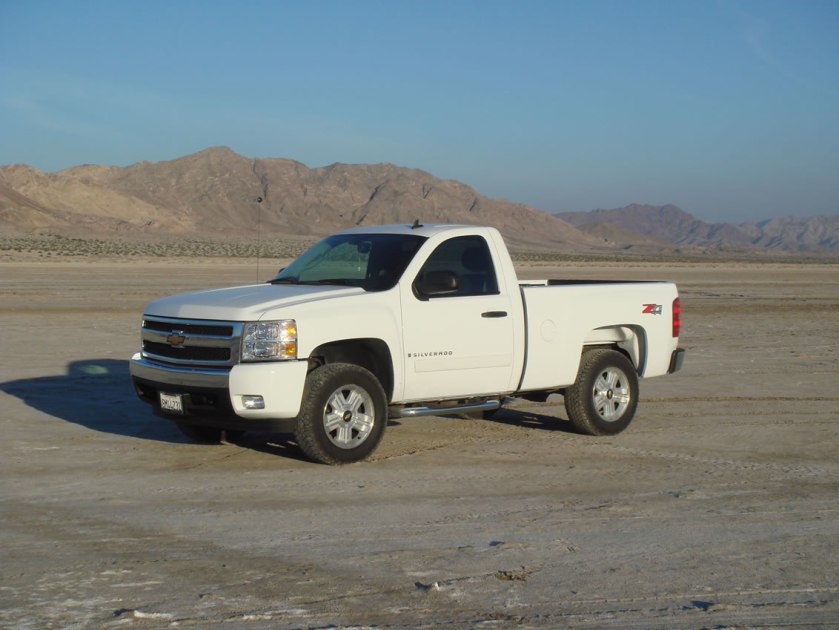
Overview Also called Chevrolet Platform/Shakebody
GMC Dump TruckProduction 2006–2013 Body and chassis Platform GM GMT900 platform:
GMT901 (Chevrolet Silverado)
GMT902 (GMC Sierra)Powertrain Engine 4.3 L V6 195 hp (145 kW)
4.8 L V8 295 hp (220 kW)
5.3 L V8 315 hp (235 kW)
6.0 L V8 360 hp (268 kW)
6.2 L V8 403 hp (301 kW)Transmission 4-speed 4L60-E automatic
4-speed “2-Mode Hybrid transmission” CVT (Hybrid)
6-speed 6L80 automaticDimensions Wheelbase Regular: 119 in (3,023 mm)
Extended & Crew: 143.5 in (3,645 mm)Length Regular: 205.6 in (5,222 mm)
Extended & Crew: 230.2 in (5,847 mm)
Hybrid: 229.9 in (5,839 mm)Width Regular & Extended: 79.9 in (2,029 mm)
Crew: 80 in (2,032 mm)Height Regular & Extended: 73.9 in (1,877 mm)
Crew: 73.8 in (1,875 mm)
Hybrid 4WD: 73.7 in (1,872 mm)The all-new GMT900 generation of the Silverado/Sierra arrived in the last quarter of 2006 as a 2007 model. It features a redesigned exterior, interior, frame, and suspension as well as a power increases on certain engines. It takes styling cues from the 2007 GMT900 SUVs and the Chevrolet Colorado pickups. Like the GMT900 SUVs, these pickups also have greatly improved aerodynamics over their predecessors like steeply raked windshields and tighter panel gaps which improve fuel economy. The GMT800 models were continued through 2007 badged as “Classic”, just as the GMT400 models continued for two years after the GMT800’s introduction.
The new Silverado earned the North American Truck of the Year award for 2007 and was Motor Trend magazine’s Truck of the Year for 2007. Like its predecessors, the new Silverado offers buyers a choice of two door regular cabs, four door extended cabs (with rear doors that now open 170 degrees similar to the Nissan Titan) and four door crew cabs with the rear doors opening in the same direction as the front doors. GM also offers the trucks in the traditional two and four wheel drive configurations.
The Generation III small block V8 engines offered in the GMT 800 trucks were replaced in the GMT 900 series by the Generation IV small block V8 engine family, featuring upgrades such as increased power and Active Fuel Management on the 5.3 L and 6.0 L V8s. A new high performance 6.2 liter V8 (with 403 hp (301 kW) and 417 lb·ft (565 N·m) of torque) was introduced with the 2007 Cadillac Escalade and 2007 GMC Denali line, and is now available on the Silverado LTZ trim line. After skipping the 2008 model year, with 2007 being the last for the GMT800 hybrid line, a two-mode hybrid model was introduced in late 2008 as a 2009 model. Available in either two- or four-wheel-drive, the Sierra 1500 Hybrid is powered by a 6.0-liter V8. It’s joined by two 60-kilowatt electric motors supplied by a nickel-metal hydride battery pack under the rear seat. On its own, the V8 is rated at 332 horsepower and 367 pound-feet of torque. GM engineers say that combined output with the electric motors is 379 hp. The unique transmission houses the electric motors along with three different planetary gear sets and four traditional clutches.
There are two dash options offered in the new Silverado and Sierra. A luxury-inspired dash that closely mimics the dash in their GMT900 SUVs, and a “pickup” dash that is more upright to make way for a passenger seat in place of a center console.
As of 2008, General Motors full size trucks are no longer sold in United States and Canada with manual transmissions, they are only offered in Mexico in the Silverado 1500 V6 engine and Silverado 3500.
All Silverado & Sierra 1/2 ton models received a revised bumper and shortened front fascia mid-way through the 2009 model year and a full mid-cycle refresh followed with all 2010 models, including new interior door panels (which moved the handle forward and added an additional cup holder) and a six-speed automatic transmission on regular and extended cab models with 5.3L or larger V8’s was also made standard. Two new exterior colors were added: Taupe Gray Metallic and Sheer Silver Metallic.
GMT900 Heavy Duty 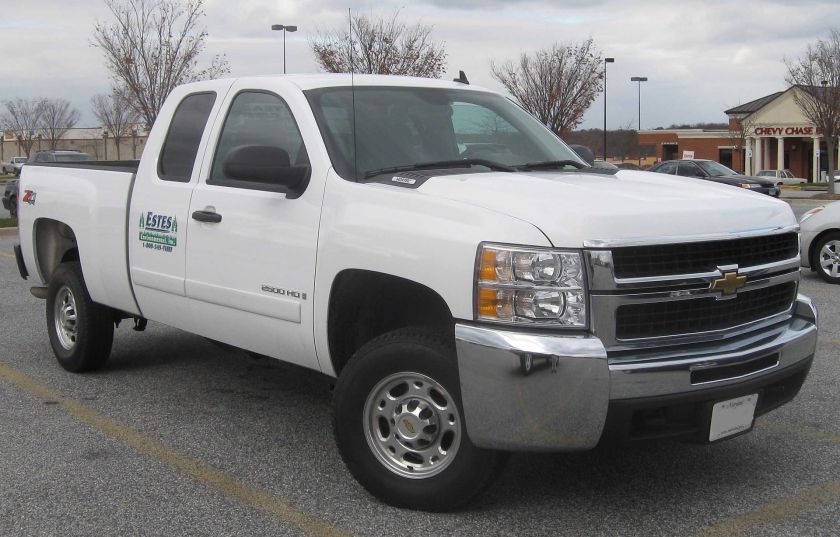
Overview Production 2006–2014 Body and chassis Platform GM GMT910 platform:
GMT911 (Chevrolet Silverado)
GMT912 (GMC Sierra)Powertrain Engine 6.0 L V8 360 hp (268 kW)6.6 L Duramax diesel V8 397 hp (296 kW) Transmission 6-speed 6L90 automatic
6-speed Allison 1000 automaticDimensions Wheelbase Varies greatly Length Varies greatly Width 80 in (2,032 mm)
95.9 in (2,436 mm) (Towing mirrors)Height 76 in (1,930 mm) The 8.1 L big-block V8 is no longer offered on the Heavy Duty models, and no replacement has been announced. The 6L90 6-speed automatic transmission is standard in all Heavy Duty models. The Allison 1000 transmission is paired with the optional Duramax V8 diesel.
As of 2011 the GMC and Chevrolet heavy Duty’s have being upgraded with a new fully boxed high strength steel frame from front to rear improving stiffness by 92% with bigger rear springs, larger engine and transmission mounts and new hydraulic body mounts to improve the ride.The front suspension incorporates new upper and lower control arms and new torsion bars tailored to one of five different gross axle weight ratings. Upper control arms are constructed from forged steel that is both stronger and lighter than the previous arms, while the new lower arms are cast iron to maximize load capacity. Using a unique torsion bar for each gross weight rating allows for better control over vehicle height, resulting in improved handling and better alignment for reduced tire wear. These improvements allow for up to a 6,000 pound front axle weight rating, allowing all 4wd trucks to accommodate a snow plow. Additional front suspension enhancements come from new urethane bump stops, two per side. The upper shock mount has been changed from a single stem mount to a two-bolt design to eliminate the possibility of squeaks and thumps. The rear suspension design uses asymmetrical leaf springs that are wider and capable of greater load handling. The design features 3-inch wide leaves, with front and rear spring sections of different lengths to reduce the twisting that can result in axle hop and loss of traction. The 2500HD use a two-stage design with a rating of 6,200 lbs, and 3500HD models have a three-stage design with 7,050 lb and 9,375 lb ratings on single and dual-wheel models respectively
Engines
Model Year Engine Power Torque 1500 2007-2013 4.3 L Vortec 4300 V6 195 hp (145 kW) @ 4600 RPM 260 lb·ft (353 N·m) @ 2800 RPM 2007-2008 4.8 L Vortec 4800 V8 295 hp (220 kW) @ 5600 RPM 305 lb·ft (414 N·m) @ 4800 RPM 2009 295 hp (220 kW) @ 5600 RPM 305 lb·ft (414 N·m) @ 4600 RPM 2010-2013 302 hp (225 kW) @ 5600 RPM 305 lb·ft (414 N·m) @ 4600 RPM 2007-2009 5.3 L Vortec 5300 V8 315 hp (235 kW) @ 5200 RPM 338 lb·ft (458 N·m) @ 4400 RPM 2010-2013 315 hp (235 kW) @ 5300 RPM 335 lb·ft (454 N·m) @ 4400 RPM 2007-2008 6.0 L Vortec 6000 V8 367 hp (274 kW) @ 5500 RPM 375 lb·ft (508 N·m) @ 4300 RPM 2009 367 hp (274 kW) @ 5600 RPM 375 lb·ft (508 N·m) @ 4300 RPM 2009-2013 6.2 L Vortec 6200 V8 403 hp (301 kW) @ 5700 RPM 417 lb·ft (565 N·m) @ 4300 RPM 2500HD/3500HD 2007-2008 6.0 L Vortec 6000 V8 353 hp (263 kW) @ 5400 RPM 373 lb·ft (506 N·m) @ 4400 RPM 2009-2013 360 hp (268 kW) @ 5400 RPM 380 lb·ft (515 N·m) @ 4200 RPM 2007-2010 6.6 L DuraMAX V8 365 hp (272 kW) @ 3200 RPM 660 lb·ft (895 N·m) @ 1600 RPM 2011-2013 397 hp (296 kW) @ 3000 RPM 765 lb·ft (1,037 N·m) @ 1600 RPM Silverado XFE 2009 6.0 L Vortec 6000 V8 332 hp (248 kW) @ 5100 RPM 367 lb·ft (498 N·m) @ 4100 RPM Silverado Hybrid 2009-2013 Production location switch
For the 2011 model year of the Silverado/Sierra, the production of crew cab models partially will shift from Silao, Mexico to Flint, Michigan.
Safety
The Silverado comes standard with four-wheel ABS. StabiliTrak and side curtain airbags are optional on certain trim levels.
2007 NHTSA crash test:
- Frontal Driver:





- Frontal Passenger:





- Side Driver:





- Side Rear Passenger:





- Rollover:





The IIHS gave the Silverado a “Good” score in their frontal crash test, however 2007-09 models equipped with or without optional side curtain airbags received a “Poor” rating in the side impact test. For 2010 models the side structure was strengthened, side torso air bags were added, and side airbags became standard, with the upgrades the IIHS side impact overall rating improved to “Acceptable”, while the overall side structure rating is improved from “Poor” to “Acceptable”. The crew cab variant of the 2011-13 Silverado is also rated “Marginal” in the IIHS roof strength test.
Electric version
In 2011 developer of the Chevrolet Volt and former vice chairman Bob Lutz joined VIA Motors in developing electric versions of the Chevrolet Silverado/GMC Sierra called VIA VTrux.
Third generation (2014–present)
Third generation 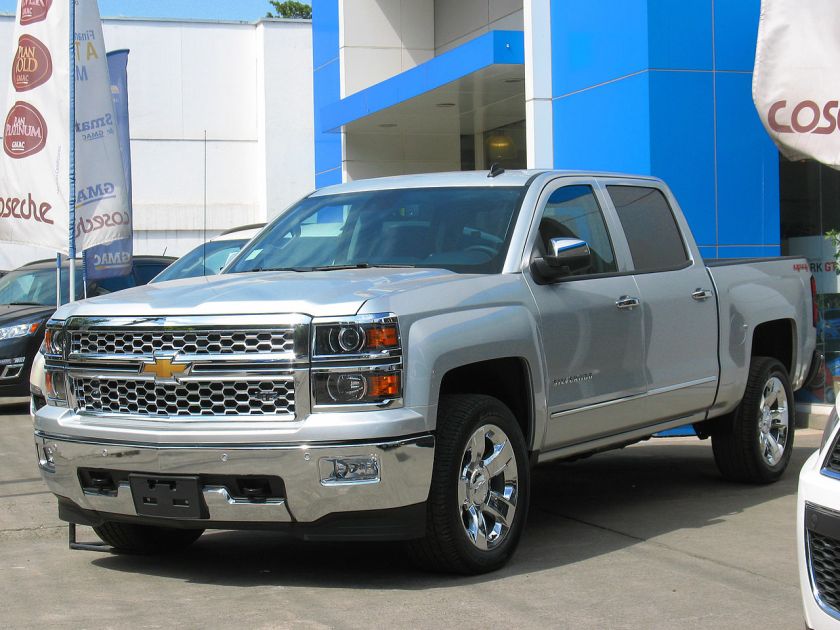
Overview Also called GMC Sierra
VIA Vtrux TruckProduction 2013–present Body and chassis Platform GMT K2XX Powertrain Engine LV3 EcoTec3 4.3 L V6 285 hp (213 kW)
L83 EcoTec3 5.3 L V8 355 hp (265 kW)
L86 EcoTec3 6.2 L V8 420 hp (313 kW)LY6 Vortec 6000 6.0 L V8 360 hp (268 kW)
LML Duramax 6.6 L V8 397 hp (296 kW)Transmission 6-speed 6L80 automatic
8-speed 8L90 automaticDimensions Wheelbase Regular 6’6″: 119 in (3,023 mm)
Regular 8′: 133 in (3,378 mm)
Double 6’6″ & Crew 5’5″: 143.5 in (3,645 mm)
Crew 6’6″: 153 in (3,886 mm)Length Regular 6’6″: 205.6 in (5,222 mm)
Regular 8′: 224.4 in (5,700 mm)
Double & Crew 5’5″: 230 in (5,842 mm)
Crew 6’6″: 239.6 in (6,086 mm)Width 80 in (2,032 mm) Height 73.5 in (1,867 mm) – 74.2 in (1,885 mm) On December 13, 2012, the redesigned 2014 Chevrolet Silverado, along with the related 2014 GMC Sierra were introduced in Detroit, Michigan at the North American International Auto Show. GM dropped the GMT and changed to K2XX. The new Silverado 1500 has three gas engine options: 4.3 L EcoTec3 V6, 5.3 L EcoTec3 V8, or 6.2 L EcoTec3 V8. Chevrolet’s MyLink touch-screen multimedia interface system will be available on most models. It will have A2DP stereo streaming technologies, Bluetooth hands-free telephone, USB hookups, and an input for an Apple iPod or iPhone. When connected via the USB port, an iPhone 4/4S, iPhone 5/iPhone 5S, iPhone 6, or iPhone 6 Plus will be able to stream music from Pandora Radio. A Bose premium audio system, as well as a Bose surround sound audio system will be available on most models. OnStar will be standard on all models. Underneath the new Silverado will benefit from a new fully boxed high strength steel frame with hydroforming technology, and the truck cab’s frame will be built with high strength steel as well. The new Silverado also will benefit from the use of aluminum on the hood, for the engine block and for the control arms in order to save mass. The truck’s bed will be made of roll-formed steel instead of stamped steel used by other manufacturers in order to save weight and gain strength. The 2014 Silverado will offer a new luxury model the High Country edition which includes saddle brown leather interior and the edition will be Chevrolet’s first entry into the luxury market. A revised front end features styling cues from the 1980s-era Chevrolet C-Series Trucks, and, on Z-71 models, a Z-71 badge was added to the front grille. Production of the Silverado began on April 29, 2013. The Silverado 1500 went on sale in May 2013 as a 2014 model, with the Silverado HD Series being available in early 2014 for the 2015 model year. On January 10, 2014 a recall was issued for 370,000 Silverado and Sierra pickups due to a fire risk.
A rebadged version of the Silverado called the Chevrolet Cheyenne is sold in Mexico.
The new American model version of the 2014 Chevrolet Silverado 1500/2500/3500HD and the 2015 Chevrolet Silverado High Country will be introduced to the Philippines market by Chevrolet Motorama Show late November 2014 as a MY2015, along with the MY2015 Chevrolet Suburban, 2015 Chevrolet Tahoe, 2015 Chevrolet Impala, 2015 Chevrolet Express Van and the new American model version are 2015 Chevrolet Traxand 2015 Chevrolet Colorado.
On January 14, 2014, The Silverado, along with the Chevrolet Corvette Stingray, received the 2014 North American International Auto Show’s Car and Truck of the Year awards.
For the 2015 model year, the 6.2L Ecotec3 was paired with the new 8-speed 8L90 transmission, offering a wider ratio spread with more closely spaced gears, quicker shifts, and improved acceleration and fuel economy.
Engines
Model Year Engine Power Torque 1500 2014- 4.3 L LV3 GM EcoTec3 4300 V6 285 hp (213 kW) @ 5300 RPM 305 lb·ft (414 N·m) @ 3900 RPM 2014- 5.3 L L83 GM EcoTec3 5300 V8 355 hp (265 kW) @ 5600 RPM 383 lb·ft (519 N·m) @ 4100 RPM 2014- 6.2 L L86 GM EcoTec3 6200 V8 420 hp (313 kW) @ 5600 RPM 460 lb·ft (624 N·m) @ 4100 RPM 2500HD/3500HD 2014- 6.0 L LY6 Vortec 6000 V8 360 hp (268 kW) @ 5400 RPM 380 lb·ft (515 N·m) @ 4400 RPM 2014- 6.6 L LML Duramax V8 397 hp (296 kW) @ 3200 RPM 765 lb·ft (1,037 N·m) @ 1600 RPM Model Year 2019
General Motors is rushing its next-generation full-size pickup trucks “T1XX” development program to compete with Ford Motor Company’s next-generation “P552” 2015 F150 pickup truck. Scheduled for a late 2018 launch, they will be all-new for model year 2019, at 9 months ahead of the originally scheduled 2019 launch.
Military applications
LSSV 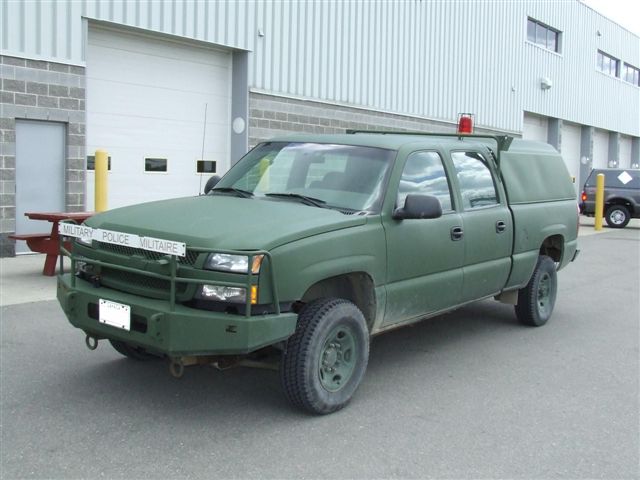
Overview Manufacturer General Motors, AM General Model years 2001– Body and chassis Body style 2-door SUV
4-door SUV
2-door pickup
4-door pickupPlatform GM GMT880 platform Powertrain Engine 6.6 L Duramax V8 Transmission 4-speed 4L80-E automatic
5-speed Allison 1000 automaticDimensions Width 79.9 in (2.03 m) Height 74.5 in (1.89 m) When production of the CUCV II ended in 2000, GM redesigned it to coincide with civilian truck offerings. The CUCV nomeclature was changed to Light Service Support Vehicle in 2001. In 2005, LSSV production switched to AM General, a unit of MacAndrews and Forbes Holdings. The LSSV is a GM-built Chevrolet Silverado 1500, Chevrolet Silverado 2500 HD, Chevrolet Tahoe, or Chevrolet Suburban that is powered by a Duramax 6.6 liter turbo diesel engine. The various Silverados, Tahoes, and Suburbans that are used provide numerous platforms for different kinds of vehicles. As GM has redesigned its civilian trucks and SUVs from 2001–present, LSSVs have also been updated cosmetically.
The Militarization of standard GM trucks/SUVs to become LSSVs includes exterior changes such as CARC paint (Forest Green, Desert Sand, or 3-color Camouflage), blackout lights, military bumpers, a brush guard, a NATO slave receptacle/NATO trailer receptacle, a pintle hook and tow shackles. The electrical system is changed to the 24/12 volt military standard. The dashboard has additional controls and dataplates. The truck also can be equipped with weapon supports in the cab, cargo tie down hooks, folding troop seats, pioneer tools, winches, and other military accessories.
The Enhanced Mobility Package (EMP) option adds enhanced suspension, 4-wheel anti-lock brakes, a locking differential, on/off road beadlock tires, a tire pressure monitoring system and other upgrades.About 2,000 LSSV units were sold to U.S. and international military and law enforcement organizations.
Variants
- Cargo/Troop Carrier Pickup (2-door, Extended Cab, or 4-door Silverado)
- Cargo/Troop Carrier/Command Vehicle (4-door Tahoe)
- Cargo/Troop Carrier/Command Vehicle/Ambulance (4-door Suburban)
Awards
- 1999 – Motor Trend magazine’s Truck of the Year
- 2001 – Motor Trend magazine’s Truck of the Year (Heavy Duty Model)
- 2001 – Car and Driver magazine’s Best Pickup Truck
- 2002 – Car and Driver magazine’s Best Pickup Truck
- 2003 – Car and Driver magazine’s Best Pickup Truck
- 2007 – North American Truck of the Year
- 2007 – Motor Trend magazine’s Truck of the Year
- 2007 – ICOTY International Truck of the Year
- 2007 – Truckin’ magazine’s Truck of the Year
- 2011 – Heavy Duty model won Motor Trend magazine’s Truck of the Year
Marketing
Like a Rock campaign
The Like a Rock campaign touted the Silverado as “the most dependable, longest lasting truck on the road”. The song “Like a Rock” by Bob Seger was licensed for use in the campaign. The campaign ended after the last commercials in the 2004 model year then the 2005 model year stopped the campaign and used the “An American Revolution” slogan. The song and slogan like a rock were used in Chevrolet truck commercials for more than ten years, one of the longest-running advertising campaigns in history.
Our Country. Our Truck. campaign
On September 26, 2006, Chevrolet announced plans for a multi-media marketing campaign to support the 2007 Silverado full-size pickup as an extension to Chevrolet’s An American Revolution campaign. The full campaign began on October 21, 2006 and featured the new tag line Our Country. Our Truck. The advertising videos used John Mellencamp‘s “Our Country” as their theme song. Two ads premiered during NBC‘s new Sunday Night Football in America.
The first video, named Anthem, was designed to showcase the good and bad of the past half century and how America has made it through difficult times. The video is filled with images of historic moments in recent American history, such as a nuclear explosion,Rosa Parks on a bus, Martin Luther King giving a speech, the site of the former World Trade Center in the months after 9/11, Hurricane Katrina’s devastation, then shows the trucks working to rebuild the devastated places, and ends with the tagline: This is our country. This is our truck. The final broadcast version did not include images of the nuclear explosion nor of the World Trade Center. Anthem has been criticized for using Civil rights activists to sell trucks and implying that there was a parallel between the struggles of the United States and the ongoing struggle General Motors is facing in today’s marketplace. However, a representative from GM stated that this was not the intent of the advertisement. Rather, the intent was to show how the trucks are used for work purposes, and the main audience for these trucks is for work. The second video, titled Birthplace, showed average American developing vehicles by unconventional means.
The campaign also included a 28 minute long infomercial, premiered on 2006-12-9. The infomercial starred former NFL football player Howie Long and Gary White, General Motors’ North American vehicle line executive for full-sized trucks. The infomercial premiered on channels such as Speed Channel. A 24-page publication was to be included with magazines such as Motor Trend, Field & Stream and Popular Science.
In January 2007, a Canadian version of Silverado ad started to appear, which was based on a variant of Birthplace previously shown on American channels. The ad uses a squared fonts for the texts, with images of forklifting timber, boy scouts, Dale Earnhardt, ‘This is Our Chat Room’ replaced by a skating hockey player, lighthouse on a rocky shoreline, and hockey player Bobby Orr. At the end of the video, the message was replaced by The Next Generation Chevy Silverado.
After winning the 2007 Motor Trend Truck of the Year award, another version of the ad showed the Silverado itself, with the message 2007 Motor Trend Truck of the Year at the end. The Canadian version of the ad only has cosmetic and slogan changes after the Silverado had won its award.
Motorsport
Xpress Motorsports won the 2002 and 2003 NASCAR Craftsman Truck Series. The truck also won the Primm 300 in 2004, 2005 and 2006.
Yearly American sales
Calendar Year Silverado GMC Sierra Total 1998 538,254 160,555 698,809 1999 636,150 208,693 844,843 2000 642,119 188,907 831,026 2001 716,051 210,154 926,205 2002 652,646 202,045 854,691 2003 684,302 196,689 880,991 2004 680,768 213,756 894,524 2005 705,982 229,488 935,468 2006 636,069 210,736 846,805 2007 618,259 208,243 826,500 2008 465,065 168,544 633,609 2009 316,554 111,842 428,396 2010 370,135 129,794 499,929 2011 415,130 149,170 564,300 2012 418,312 157,185 575,497 2013 480,414 184,389 664,803 2014 529,755 211,833 741,588 Special use Silverados and Sierras
-
Spill response vehicle used after Hurricane Sandy, Staten Island, New York
-
Monster truck at Half Moon Bay, California
-
Hearse in Indianola, Mississippi
Chevrolet Avalanche
Chevrolet Avalanche 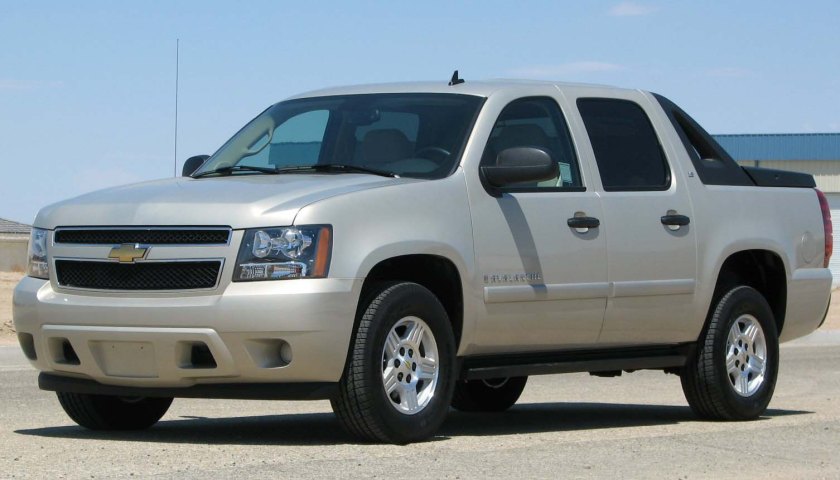
Overview Manufacturer Chevrolet (General Motors) Production September 2001–April 2013 Assembly Detroit, Michigan Designer Marc R. Asposito Grand Rapids, Michigan Body and chassis Class Full-size sport utility truck Body style 4-door truck Layout Front engine, rear-wheel drive /Four-wheel drive Related Cadillac Escalade EXT Dimensions Wheelbase 130.0 in (3,302 mm) The Chevrolet Avalanche is a four-door, five or six passenger sport utility truck sharing GM’s long-wheelbase chassis used on the Chevrolet Suburban and Cadillac Escalade EXT. Breaking with a long standing tradition, the Avalanche appearance was not available as a GMC, but only as a Chevrolet.
2001–2006
First generation / GMT800 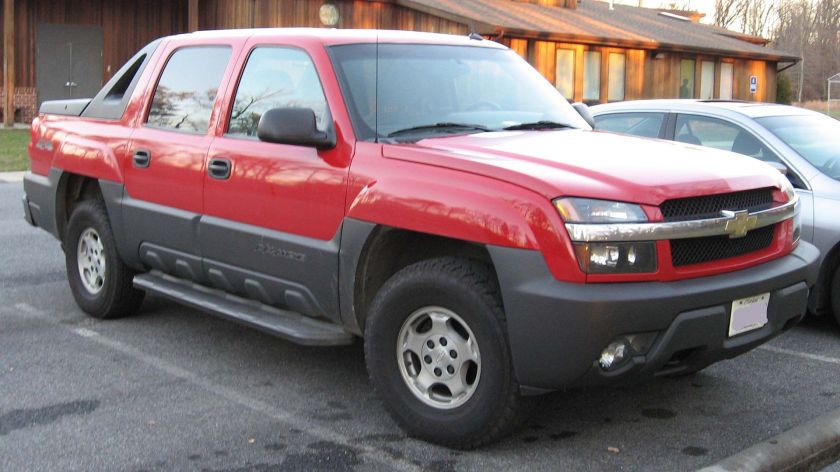
Overview Production September 2001 – March 2006 Body and chassis Platform GMT805 Related Cadillac Escalade
Chevrolet Tahoe/GMC Yukon
Chevrolet Suburban/GMC Yukon XL
Chevrolet Silverado/GMC Sierra
Hummer H2Powertrain Engine Transmission Dimensions Length 2002–03: 221.7 in (5,631 mm)
2004–06: 221.6 in (5,629 mm)Width 79.8 in (2,027 mm) Height 2002–03: 73.3 in (1,862 mm)
2004–06: 73.6 in (1,869 mm)The Avalanche was launched in September 2001 as a 2002 model on the GMT800 platform. First year Avalanches featured light gray plastic body cladding, intended to provide visual distinction from theSuburban/Yukon XL, but at the expense of a third row seat. Avalanche also gave the public an advance look at the next generation of front fascia designs for the entire GM line. A full-length chrome strip splits each lamp assembly and the grille, with a gold Chevrolet “bow tie” in the center. The hood and fenders featured aggressive folds, in contrast to the soft box of the other GMT800 models.
2003 models featured a darker cladding, but GM’s new president, Rick Wagoner, demanded removal of this “unpopular” trim (as did certain elements of the public). From mid-year, Avalanche could be ordered without the cladding. The uncladded model, known as the Without Body Hardware (or better by its acronym “WBH”), and alternatively called “slicksides” by GM marketers, resembles the ’03-’05 Silverado in the front.
Avalanche was nominated for the North American Truck of the Year award and was Motor Trend magazine’s Truck of the Year for 2002.
There are two engine choices:
- A Vortec 5.3 L V8 producing 290 hp (216 kW), for the half-ton 1500 series;
- A Vortec 8.1 L V8 with 340 hp (253 kW) and the 4L85-E four-speed transmission, for the three-quarter-ton 2500 series. The drive train is rear-wheel drive or available with selectable high/low four-wheel drive.
The Avalanche was originally marketed as being able to “change from a pickup to an SUV”. This was made possible by a plastic cover and an exclusive “midgate” which could open and close. The midgate was a divider behind the second row of seats that could be folded down, with the seats, to create a longer bed area, or folded up to make a larger cab area. A similar midgate was found on the Cadillac Escalade EXT, Hummer H2 SUT and the GMC Envoy XUV.
A Z71 Off-road package was also available on the Avalanche, which included off-road skid plates, 4 wheel drive, heavy duty suspension, and 17″ wheels.
The Avalanche was practically fully equipped, and only came in one model. This model included features such as sixteen-inch alloy wheels and tires (chromed steel on the 2500 model), an A/M-F/M stereo with single-disc CD player and six speakers, cloth seating surfaces, front bench seat with power front driver’s seat, power windows, power door locks, keyless entry, full instrumentation, dual front airbags, and air conditioning. Options included OnStar telematics system, cassette player, leather seating surfaces, front dual power bucket seats that could be heated, and side airbags for the front seats. A North Face Edition, in partnership with the North Face brand included limited exterior color options, a unique Ebony/Green leather interior, special exterior ornamentation and decals, white-faced gauges, OnStar telematics system, cassette player, specially colored door panel inserts and speaker grilles, and more.
For 2003, the Avalanche was slightly changed. A new interior, shared with the Chevrolet Tahoe and Chevrolet Suburban, added a new, larger steering wheel with subsequent audio system and OnStar controls and cruise and speed controls, an optional six-speaker premium Bose sound system with external amplifier, a new gauge cluster with information center, memory for the front driver’s seat (on some models), new radiohead units, which included an A/M-F/M stereo with single-disc CD/MP3 player and Radio Data System or an A/M-F/M stereo with six-disc CD/MP3 changer and Radio Data System, optional XM Satellite Radio, standard OnStar telematics system, optional rear audio controls with heaphone jacks, an optional rear DVD entertainment system by Panasonic with wireless headphones, new warning chimes that played through the vehicle’s audio system instead of through a separate speaker behind the dashboard, and newly available seventeen-inch alloy wheels and tires. A new WBH option, standing for Without Body Hardware, deleted the Avalanche’s standard gray body-side cladding panels and replacing them with a thin black strip of plastic, for a cleaner exterior appearance.
Cladding trouble
Soon after the release of the Chevrolet Avalanche, customers began to notice cosmetic problems with the cladding on their vehicles. Over time exposure to heat and sunlight would cause a chalky faded appearance. It was especially noticeable on the cargo bed panels, and sail-panel windows where “Zebra Striping” would appear. Customer reaction to this problem resulted in General Motors agreeing to a one time treatment of a product called ArmorDillo. This product would temporarily restore the cladding for a period of about 6 months. After that it would wear off then need to be re-applied. Realizing this was not a permanent solution, GM, together with Gatorback Coatings, developed a coating that could be applied to the cladding to restore it to a like-new shine. This product was designed to etch into the plastic and bond a new layer of tinted acrylic over the faded plastic. Customers within the 3yr/36,000 original factory warranty could go to their dealership to have it restored under their original warranty under GM TSB:04-08-111-001C. GM did not use side body cladding on the second generation model. General Motors has also identified the original source of the faded cladding.
2007–2013
Second generation (GMT900) Overview Production April 2006–April 2013 Model years 2007–2013 Body and chassis Platform GM GMT900 platform (Series GMT940: GMT941) Related Cadillac Escalade
Chevrolet Tahoe/GMC Yukon
Chevrolet Suburban/GMC Yukon XL
Chevrolet Silverado/GMC SierraPowertrain Engine Transmission - 4-speed GM 4L60-E transmissionautomatic (2007–08)
- 6-speed 6L80 automatic (2009–2013)
Dimensions Length 221.3 in (5,621 mm) Width 79.1 in (2,009 mm) Height 76.6 in (1,946 mm) The GMT900 Avalanche was introduced at the Chicago Auto Show in February 2006. Production of the redesigned Avalanche began at the Silao Assembly in April 2006. The Avalanche maintains the styled front end much like its sister vehicles, the Tahoe/Yukon and Suburban/Yukon XL, yet it still has the distinct midgate and integrated bed as found on the previous incarnation. It has all the same standard and available features as the Suburban and the Tahoe.
A special Z71 package was offered for the second generation Avalanche. This off road package consisted of a suspension tuned for rough terrain, an exclusive automatic locking rear differential, aluminum under body skid plates (visible from the front of the truck), wheel flares, badges, wheels and tires.
Later models introduced another version of the Vortec 5.3-liter V8 as the engine is now capable of running on E85 ethanol. When the 5.3 is running on normal gasoline, it produces 320 horsepower (240 kW) and 335 pound-feet (454 N·m) of torque whereas its output rises to 326 horsepower (243 kW) and 348 pound-feet (472 N·m) of torque on E85, up from 310 horsepower (230 kW) and 335 pound-feet (454 N·m) in 2009. For the 2010 model year, the 6.0-liter was dropped from the Avalanche lineup which left the 5.3 V8 as the only engine available for the truck. In its final year, the 6.0-liter produced 366 horsepower (273 kW) and 376 pound-feet (510 N·m) of torque.
A 2007 Avalanche was given away to the Most Valuable Player of the 2006 Major League Baseball All-Star Game, Michael Young.
An Avalanche is regularly featured on the popular US crime drama CSI: New York and is driven by all members of the team.
In addition, a 2007 Z-71 Avalanche placed second in Speed TV’s reality TV series ‘Bullrun’ in 2009.
Trim Levels
The second-generation Avalanche came in three well-equipped trim levels:
The LS served as the base model Avalanche. It included seventeen-inch alloy wheels and tires, cloth seating surfaces, power front driver’s bucket seat, OnStar telematics system, an A/M-F/M stereo with single-disc CD/MP3 player and auxiliary audio input jack with six speakers, keyless entry, and black door handles, tailgate handle, and side mirrors, aluminum interior trim, front and side airbags, traction control, StabiliTrak, and more.
The LT served as the midlevel model Avalanche. It added power dual front bucket seats, remote start, XM Satellite Radio, Bluetooth hands-free telephone system, and exterior color-keyed door handles, tailgate handle, and side mirrors, wood interior trim, as well as other features.
The LTZ was the top-of-the-line model Avalanche. It added leather seating surfaces, security alarm, an A/M-F/M stereo with six-disc CD/MP3/DVD changer, an eight-speaker premium Bose CenterPoint amplified surround sound system, memory for the front driver’s seat, twenty-inch polished alloy wheels and tires, and rear seat audio and video system controls,
Black Diamond Edition
2013 marked the Avalanche’s last year of production. For 2013, all Avalanches, regardless of trim level, featured the Black Diamond Edition Package, which added Black Diamond Edition emblems to the rear pillars, replacing the previous trim level designation emblems, and also adding unique emblems inside the Avalanche commemorating its production from 2002 to 2013. The 2013 Avalanche was produced in limited numbers. Each 2013 Avalanche buyer received a limited-edition coffee table book with photographs of the owner’s 2013 Avalanche, a copy of the window sticker from their vehicle, and a complete history of the Avalanche from 2002 to 2013. The book was shipped to either the dealership or owner’s home after the owner took delivery of their new 2013 Avalanche. In addition, a newly available color, named Fairway Green Metallic, commemorated the last year of production for the Avalanche (2013).
Engines:
- 5.3-liter Vortec 5300 V8 with Active Fuel Management, 320 horsepower (240 kW)
- 6.0-liter VortecMAX V8 with VVT and Active Fuel Management, 367 horsepower (274 kW) (late 2006)
Discontinuation
In April 2012, GM announced that production of the Avalanche would end after the 2013 model year, after 2011 saw a sales decline of 2.6% to 20,088 vehicles. Production of the Cadillac Escalade EXT also ended after the 2013 model year.
Yearly American sales
Calendar Year Total American sales 2001 52,955 2002 89,372 2003 93,482 2004 80,566 2005 63,186 2006 57,076 2007 55,550 2008 35,003 2009 16,432 2010 20,515 2011 20,088 2012 23,995 2013 16,986 Chevrolet SSR
Chevrolet SSR 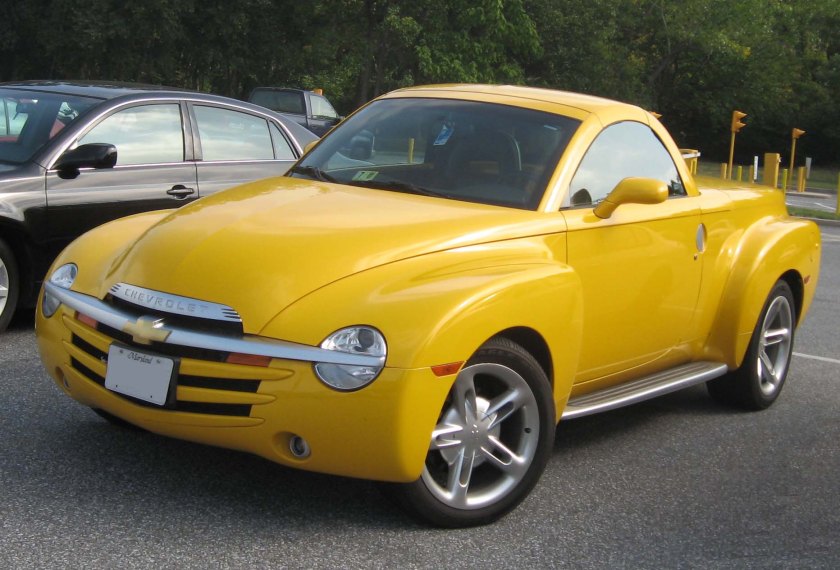
Overview Manufacturer Chevrolet (General Motors) Production 2003–2006 Assembly Lansing, Michigan, United States Body and chassis Class pickup Body style - 2-door muscle truck
- 2-door convertible
Layout FR layout Platform GM GMT368 platform Related Powertrain Engine Transmission Dimensions Wheelbase 116.0 in (2,946 mm) Length - 2001–05: 191.4 in (4,862 mm)
- 2006: 191.5 in (4,864 mm)
Width 78.6 in (1,996 mm) Height - 2000–05: 64.2 in (1,631 mm)
- 2006: 63.8 in (1,621 mm)
The Chevrolet SSR (Super Sport Roadster) is a retractable hardtop convertible pickup truck manufactured by Chevrolet between 2003 and 2006.
The 2003 and 2004 models used General Motors’ Vortec 5300 engine, a 5.3 L 300 hp V8. Performance was 7.7 s to 60 mph (97 km/h) with a 15.9 s/86.4 mph quarter mile run. The 2005 SSR used the 390 hp (291 kW) LS2 V8 also found in the C6 Corvette and Pontiac GTO, and also offered a manual transmission (the six-speed Tremec) for the first time, as an option. For the 2006 model year, the LS2 engine featured minor modifications that boosted its output to 395 hp (automatic transmission) and 400 hp (manual transmission), respectively. In addition, GM badges were added to the vehicle.
Design
Chevrolet SSR1954 Advanced DesignThe SSR was based on the long-wheelbase Chevrolet TrailBlazer EXT’s platform, and featured “retro” styling and a steel retractable hardtop designed by ASC. The production model was based on the SuperSport Roadster concept car shown at the 2000 Detroit Auto Show. An early-production SSR was the pace car for the 2003 Indianapolis 500 auto race.
The vehicle’s design was inspired by the late-1940s Chevrolet trucks, specifically the 1947–1955 Advance Design pickups.
Sales
The 2004 model sold below expectations with under 9,000 sales at US$42,000 each. Citing a 301-day supply of SSRs, General Motors in December of that year announced five weeks of layoffs at Lansing Craft Centre, the factory that made the SSR. On November 21, 2005, GM announced that it would close the Craft Centre in mid-2006, spelling the end for the SSR. The final SSR, a unique black-on-silver model (Highest VIN 1GCES14H06B124112), was built on March 17, 2006. Analysts estimate that 24,150 SSRs were produced in total. Of the total production, 24,112 were available for sale to the public.
Marketing
The SSR was introduced for its market debut in a 60 second television advertisement that first appeared on New Year’s Eve 2003, created by the firm of Campbell-Ewald, directed by Michael Bay and featuring the song Magic Carpet Ride by Steppenwolf. The advertisement was titled “An American Revolution, Car Carrier” and featured six yet to be introduced cars and trucks boarding a car carrier as it traversed the United States. It featured the Aveo descending the Twin Peaks of San Francisco and making an airborne leap highly reminiscent of Steve McQueen’s Ford Mustang in the movie Bullitt, before boarding the car carrier, to the yellow SSR boarding the carrier in reverse while the carrier is traveling down a desert highway.
Chevrolet LUV
Main articles: Isuzu Faster and Isuzu D-MaxThe Chevrolet LUV and the later Chevrolet LUV D-Max are light pickup trucks designed and manufactured by Isuzu and marketed in the Americas since 1972 by Chevrolet. The trucks, developed over four successive generations, are rebadged variants of the Isuzu Faster and D-Max. LUV is an acronym for “light utility vehicle”.
History
First sold in North America from 1972 as a badge engineered variant of the Japanese market Isuzu Faster, production of the first generation ended in 1980. The second generation, launched in 1980 as a 1981 model, was produced in Japan for North America and inChile for the South American market. North American sales ended with the release of the 1982 model year Chevrolet S-10 in 1981.
Production of the second generation LUV for South America continued until 1988 when the third iteration was released, once more based on the Japanese market Faster/Rodeo pickups.
This arrangement lasted until 2005 when the fourth series was introduced, now titled Chevrolet LUV D-Max and a rebadged version of the Isuzu D-Max.
-
First generation (1972–1980)Main article: Isuzu Faster
-
Second generation (KB; 1980–1988)Main article: Isuzu Faster
-
Third generation (TF; 1988–2005)Main article: Isuzu Faster
-
Chevrolet LUV D-Max (RA; 2005–2012)Main article: Isuzu D-Max
Chevrolet S-10
Chevrolet S-10 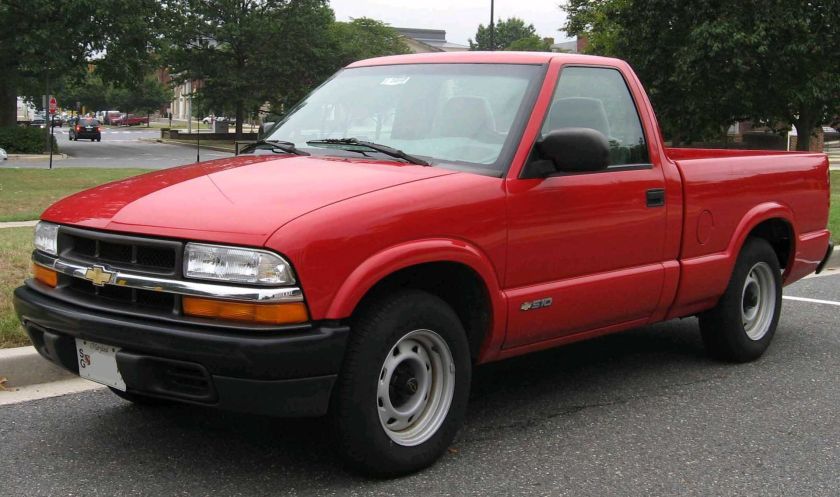
Overview Manufacturer Chevrolet/GMC (General Motors) Production 1982–2004 (North America)
1995–Present (Brazil)Body and chassis Class Compact pickup truck Layout Front engine, rear-wheel drive /four-wheel drive Chronology Predecessor Chevrolet LUV Successor Chevrolet Colorado / GMC Canyon(North America only) The Chevrolet S-10 is a compact pickup truck that is produced by Chevrolet. It was the first compact pickup of the big three American automakers. When it was first introduced in 1982, the GMC version was known as the S-15 and later renamed the GMC Sonoma. A high-performance version was released in 1991 and given the name of GMC Syclone. The pickup was also sold by Isuzu as the Hombre from 1996 through 2000, but only in North America. There was also an SUV version, the Chevrolet S-10 Blazer/GMC S-15 Jimmy. An electric version was leased as a fleet vehicle in 1997 and 1998. Together, these pickups are often referred to as the S-series.
In North America, the S-series was replaced by the Chevrolet Colorado, GMC Canyon, and Isuzu i-Series in 2004.
The S-Series ended production in Brazil in 2012, being replaced by the Chevrolet Colorado, but still with the name S-10.
First generation (1982–1994)
First generation 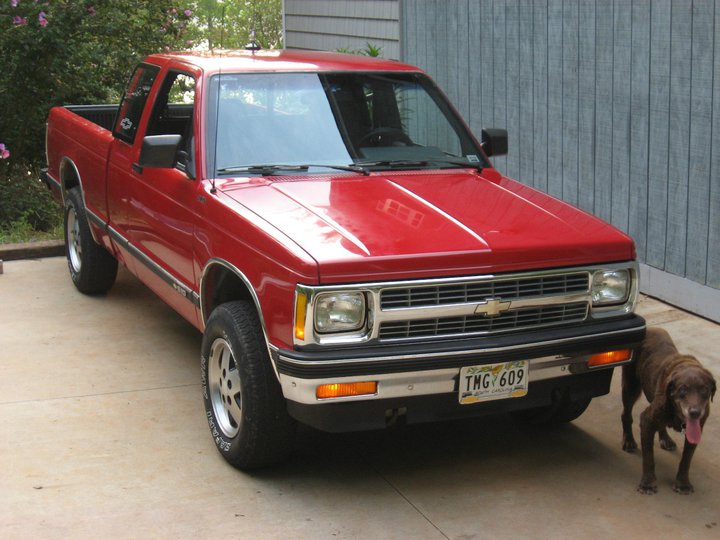
Overview Also called - GMC S-15
- GMC Sonoma
Production 1982–1994 Assembly United States: Moraine, Ohio(Moraine Assembly)
Shreveport, Louisiana (Shreveport Assembly)
Pontiac, MichiganBody and chassis Platform GMT325 Related Powertrain Engine Transmission - 3-speed THM-200C automatic
- 4-speed Isuzu S101 manual
- 4-speed Borg-Warner T4 manual
- 4-speed 700R4 automatic
- 4-speed 4L60 automatic
- 4-speed 4L60-E automatic
- 5-speed Getrag 290 manual
- 5-speed 5LM60 manual
- 5-speed NV3500 manual
- 5-speed Borg Warner T5 manual
Dimensions Wheelbase - 108.3 in (2,751 mm) (reg. cab short bed)
- 117.9 in (2,995 mm) (reg. cab long bed)
- 122.9 in (3,122 mm) (ext. cab short bed)
The first compact truck from the big three automakers was the rebadged Isuzu KB sold since 1972 as the Chevrolet LUV. The 1973 Arab oil embargo forced GM to consider designing a domestically produced compact pickup truck. As usual, parts from other GM chassis lines (primarily from the GM G-body intermediates) were incorporated. The first S-series pickups were introduced in 1982. The Chevrolet and GMC models were identical apart from the grille, tailgate and assorted insignia. An extended cab and “Insta-Trac” four-wheel drive were added the next year along with two new engines.
Track width was similar to the former GM H-body subcompacts (Vega/Monza).
The sport utility S-10 Blazer and S-15 Jimmy debuted in 1983; GM was the second to introduce compact sport utilities, behind Jeep but ahead of Ford. This occurred again where 4-door variants were introduced in March 1990 as 1991 models alongside the badge-engineered Oldsmobile Bravada.
New heavy-duty and off-road suspensions appeared in 1984 along with a hydraulic clutch, while the big news for 1985 was the discontinuing of the Cavalier‘s 2.0 L OHV I4 in favor of Pontiac‘s 2.5 L “Iron Duke” OHV I4. The OHV-derived 2.2 L diesel engine and 1.9 L SOHC gas engine, both from Isuzu, were gone the next year, leaving just the Iron Duke and updated 2.8 L V6. A much-welcomed 4.3 L V6 was added for 1988, and anti-lock brakes came the next year.
The GMC S-15 became the GMC Sonoma in 1991, and the Sierra trim packages were dropped to avoid confusion with the new GMC Sierra full-size pickup. The GMC Syclone also appeared that year. The Sonoma GT bowed in 1992. Added to this was the 4.3 L V6 Vortec W code engine. This generation’s last year was 1994.
The Vortec has a balance shaft, roller lifters, different heads, and Central Port Injection. The 1992-1994 engine came in either a 195 hp (145 kW) or 205 hp (153 kW) rating. The High Performance version came with a larger diameter Y pipe, and was only installed in some of the S-10 Blazers and S-15 Jimmies as well as the S-10 Pickups
S-10 Baja Edition
The S-10 Baja is an optional appearance package that was put on any type 4wd S-10 (regular-cab w/ short-box, regular-cab w/ long box and extended-cab w/ short box) from 1988 to 1991. The trucks came in 3 colors: Midnight Black, Apple Red, and Frost White. The Baja option included: a roll bar with off-road lights, a front tubular grille guard with fog lights, a tubular rear bumper, an under-body shield package (transfer case shield, front differential shield, fuel tank shield, oil pan/steering linkage shields), a suspension package, a Chevrolet windshield banner, Baja decals on the box sides and one inch wide body striping. Extra cost Baja options included: a cargo-net end-gate, aluminum outlaw wheels and a special box-mounted spare tire carrier w/ aluminum wheel. In 1991 the S10 Bajas came with BAJA embroidered on the seat backs and unique door panel trim.
Sonoma GT
The Sonoma GT was a performance package available on the 2WD regular cab short bed Sonoma. It was available for the 1992 model year only as an entry-level version of the GMC Syclone. A total of 806 were built. The truck was powered by an enhanced Vortec 4.3 L V6. It featured central multi-port fuel injection and produced 195 hp (145 kW) and 260 lb·ft (350 N·m) of torque. It was equipped with a 4L60 automatic transmission and a limited-slip differential with 3.42:1 gearing.
Modified by Production Automotive Services of Troy, Michigan, it was fitted with the Syclone interior package featuring black cloth bucket seats with red piping, a special gauge package, and a floor shift console.
Sonoma GT color breakdown;
- Black w/ Black (408 Total)
- Black w/ Gray (41 Total)
- Frost White w/ Gray (101 Total)
- Apple Red w/ Gray (180 Total)
- Bright Teal w/ Gray (48 Total)
- Forest Green Metallic w/ Gray (14 Total)
- Aspen Blue w/ Gray (14 Total)
1994 Sonoma
Some 1992, 1993, and 1994 Sonomas came with a factory equipped L35 W code engine. For 1993 and 1994 no specialty labeling or limited edition tags were known to be used with the W code engine. Production totals for these vehicles are unknown.
1991 Syclone
Main article: GMC SycloneThis GMC came with an LB4 4.3L V6 with lower compression pistons and a turbocharger. They produced ~280 hp.
Engines
Years Engine Power Torque 1982–1985 1.9 L LR1 Isuzu I4, 2-barrel 82 hp (61 kW) @ 4600 RPM 101 lb·ft (137 N·m) @ 3000 RPM 1983–1984 2.0 L LQ2 GM 122 I4, 2-barrel 83 hp (62 kW) @ 4600 RPM 108 lb·ft (146 N·m) @ 2400 RPM 1984–1985 2.2 L LQ7 Isuzu Diesel I4 62 hp (46 kW) @ 4300 RPM 96 lb·ft (130 N·m) @ 2200 RPM 1985–1986 2.5 L LN8 Iron Duke TBI I4, 92 hp (69 kW) @ 4400 RPM 134 lb·ft (182 N·m) @ 2800 RPM 1987-1989 92 hp (69 kW) @ 4400 RPM 130 lb·ft (176 N·m) @ 3200 RPM 1990 94 hp (70 kW) @ 4400 RPM 130 lb·ft (176 N·m) @ 3200 RPM 1991-1994 2.5 L L38 Iron Duke TBI I4, 105 hp (78 kW) @ 4800 RPM 135 lb·ft (183 N·m) @ 3200 RPM 1982 2.8 L LR2 60° V-6, 2-barrel 110 hp (82 kW) @ 4800 RPM 148 lb·ft (201 N·m) @ 2000 RPM 1983-1984 110 hp (82 kW) @ 4800 RPM 145 lb·ft (197 N·m) @ 2100 RPM 1985 115 hp (86 kW) @ 4800 RPM 150 lb·ft (203 N·m) @ 2100 RPM 1986 2.8 L LL2 60° V-6, TBI 125 hp (93 kW) @ 4800 RPM 150 lb·ft (203 N·m) @ 2200 RPM 1987-1994 125 hp (93 kW) @ 4800 RPM 150 lb·ft (203 N·m) @ 2400 RPM 1988–1992 4.3 L LB4 90º V-6, TBI 160 hp (119 kW) @ 4000 RPM 230 lb·ft (312 N·m) @ 2800 RPM 1993-1994 165 hp (123 kW) @ 4000 RPM 235 lb·ft (319 N·m) @ 2400 RPM 1992-1994 4.3 L L35 90º V-6, CPI 195 hp (145 kW) @ 4500 RPM 260 lb·ft (353 N·m) @ 3600 RPM Second generation (1994–2005)
Second generation 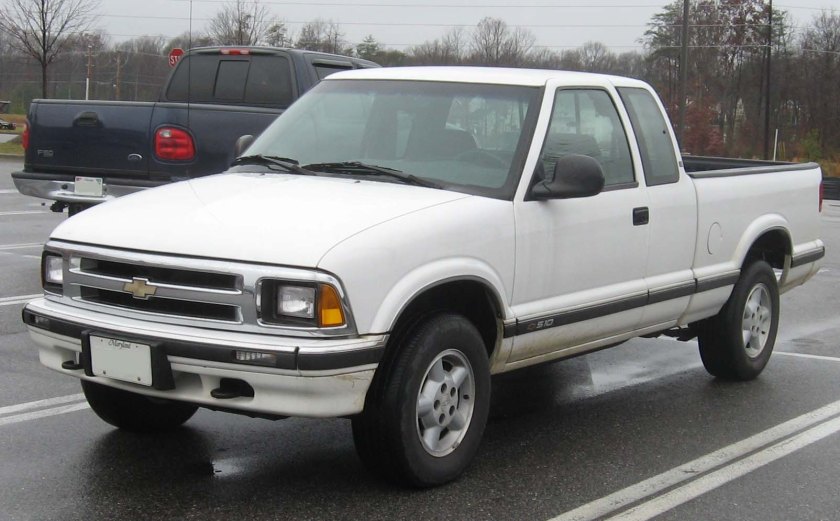
Overview Also called GMC Sonoma
Isuzu Hombre
Chevrolet XtremeProduction 1994–2005 (North America)
1995–2012 (Brazil)
1996–2000 (Isuzu Hombre)Assembly Shreveport, Louisiana, United States
Linden, New Jersey, United States
São José dos Campos, Brazil (GM Brazil)Body and chassis Platform GMT325 Related Powertrain Engine 2.2 L I4
4.3 L V6Transmission 4-speed 4L60-E automatic
5-speed Borg-Warner T-5 manual (1994–95 I4)
5-speed NV1500 manual (1996+ I4)
5-speed NV3500 manual (V6)Dimensions Wheelbase 108.3 in (2,751 mm) (reg. cab short bed)
117.9 in (2,995 mm) (reg. cab long bed)
122.9 in (3,122 mm) (ext. cab short bed)Length 190 in (4,826 mm) (short bed)
203 in (5,156 mm) (ext. cab)
205 in (5,207 mm) (long bed)Width 67.9 in (1,725 mm) Height 63.5 in (1,613 mm) The second-generation trucks arrived in the 1994 model year. The HD GMC S15 has a ladder truck frame versus the S10 and some parts such as rear bumpers, trailer hitches etc do NOT interchange. All of the special models (the Syclone, Typhoon, and Sonoma GT) were discontinued, but the changes to the pickup brought it in line with its major competitor the Ford Ranger. The Iron Duke 4-cylinder and 2.8 L 60° V6 engines were retired, the 4.3 L Vortec V6 was enhanced, and a new 2.2 L 4-cylinder engine (which had been introduced in 1990 on various FWD GM compact and mid-size platforms) became the engines of choice to power the second generation of S-10’s. In compliance with the Clean Air Act, all 2nd Generation S-10s and Sonomas equipped with air-conditioning used CFC-free R134a refrigerant beginning in the 1994 model year. The all new 1994 s-10 didn’t offer any airbag, presumably as a temporary measure to economize the introduction of the new body styles, as well as to gradually phase out steering wheel designs that didn’t accommodate for airbags, though the vehicle itself was slated for airbag capability.
Many of the chassis components were the same as the first generation (the A-frames between the first and second generation were the same although they were originally sourced from GM’s G-body vehicle lineup), along with the steering knuckle, leaf springs, and differential assembly but suspension and axles were greatly enhanced.
Generally, for the 2WD trucks, the 8.5-inch rear end was only used when it came with both a manual transmission and the large 4.3 L (262 cu in) V6 engine; it was an option for 4WD trucks with either transmission. This was also the year that GM introduced the ZR2 Offroad Package.
For 1995, a driver’s-side air bag was added also day time running lights. In 1996 the 4.3 L engine was refreshed, and a third (rear) door was added for extended cab models, along with the sportside bed option. In 1998, the exterior, interior, brakes, and 2.2 L I4 engine were refreshed, along with a “next-generation” supplemental restraint system that added a passenger-side air bag. “Auto-Trac” all-wheel drive also became an option starting in 1999 for the 4WD Blazers. The SS package was replaced by the “Xtreme” package. In 2001 a crew cab option was added and was available in 4WD and automatic transmission only. For the 2004 model year, the regular and extended cab models were discontinued; only the crew cab model was retained.
Base 2WD models came with 15×6.5-inch wheels with directional vents, Xtreme and ZQ8 models came with 16×8-inch wheels while 4WD models (including the ZR2) used 15×7-inch wheels. The 14-inch (360 mm) wheels used on the first generation were discontinued.
SS
The Chevrolet S-10 SS was a high-performance version of the S-10, introduced in 1994. Fewer than 3000 SS’s were produced yearly on average. When introduced, the SS was sold in only three colors: Onyx Black, Summit White, and Apple Red. The SS was discontinued in 1998. In 1999, it was replaced by the S-10 Xtreme.
A 4.3-liter V6 (which was optional on regular S-10s) was the standard engine used in the SS version, producing between 180 and 200 hp (149 kW). The SS included lowered suspension (1996–98), cosmetic changes such as a different grille, body-colored bumpers, 16-inch wheels (1996–98), and other sporty touches. All SS versions were regular cabs. A step-side version was available from 1996 to 1998. The SS option package was only available with an automatic transmission and 3.42 posi-traction rear-end.
ZR2
The ZR2 package was an off-road package available for the second generation Chevy S-10. The ZR2 package included a 4-inch (100 mm) wider track width, a boxed ladder-type frame with modified suspension mounting points, larger wheel and axle bearings, 31-inch all-terrain tires, a suspension lift (approximately 3 inches more ground clearance vs. a regular 4wd S-10), upgraded Bilstein suspension, fender flares, alloy wheels, and an 8.5-inch Chevy 10-bolt rear differential with 3.73:1 gears.
Isuzu Hombre
Chevrolet Colorado
For the vehicle of the same name sold in Thailand, see Isuzu D-Max. For the SUV, see Holden Colorado 7.Chevrolet Colorado & GMC Canyon 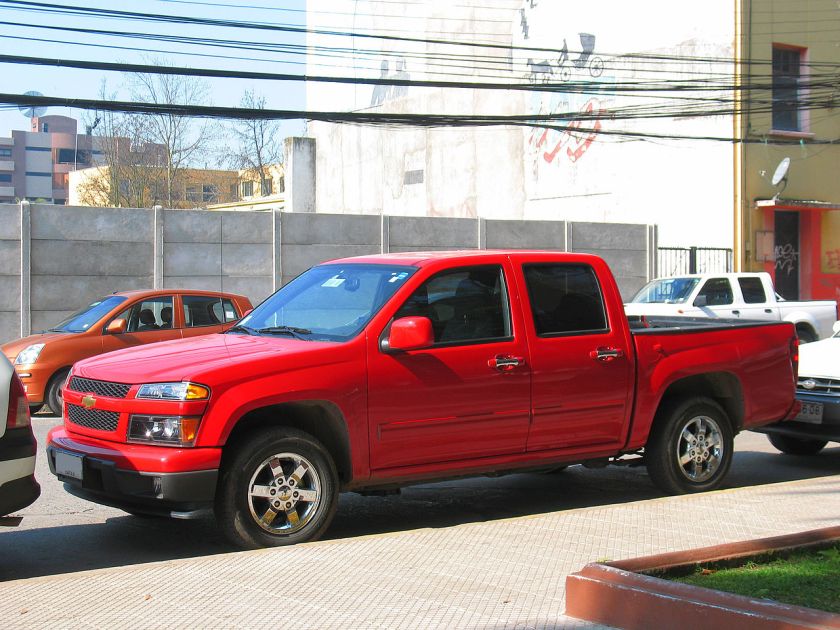
Overview Manufacturer Chevrolet/GMC (General Motors) Production 2004–2012, 2014–present (U.S.)
2004–present (Thailand)
2012–present (Brazil)Assembly Wentzville, Missouri, United States
Rayong, Thailand
São José dos Campos, BrazilBody and chassis Class Compact pickup truck Body style 2-door regular cab
4-door extended cab
4-door crew cabLayout Front-engine, rear-wheel drive/four-wheel drive Chronology Predecessor Chevrolet S-10 / Isuzu Hombre / GMC Sonoma The Chevrolet Colorado and its counterpart, the GMC Canyon, are compact pickup trucks marketed by American automaker General Motors. They were introduced in 2004 to replace the Chevrolet S-10 and GMC Sonoma compact pickups.
First generation (2004–2012)
First generation 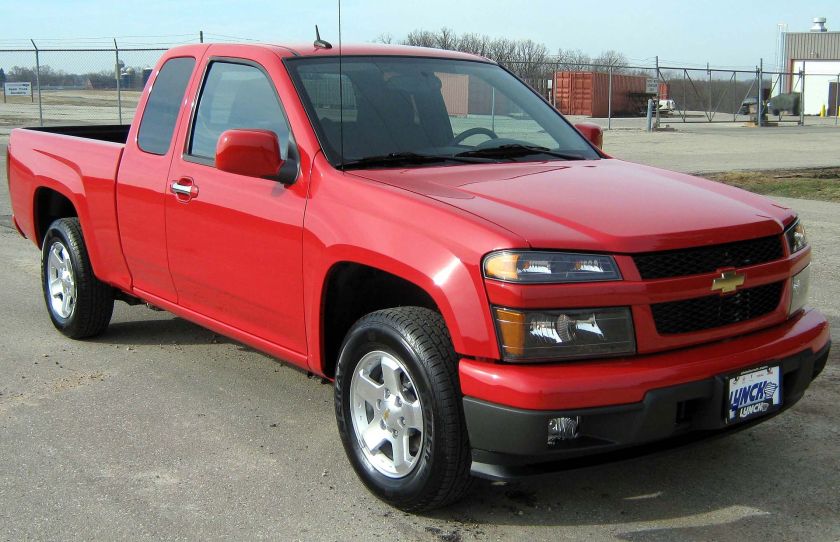
Overview Also called - GMC Canyon
- Isuzu i-Series
Production 2004–2012 Model years 2004–2012 Assembly United States: Shreveport, Louisiana (Shreveport Assembly) Body and chassis Platform GMT355 Related Holden Rodeo
Isuzu D-Max
Hummer H3
Hummer H3T
Isuzu MU-7Powertrain Engine 2.5 L (153 cu in) 4JK1
2.8 L (171 cu in) LK5 I4
2.9 L (177 cu in) LLV I4
3.0 L (183 cu in) 4JJ1
3.5 L (214 cu in) L52 220hp I5
3.7 L (226 cu in) LLR I5
5.3 L (323 cu in) LH8 V8Transmission 5-speed manual
4-speed automaticDimensions Wheelbase Regular cab 111.2 in (2,824 mm)
Extended cab 126 in (3,200 mm)
Crew cab 120 in (3,048 mm) (Thailand Ver.)Length Regular cab 192 in (4,877 mm)
Extended cab 207.1 in (5,260 mm)
Crew cab 194 in (4,928 mm) (Thailand Ver.)Width 68 in (1,727 mm)
70.8 in (1,798 mm) (Thailand Ver.)Height 65 in (1,651 mm)
69.1 in (1,755 mm) (4×4 Thailand Ver.)The Chevrolet Colorado and its twin, the GMC Canyon were jointly designed by GM’s North American operations, GM’s Brazil operations, and Isuzu. Isuzu, which participated in the design process, began selling its own version worldwide in 2002. In late 2005, Isuzu offered a version in North America called the Isuzu i-Series. This North American model Isuzu shared North American powertrains, styling, and equipment with the Colorado/Canyon twins and differed from Isuzu’s worldwide offering. All Chevrolet, GMC, and Isuzu versions worldwide are based on the GMT355, itself the basis for the GMT 345-based Hummer H3. Most vehicles for markets outside North America are manufactured at a GM plant in Rayong, Thailand, as well as at a GM plant in São José dos Campos, Brazil. Most North American-market vehicles were manufactured in Shreveport, Louisiana.
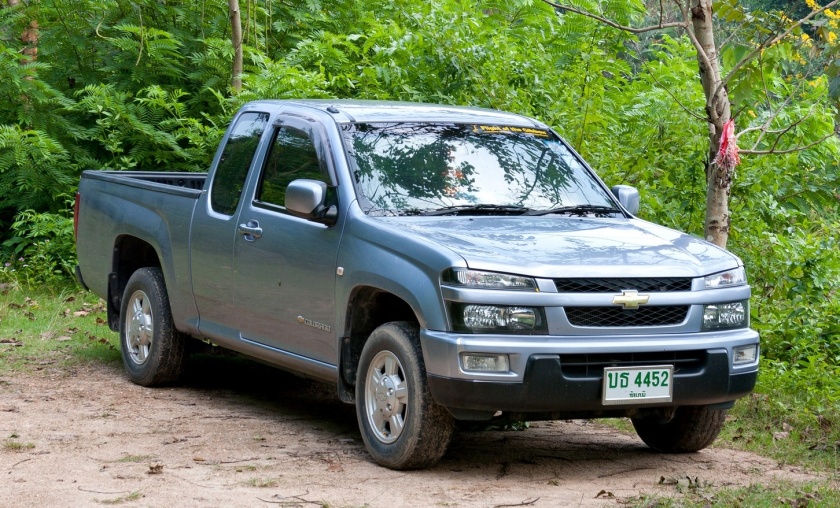
Chevrolet Colorado in Thailand.
The Colorado/Canyon offer both manual and automatic transmissions. GM also offers either a rear-wheel drive or four-wheel drive drivetrain with standard, extended, and four-door crew cab body styles. Most models come with the 2.8 L (171 cu in) LK5 I4 engine as standard, but a more powerful 3.5 I5 comes with the Z71 package on four-door versions and is optional on all others. The 4-door Z71s also get the 4-speed automatic transmission standard. This package was later dropped in favor of LT2 and LT3.
A ZQ8 edition is available with a lower and more road-tuned “sport” suspension than the standard Z85 and comes with 17 inch wheels, color-matched bumper and grille, and low profile fender flares. There is also a Xtreme edition of the ZQ8 which has a different front bumper, rear bumper, side skirts, fender flares, grille, headlights, and 18 inch wheels. The Xtreme edition is basically a continuation of a trim package from its predecessor, the Chevrolet S-10.
For 2007, Colorado/Canyon was facelifted and offered new engines, which include the 2.9 L (177 cu in) LLV I4 and 3.7 L (226 cu in) LLR I5 which were both introduced due to numerous head problems, new colors — Deep Ruby (Sonoma Red for the Canyon), Pace Blue (Sport Blue for the Canyon) and Imperial Blue (Midnight Blue for the Canyon), and new tires and wheels. Minor changes to the grille and interior for the LT and LTZ models; the LS models kept the same pre-facelift look, similar to the facelift of the TrailBlazer in 2005 & 2006. In addition, the “Colorado” & “Canyon” badges were phased out from the doors in favour of GM’s corporate logo. For model year 2009, the Colorado was facelifted again and a 5.3 L (323 cu in) LH8 V8 is offered, producing 300 hp (224 kW) and 320 lb·ft (434 N·m). For the 2010 model year, the GM badges were phased out from those trucks, although fewer 2010 models had the GM logo on the doors.
Colorado/Canyon U.S. sales peaked in 2005 at 163,204 units, surpassing the perennial segment leader, the Ford Ranger, by almost 35% and just 3.3% behind the new best-seller, the Toyota Tacoma. In 2006, however, while still leading the Ford pickup by 27.5%, Colorado/Canyon’s sales lagged their Toyota competitor’s by almost 34%. One 2005 Canyon owned by successful U.S. Senate candidate Scott Brown became famous as it was widely featured in his TV advertisements.
SG Automotive manufactures a clone of the Colorado called the Huanghai Plutus in China
Engines
Years Engine Power Torque 2004–2012 2.5 L (153 cu in) 4JK1-TC I4 116 hp (87 kW) 206 lb·ft (279 N·m) 2004–2012 3.0 L (183 cu in) 4JJ1-TC I4 146 hp (109 kW) 216 lb·ft (293 N·m) 2012 3.0 L (183 cu in) 4JJ1-TCX I4 163 hp (122 kW) 265.5 lb·ft (360 N·m) 2004–2006 2.8 L (173 cu in) LK5 I4 175 hp (130 kW) @ 5600 RPM 185 lb·ft (251 N·m) @ 2800 RPM 2007–2012 2.9 L (178 cu in) LLV I4 185 hp (138 kW) @ 5600 RPM 190 lb·ft (258 N·m) @ 2800 RPM 2004–2006 3.5 L (214 cu in) L52 I5 220 hp (164 kW) @ 5600 RPM 225 lb·ft (305 N·m) @ 2800 RPM 2007–2008 3.7 L (223 cu in) LLR I5 242 hp (180 kW) @ 5600 RPM 242 lb·ft (328 N·m) @ 2800 RPM 2009–2012 3.7 L (223 cu in) LLR I5 242 hp (180 kW) @ 5600 RPM 242 lb·ft (328 N·m) @ 4600 RPM 2009–2012 5.3 L (325 cu in) LH8 V8 300 hp (224 kW) @ 5200 RPM 320 lb·ft (434 N·m) @ 4000 RPM 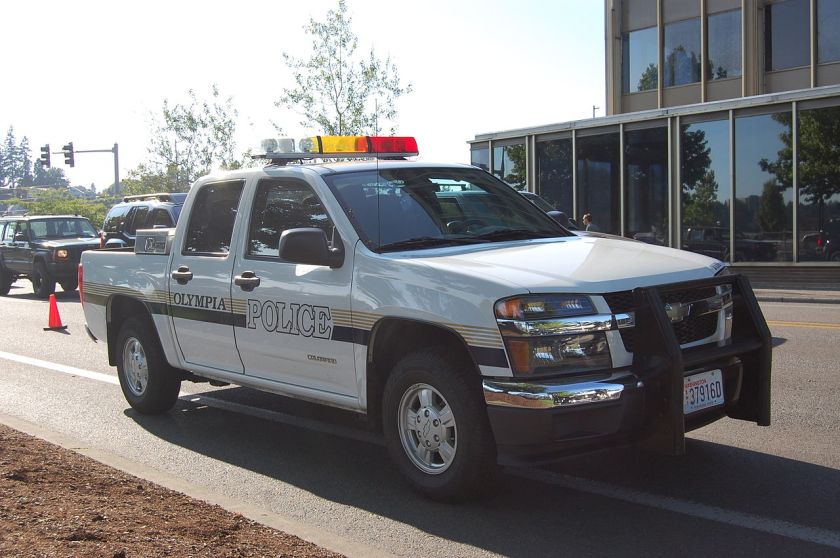
Chevrolet Colorado being used by Police in Olympia, Washington
Safety
In the Insurance Institute for Highway Safety‘s frontal offset test the Colorado (extended version) is given a “Good” overall score, however the crew cab is rated “Acceptable”. In the side impact test, the Colorado crew cab is rated “Poor” with or without side curtain airbags. Side curtain airbags were made standard on all 2010 models; side torso airbags are not offered.
Isuzu i-series
The Isuzu i-Series mid-size pickup truck line was manufactured from 2005 to 2008. Launched at the 2005 New York International Auto Show, for the 2006 model year, the i-Series replaced the Isuzu Hombre, which had been out of production since 2000. Like the Hombre, which was based on the compact Chevrolet S-10 / GMC Sonoma, the i-Series was based on the Chevrolet Colorado / GMC Canyon. The sales for the i-Series were poor, with just 1,377 sold from the start of production through February 2006 according to Automotive News. As part of Isuzu’s withdrawal from the United States market after the 2008 model year, the i-Series was discontinued, replaced by the related Hummer H3T for GM’s Hummer brand.
Second generation (2012–present)
Second generation 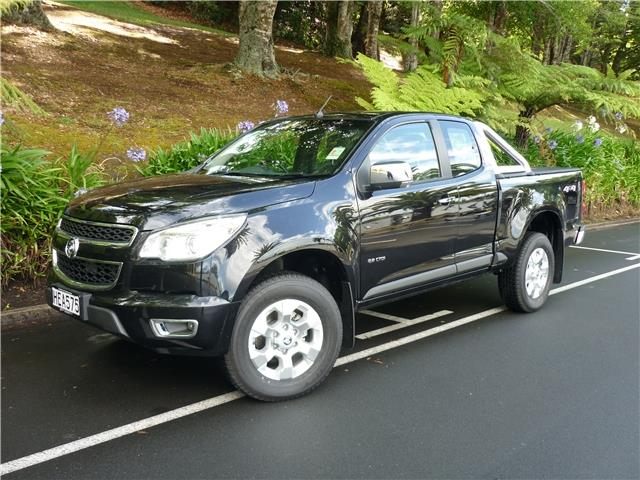
Overview Also called - Chevrolet S10 (Brazil)
- GMC Canyon (US)
- Holden Colorado (Australia)
- Isuzu D-Max
Production 2012–present Model years - 2012–present
- 2015– (US)
Assembly - Brazil: São José dos Campos (GM do Brasil)
- Thailand: Rayong
- United States: Wentzville, Missouri(Wentzville Assembly)
Body and chassis Platform GMT 31XX Related Powertrain Engine - 2.4 L Flexpower I4(gasoline/ethanol)
- 2.5 L Ecotec (LCV) I4 (gasoline)
- 2.5 L Duramax I4 (turbodiesel)
- 2.8 L Duramax (LWN) I4(turbodiesel)
- 3.6 L High Feature engine (LFX)V6 (gasoline)
Transmission - 5-speed manual
- 6-speed manual Eaton N8D
- 6-speed automatic 6L50
Dimensions Wheelbase 3,096 mm (121.9 in) Length 5,347 mm (210.5 in) Width 1,882 mm (74.1 in) Height 1,781 mm (70.1 in) The second-generation Chevrolet Colorado was shown at the 2011 Bangkok Motor Show. It is available in three different cab styles: regular cab (single cab), extended cab (space cab), and crew cab (double cab) and may either be rear-wheel drive or four-wheel drive.
Holden Colorado
The Holden Colorado was revealed at the 2011 Australian International Motor Show and went on sale in June 2012 in both Australia and New Zealand. It is available in four trim levels: DX (single cab chassis only),LX (chassis only), LT and LTZ. Single cab and crew cab models are available as either two-wheel drive or four-wheel drive.
A Thunder Edition is available on 4×4 LX, LT and LTZ models. Among the features included with the pack are a nudge bar and towing kit, front carpet floor mats and a one-piece rear carpet floor mat, a bonnet protector, slimline weather shields and “Thunder” badging.
Trim levels
- DX: features a manual transmission, ESC, side-curtain airbags, Bluetooth capabilities, and 16″ steel wheels.
- LX: features either a 5-speed manual or 6-speed automatic transmission, power mirrors, and cruise control.
- LT: features fog lamps
- LTZ: features 17″ alloy wheels, optional leather seats, LED tail lamps, projector headlamps, sports bar, soft tonneau cover, and side steps.
US market
The US-spec model was revealed on November 20, 2013 at the Los Angeles Auto Show. Production is expected to begin at Wentzville Assembly in 2014, with vehicles arriving at dealerships nationwide by mid-late 2014, as an early 2015 model year vehicle. It will compete with other midsized pickup truck offerings, such as the Nissan Frontier and Toyota Tacoma. The US spec model will however, feature a different front fascia, with its design being similar to the 2014 Chevrolet Silverado, and different engines. General Motors’ Wentzville assembly plant, received a $380 million expansion of 500,000 square feet that was constructed to support the new Colorado’s assembly. On September 18, 2014, GM announced that it would add more workers to the Wentzville assembly after it received early advanced orders of 30,000 Colorado/Canyons from its dealerships ahead of its release.
For the initial launch, the Colorado will be available with either a 2.5 L Ecotec I4 engine or the 3.6 L LFX V6 engine. The 2.8 L Duramax LWN turbodiesel engine is to be added in 2015, and is a first for its class ever in the US market. It will also be available in three cab configurations: (extended cab with a 6.2 ft (1.9 m) bed, crew cab with a 5.2 ft (1.6 m) bed, or crew cab with a 6.2 ft (1.9 m) bed, with four-wheel drive being optional.
Sixteen-inch or seventeen-inch steel wheels or alloy wheels will be available, as will a decor package for the W/T model that will add a chrome front grille and body-colored door handles and side view mirrors.
Trim levels
- Base: Base trim level
- WT: Base trim level with few amenities
- LT: Mid trim level and most common
- Z71: Top trim, includes off-road equipment
GMC Canyon
The all-new GMC Canyon was introduced on January 12, 2014, GMC introduced in an official press and video release and made its public debut the following day (January 13, 2014) at the North American International Auto Show in Detroit, with sales to begin at dealerships in the second quarter of 2014 as a 2015 model.
The Canyon will offer the same features as its cousin, but will have a higher MSRP and more options. It too, sports a front grille design that closely resembles its full size sibling, the GMC Sierra. The 2015 Canyon will come in three trims and either two-wheel drive or four-wheel drive. Although, the base model will only be available with the 2.5 L Ecotec I4 engine, a 6-speed manual transmission, and two-wheel drive.
Optional features (based on trim) will include active aero grille shutters, available OnStar 4G LTE connectivity with on-board wifi, forward collision warning, lane departure warning, and an available Teen Driver feature that limits speed and audio volume.
On February 16, 2015, GMC posted spyshots of a Canyon with Denali styling, indicating plans to add the mid-size truck to the Denali lineup as a 2016 model.
Chevrolet El Camino
See also: GMC Sprint / CaballeroChevrolet El Camino 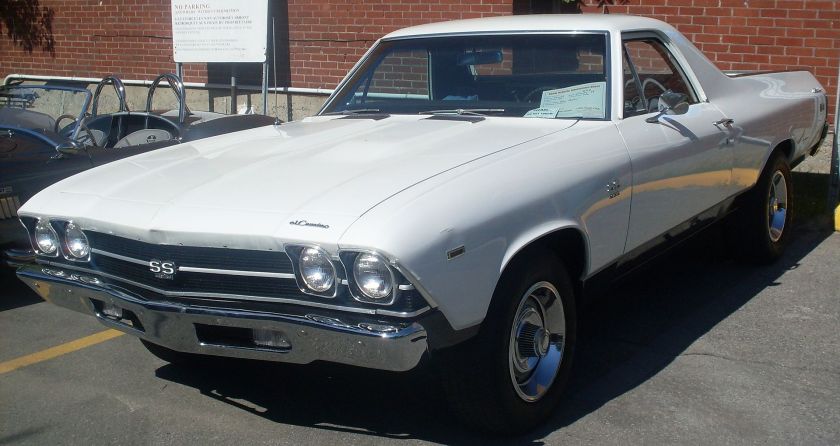 1969 Chevrolet El Camino SS
1969 Chevrolet El Camino SSOverview Manufacturer Chevrolet (General Motors) Model years 1959–1960
1964–1987Body and chassis Class Coupé utility Layout FR layout Chevrolet El Camino is a coupé utility vehicle that was produced by Chevrolet between 1959–60 and 1964-87.
Introduced in the 1959–1960 model years in response to the success of the Ford Ranchero, its first run lasted only two years. Production resumed for the 1964–1977 model years based on the Chevelle platform, and continued for the 1978–1987 model years based on the GM G-body platform.
Although based on corresponding Chevrolet car lines, the vehicle is classified and titled in North America as a truck. GMC‘s badge engineered El Camino variant, the Sprint, was introduced for the 1971 model year. Renamed Caballero in 1978, it was also produced through the 1987 model year.
In Spanish, El Camino means “the path”.
History
Origin
Ford Australia was the first company to produce a coupé utility as a result of a 1932 letter from the wife of a farmer in Victoria, Australia, asking for “a vehicle to go to church in on a Sunday and which can carry our pigs to market on Mondays”. Ford designer Lew Bandt developed a suitable solution, and the first coupé utility model was released in 1934.[1] Bandt went on to manage Ford’s Advanced Design Department, being responsible for the body engineering of the XP, XT, XW, and XA series Ford Falcon utilities. General Motors’ Australian subsidiary Holden also produced a Chevrolet coupé utility in 1935, Studebaker produced the Coupé Express from 1937 to 1939, but the body style did not reappear on the American market until the release of the 1957 Ford Ranchero.
Both the coupé utility and the similar open-topped roadster utility continued in production, but the improving economy of the mid- to late-1930s and the desire for improved comfort saw coupé utility sales climb at the expense of the roadster utility until, by 1939, the latter was all but a fading memory.
The mid-1955 introduction of Chevrolet’s Cameo Carrier pickup truck helped pave the way for the El Camino. Although it was a model variant of Chevrolet’s Task Force light-duty pickup, the Cameo offered an array of car-like features that included passenger-car styling, fiberglass rear fenders, two-tone paint, a relatively luxurious interior, as well as an optional V8 engine, automatic transmission, and power assists. As always, there was a GMC version offered during the same time, called the GMC Suburban Carrier with the same features offered on the Chevrolet. In 1957 a special version was made for GMC to be shown at national car shows called the Palomino, which had a Pontiac 347 cu in (5.7 L) V8 installed, borrowed from the 1957 Star Chief.
Other pickup truck producers, including Dodge, Ford, and International, began to offer flush-side cargo boxes on some of their 1957 models, such as the Dodge C Series. However, Ford also introduced the 1957 Ranchero, and established a new market segment in the U.S. market of an automobile platform based coupé utility. In 1959, Chevrolet responded with the El Camino to compete with Ford’s full-sized Ranchero. The original El Camino and Ranchero would compete directly only in the 1959 model year.
First generation (1959–1960)
First generation 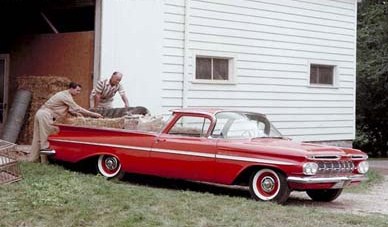 1959 Chevrolet El Camino
1959 Chevrolet El CaminoOverview Production 1959 El Camino Total 22,246
1960 El Camino Total 14,163Model years 1959–1960 Assembly Arlington, Texas, United States Body and chassis Platform GM B platform Related 1959–1960 Chevrolet Biscayne
1959–1960 Chevrolet Bel Air
1959–1960 Chevrolet Impala
1959–1960 Chevrolet Brookwood
1959–1960 Chevrolet Parkwood
1959–1960 Chevrolet Kingswood
1959–1960 Chevrolet NomadPowertrain Engine 235 cu in (3.9 L) I6
283 cu in (4.6 L) V8
348 cu in (5.7 L) V8Transmission 3-speed manual
4-speed manual
2-speed Powerglide automaticDimensions Wheelbase 119″ Length 210.9″ The El Camino was introduced for the 1959 model year two years after the Ford Ranchero. According to Chevrolet stylist Chuck Jordan, GM Harley Earl had suggested a coupé pickup in 1952.
Like the Ranchero, it was based on an existing and modified platform, the new-for-1959 Brookwood two-door station wagon, itself based on the completely redesigned, longer, lower and wider full-sized Chevrolet. Highly stylized, it initially sold 50% more briskly than the more conservative Ranchero, some 22,000 to 14,000.
Unlike the Brookwoods wagon and a sedan delivery variant, the El Camino was available with any full-sized Chevy drivetrain. It came in a single trim level, its exterior using the Bel-Air’s and interior of a low-end Biscayne. Its chassis featured Chevrolet’s “Safety-Girder” X-frame design and a full-coil suspension, both introduced in the 1958 model year. The 119-inch (3,000 mm) wheel-base was 1.5 inches (38 mm) longer, and overall length for all 1959 Chevys was up to 210.9 inches (5,360 mm). The El Camino’s payload rating ranged from 650 to 1150 pounds, with gross vehicle weights ranging from 4400 to 4900 pounds depending on powertrain and suspension. The somewhat soft passenger car suspension of the base model left the vehicle level without a load, in contrast the Ranchero, where standard 1100-pound rated heavy duty rear springs gave it a distinct rake when empty. The quirky Level Air suspension option, in its second and final year, was listed as available, but was almost never seen on any Chevrolet model, much less an El Camino. The 1959 El Camino was promoted as the first Chevrolet pickup built with a steel bed floor instead of wood. The floor was a corrugated sheetmetal insert, secured with 26 recessed bolts. Concealed beneath it was the floor pan from the Brookwood two-door wagon, complete with foot wells. Box capacity was almost 33 cubic feet (0.93 m3).
Among the performance engines offered were a 283-cid Turbo-jet V8 with two- or four-barrel carburetion, several Turbo-Thrust 348-cid V8s with four-barrel or triple two-barrel carburetors producing 335 bhp (250 kW; 340 PS), and 250- and 290-bhp 283-cube Ramjet Fuel Injection V8s.
Hot Rod magazine conducted a test of an El Camino equipped with the hottest powertrain combination available in early 1959—a 315 bhp (235 kW; 319 PS), triple-carb, solid-lifter 348 V8 mated to a four-speed. Staff testers clocked 0-60 mph times of around seven seconds, estimated top speed at 130 mph (210 km/h), and predicted 14-second/100-mph quarter-mile performance with a rear-axle ratio suitable for drag racing installed.
A total of 22,246 El Caminos were produced for 1959. That bested the count of 21,706 first-year Rancheros made in 1957 and the 14,169 Ford sedan pickups built in direct competition for the 1959 model year. But 1960 would be a different story.
The similar but less flamboyant 1960 model started at $2366 for the six-cylinder model; another $107 for a V8 with the two-barrel 283. At first glance, the exterior once again had a Bel Air look, with that series’ bright-metal “jet” appliqué and narrow trailing molding used to accent the rear quarters. Inside, Biscayne/Brookwood appointments also persisted. The seat was now covered in striped-pattern cloth with vinyl facings. Available interior trim shades were once again gray, blue, and green. Floor coverings were in medium-tone vinyl. Mid-1959 powertrain availability was carried over with minimal changes for 1960: The base 283-cid V8 was detuned a bit for fuel economy and was now rated at 170 bhp (127 kW; 172 PS), and the fuel-injected engines were officially gone.
Orders plummeted by a third, to just 14,163, at which point Chevrolet discontinued the model; meanwhile, Ford moved 21,027 Rancheros, which were now based on the brand-new Falcon compact. The pioneering American sedan pickups just did not connect with enough car-buying Americans. Perhaps these early “crossovers” didn’t carry enough passengers; in a time when baby-boomer families dominated the market, three across was the best they could offer. Cargo volume was meager compared with pickup trucks. The low-level trim and marketing efforts focused almost exclusively on commercial customers may have inhibited sales, as well.
Second generation 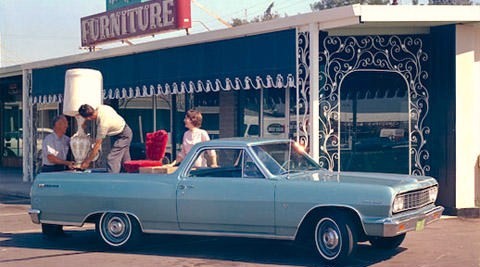 1964 Chevrolet Chevelle El Camino
1964 Chevrolet Chevelle El CaminoOverview Production 1964 El Camino Total 32,548
1965 El Camino Total 34,724
1966 El Camino Total 35,119
1967 El Camino Total 34,830Model years 1964–1967 Assembly Atlanta, Georgia
Baltimore, Maryland
Fremont, California
Framingham, Massachusetts
Kansas City, Missouri
Oshawa, OntarioBody and chassis Platform A-body Related 1964–1967 Chevrolet Chevelle Powertrain Engine 194 cu in (3.2 L) I6
230 cu in (3.8 L) I6
250 cu in (4.1 L) I6
283 cu in (4.6 L) Small-Block V8
327 cu in (5.4 L) Small-Block V8
396 cu in (6.5 L) Big-Block V8Transmission 3-speed manual
4-speed manual
2-speed Powerglide automaticSecond generation (1964–1967)
Chevrolet reintroduced the El Camino four years later based on the Chevrolet Chevelle. The 1964 model was similar to the Chevelle forward of the B-pillars and carried both “Chevelle” and “El Camino” badges, but Chevrolet marketed the vehicle as a utility model and Chevelle’s most powerful engines were not available. Initial engine offerings included six-cylinder engines of 194 and 230 cubic inches with horsepower ratings of 120 and 155, respectively. The standard V8 was a 283 cubic-inch Chevy small block with two-barrel carburetor and 195 horsepower (145 kW) with optional engines including a 220-horsepower 283 with four-barrel carburetor and dual exhausts. Added to the El Camino’s option list during the course of the 1964 model year were two versions of the 327 cubic-inch small block V8 rated at 250 and 300 horsepower (220 kW) — the latter featuring a higher compression ratio of 10.5:1, larger four-barrel carburetor and dual exhausts.
The 1965 El Camino received the same attractive facelift as the ’65 Chevelle, with a more pronounced V-shaped front end, and a higher performance version of the 327 engine rated at 350 hp (261 kW) that was also available in Chevelles under option code L-79 was made available. Most of the other engines were carried over from 1964, including the 194 and 230 cubic-inch Turbo Thrift sixes, the 195-horsepower 283 cubic-inch Turbo-Fire V8 and 327 cubic-inch Turbo-Fire V8s of 250 and 300 horsepower (220 kW).
In 1966, GM added a 396 cu in (6.5 L) V8 engine to the lineup rated from 325 to 375 hp (280 kW). The 1965 327 would run low 15s in the 1/4 mile (at some 90 mph), while 1966 to 1969 models were easily into the mid- to upper-14s. New sheetmetal highlighted the 1966 El Camino, identical to the Chevelle forward of the B-pillars. A new instrument panel with horizontal sweep speedometer was featured. Inside, the standard version featured a bench seat interior and rubber floor mat from the lower-line Chevelle 300 series, while the Custom used a more upscale interior from the Chevelle Malibu with plusher cloth-and-vinyl or all-vinyl bench seats and deep twist carpeting, or optional Strato swivel bucket seats with console. A tachometer was optional.
The 1967 El Camino followed the Chevelle’s styling facelift with a new grille, front bumper, and trim. Air shocks remained standard equipment on the El Camino, allowing the driver to compensate for a load. The year 1967 also brought the collapsible steering column and options of disc brakes and Turbo Hydramatic 400 3-speed automatic transmission. It was the second year the 396 could be had in the El Camino (both 13480 300 Deluxe base and 13680 Malibu series). Since the L35 396/325 hp engine was the base for the SS396 series, the number of L35 engines reported sold by Chevrolet in 1967 (2,565) were sold in one of the two El Camino series since these were the only series the engine could be ordered in. Since the L34 (now 350 hp) & L78 (375 hp) were available in either El Camino series as well as the two SS396 body styles, there is no way of knowing how many of these optional engines went to which body style. Chevrolet does report 17,176 L34 and 612 L78 engine options were sold in 1967 Chevelles, but there is no breakdown of body styles. The TH400 3-speed automatic was now available as an option (RPO M40) with the 396 engine in both the SS396 series and the 396-equipped El Caminos. The 3-speed manual transmission remained the standard transmission with a heavy duty (RPO M13) also available along with the 2-speed Powerglide and either M20 wide ratio or M21 close ratio 4-speed transmissions.
Third generation 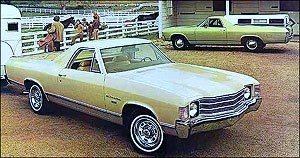 1972 Chevrolet El Camino
1972 Chevrolet El CaminoOverview Production 1968 El Camino SS V8 5,190
1968 El Camino Total 41,791
1969 El Camino Total 48,385
1970 El Camino Total 47,707
1971 El Camino Total 41,606
1972 El Camino Total 57,147Model years 1968–1972 Assembly Arlington, United States
Atlanta, United States
Baltimore, United States
Flint, United States
Fremont, United States
Kansas City, United States
Van Nuys, United States
Oshawa, Ontario, CanadaBody and chassis Platform A-body Related 1968–1972 Chevrolet Chevelle
1971-1972 GMC SprintPowertrain Engine 230 cu in (3.8 L) I6
250 cu in (4.1 L) I6
307 cu in (5.0 L) V8
350 cu in (5.7 L) V8
396 cu in (6.5 L) V8
454 cu in (7.4 L) V8Transmission 3-speed manual
4-speed manual
2-speed Powerglide auto.
3-speed Turbo-Hydramatic autoDimensions Wheelbase 116 in (2,946 mm) Third generation (1968–1972)
Chevy introduced a longer El Camino in 1968, based on the Chevelle station wagon/four-door sedan wheelbase (116 in (2,946 mm), overall length: 208 in (5,283 mm)); it also shared Chevelle Malibu exterior and interior trims. The interior was revamped including cloth and vinyl or all-vinyl bench seats and deep twist carpeting. All-vinyl Strato bucket seats and center console were an $111 option. Power front disc brakes and Positraction were optional. A new, high-performance Super Sport SS396 version was launched. The Turbo-Jet 396 had 325 bhp (242 kW) or 350 bhp (260 kW) versions. Returning to the official options list for the first time since late 1966 was the 375 bhp (280 kW) L78. It had solid lifters, big-port heads, and an 800 cfm Holley four-barrel on a low-rise aluminum manifold. A three-speed manual was standard with all engines, and a four-speed or automatic was optional. In 1968, the SS was a separate model (the “SS-396”).
The 1969 models showed only minor changes, led by more-rounded front-end styling. A single chrome bar connected quad headlights, and a slotted bumper held the parking lights. New round instrument pods replaced the former linear layout. For the first time, the Chevrolet 350 V8 was used in an El Camino. The Super Sport group included a 265- or 325-horsepower 396-cubic-inch V8 beneath a double-domed hood, along with a black-out grille displaying an SS emblem. More potent editions of the 396 engine, developing 350 or 375 horsepower (280 kW) also made the options list. Options included power windows and locks. Curiously, back-up lights moved from the rear bumper to the tailgate, where they were ineffective when the gate was down.
The 1970 models received sheet metal revisions that gave the bodies a more squared-up stance, and interiors were also redesigned. The new SS396, which actually displaced 402 cu in (6.6 L) (although all emblems read 396) was available. Chevrolet’s largest and most-powerful engine of the time was also put into a select few El Caminos. The LS6 454 CID engine, rated at 450 hp (336 kW) and 500 lb·ft (680 N·m) of torque, gave the El Camino 1/4-mile times in the lower 13-second range at around 108 mph (174 km/h).
The 1971 El Camino got fresh front-end styling that included large Power-Beam single-unit headlights, a reworked grille and bumper, and integral park/signal/marker lights. For 1971, mandated lower-octane unleaded fuel necessitated a reduction in engine compression, and GM’s A.I.R. system, a “smog pump”, was added to control tailpipe emissions. Power and performance were reduced. Engine offerings for 1971 included the 250-6, small-block V8s of 307 and 350 cubic inches; and big block V8s of 402 and 454-cubic-inch displacements. Horsepower ratings of those engines for 1971 ranged from 145 for the six to 365 for the RPO LS5 454 – all in gross figures. The LS6 454 V8 was gone forever. A rebadged El Camino, the GMC Sprint debuted in 1971. It shared the same engine and transmission offerings as its Chevrolet counterpart.
The 1972 El Caminos wore single-unit parking and side marker lights on their front fenders, outside of a revised twin-bar grille, but little changed. For 1972, horsepower measurements were switched to the “net” figures as installed in a vehicle with all accessories and emission controls hooked up. Engine offerings included the 110 horsepower (82 kW) 250-6, a 307 V8, a 175 horsepower (130 kW) 350-cubic-inch V8, and big block V8s of 402 and 454 cubic-inch displacements. The 402-cubic-inch (still known as a 396) produced 240 horsepower (180 kW); the 454 managed to put out 270 horsepower (200 kW) under the net rating system. Super Sport equipment could now be ordered with any V8 engine, including the base 307-cubic-inch version. All 1972 SS models with the 454 ci engine have a “W” as the fifth digit in the VIN.
Fourth generation 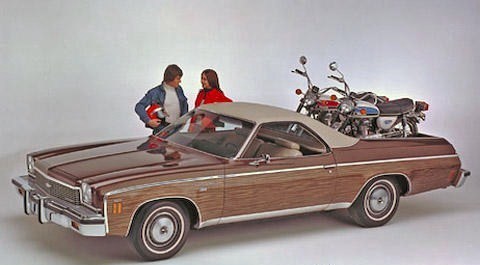 1973 Chevrolet El Camino
1973 Chevrolet El CaminoOverview Production 1973 El Camino Total 64,987
1974 El Camino SS 4,543
1974 El Camino Total 51,223
1975 El Camino SS 3,521
1975 El Camino Total 33,620
1976 El Camino SS 5,163
1976 El Camino Total 44,890
1977 El Camino SS 5,226
1977 El Camino Total 54,321Model years 1973–1977 Assembly Baltimore, United States
Doraville, Georgia, United States
Leeds, Missouri, United States
Arlington, United States
Fremont, United States
Oshawa, Ontario, CanadaBody and chassis Platform A-body Related 1973–1977 Chevrolet Chevelle
1973–1977 GMC SprintPowertrain Engine 250 cu in (4.1 L) I6
307 cu in (5.0 L) V8
350 cu in (5.7 L) V8
400 cu in (6.6 L) V8
454 cu in (7.4 L) V8Transmission 3-speed manual
4-speed manual
3-speed Turbo-Hydramatic auto.Fourth generation (1973–1977)
For 1973, the El Camino was redesigned. Matching the Chevelle line and using the wagon chassis, it was the largest El Camino generation. Energy-absorbing hydraulic front bumper systems created an ungainly appearance on these vehicles and added more weight. There were two different trim levels of El Caminos during this period. The base model and SS option shared interior and exterior appointments with the Chevelle Malibu, while the El Camino Classic (introduced for 1974) shared its trim with the more upscale Chevelle Malibu Classic.
The chassis design was as new as the bodies with 1-inch (25 mm) a wider wheel track, front and rear. The left wheel was adjusted to have slightly more positive camber than the right, which resulted in a more uniform and stable steering feel on high-crown road surfaces while maintaining excellent freeway cruise stability. Clearances for spring travel were also improved for a smoother ride over all types of surfaces; the coil springs at each wheel were computer-selected to match the individual car’s weight. Front disc brakes were now standard on all ’73 El Caminos. Additional new features were an acoustical double-panel roof, tighter-fitting glass, flush-style outside door handles, molded full-foam seat construction, flow-through power ventilation system, inside hood release, refined Delcotron generator and sealed side-terminal battery, a larger 22-US-gallon (83 L; 18 imp gal) fuel tank, and “flush and dry” rocker panels introduced first on the redesigned 1971 full-size Chevrolets. New options included swivel bucket seats (with console) and Turbine I urethane (backed by steel) wheels, as was the instrument gauge cluster. A benefit of the new body designs was much better visibility of which the unusually thin windshield pillars contributed. A structural improvement was a stronger design for the side door guard beams.
The 307 2-barrel V8 of 115 hp (86 kW) was the base engine. Options included a 350 2-barrel V8 of 145 hp (108 kW), a 350 4-barrel V8 of 175 hp (130 kW), and a 454 4-barrel V8 rated at 245 hp (183 kW). Hardened engine valve seats and hydraulic camshafts made these engines reliable for many miles, and allowed them to accept the increasingly popular unleaded regular gasoline. The three-speed manual transmission was standard; 4-speed manual and Turbo Hydra-Matic 3-speed automatic transmissions were optional. Crossflow radiators and coolant reservoirs prevented overheating.
The SS, now a trim option, included a black grill with SS emblem, bodyside striping, bright roof drip moldings, color-keyed dual sport mirrors, special front and rear stabilizer bars, rally wheels, 70-series raised white-lettered tires, special instrumentation and SS interior emblems.[12] The SS option was available with a 350 or 454 V8 with the 4-speed or Turbo Hydra-Matic transmissions. [
The 1974 El Caminos sported an elongated, Mercedes-type grille. Inside, the new top-of-the-line El Camino Classic featured luxurious interiors with notchback bench seats (or optional Strato bucket seats) upholstered in cloth or vinyl, carpeted door panels and woodgrain instrument panel trim. The 350 V8 became the base engine and a 400 V8 engine was new this year. The 454, the top engine, was available with the Turbo Hydra-Matic 400 automatic or 4-speed manual transmission.
The 1975 models featured a new grill, providing a fresh appearance. Suspension upgrades offered a quieter ride, and radial-ply tires became standard. Dual remote mirrors, new twin sport mirrors, intermittent wipers, and cruise control were among new convenience features this year. The 1975 high energy ignition (HEI) provided spark to the spark plugs with minimal maintenance and increased power. The larger distributor cap also provided better high-RPM performance by decreasing the likelihood of the spark conducting to the wrong terminal. The 250-cubic-inch in-line six of 105 hp (78 kW) was offered as the base engine. The 454-cubic-inch V8, downrated yet again to 215 horsepower (160 kW), made it into 1975 as an El Camino option, but this would be its last go-around. It was not available in California, and the optional four-speed stick was no longer offered. Buyers could now choose an Econominder instrument package that included a vacuum gauge to point out when optimum fuel economy was being attained.
For 1976, El Camino Classic models now featured the new rectangular headlights that other high-end GM cars were sporting. These were quad units in stacked arrangement. The base model retained the previously used dual round headlights. Engines included the base 250 I6 engine, a new 140-horsepower 305-cubic-inch V8, two- and four-barrel 350s (with availability still depending on California delivery), and the 400-cubic-inch V8, still good for 175 hp. All engines except the 250 I6 came with the Turbo Hydra-matic automatic transmission as the only transmission available. The 250 I6 came with a 3-speed manual or an optional Turbo Hydra-matic.
The 1977 models were little changed, except the 400 V8 was gone. The El Camino Classic was again the top model and the SS option continued.
Fifth generation 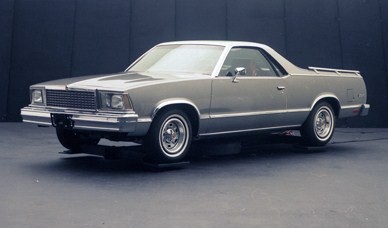 1978 Chevrolet El Camino
1978 Chevrolet El CaminoOverview Also called Chevrolet Pickup (Iran, 1984-1987) Production 1978 El Camino SS 12,027
1978 El Camino Total 54,286
1979 El Camino Total 58,008
1980 El Camino Total 40,932
1981 El Camino Total 36,711
1982 El Camino Total 22,732
1983 El Camino Total 24,010
1984 El Camino Total 22,997
1985 El Camino Total 21,816
1986 El Camino Total 21,508
1987 El Camino Total 13,743
1988 El Camino Total 420Model years 1978–1987 Assembly Baltimore, United States
Doraville, Georgia, United States
Leeds, Missouri, United States
Arlington, United States
Fremont, United States
Oshawa, Ontario, Canada
Ramos Arizpe, Mexico
Tehran, Iran (CKD, Pars Khodro)Body and chassis Platform A-body (1978-1981)
G-body (1982-1987)Related 1978-1983 Chevrolet Malibu
1978-1988 GMC CaballeroPowertrain Engine 3.3 L (200 cu in) Chevrolet V6
3.8 L (229 cu in) Chevrolet V6
3.8 L (231 cu in) Buick V6
4.3 L (262 cu in) Chevrolet V6
4.4 L (267 cu in) Small-Block V8
5.0 L (305 cu in) Small-Block V8
5.7 L (350 cu in) Small-Block V8
5.7 L (350 cu in) Diesel V8Transmission 3-speed manual
4-speed manual
3-speed Turbo-Hydramaticautomatic.Dimensions Wheelbase 117 in (2,972 mm) Fifth generation (1978–1987)
The 1978 through 1987 El Caminos were produced in four trim levels: Classic, Black Knight (1978)/Royal Knight (1979–83), Conquista and Super Sport, and shared chassis components with the Chevrolet Malibu. Chevrolet 90° V6 and Buick V6 engines were used for the first time. The optional 305 cubic-inch small block V8 was rated at 150 or 165 horsepower (123 kW), and from 1982–1984, the Oldsmobile-sourced Diesel engine was also optional.
A new, trimmer El Camino was unveiled in 1978, adopting the new, more sharp-edged Malibu styling, and a one-inch longer wheelbase of 117 in (2,972 mm). The front end sheet metal was shared with the Malibu, the doors with the Monte Carlo, and the rear tailgate and bumper was shared with the Malibu station wagon. For the first time, though, the El Camino had a unique chassis – it was shared with no other Chevrolet. The front end featured a new single rectangular headlight design. The base engine was a 200-cubic-inch (3.3-liter) V6 that developed 95 horsepower (71 kW), except in California where, to meet emissions standards, the 231-cubic-inch Buick engine was the base engine . Two upgrades could be ordered: a 305-cubic-inch V8 with 145 horsepower (108 kW), or a 350-cubic-inch V8 with 170 horsepower (130 kW) that was only available in El Caminos and Malibu station wagons. It was not available on Malibu passenger cars. Among GM makes, at least, the era of bigness was fading into history, overtaken by a new age of efficiency and economy.
The 1979 model got minimal changes following its debut as a redesigned “new-size” model in 1978. Alterations to the 1979 El Camino amounting to little more than a new divided grille. However, a “small-block” 267-cubic-inch (4.4-liter) V8 joined the options list and slotted between the standard 3.3-liter V6 and the optional 5.0-liter four-barrel V8. The 350-cubic-inch (5.7-liter) V8, developing 170 horsepower (130 kW) was again available. Both three- and four-speed manual transmissions had floor shifters.
The 1980 El Camino started out the 1980s with few changes, though engine choices were shuffled a little. The base V6 displaced 229 cubic inches, up from 200 the year before. Horsepower increased from 94 to 115. Optional again were a 267-cubic-inch V8 with 125 horsepower (93 kW) and a 305 V8, now with 155 horsepower (down five). The 350 with 170 horsepower (130 kW) offered in 1979 was dropped. A three speed floor shifted manual transmission was standard, but most got the optional three-speed automatic.
The 1981 models received a new horizontal tube grill. The 1981 engines mostly continued from 1980, but now used GM’s Computer Command Control (CCC) emission system. The base 229-cubic-inch V6 made 110 horsepower (down from 115), as did the California-only 231-cubic-inch Buick V6. Optional engines were the 267-cubic-inch V8 with 115 horsepower (86 kW) and The 305-cubic-inch V8, now with 150 horsepower (110 kW). The three-speed automatic added a lock-up torque converter to aid highway mileage.
The 1982 (through the final 1987) El Camino sported a frontal appearance with a crosshatch grille flanked by quad rectangular headlights. New under the hood for 1982 was a 105-horsepower 5.7-liter (350-cubic-inch)Diesel V8, which was also offered in Chevy’s full-size cars. Though mileage with the diesel was commendable, it was an expensive option and would eventually amass a dismal repair record. Gasoline-engine choices were unchanged, except Chevy’s 229-cubic-inch (3.8-liter) V6 was now standard in California-bound cars, replacing Buick’s 231-cubic-inch V6.
In 1983, the 4.4-liter V8 was gone, leaving the 5.0-liter version as the only optional gas V8. The standard engine was again Chevy’s 3.8-liter V6 with 110 horsepower (82 kW), though California cars, once again, got a Buick V6 with similar specifications. Continuing on the options list was the 5.7-liter V8 Diesel with 105 hp (78 kW). The sister Malibu sedan and wagon were discontinued after the 1983 model year.
The 1984-87 El Camino SS was offered as a conversion (completed by Choo-Choo Customs Inc., of Chattanooga, Tennessee) to include the aerodynamic front end similar to the Monte Carlo SS, but did not receive the L69 engine package. For 1985, GM shifted El Camino production to Mexico, and the new 4.3 L was standard through 1987.
Australia, South Africa and Middle East
General Motors-Holden’s manufactured and marketed coupé utility models in Australia commencing in 1935. GMH continued to offer a Chevrolet coupé utility until 1952. Rebadged Holden coupé utilities, including later Commodore-based models, were sold as the Chevrolet El Camino and Chevrolet Lumina in South Africa and the Middle East. As of 2015, Holden still produces a Commodore-based coupé utility in Australia as the Holden Ute.
Concept vehicles
In 1974, Chevrolet’s sister division, Pontiac, reportedly took an El Camino body and grafted on the urethane-nose front end from its Grand Am series and added the GA’s instrument panel and Strato bucket seats with recliners and adjustable lumbar support along with Pontiac’s Rally II wheels as a styling exercise for a possible Pontiac version of the El Camino; the concept, however, never reached production.
In 1992, GM unveiled an El Camino concept, which was basically a pickup variant of the Chevrolet Lumina Z34. The concept received mixed, mostly negative reviews, most of it because of the car’s front wheel drive layout.
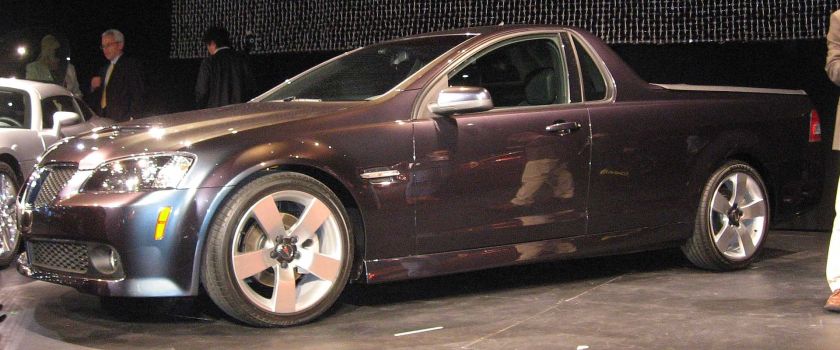
2010 Pontiac G8 ST, NY Auto Show, 2008
During the 1995 model year, GM had a concept El Camino based on the full-size Caprice station wagon using the grille of a 1994-96 Impala SS; this concept was destined for production, but was shelved due to GM’s decision to discontinue the B-platform car line at the end of 1996..
The Pontiac G8 ST was shown at the New York International Auto Show in March 2008. Based on the Holden Ute, it was built on the same G8 platform with a 73-inch (1,900 mm) cargo bed. The Sport Truck had the same 361 hp (269 kW), 6.0-liter V8 used in the G8 GT, as well as the 3.6-liter, 300 hp (220 kW) direct-injection V6. The G8 ST, slated for release as a 2010 model, was to be GM’s first coupé utility in North America since the El Camino was discontinued in 1987. In January 2009, GM announced to dealers the G8 ST was cancelled due to budget cuts and restructuring. GM was speculated, in 2011, to be considering bringing back the El Camino under the Chevrolet brand as early as 2015.
Today
For years, GM has been rumored to be considering bringing back the El Camino. GM already has a vehicle ready in Australia in the form of the Holden Ute (a Chevrolet-badged version of which, known as the Lumina Ute, is sold in South Africa and Middle East), save for some minor changes necessary to make it available in the U.S.. With Holden production ending, it is now clear that the Holden Ute will not be imported to the US. Many present-day owners of Chevrolet El Caminos (and its GM sister vehicles) are members of the National El Camino Owners Association (NECOA), an internet-based auto club with over 25,000 registered members. NECOA sponsors shows and gatherings in areas where there are sufficient owners, such as New England, Florida, California, Texas, and The Netherlands. The club has a free website that provides technical data, historical information, and a friendly bulletin board message system, found at http://www.elcaminocentral.com It also has an active Facebook page listed under “National El Camino Owners Association.”
Next will only show you pictures without text:
